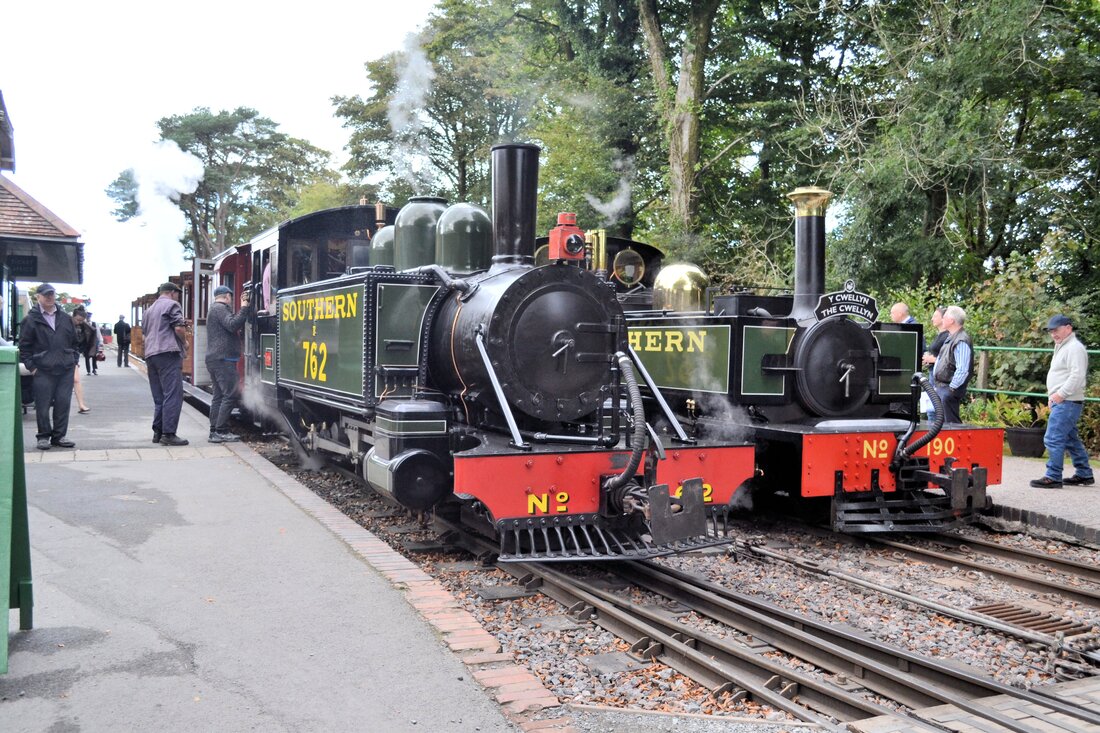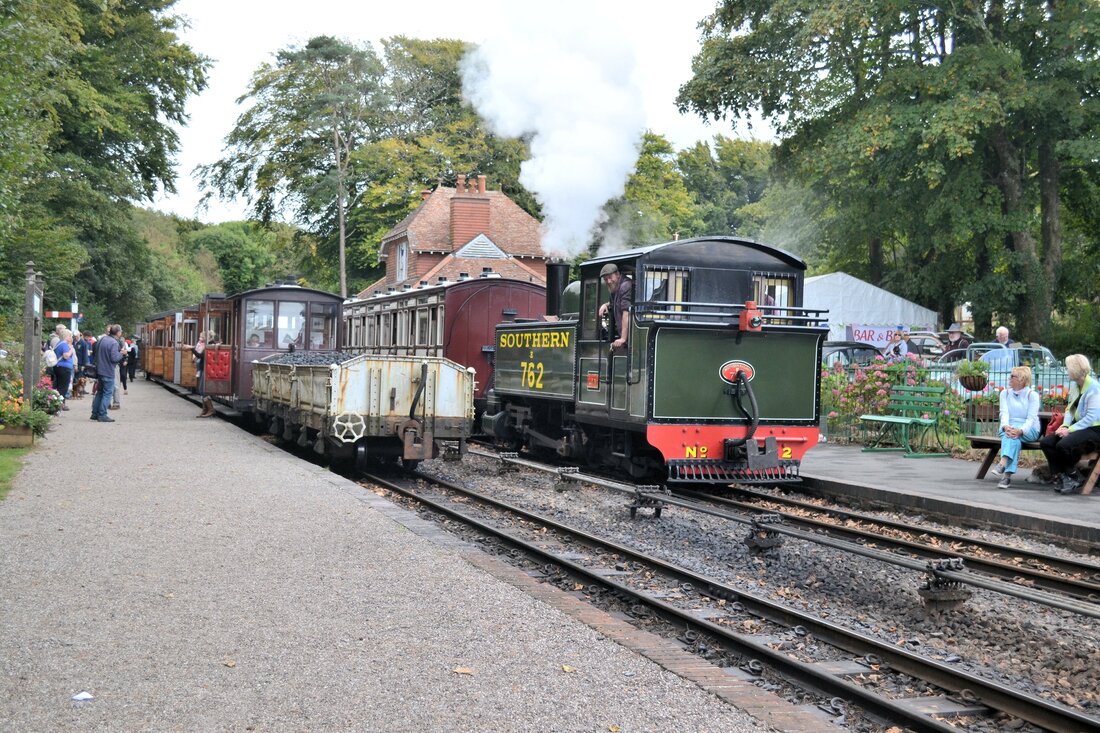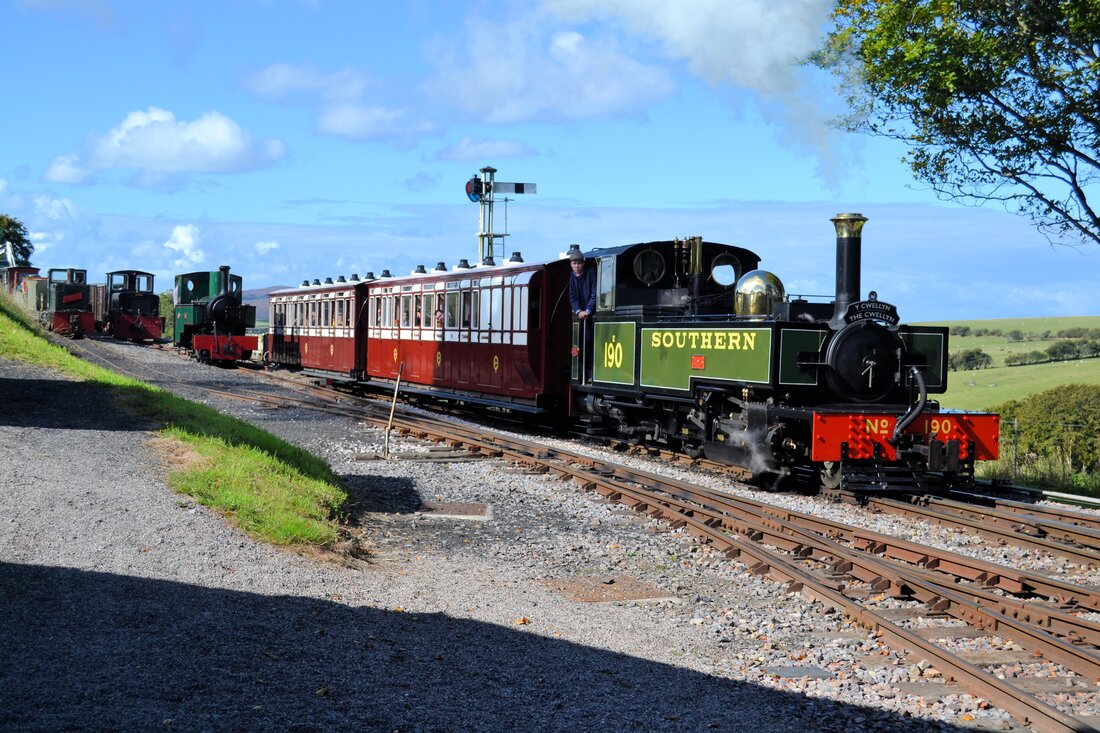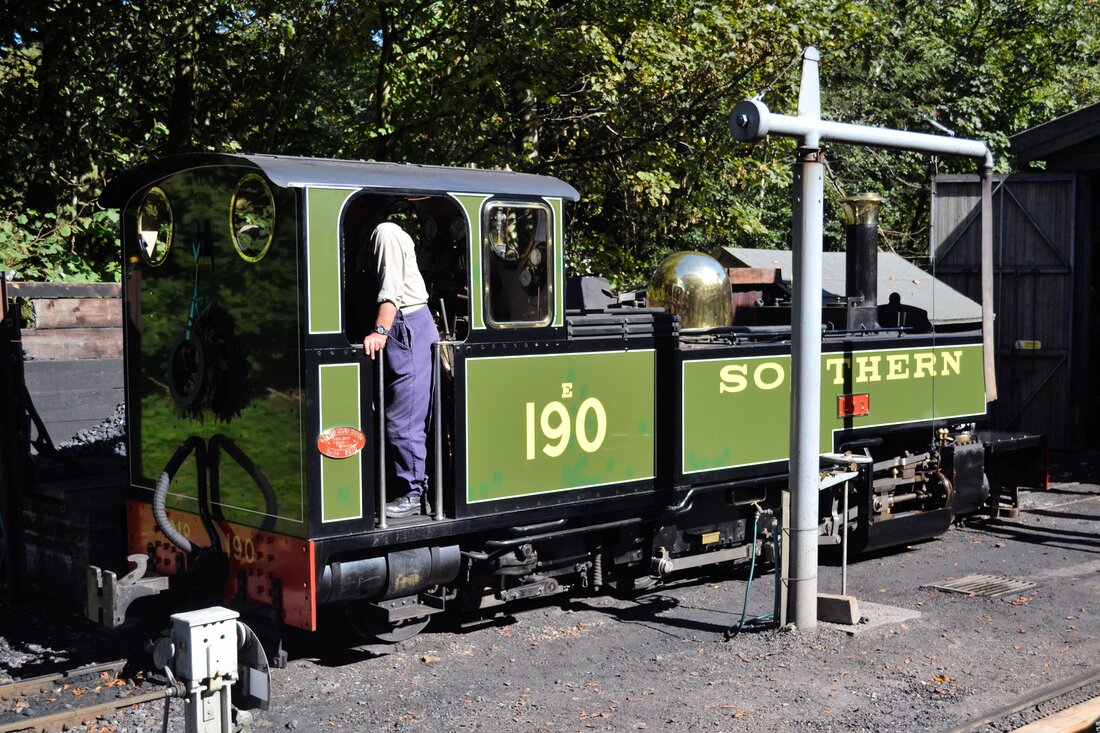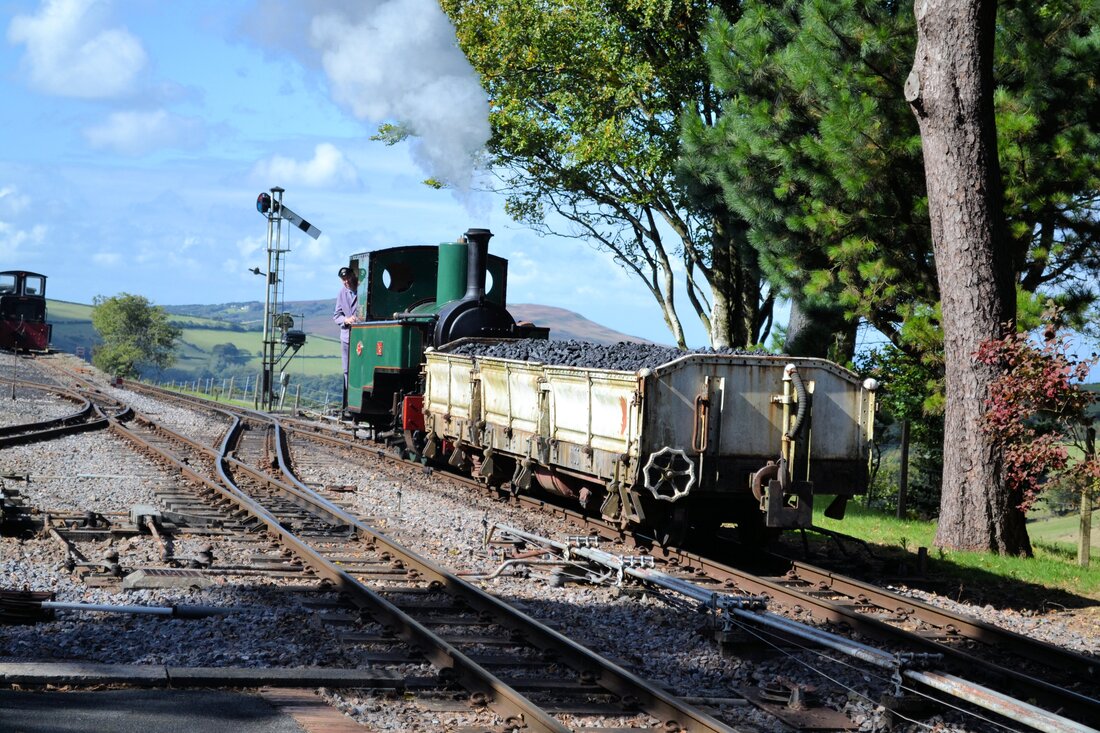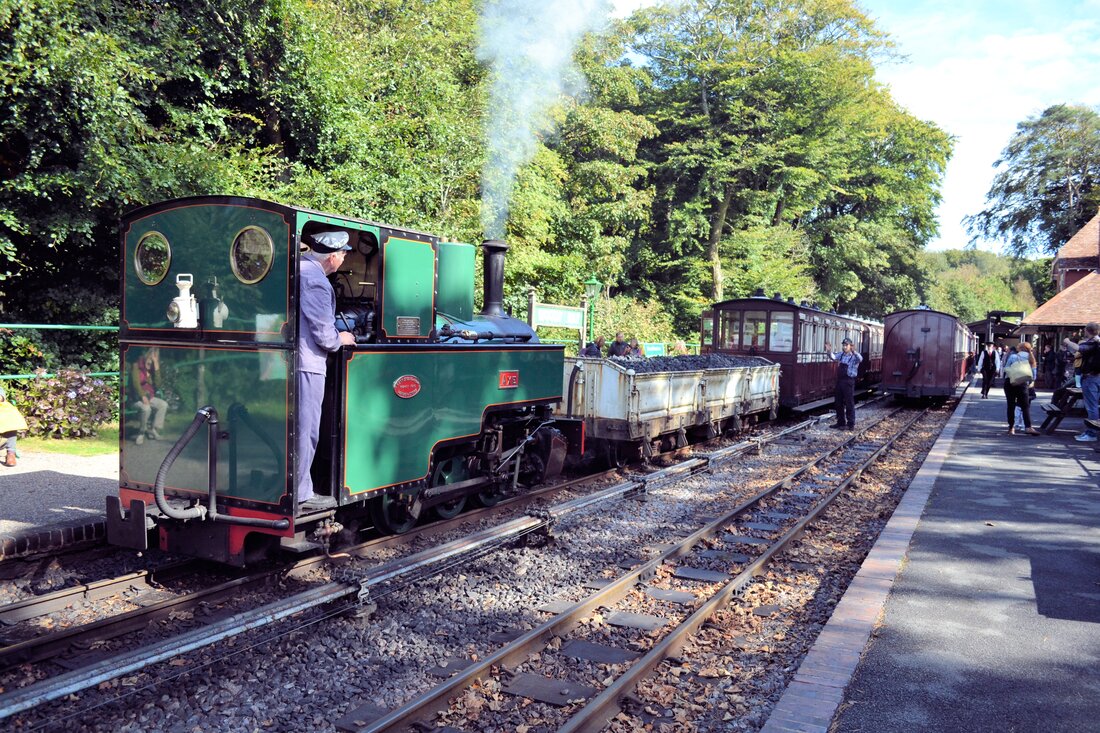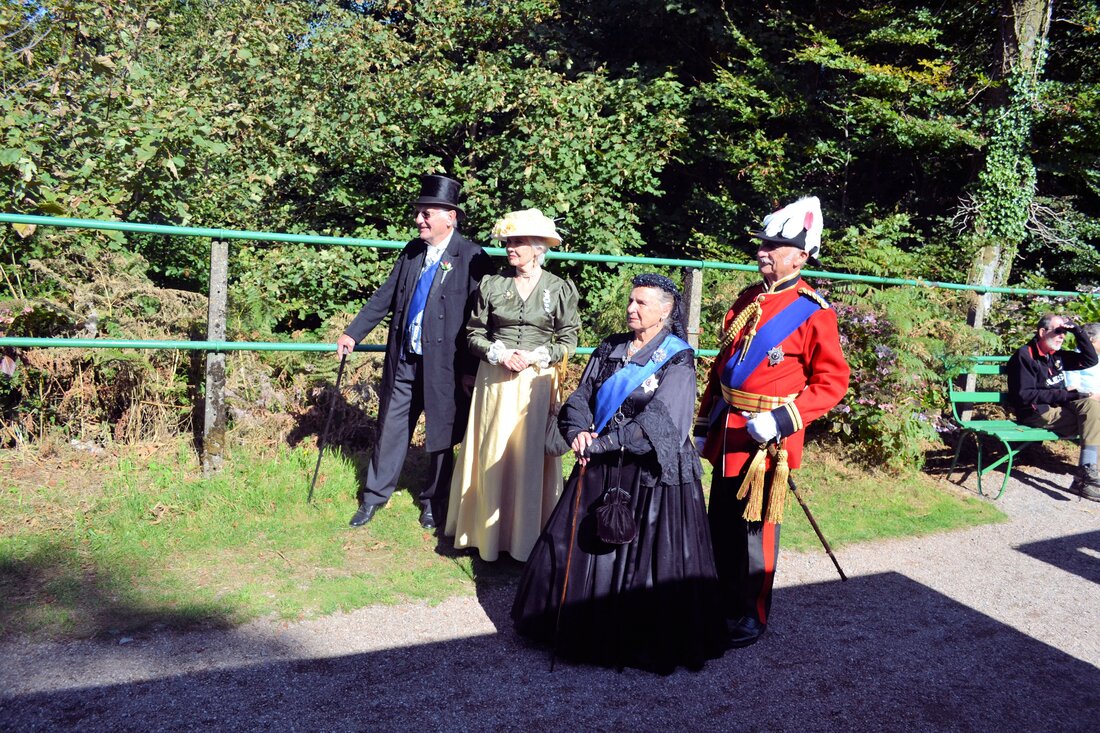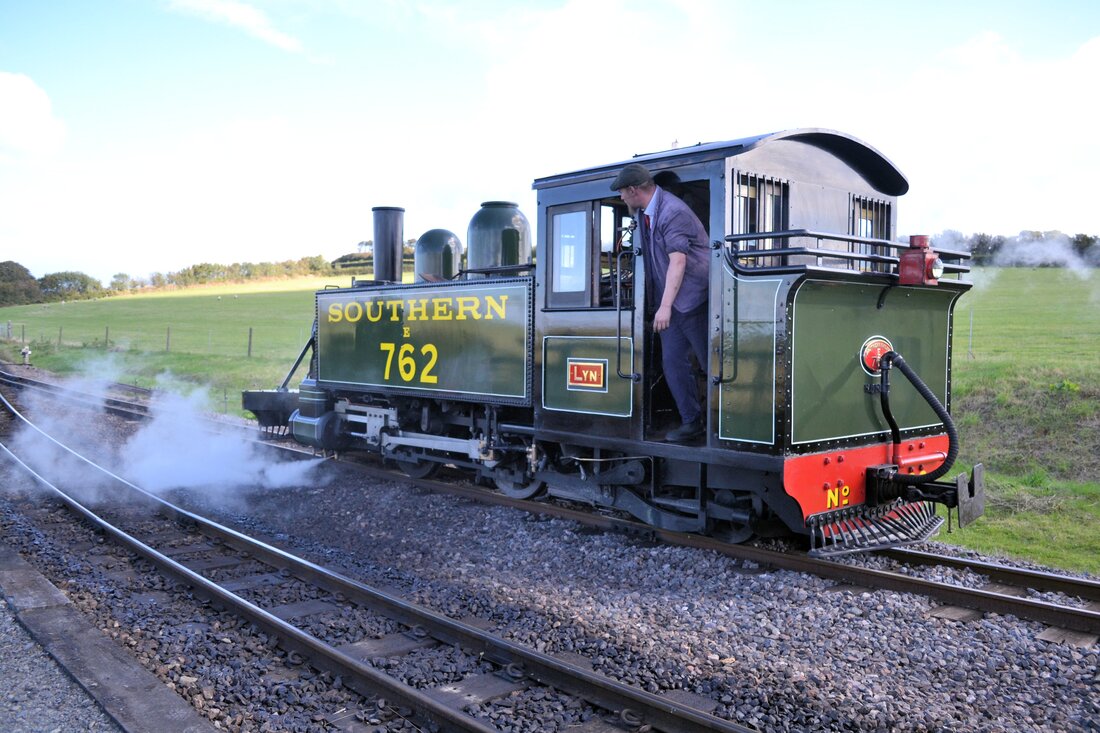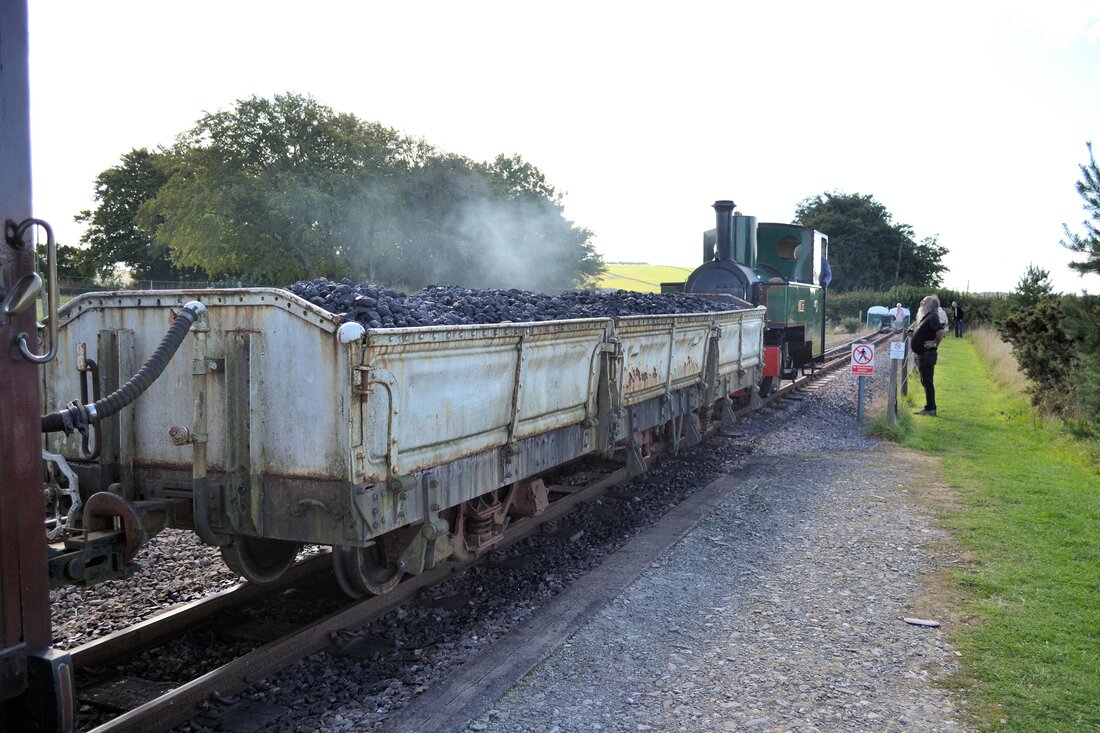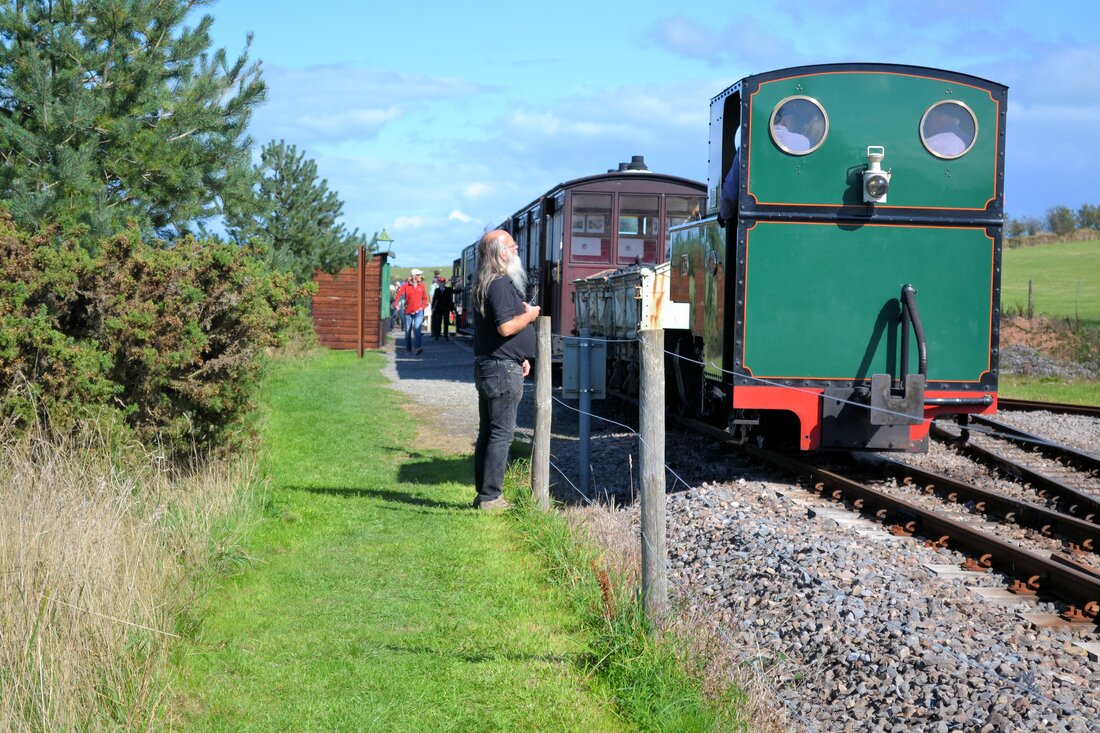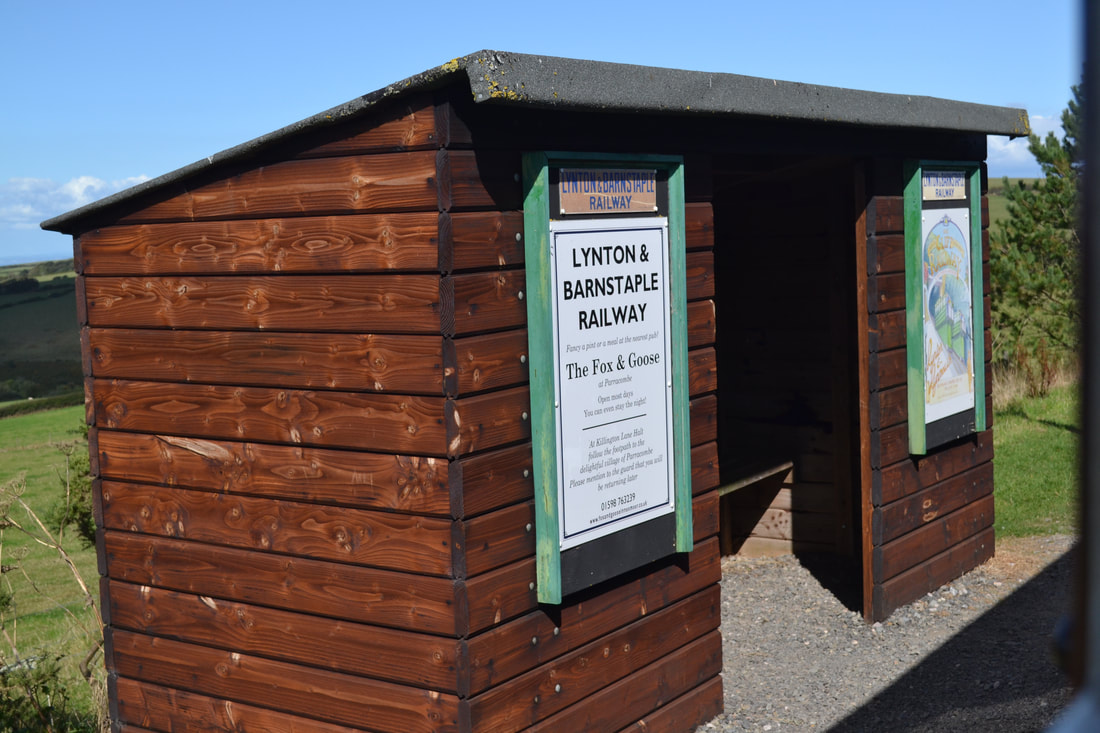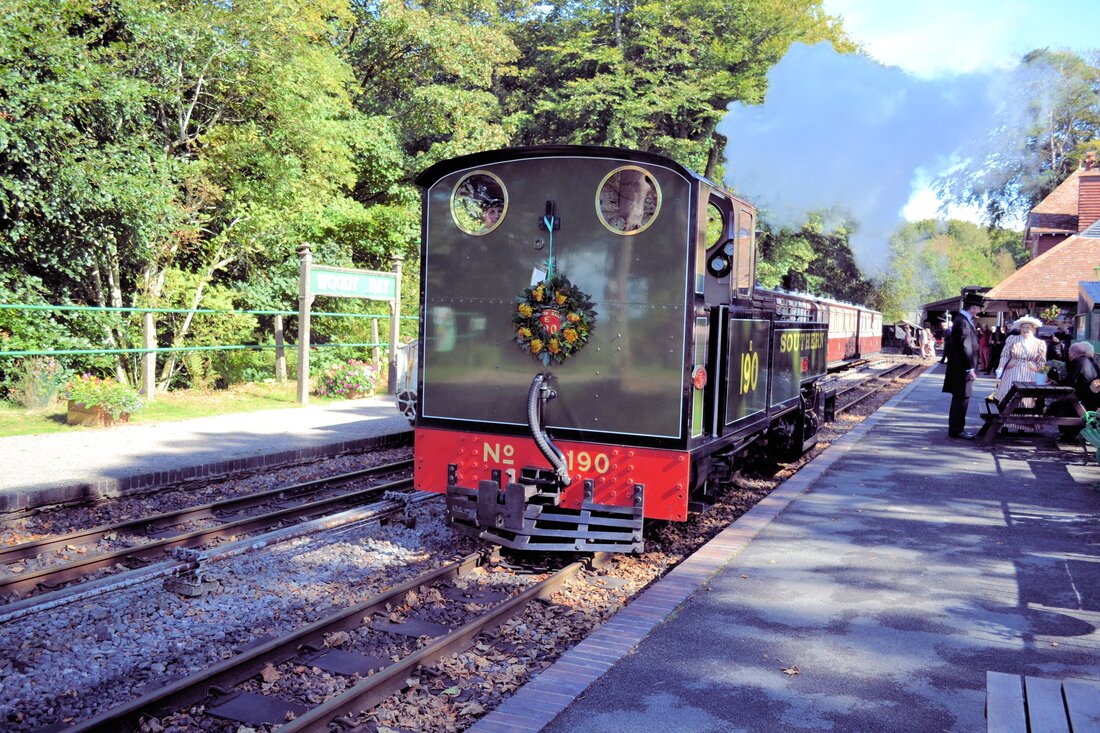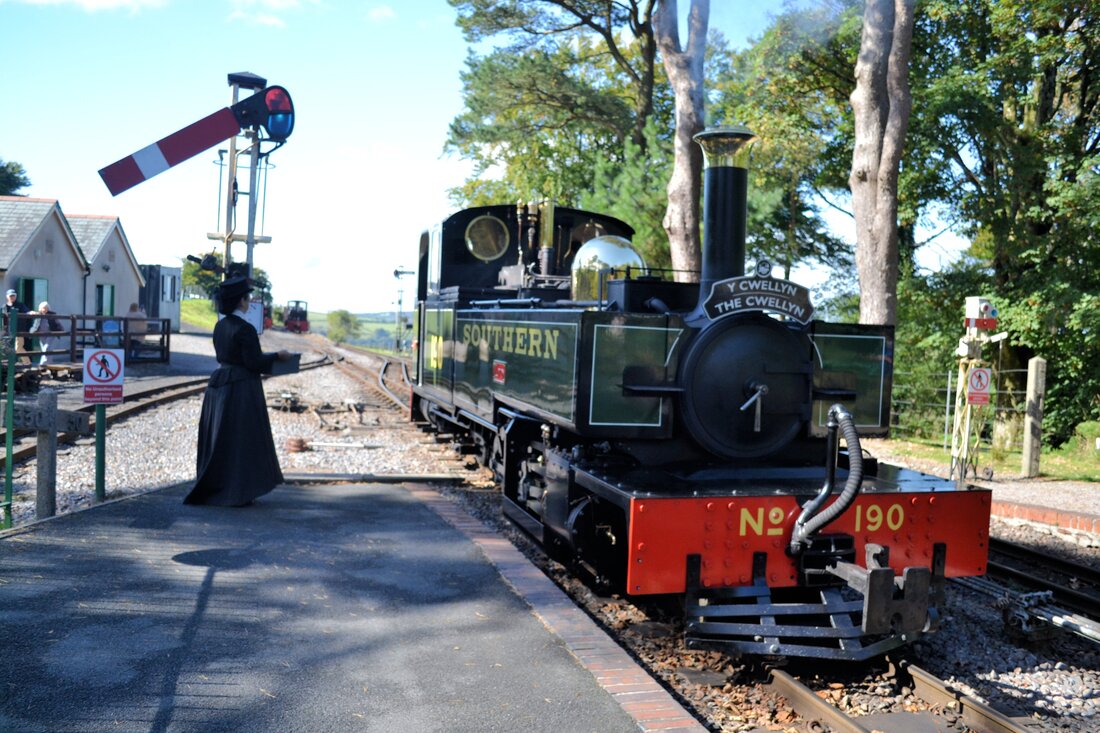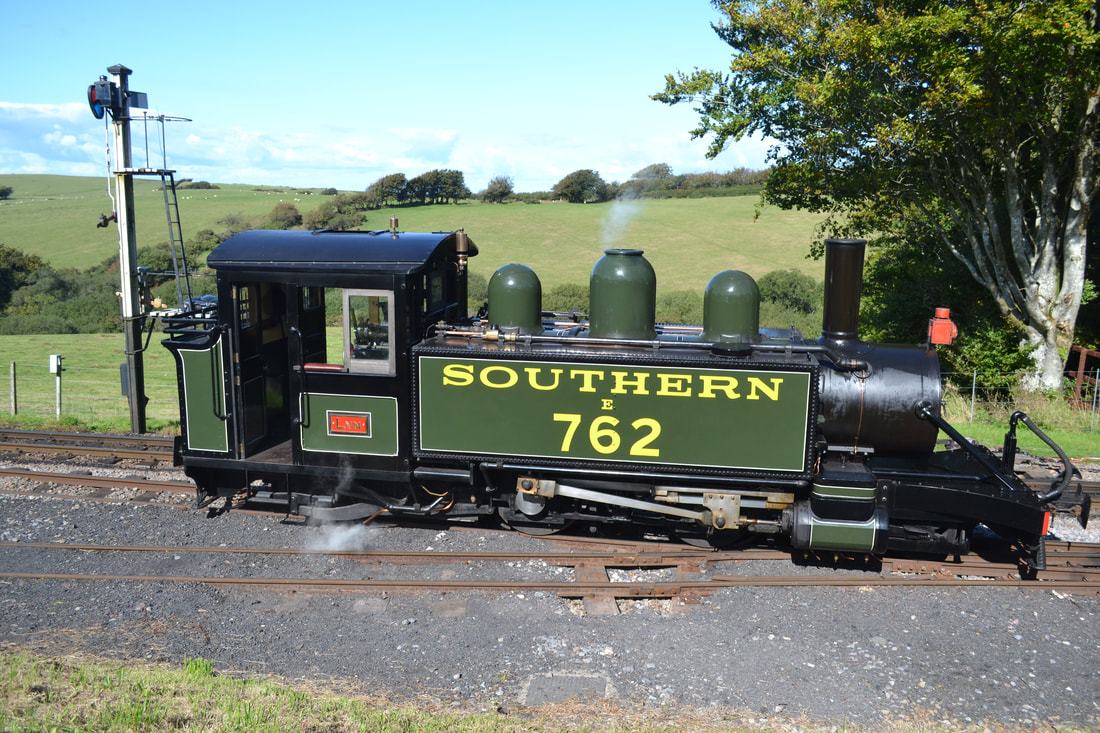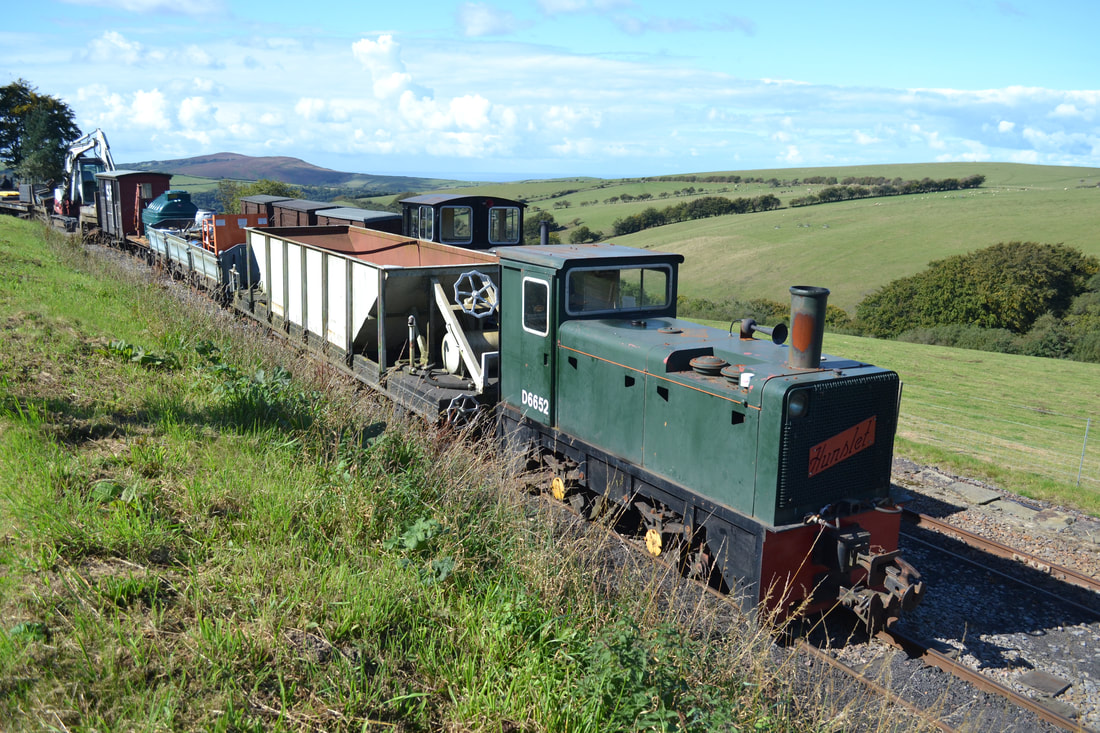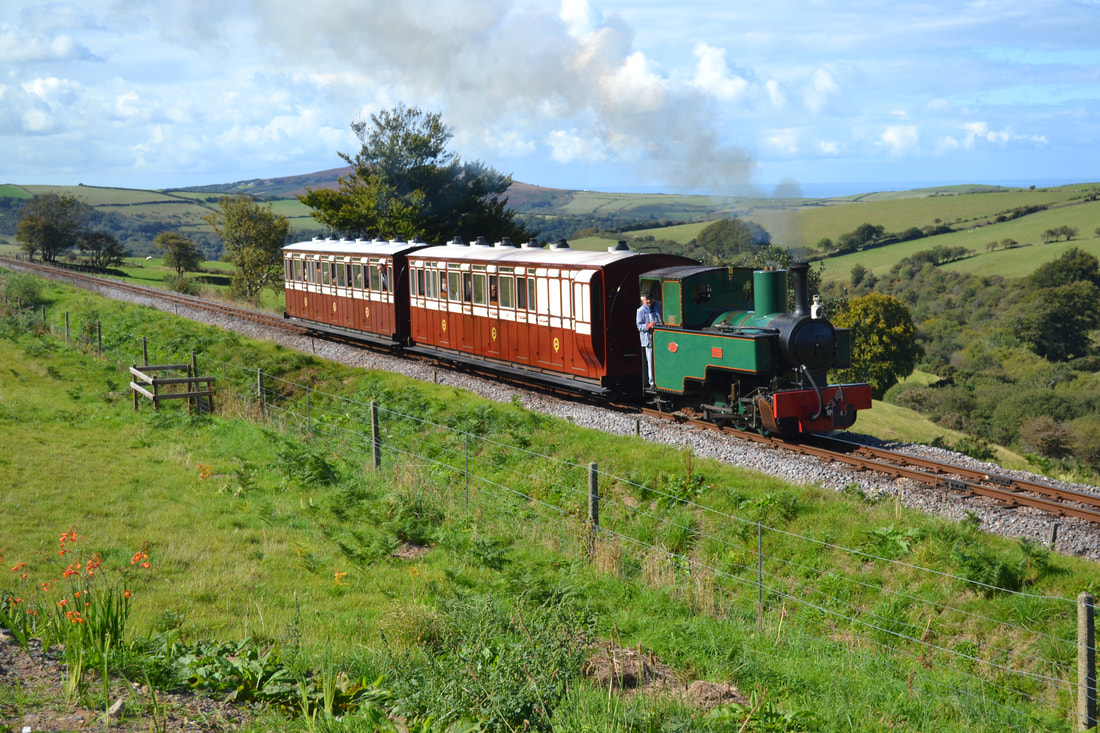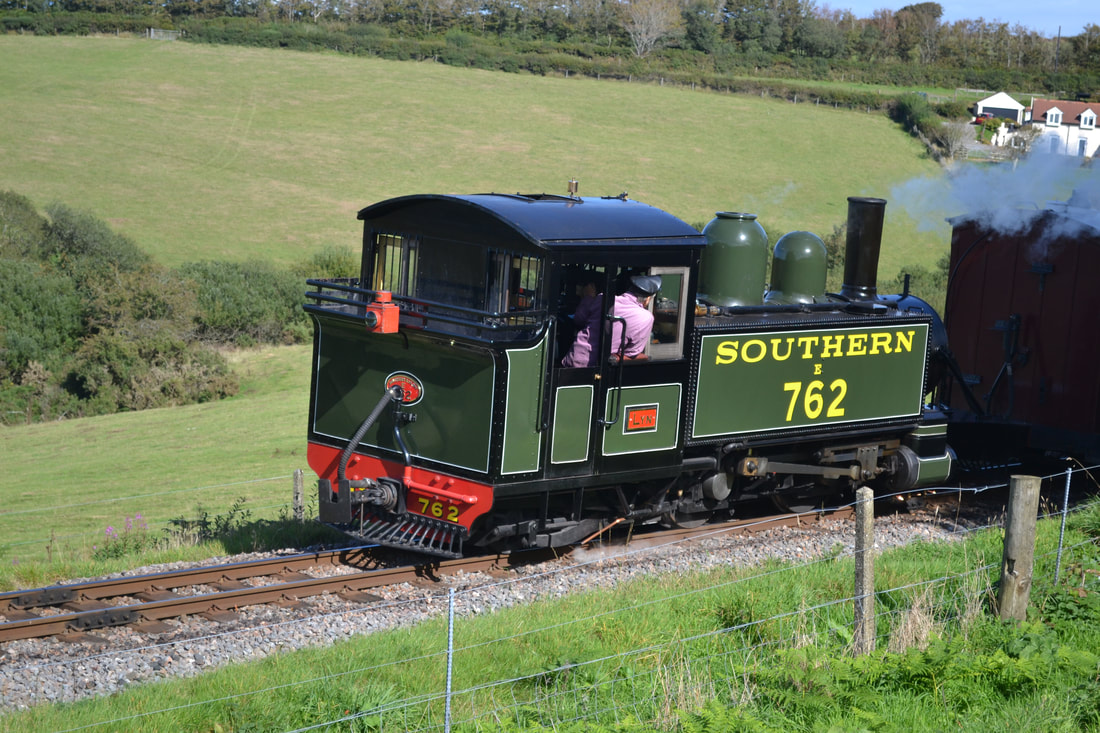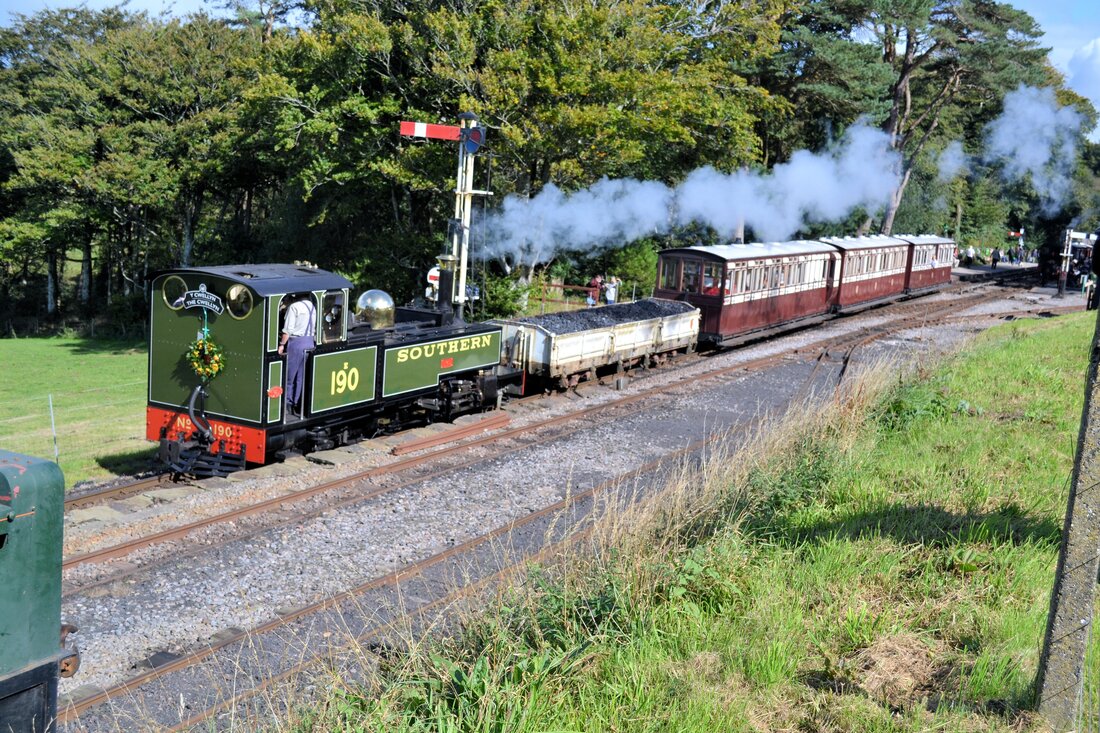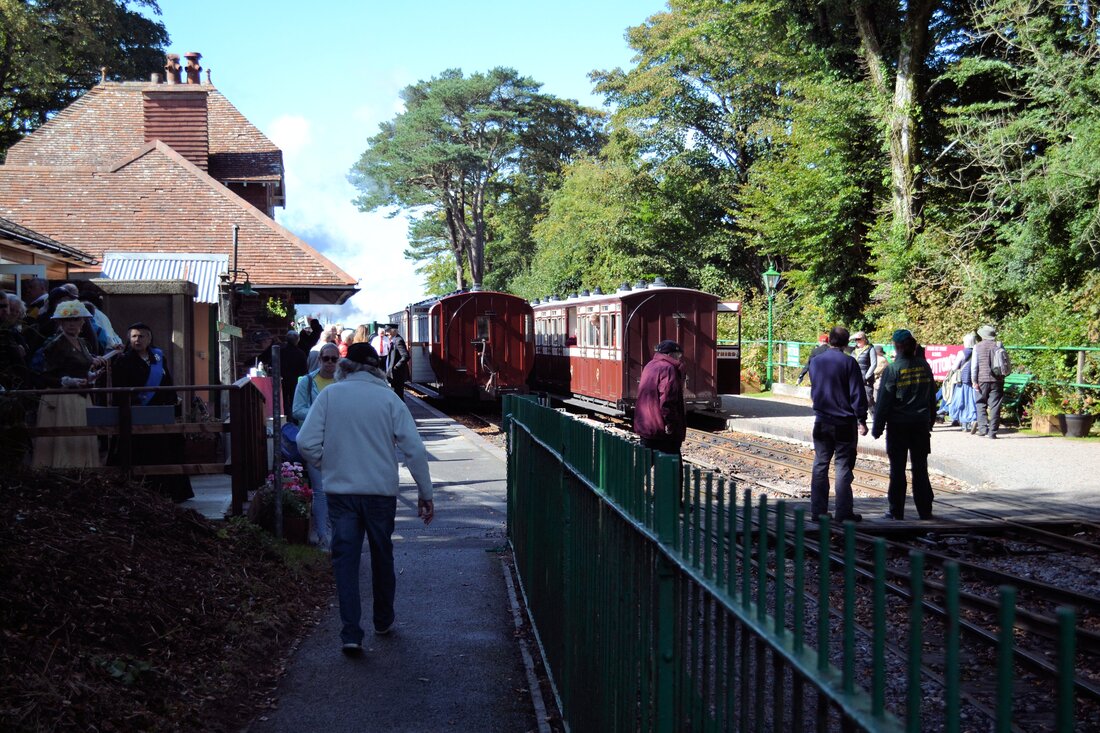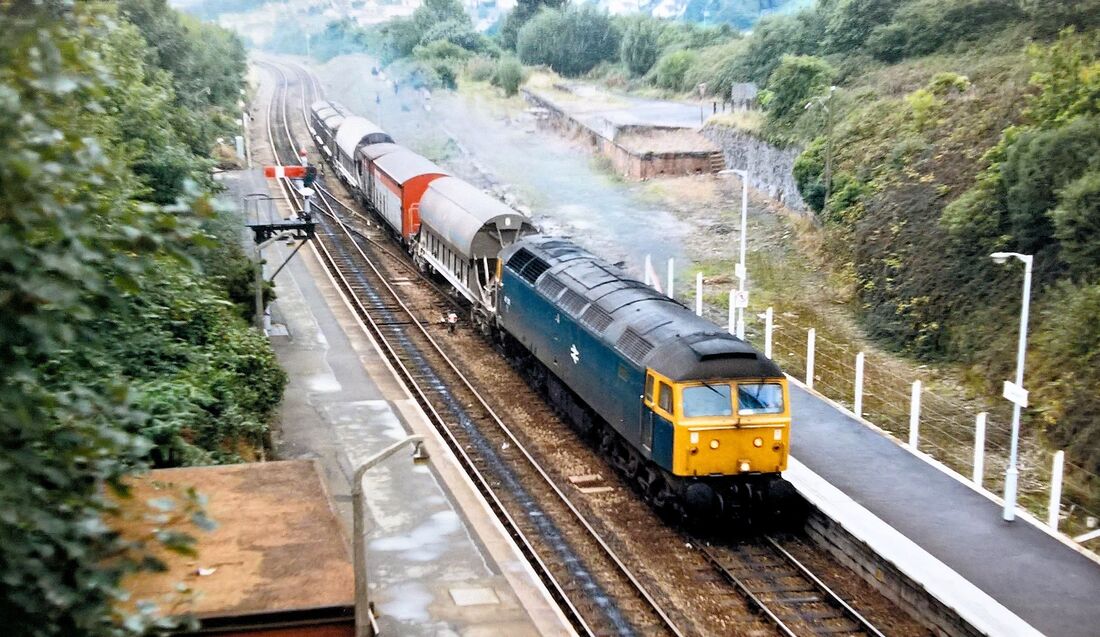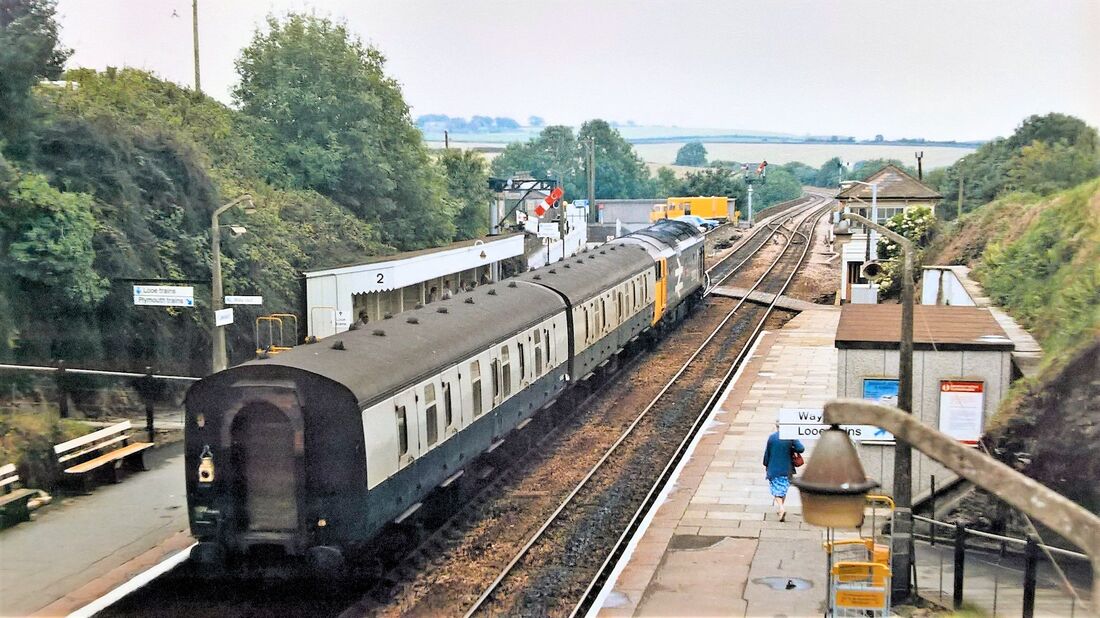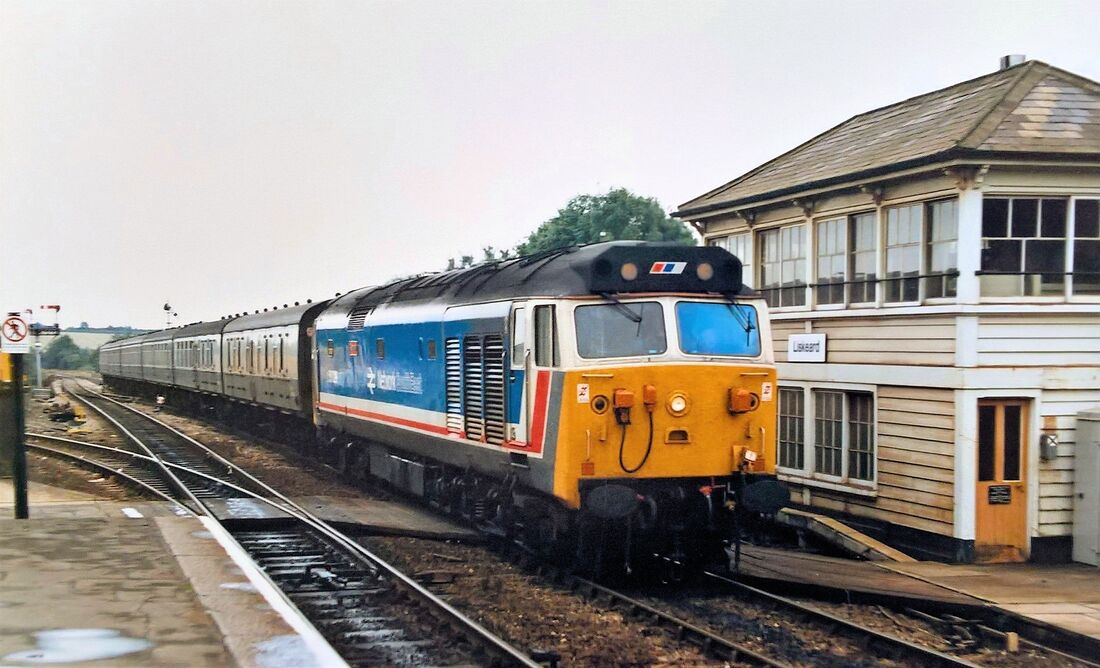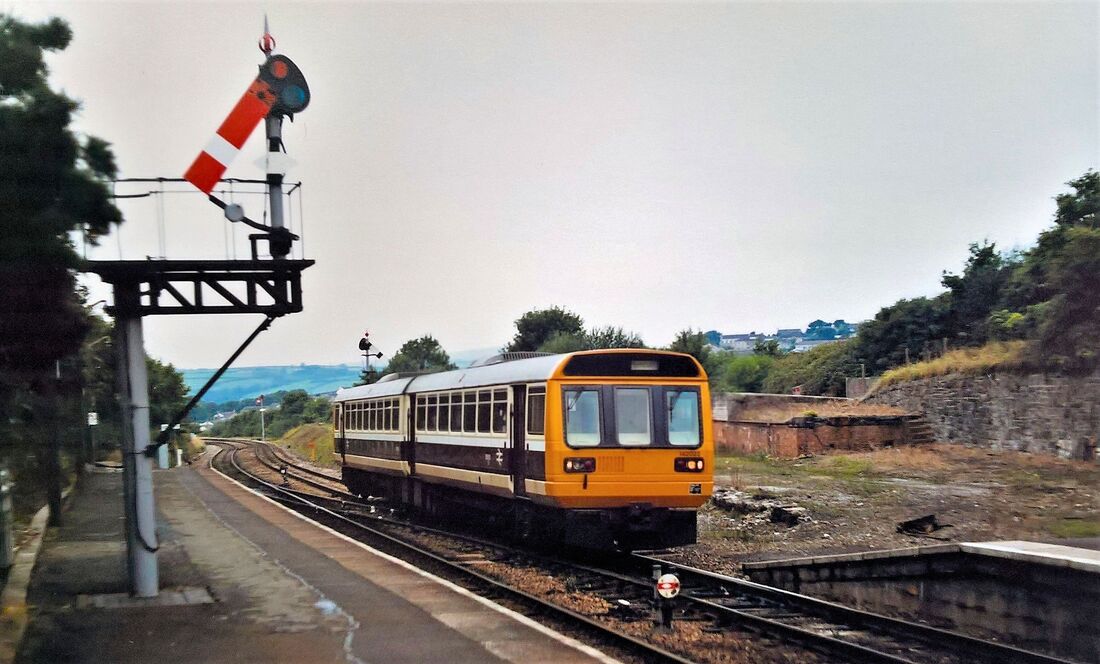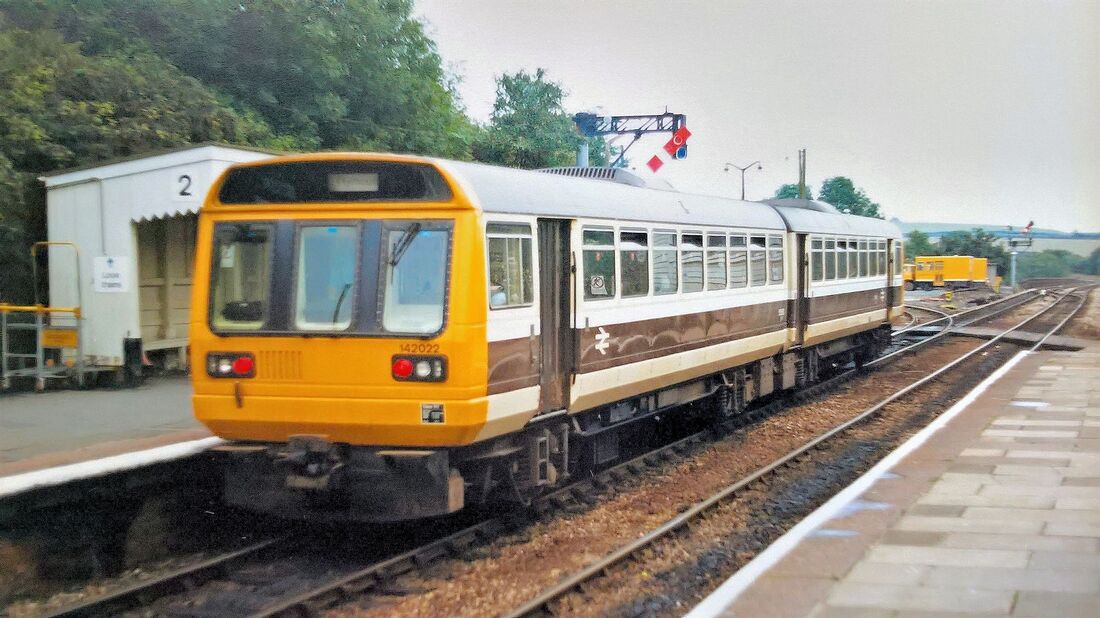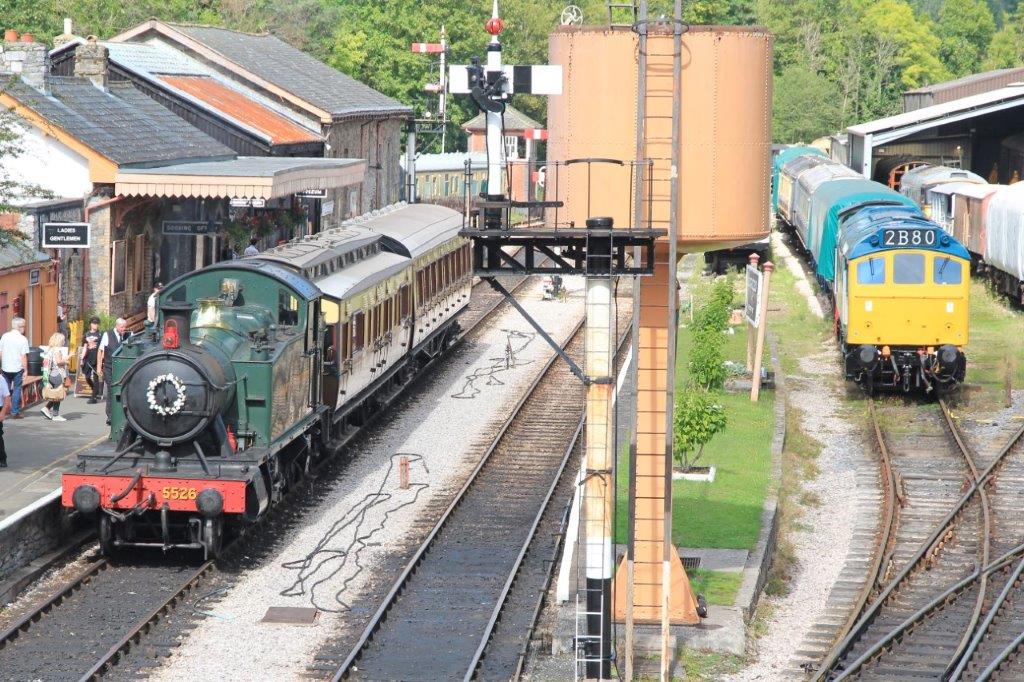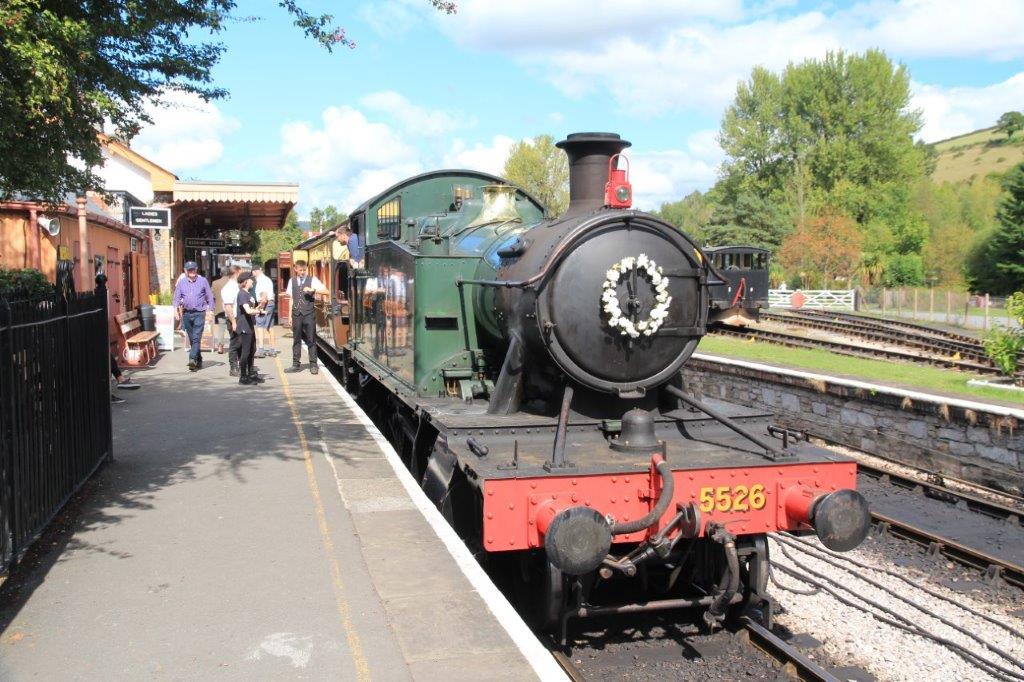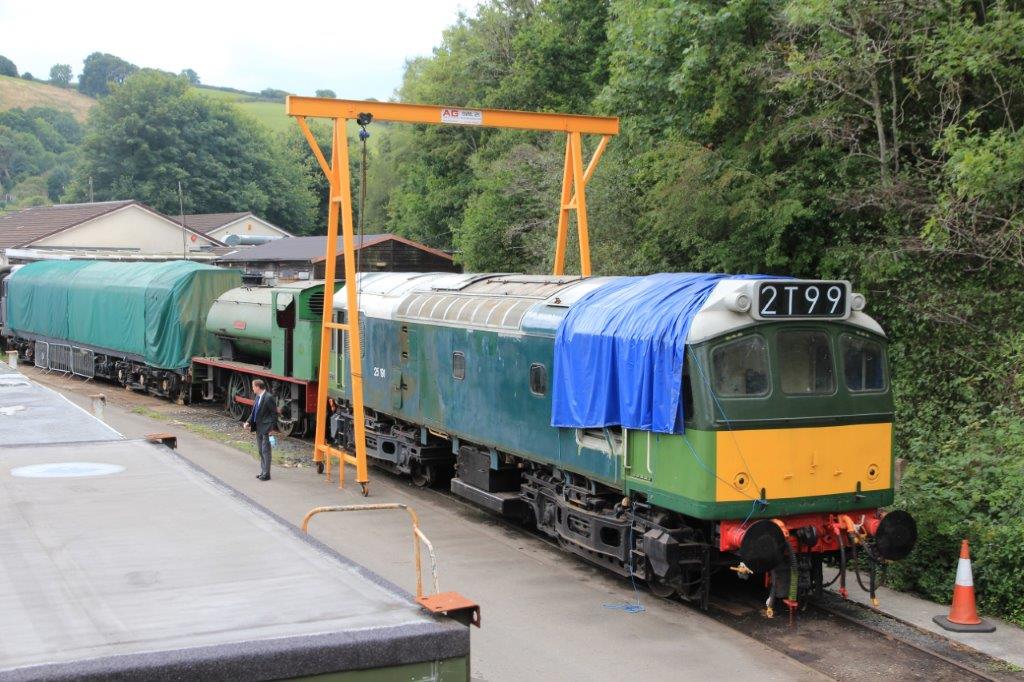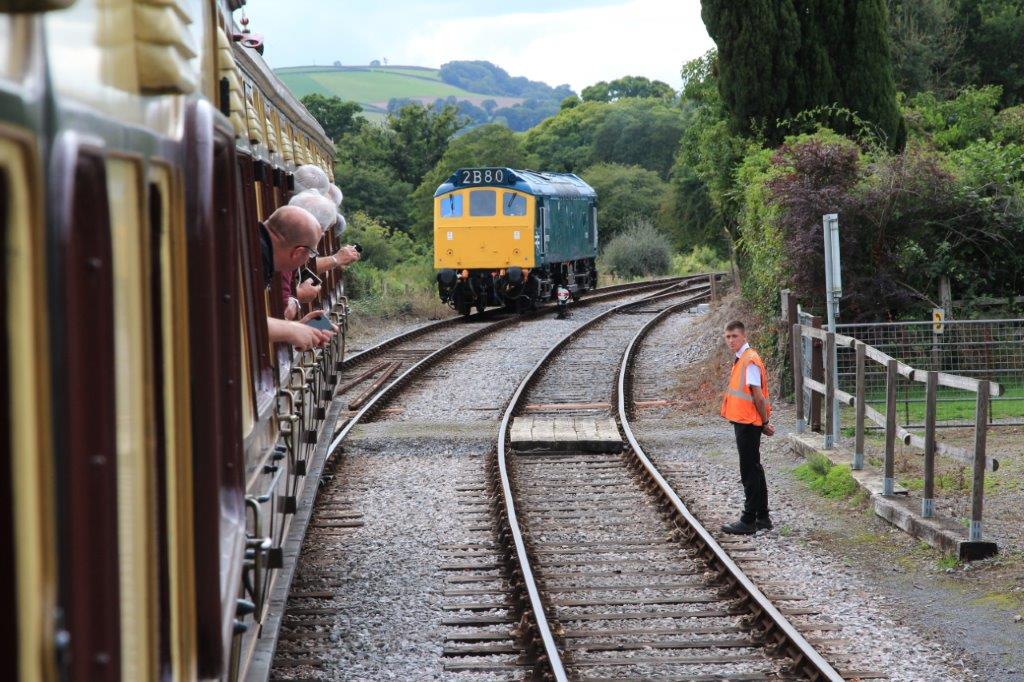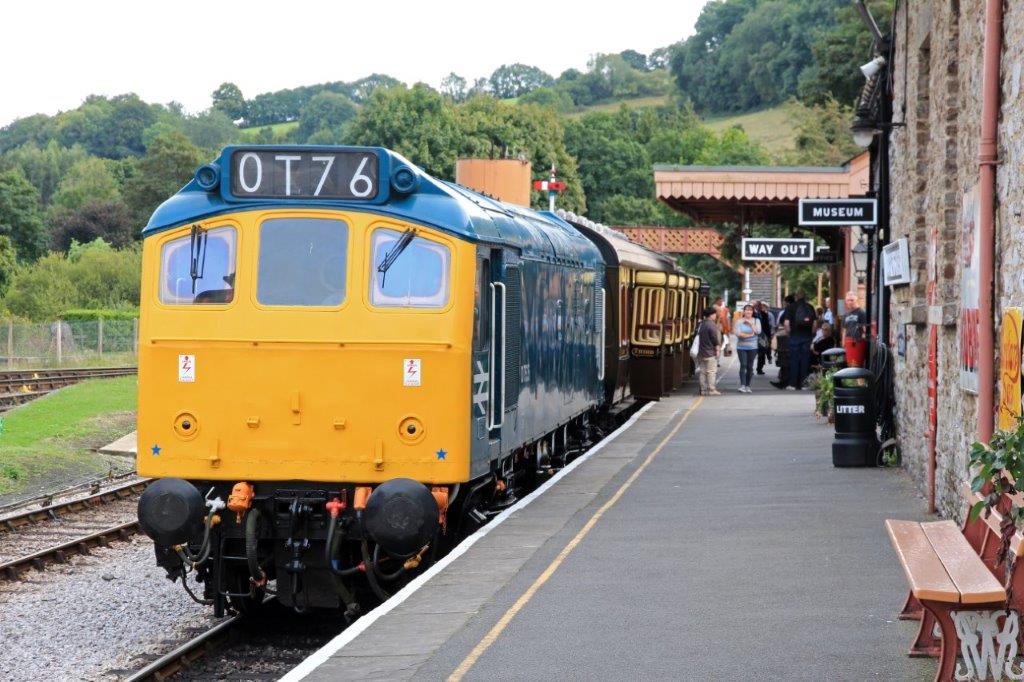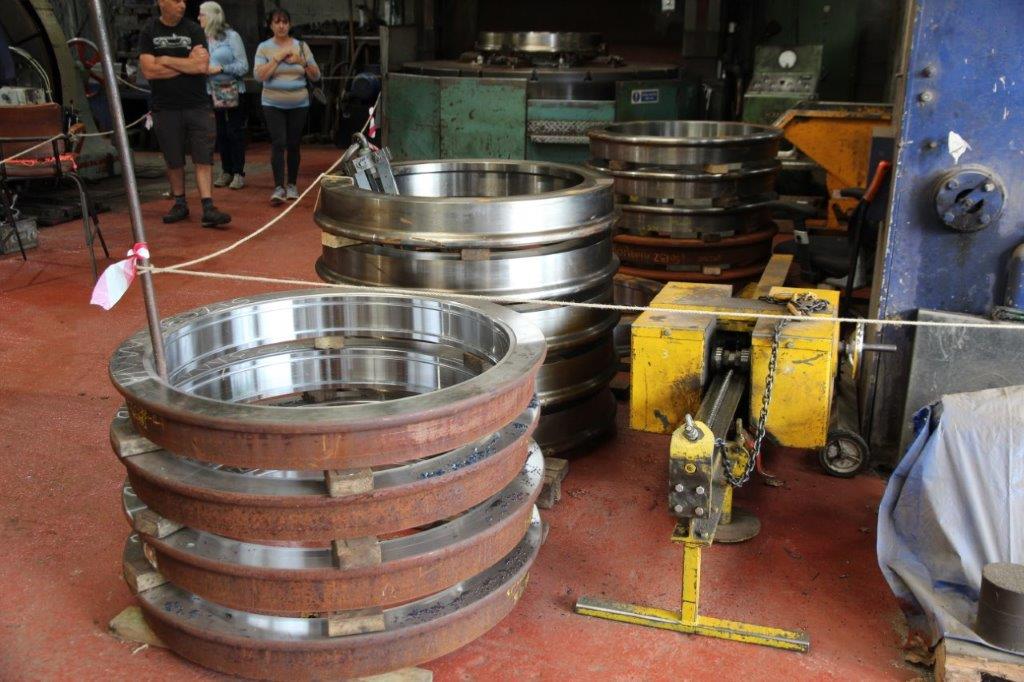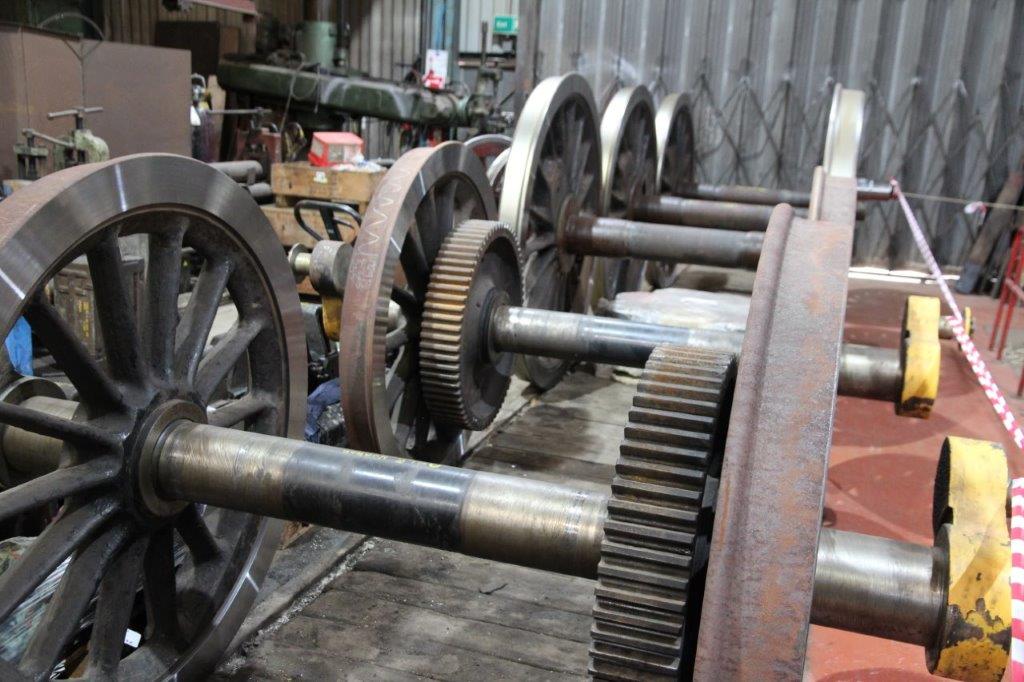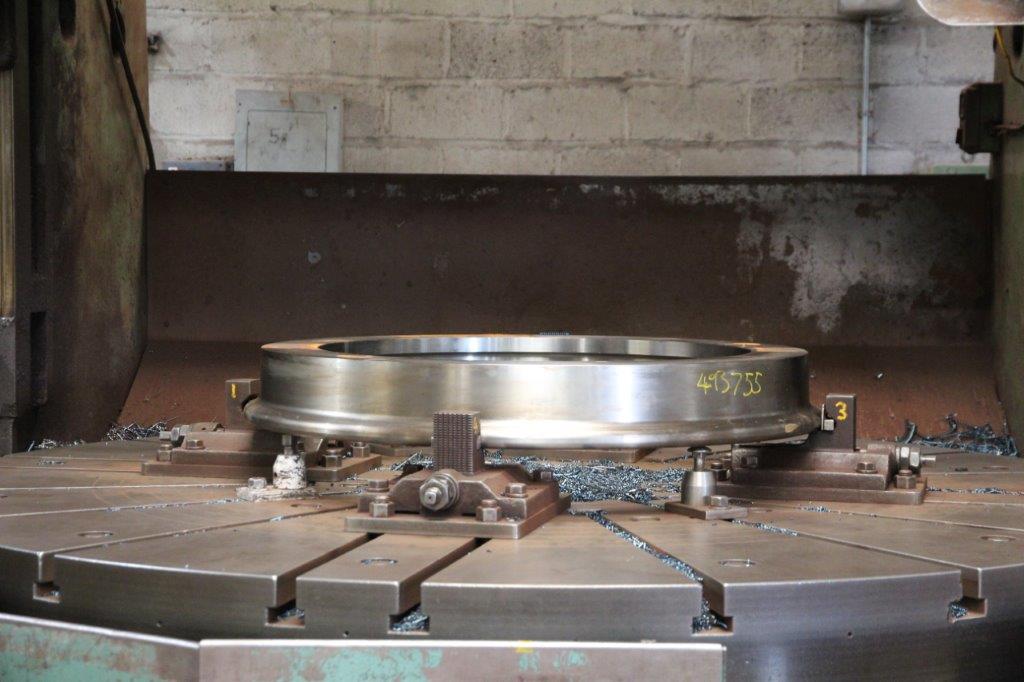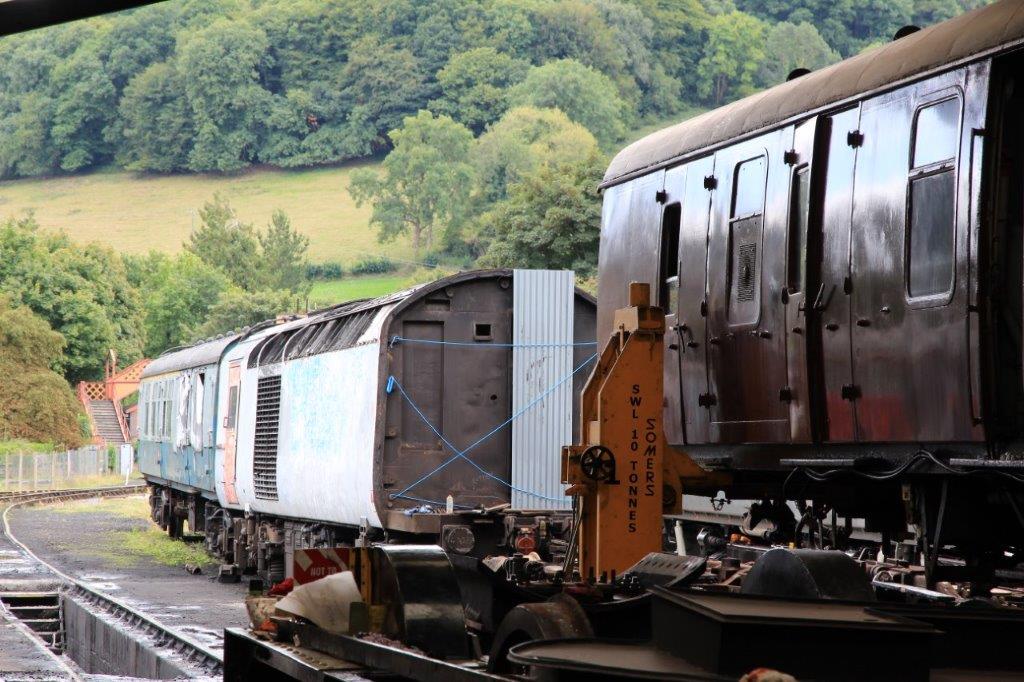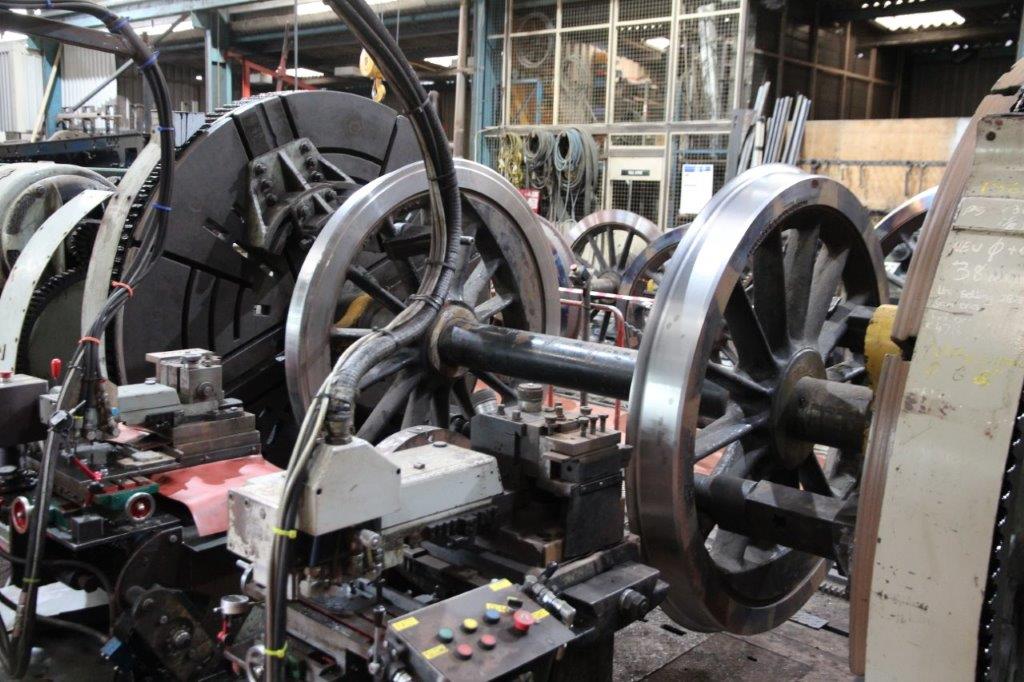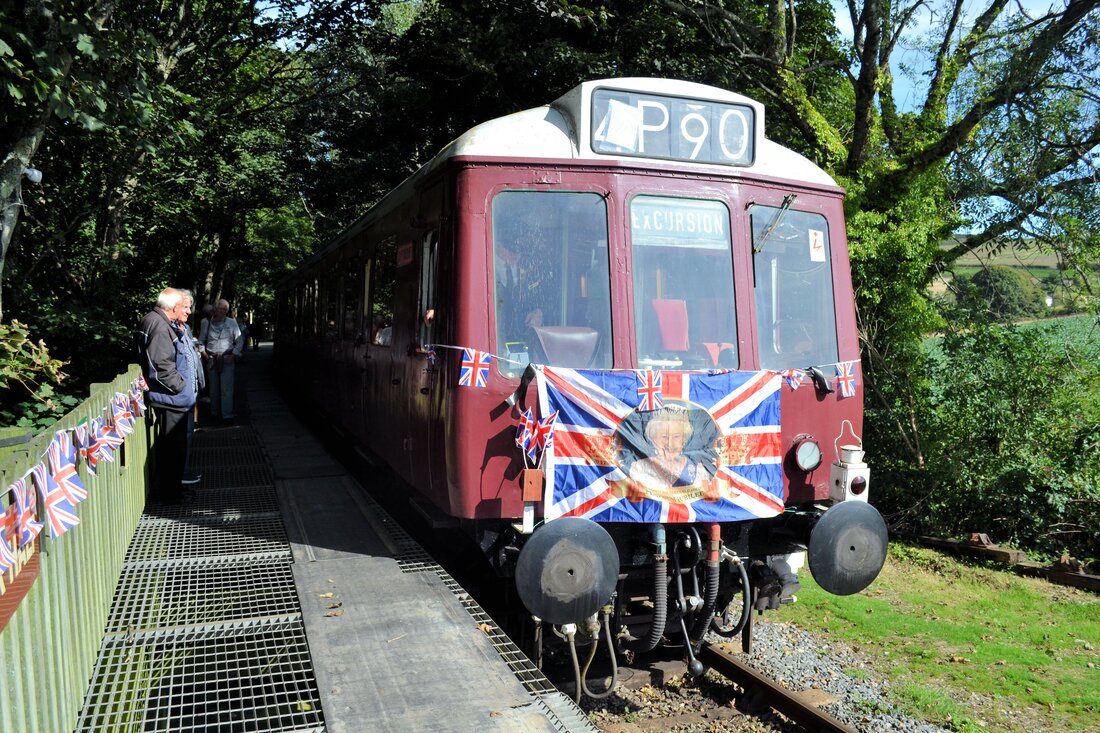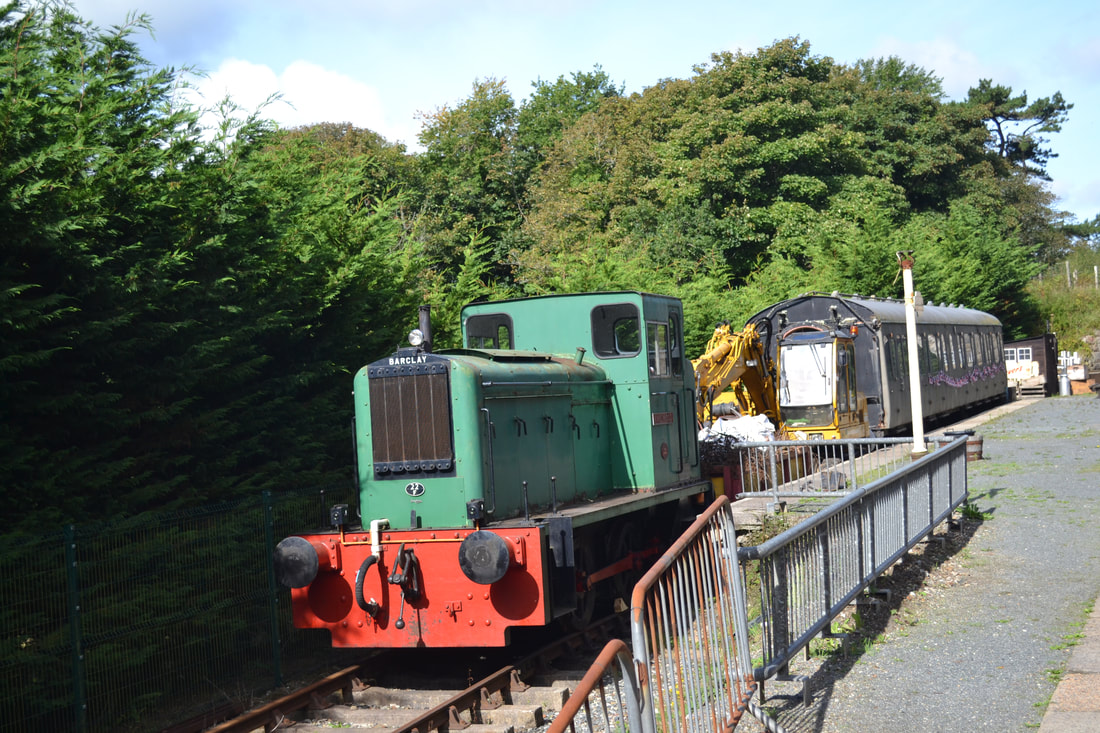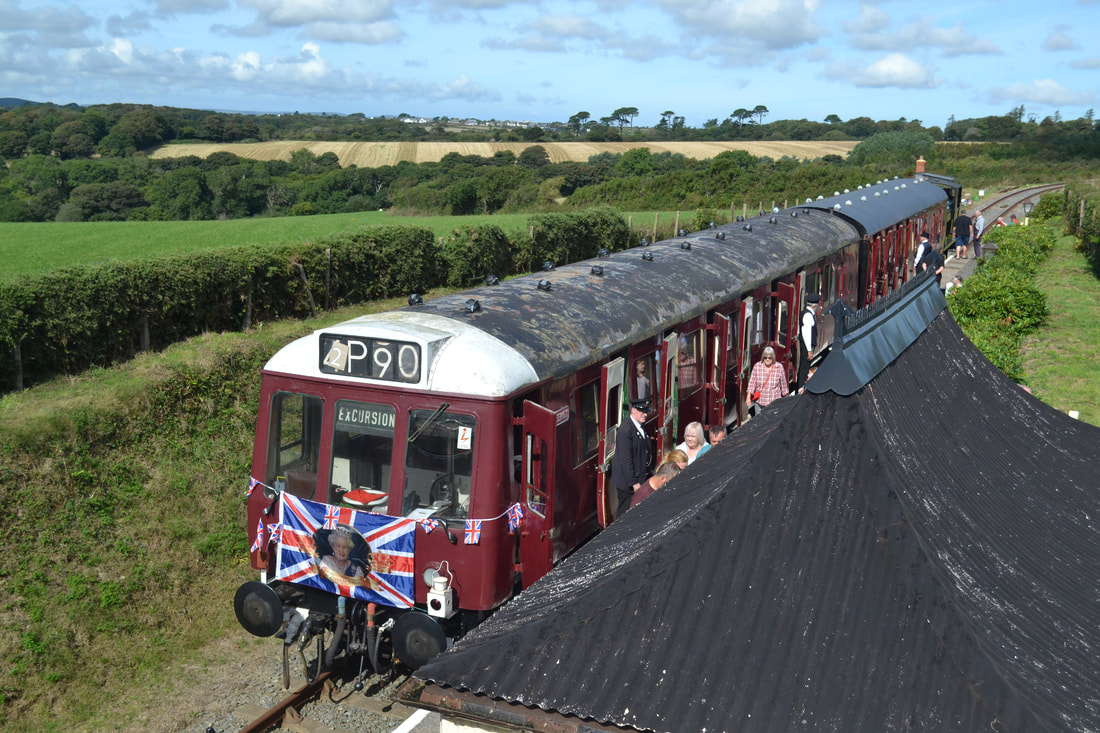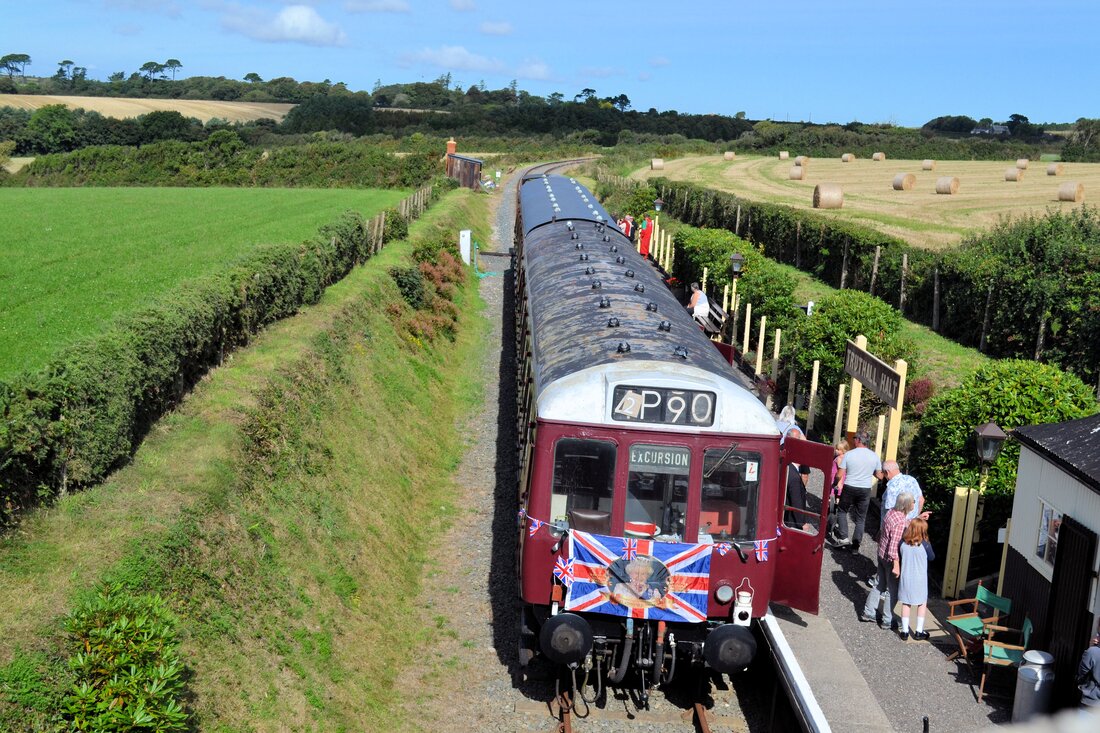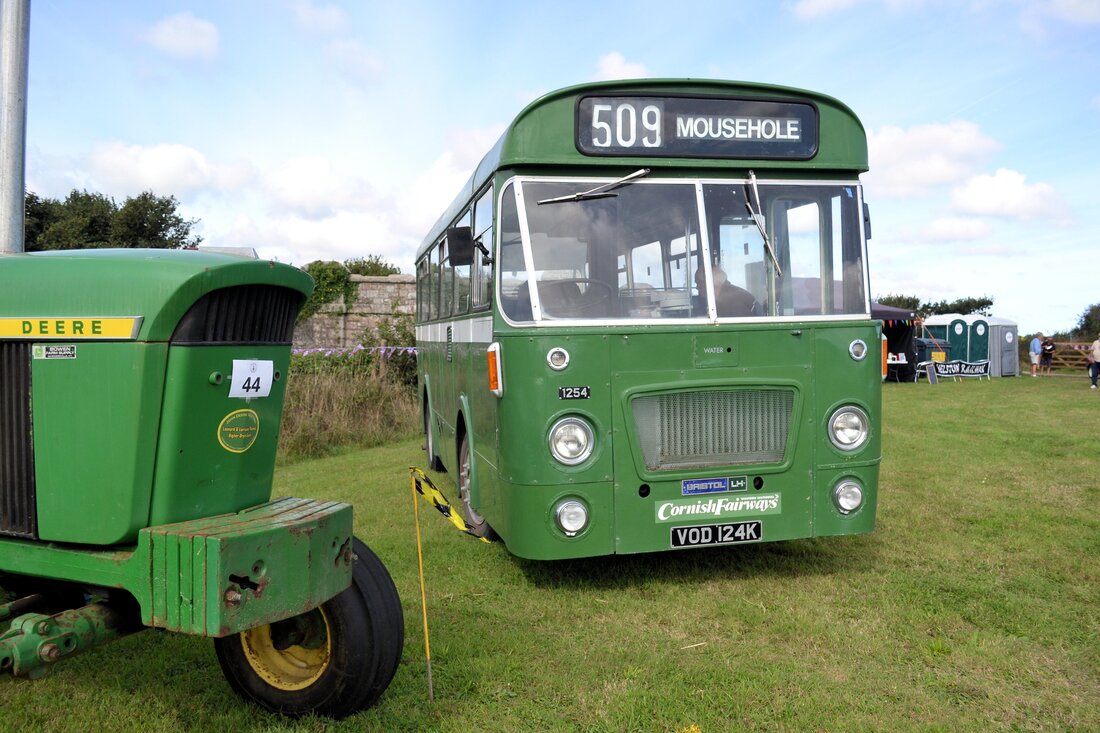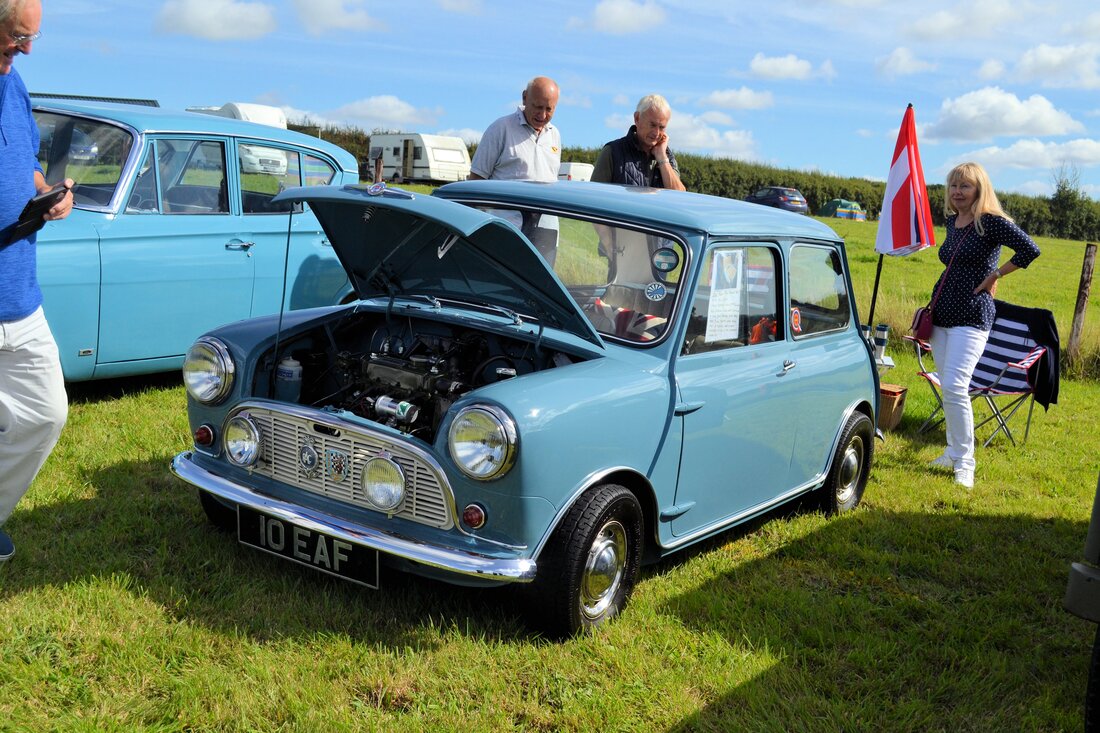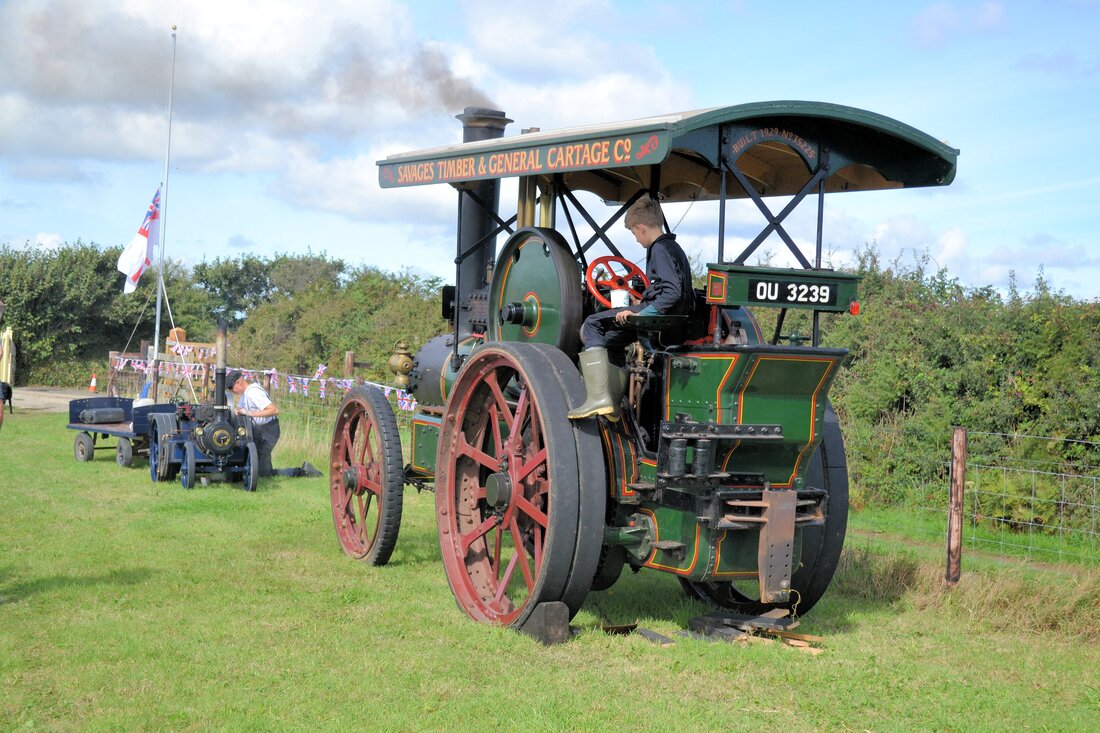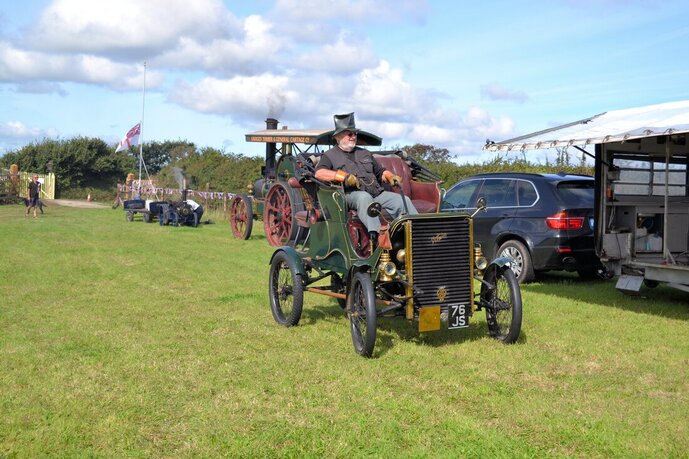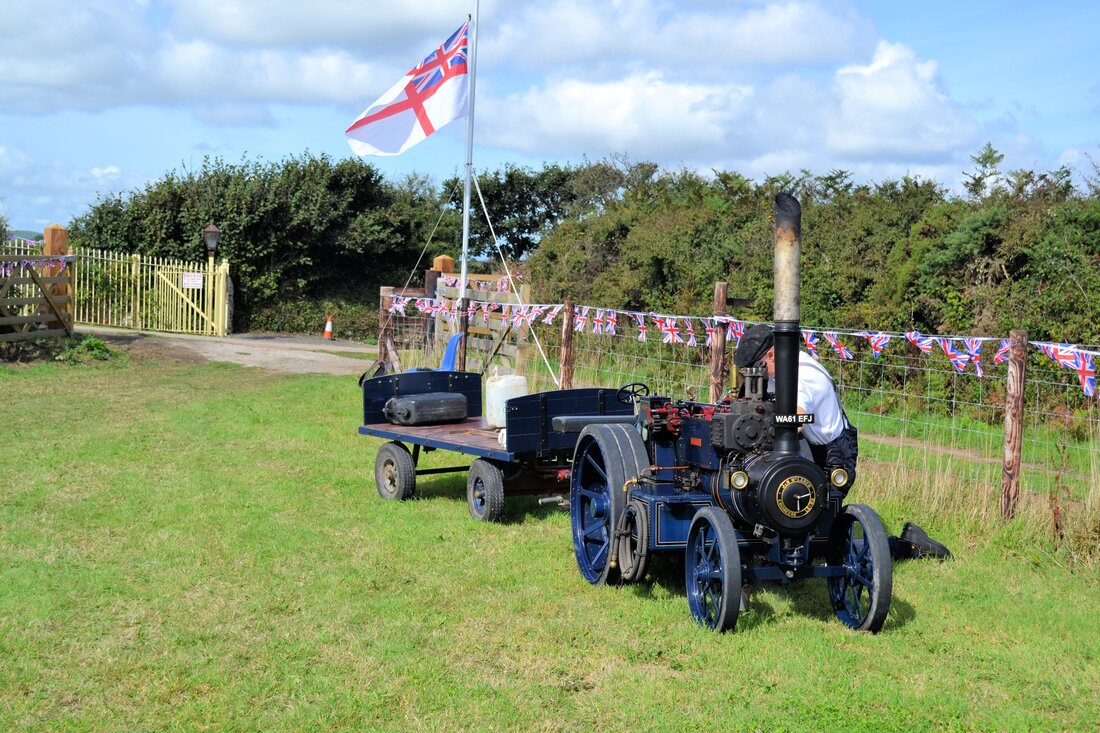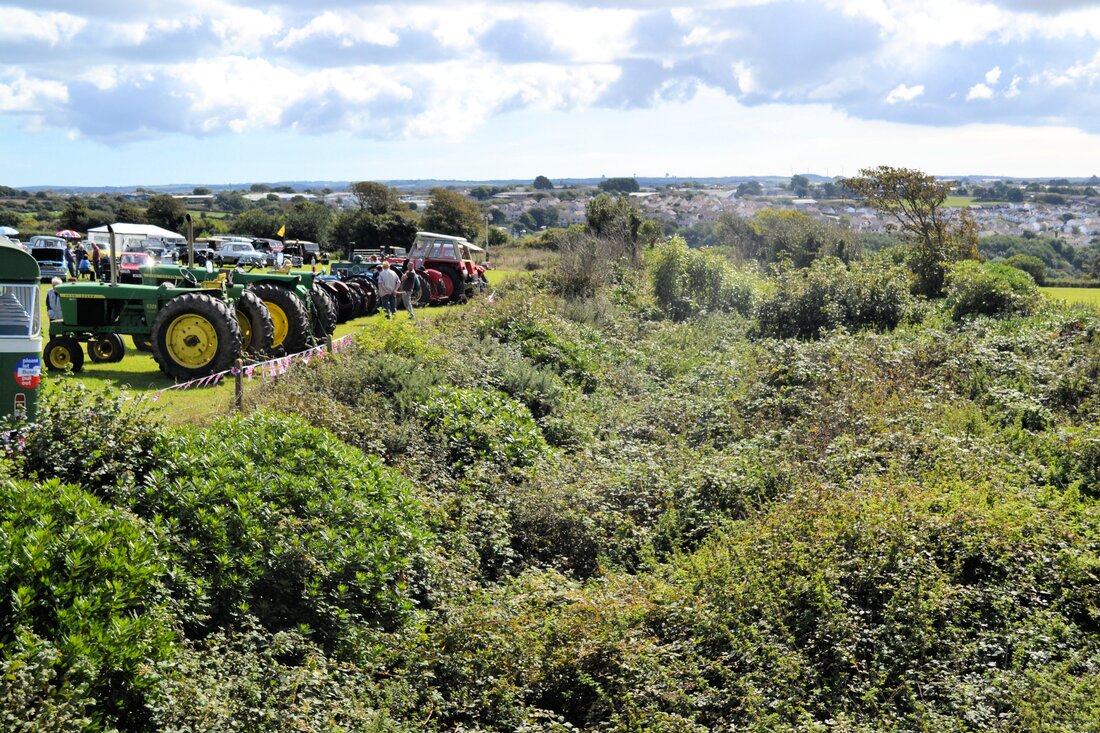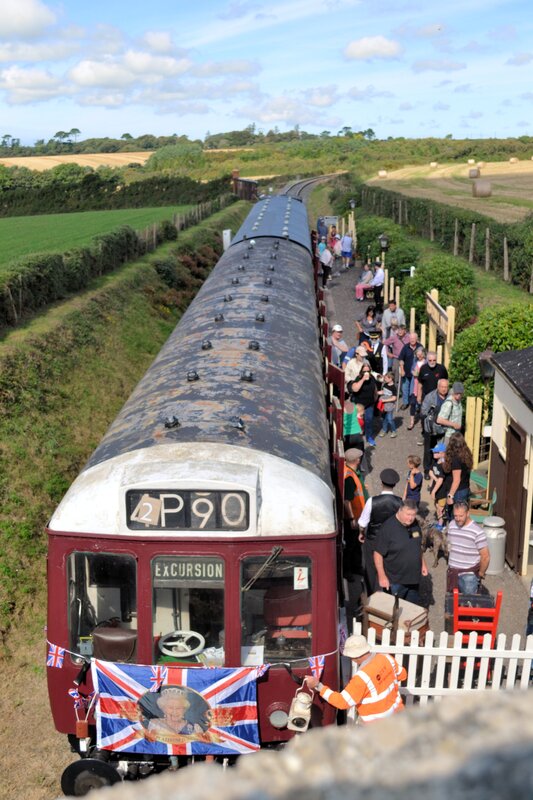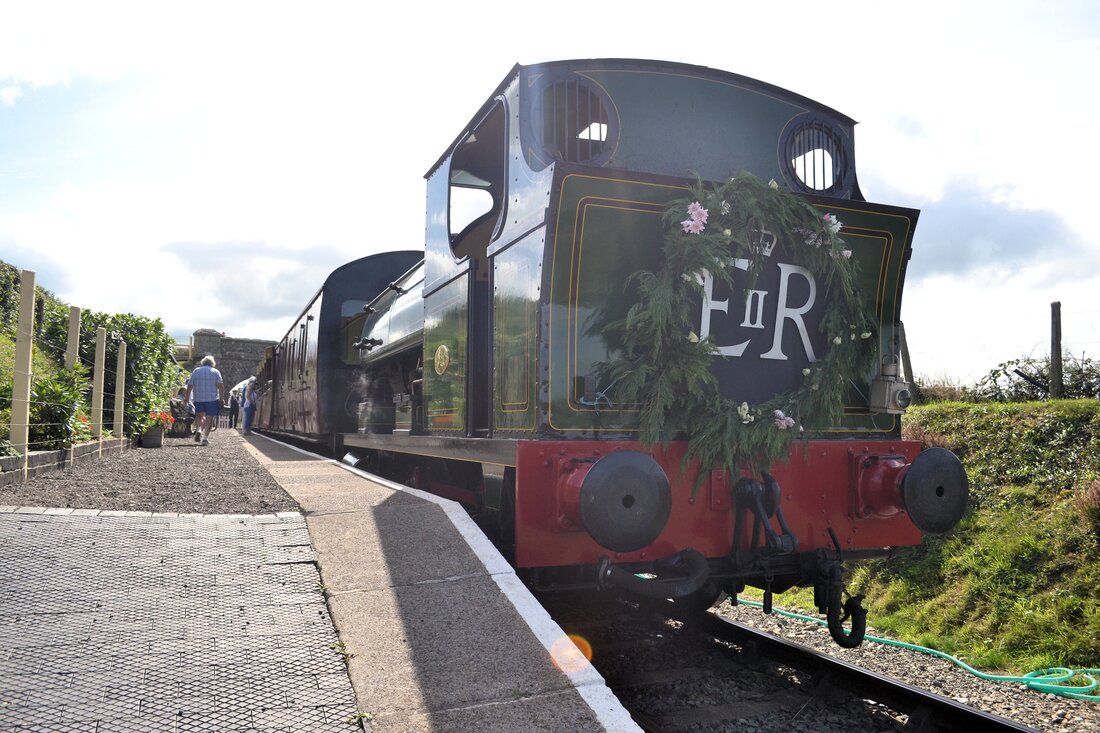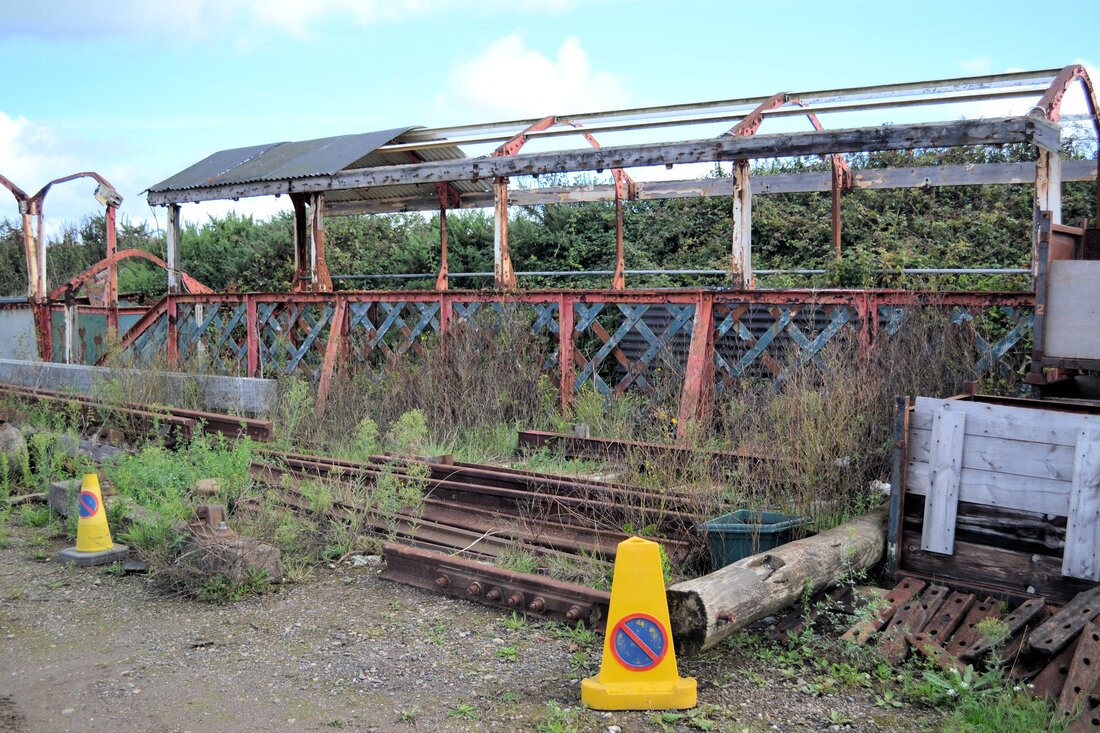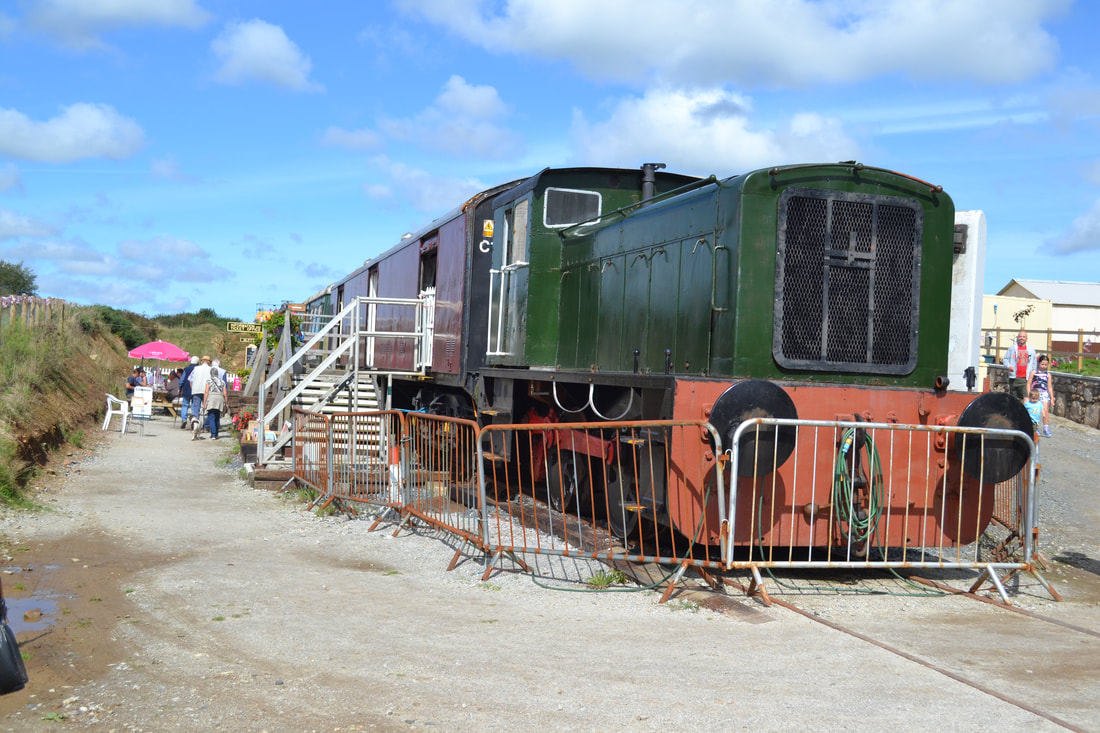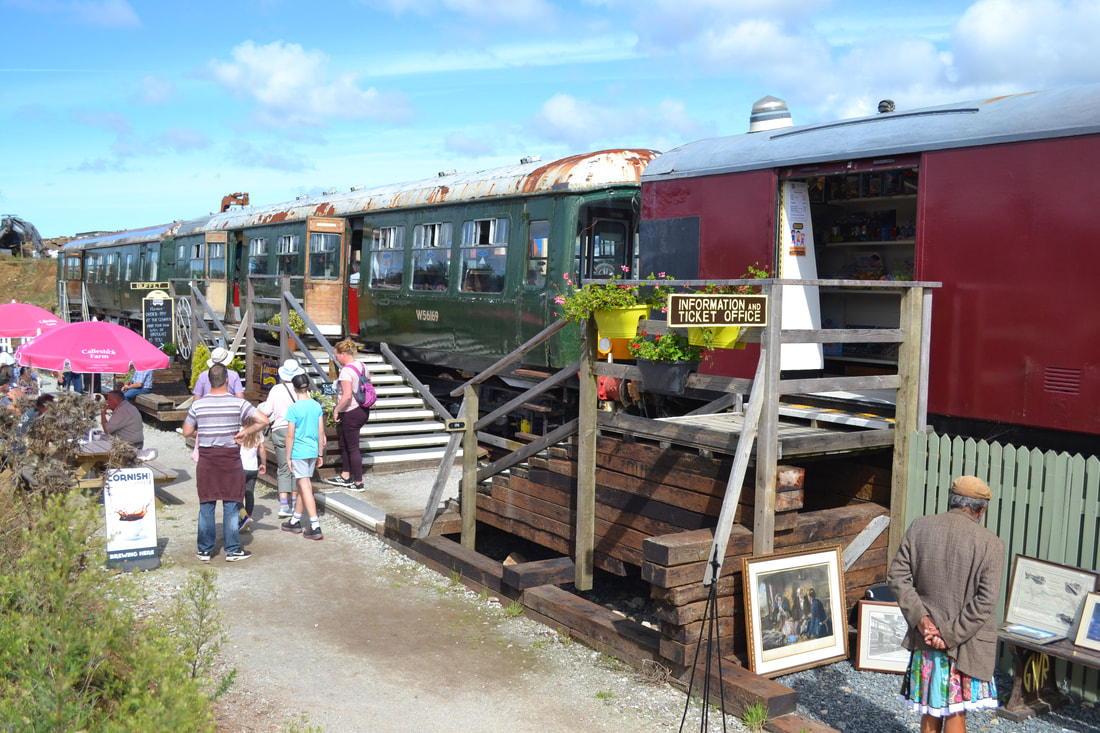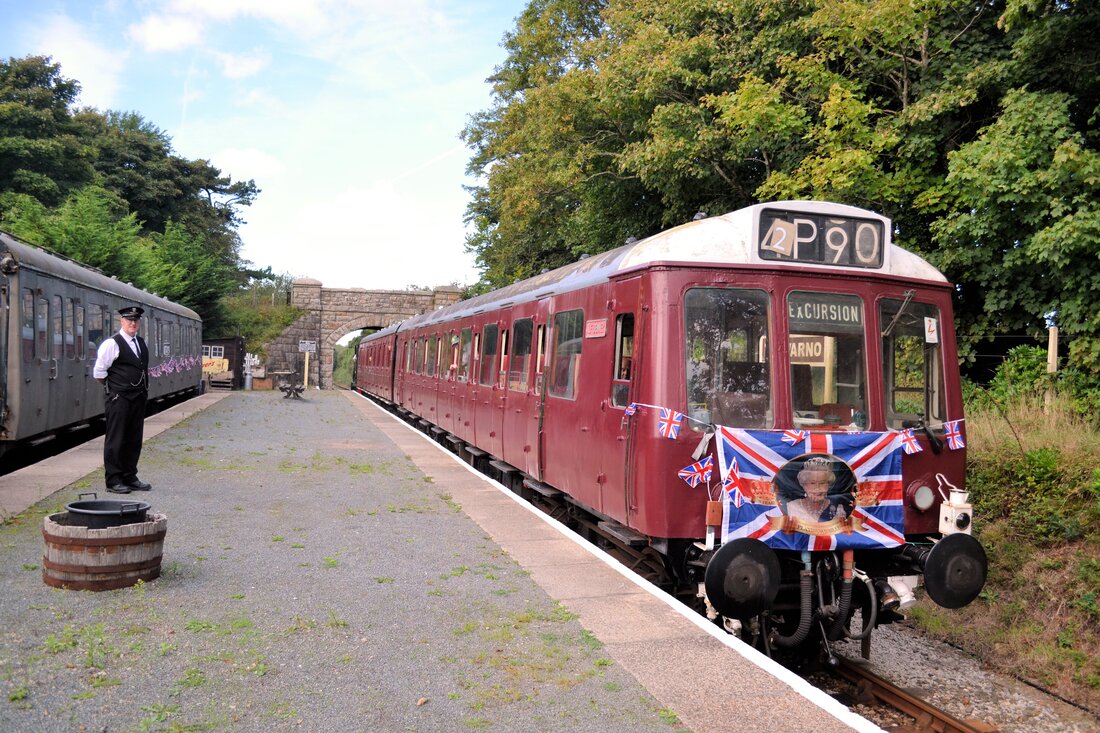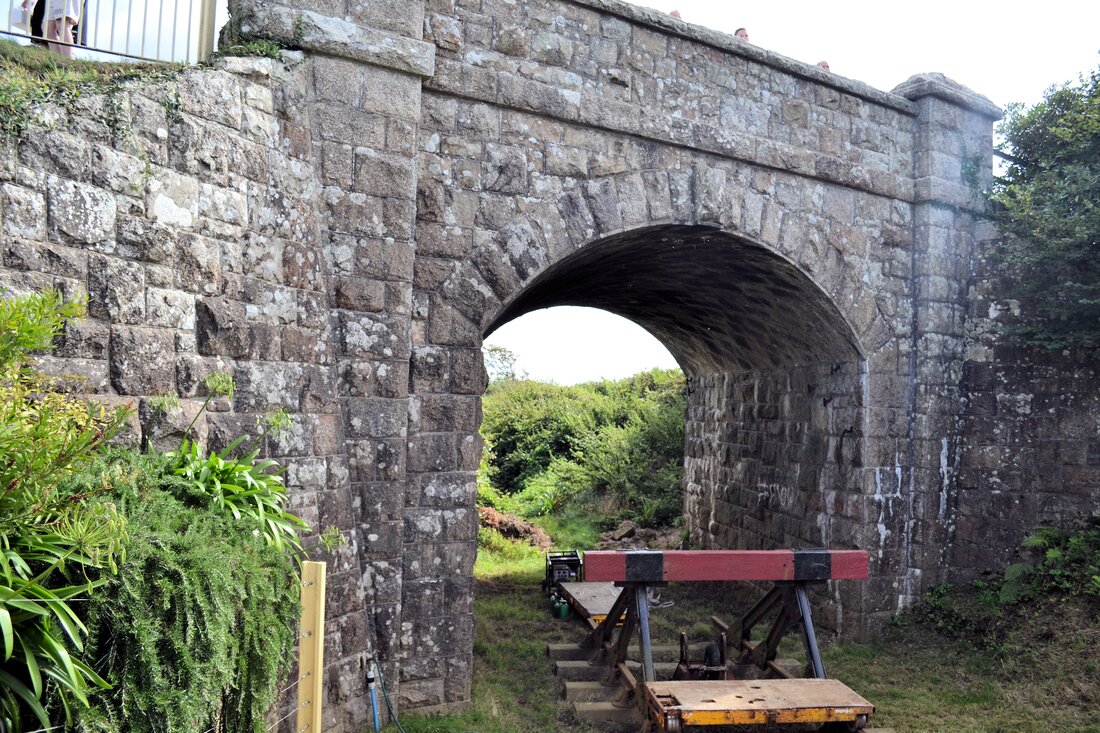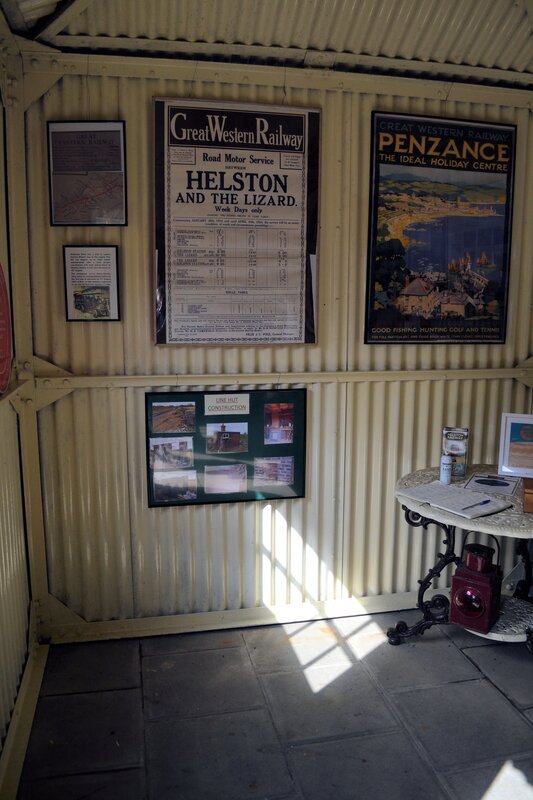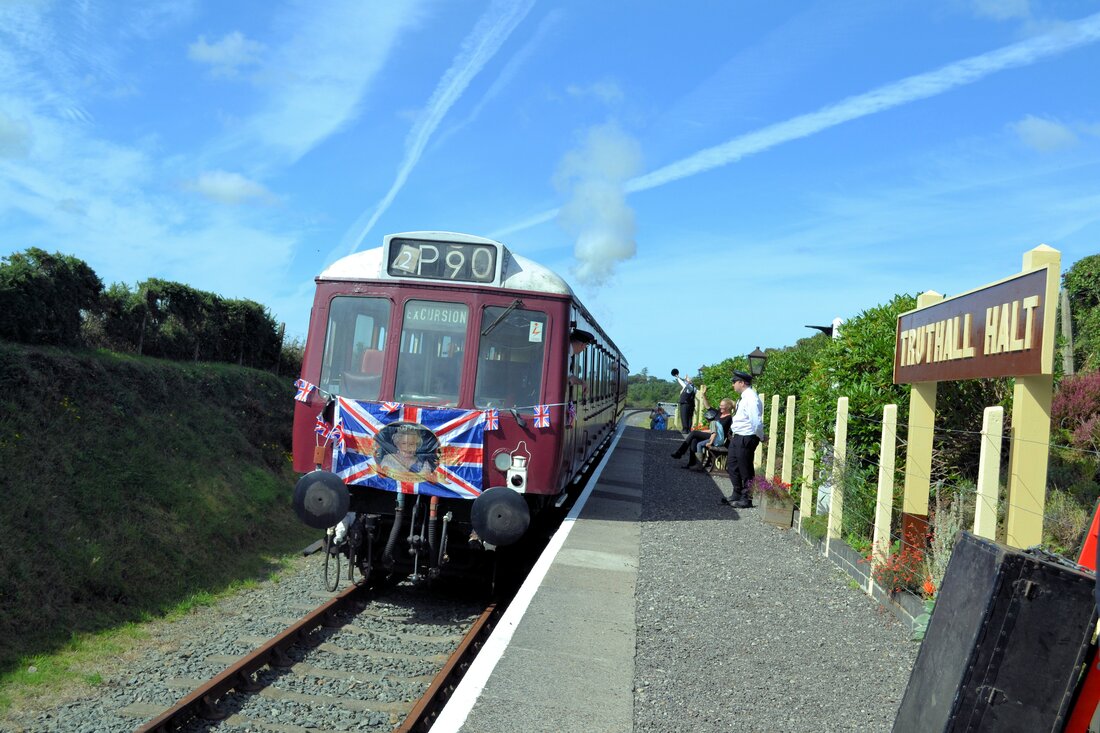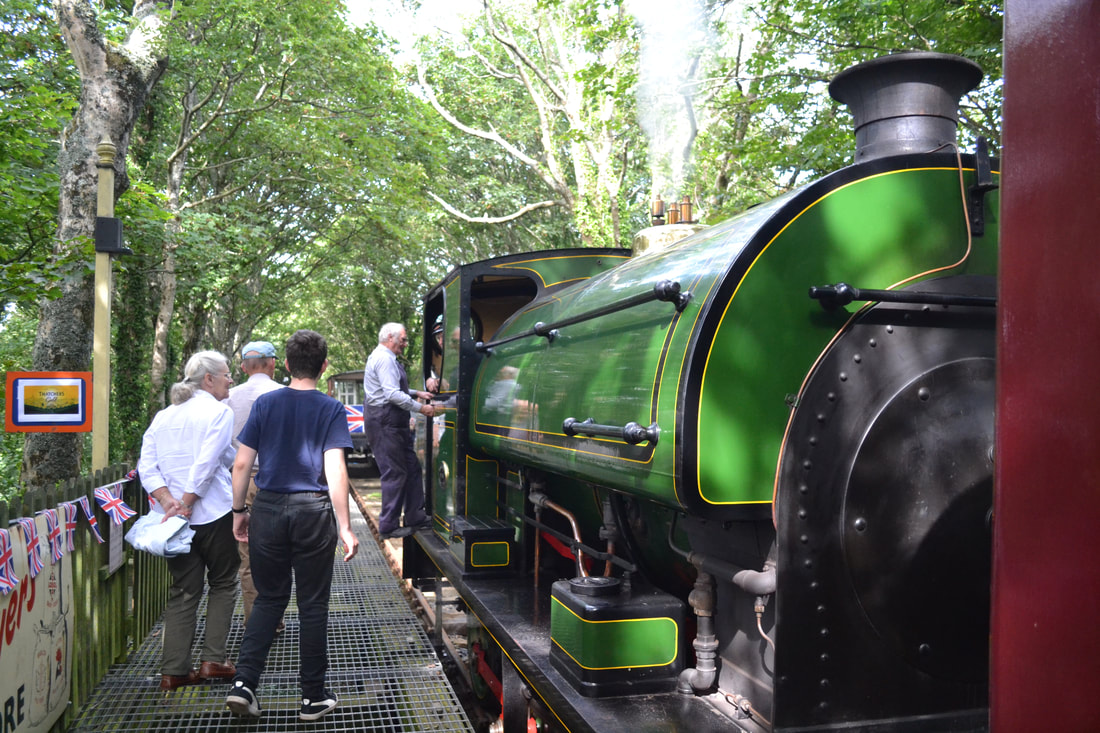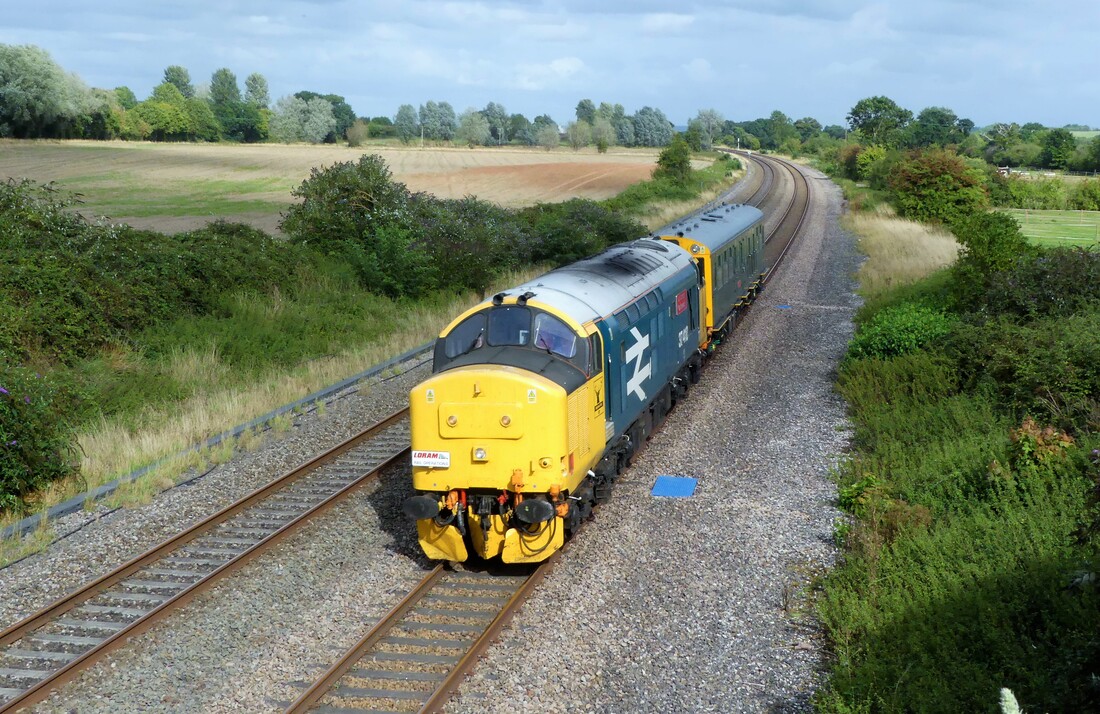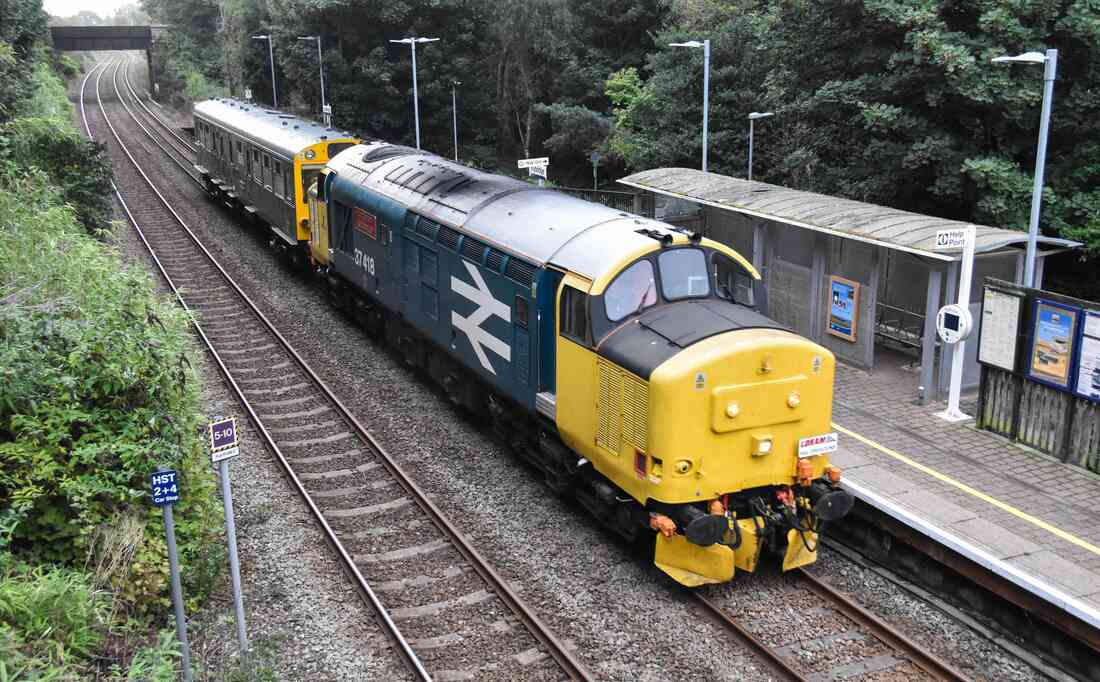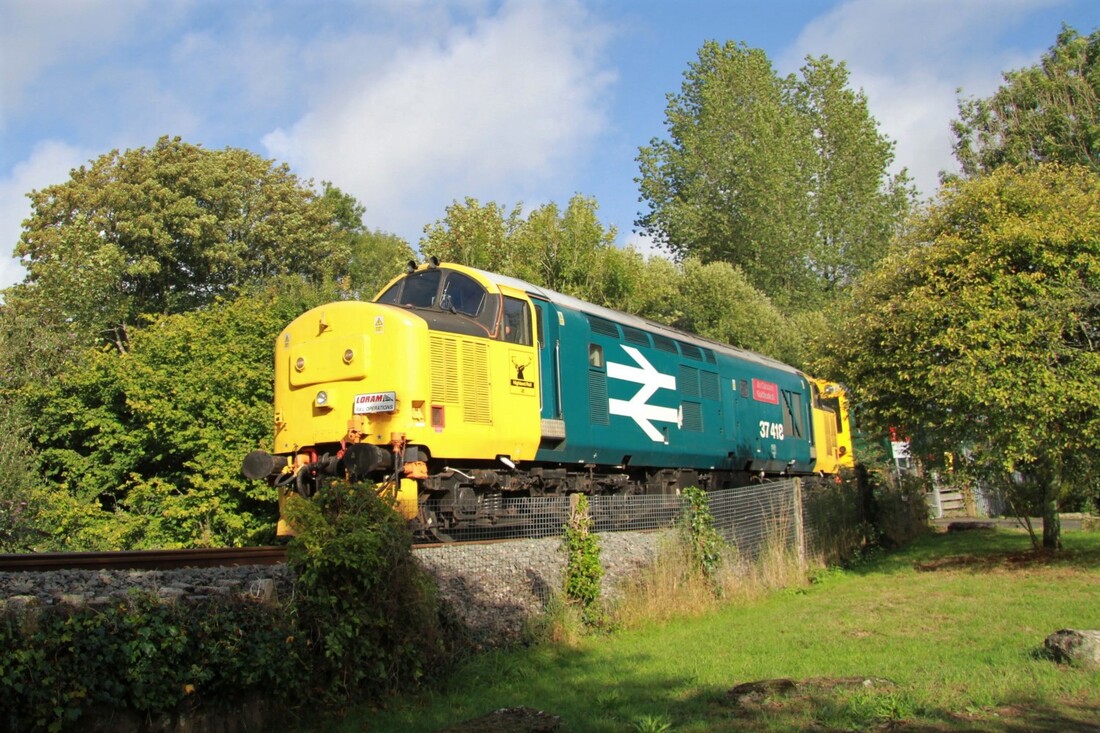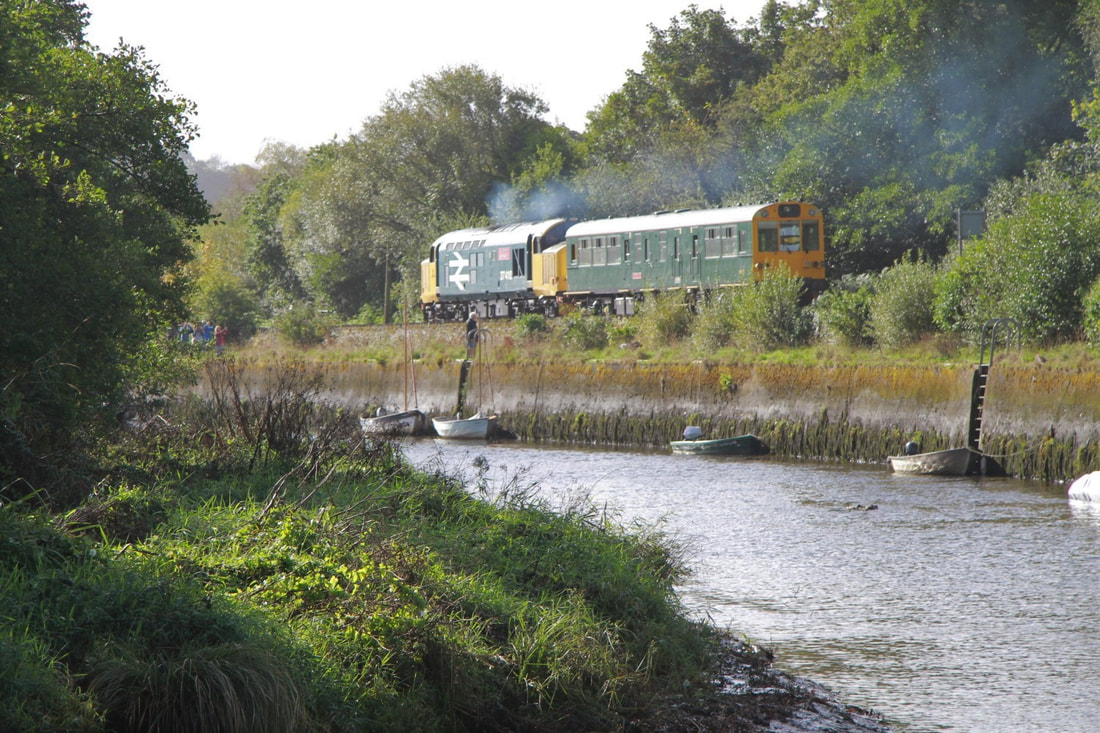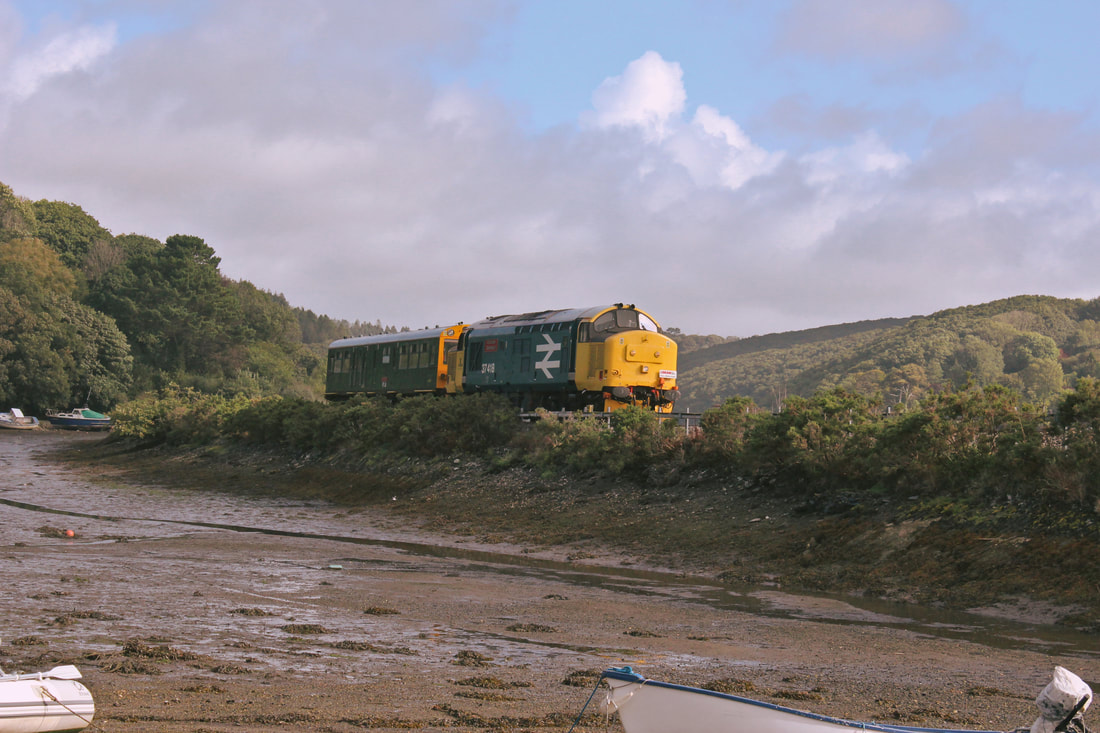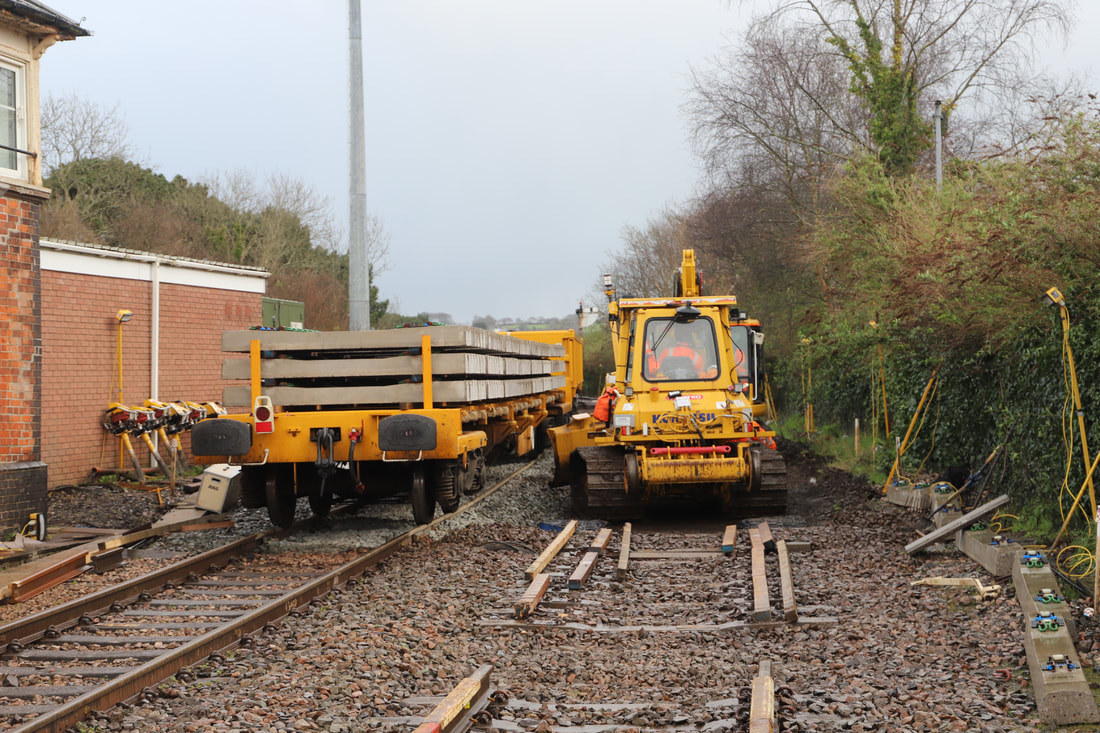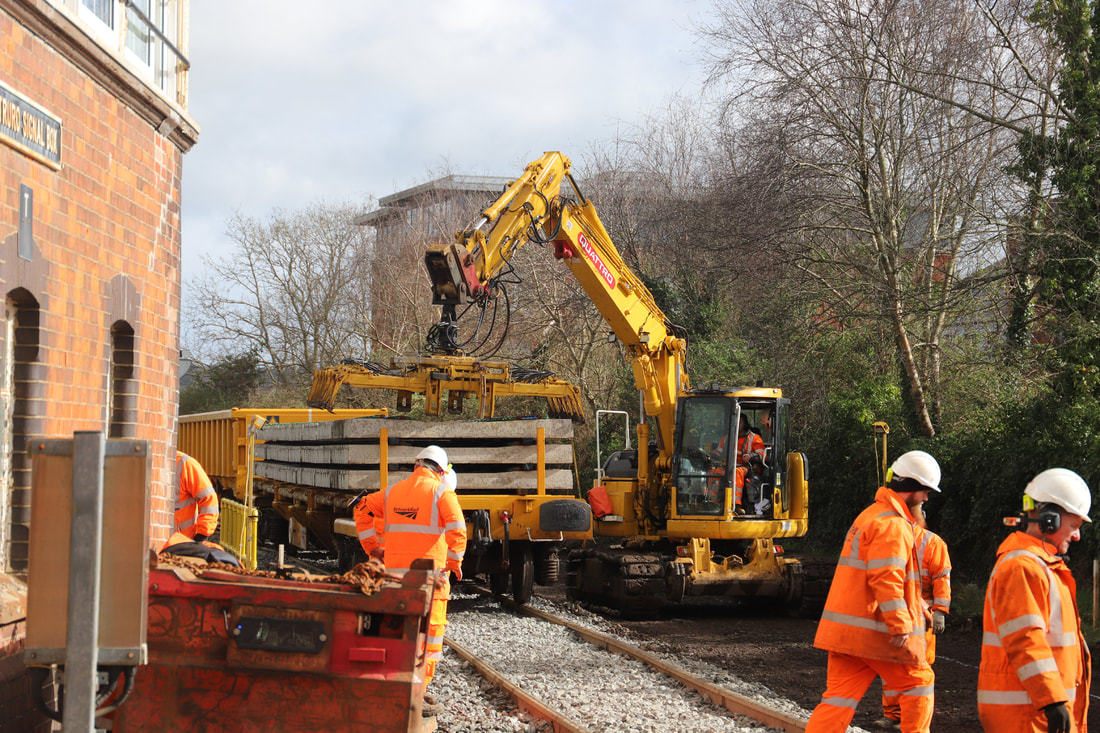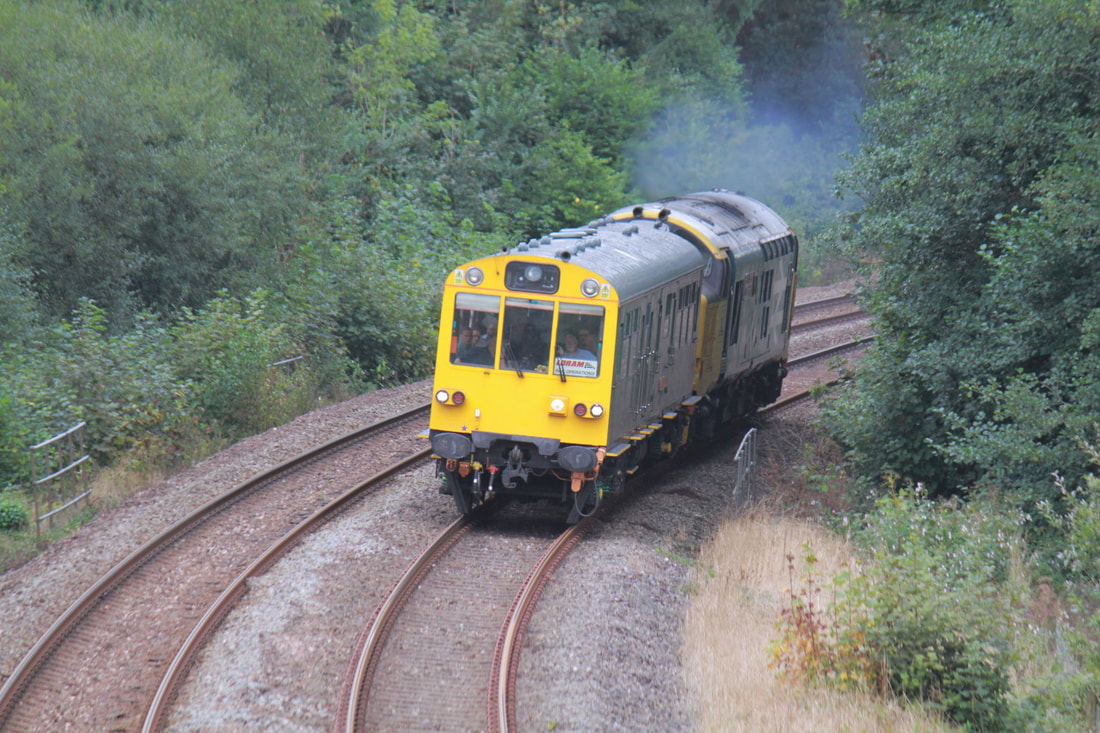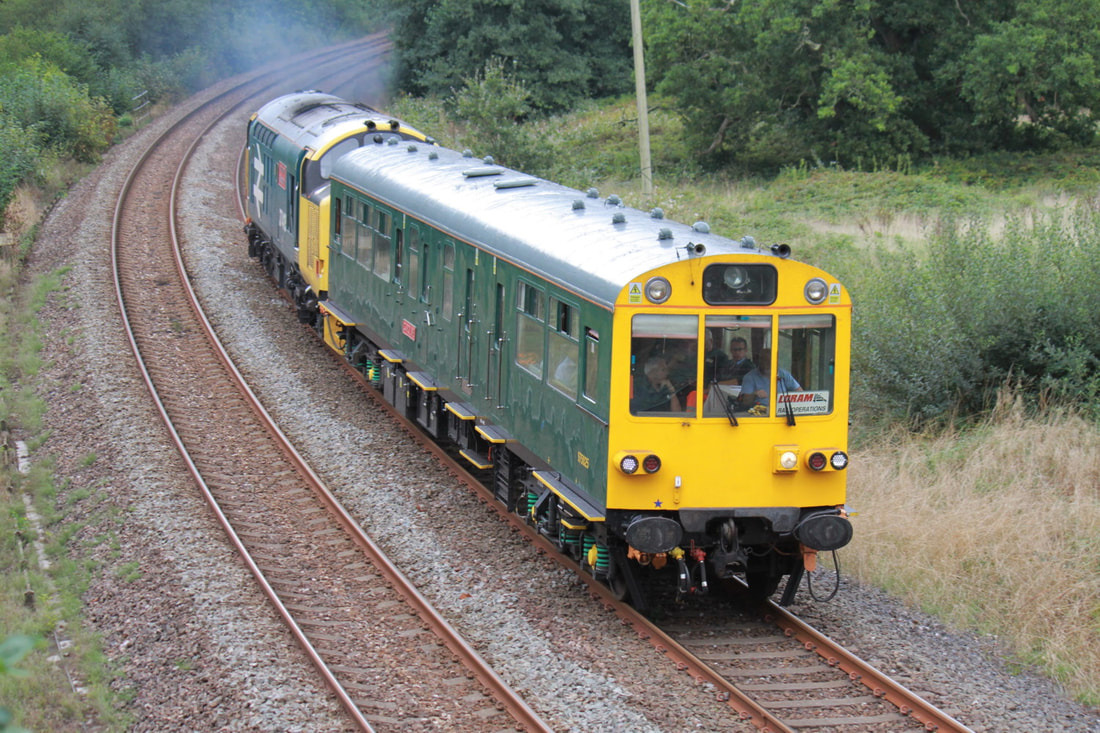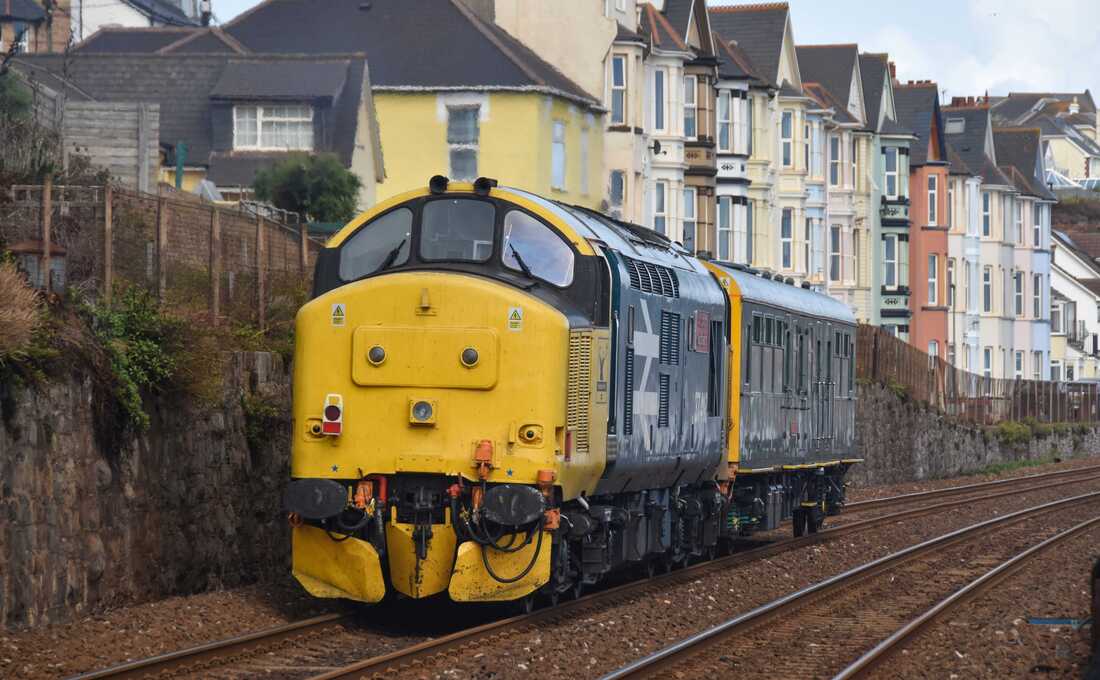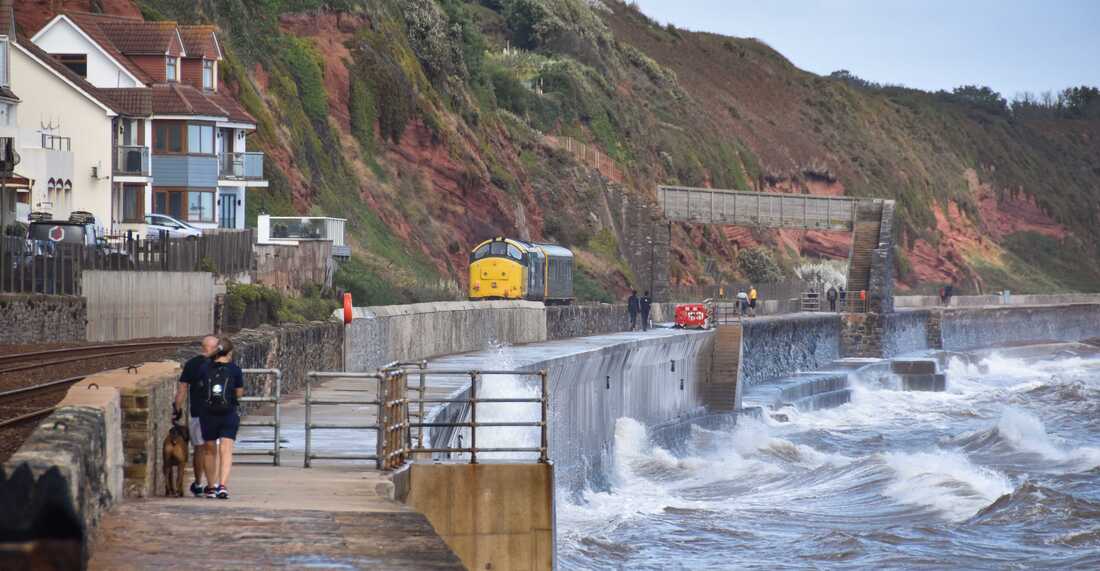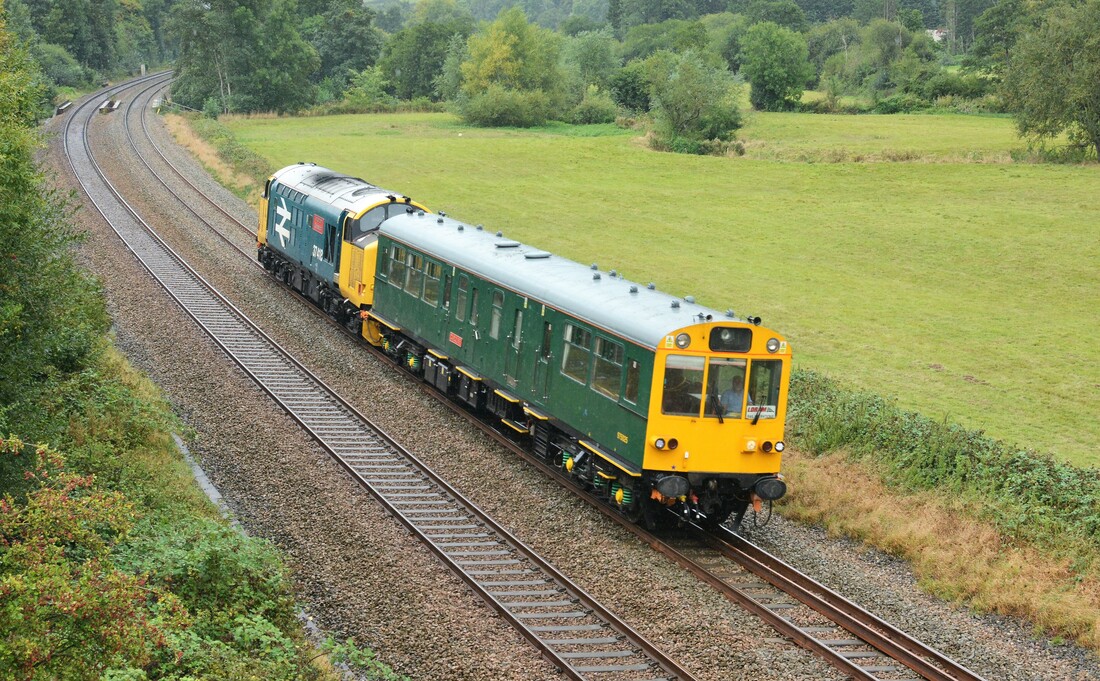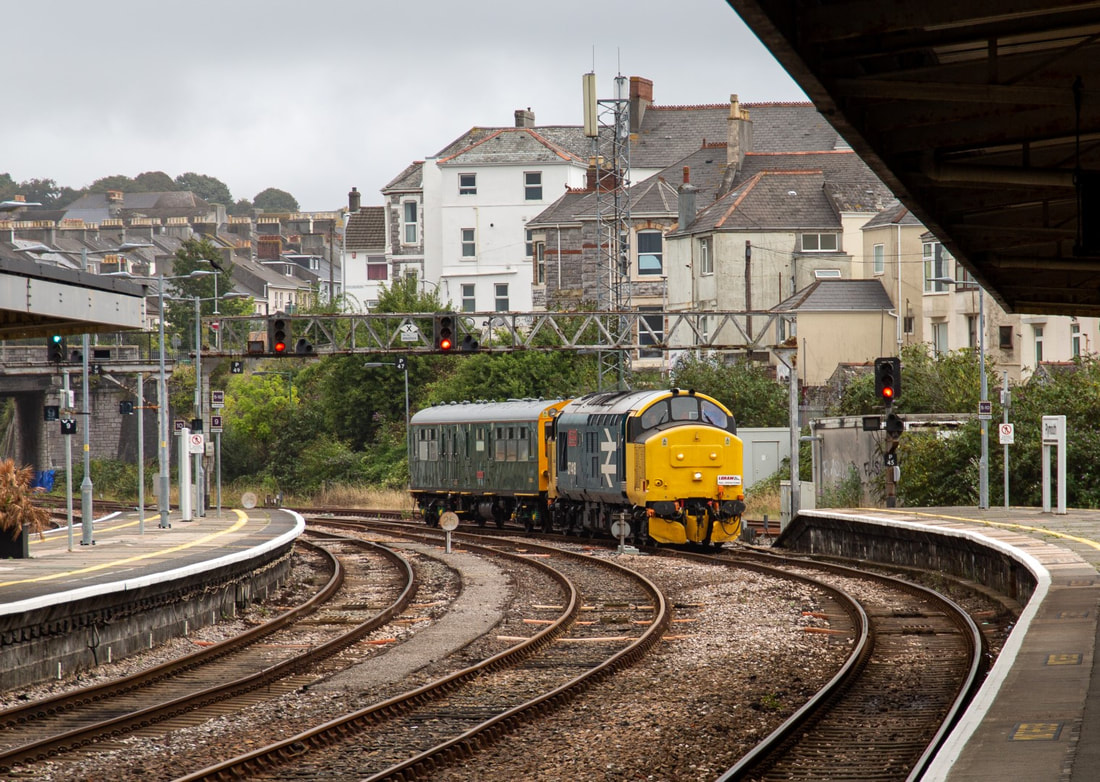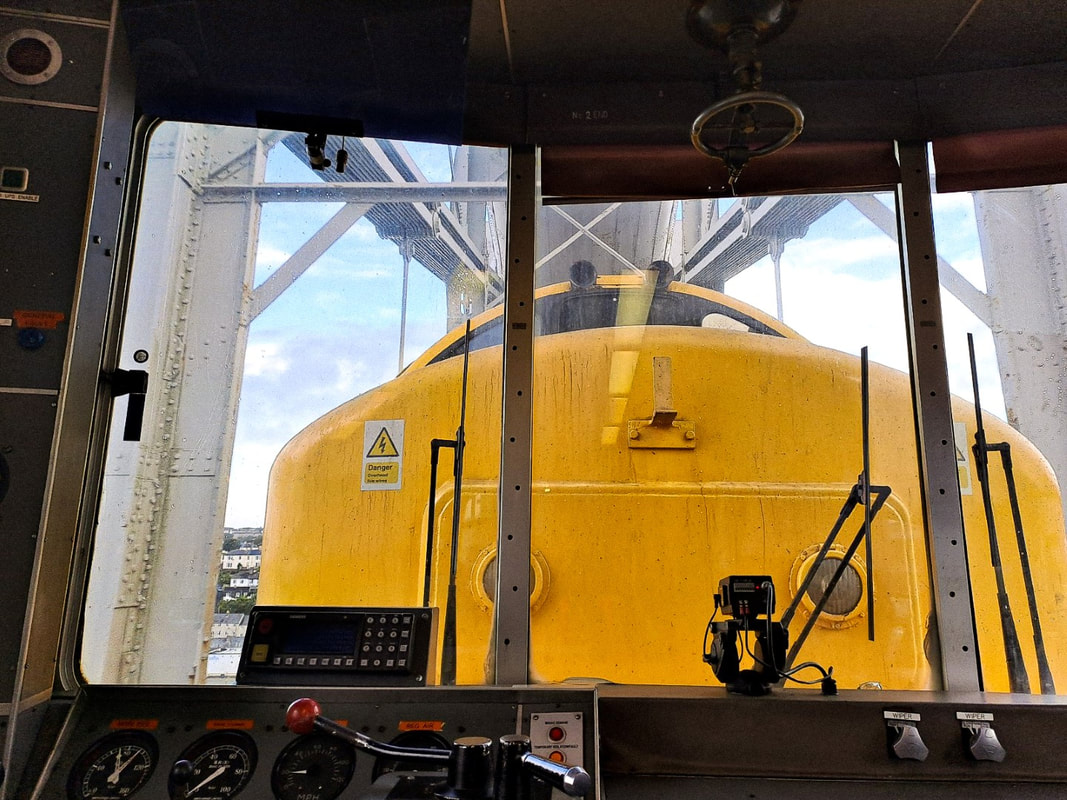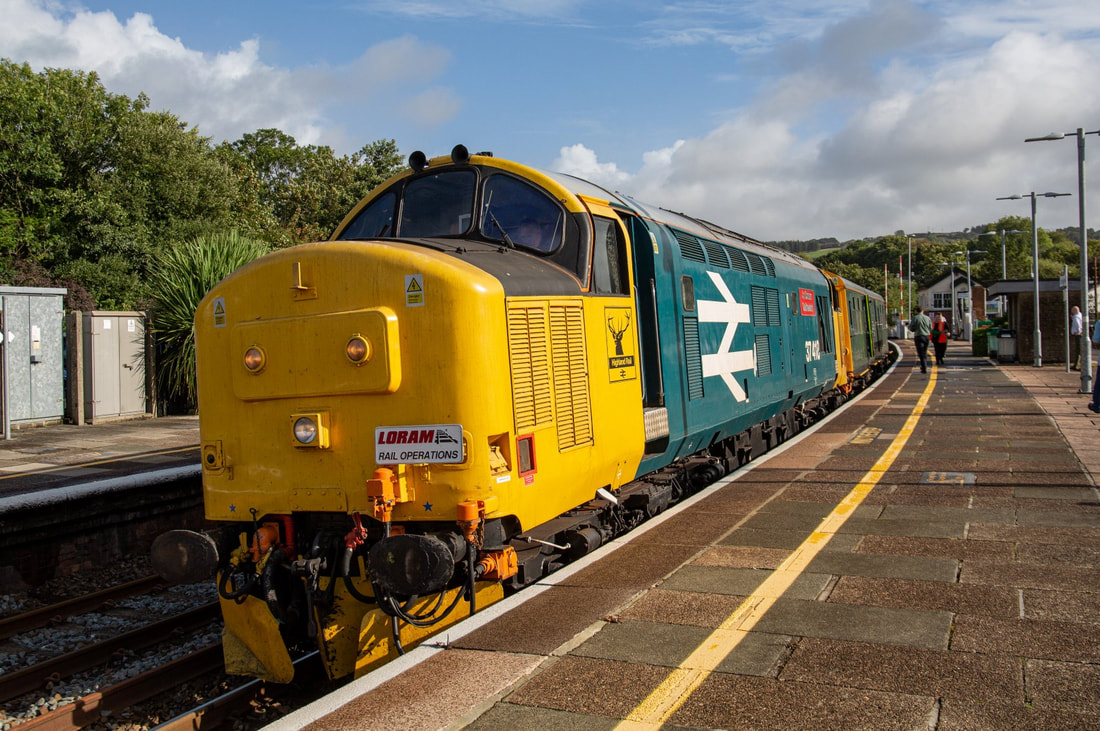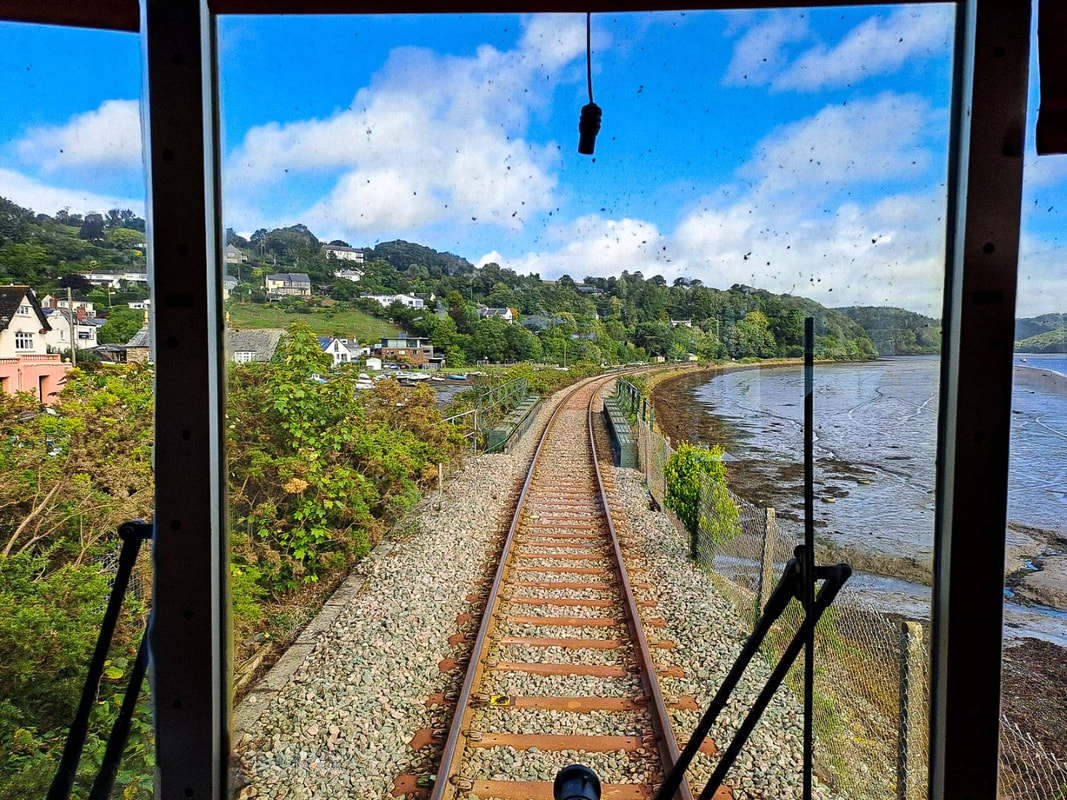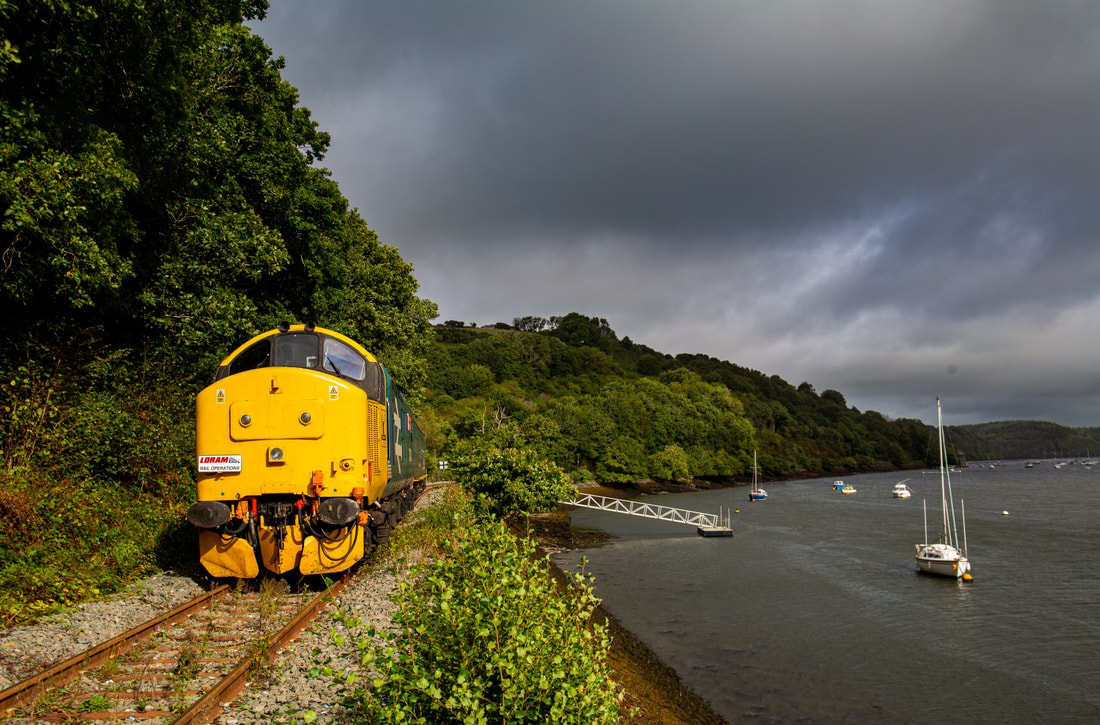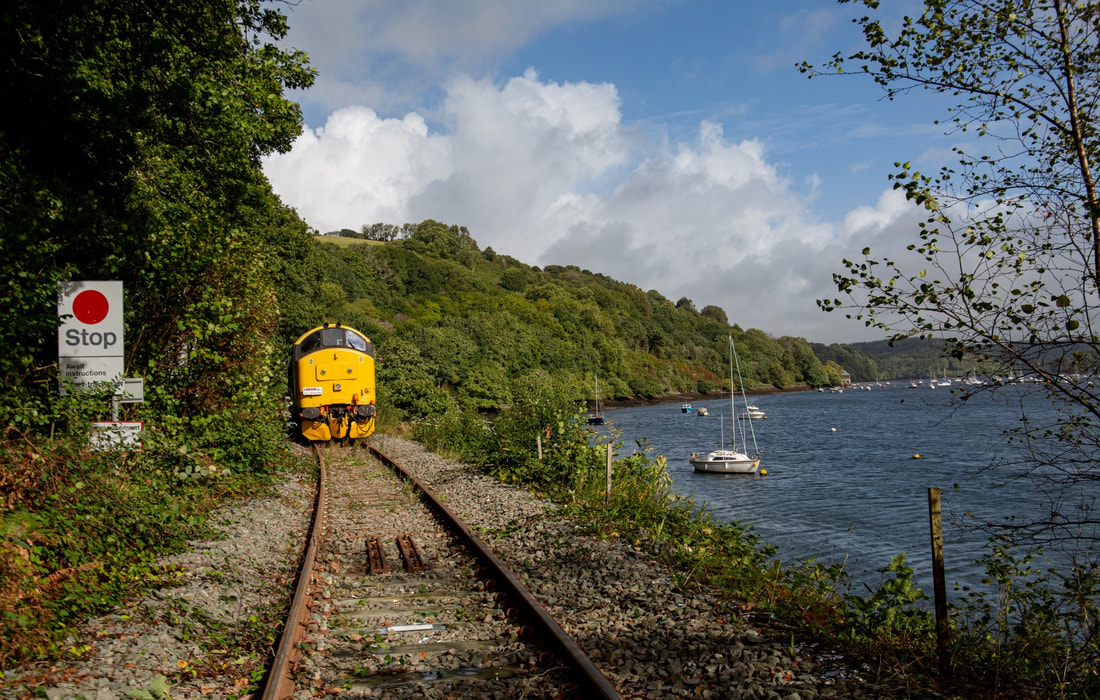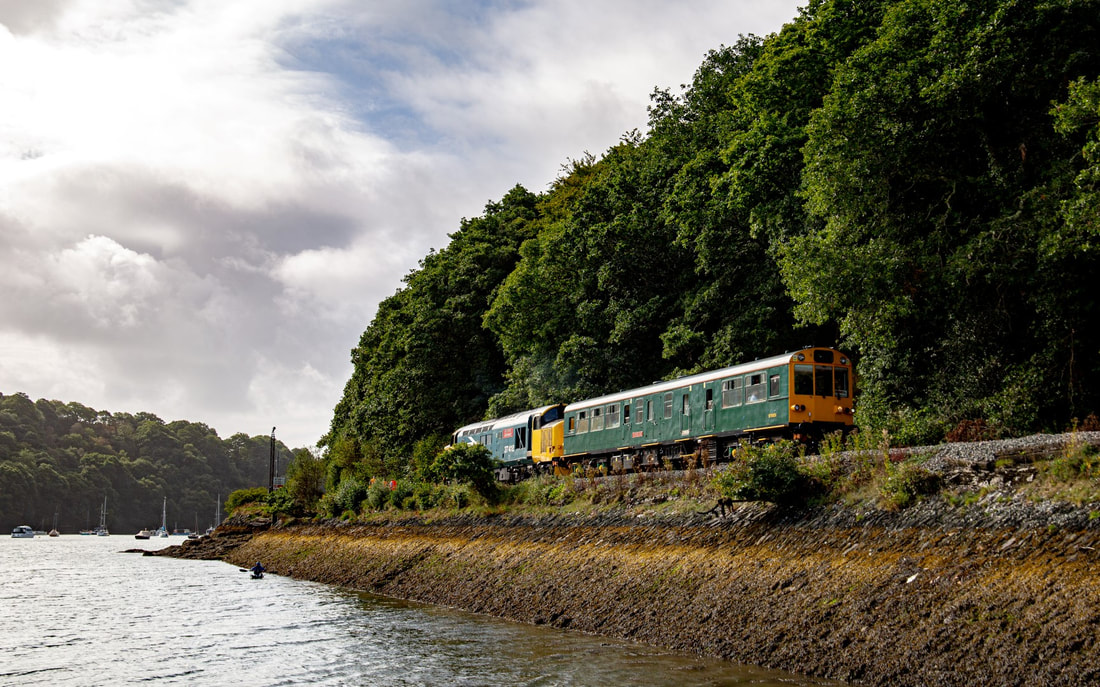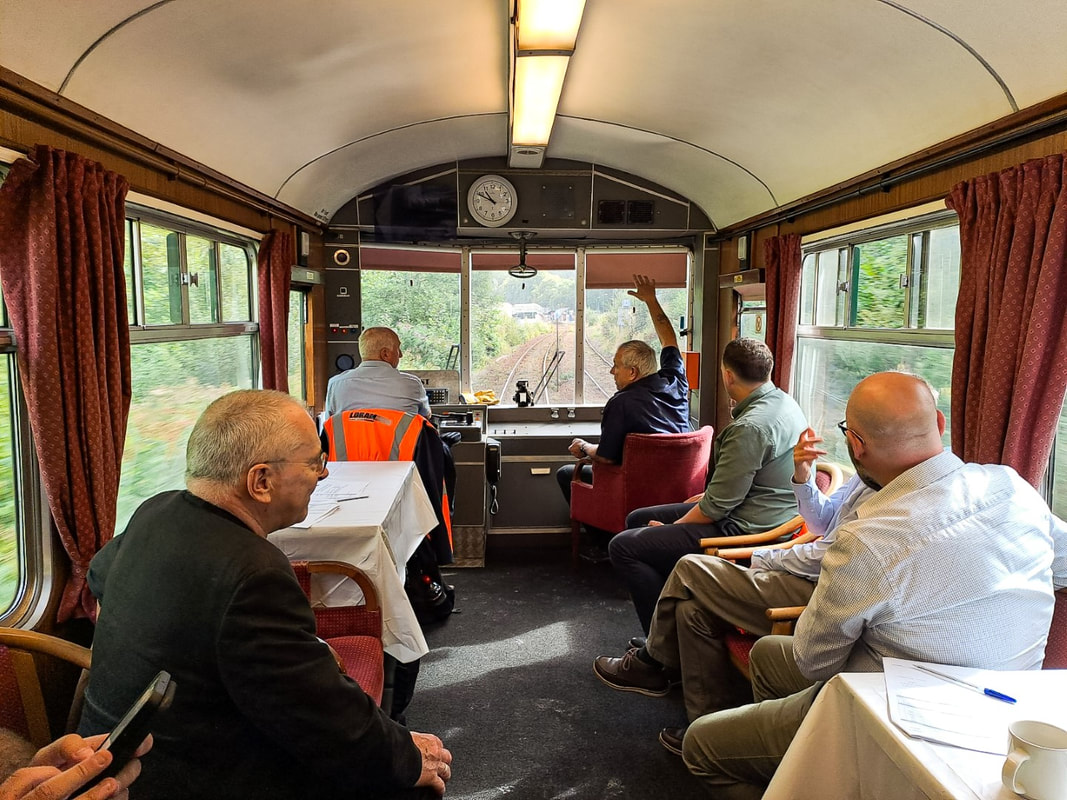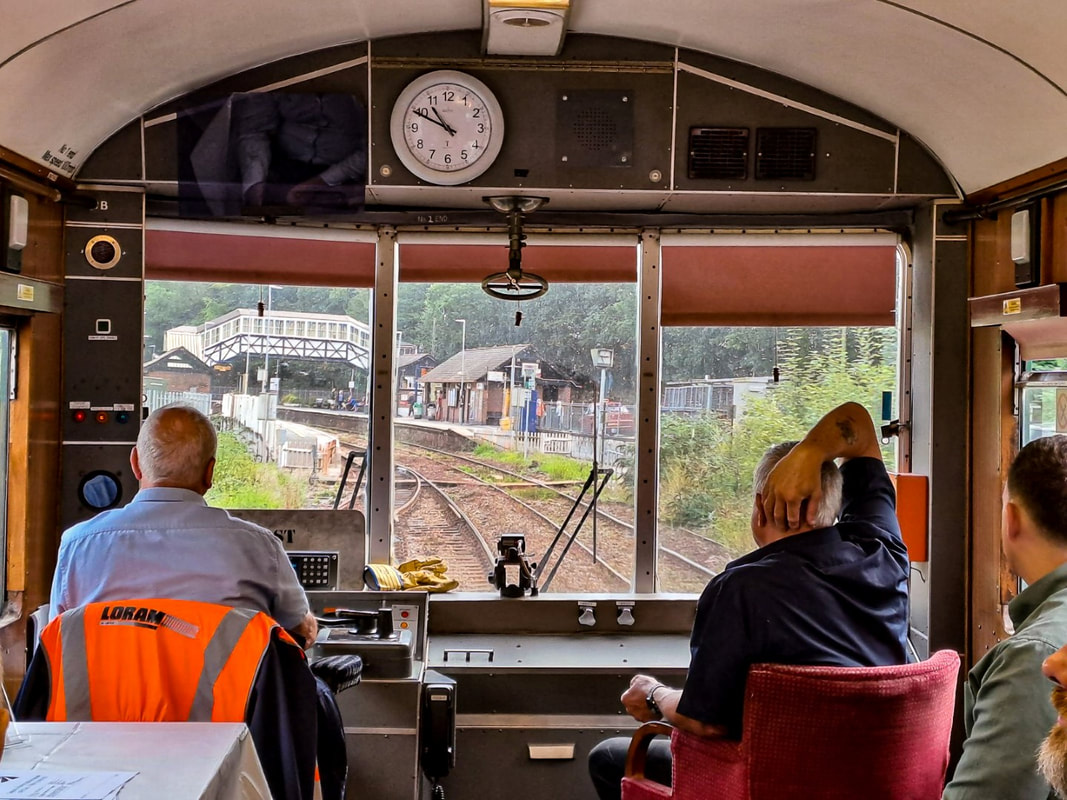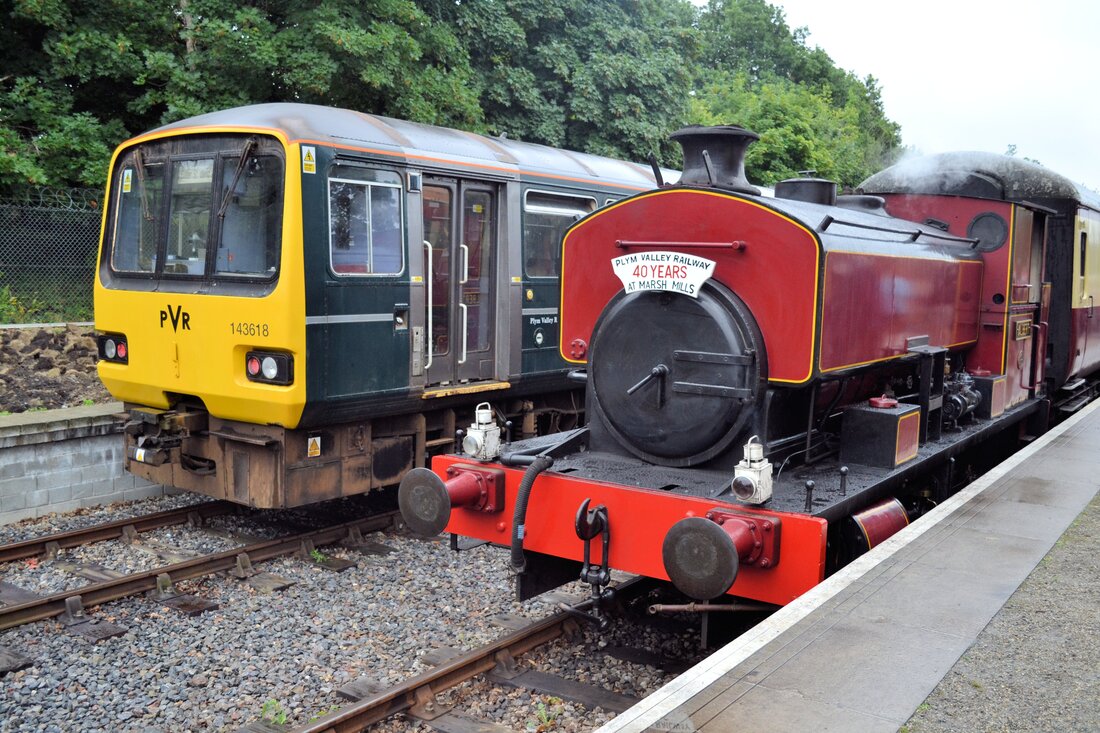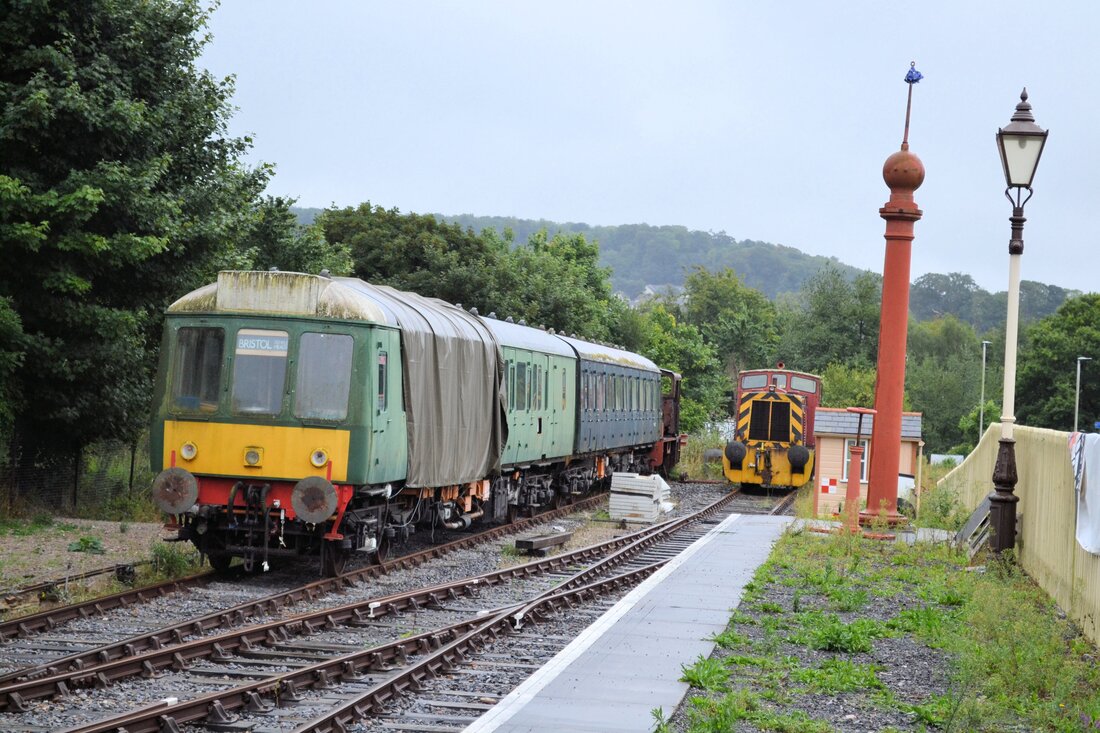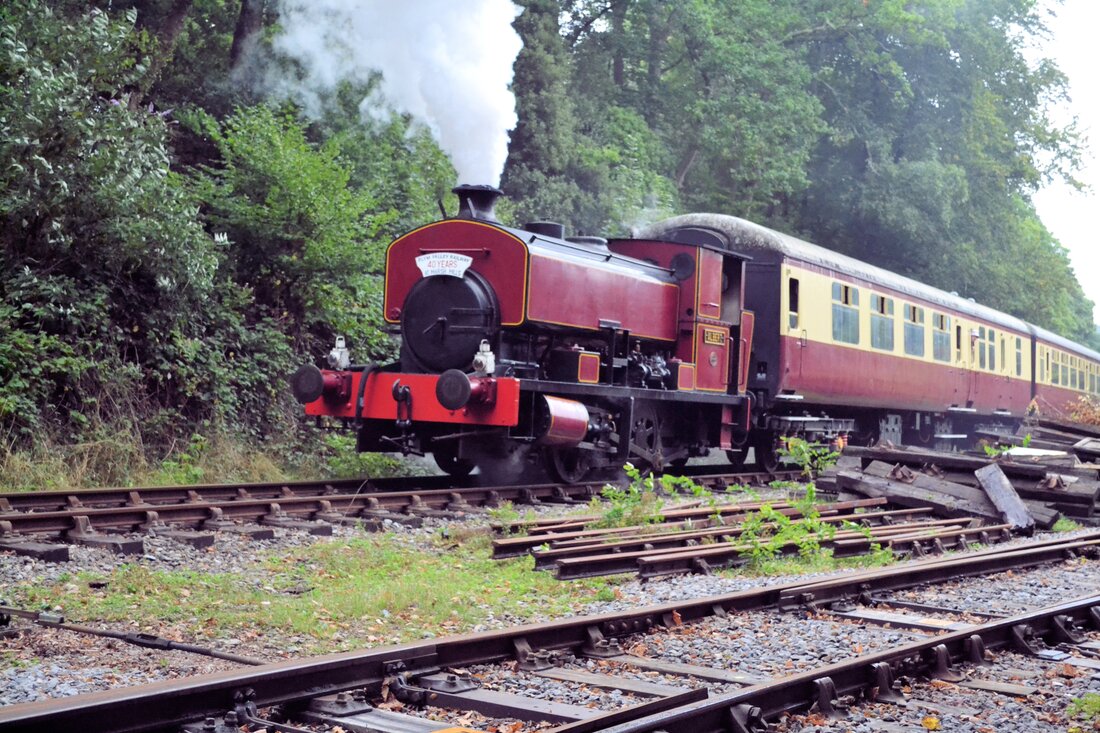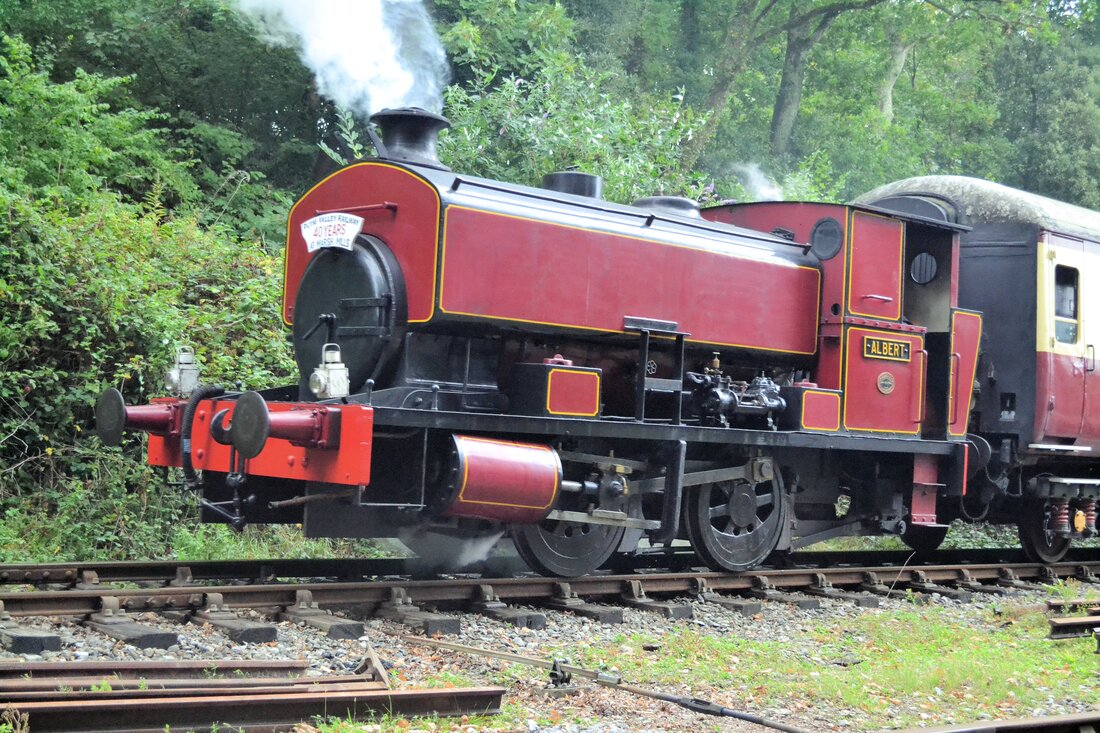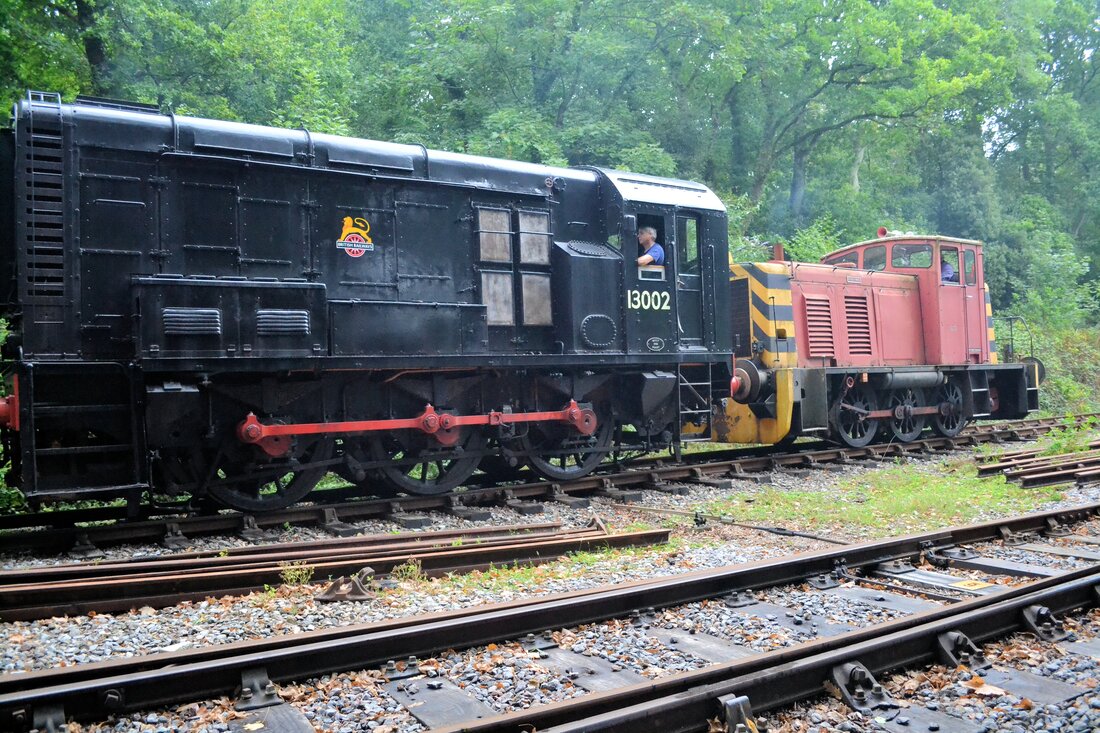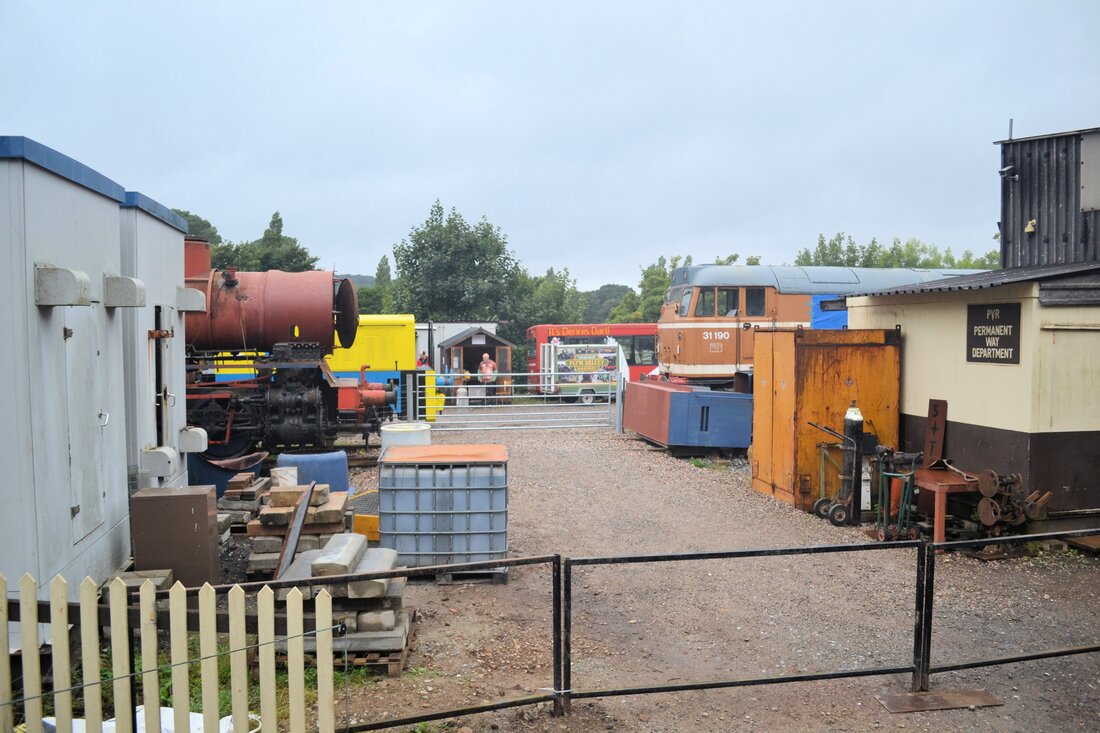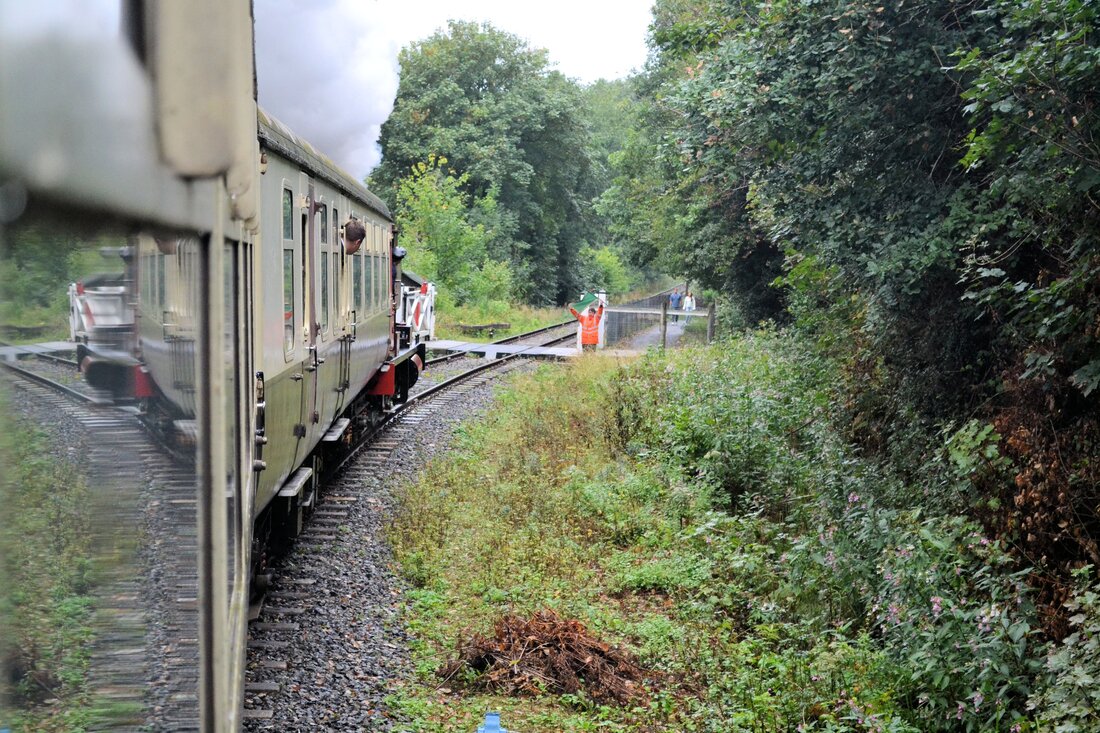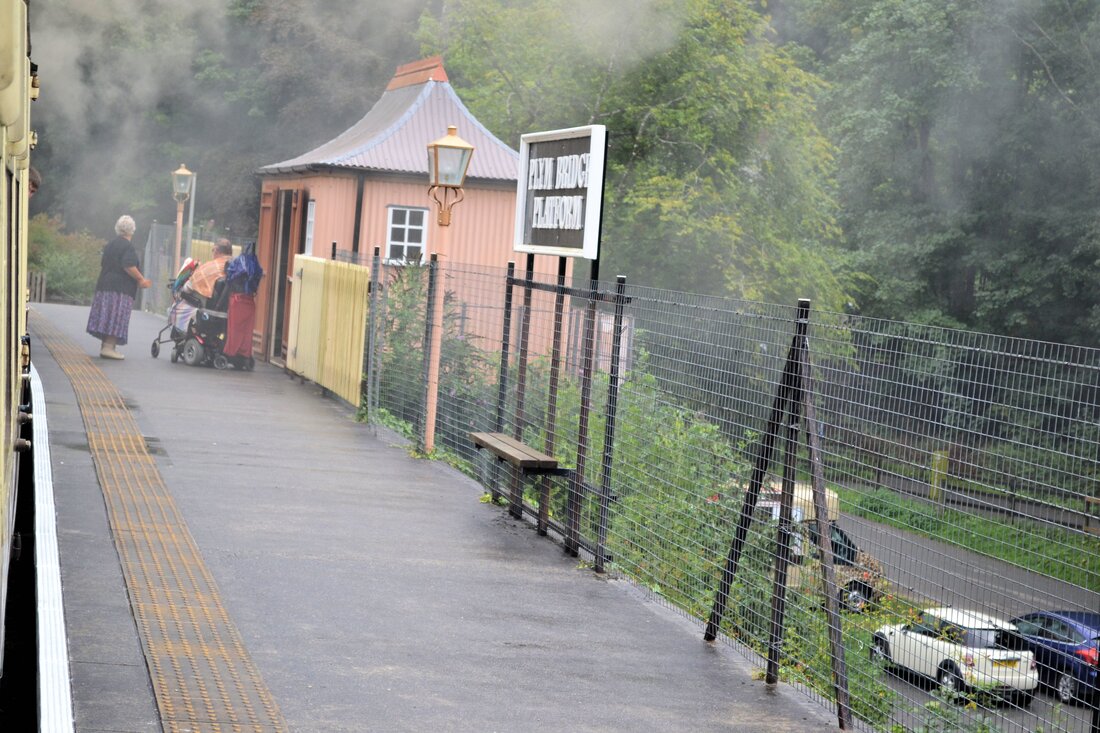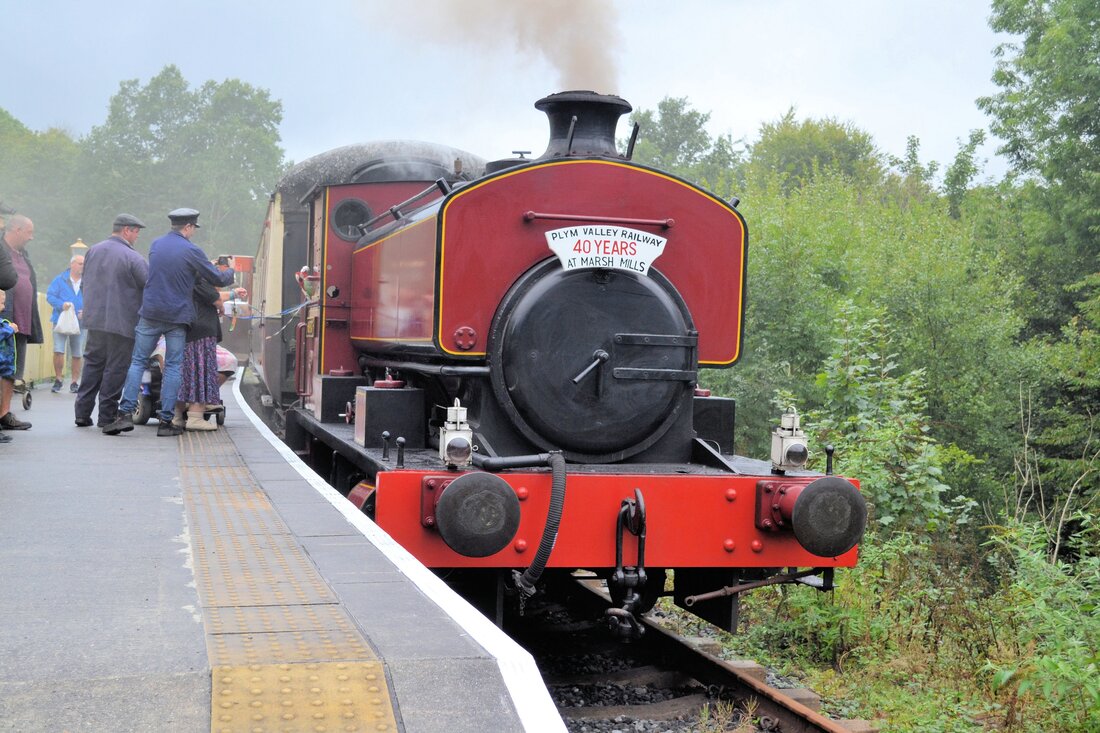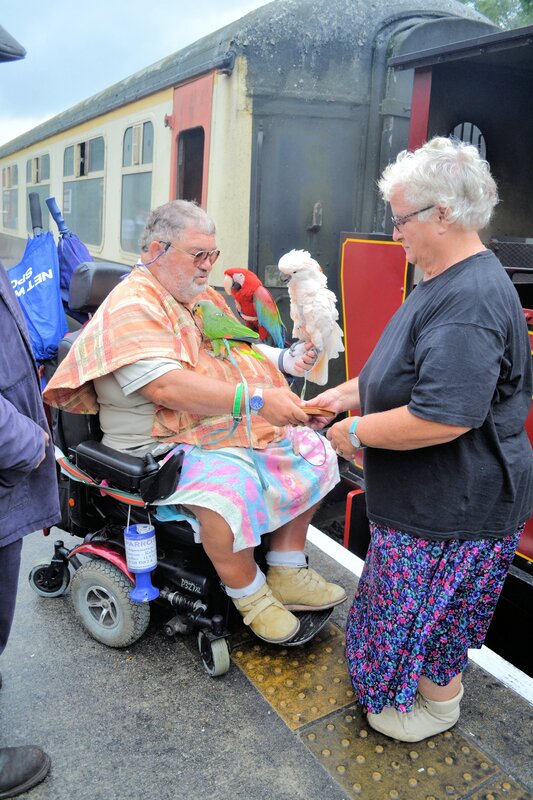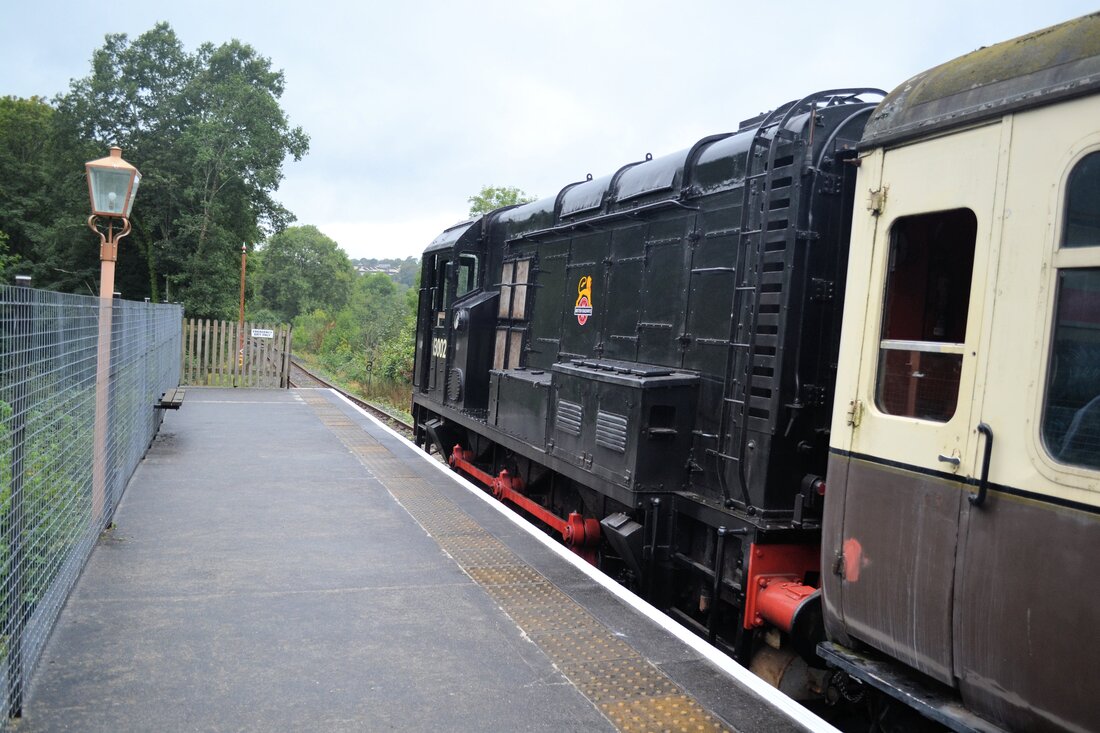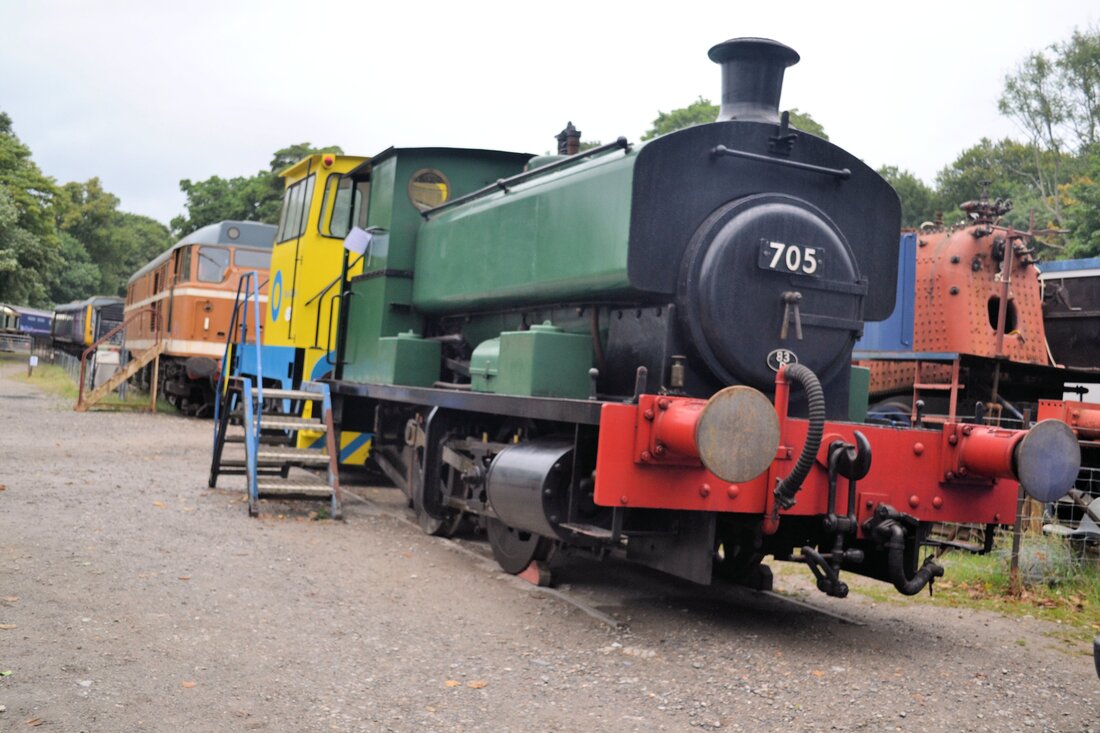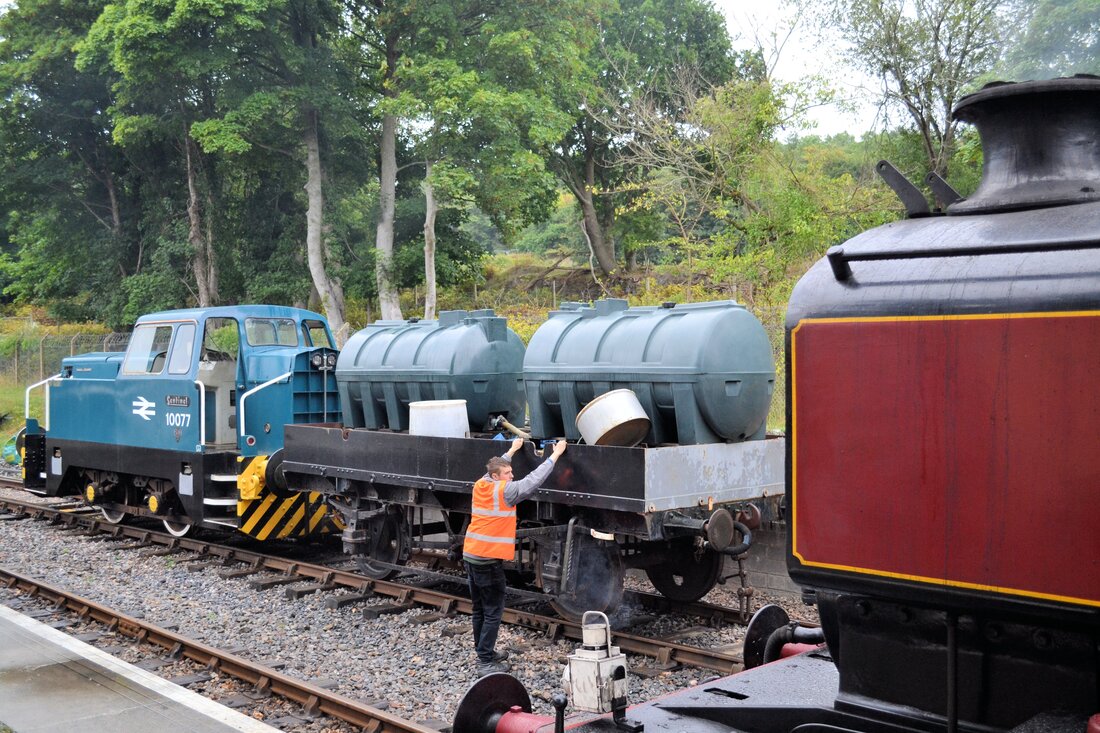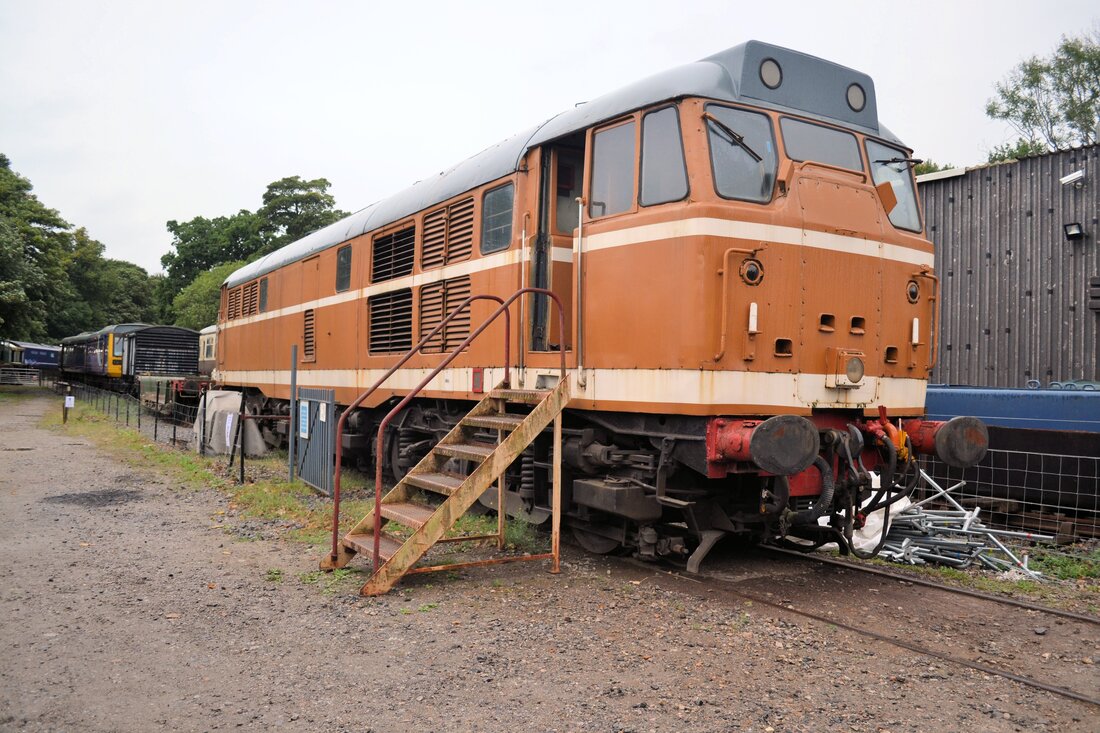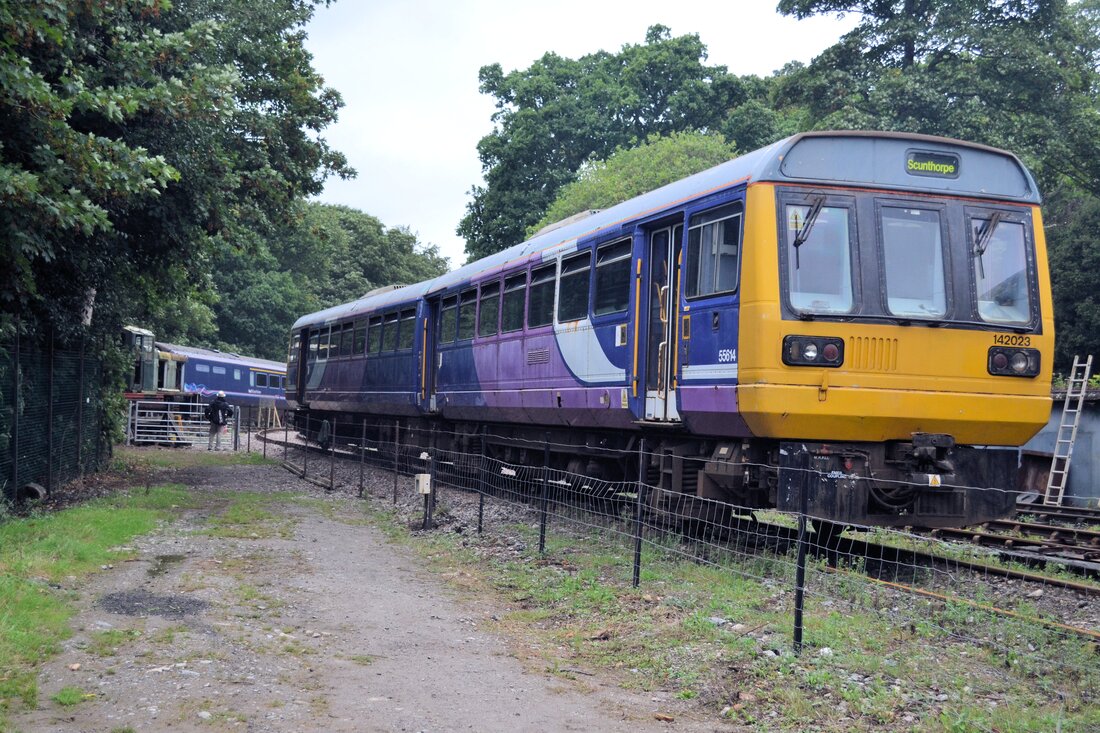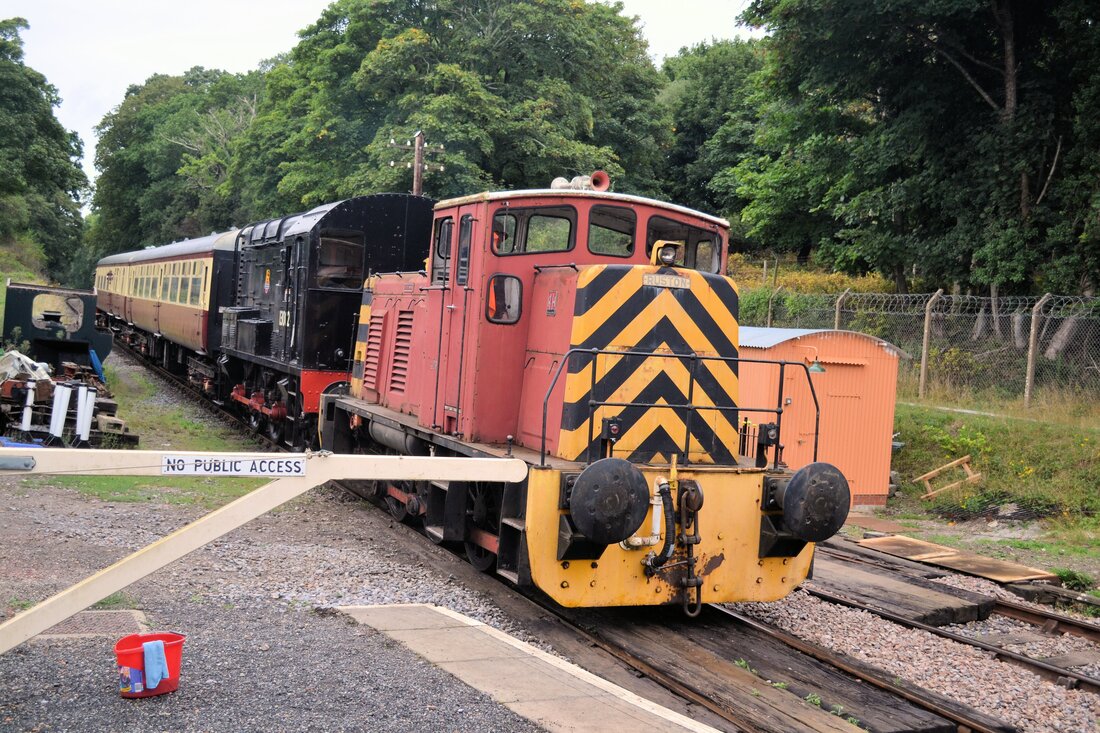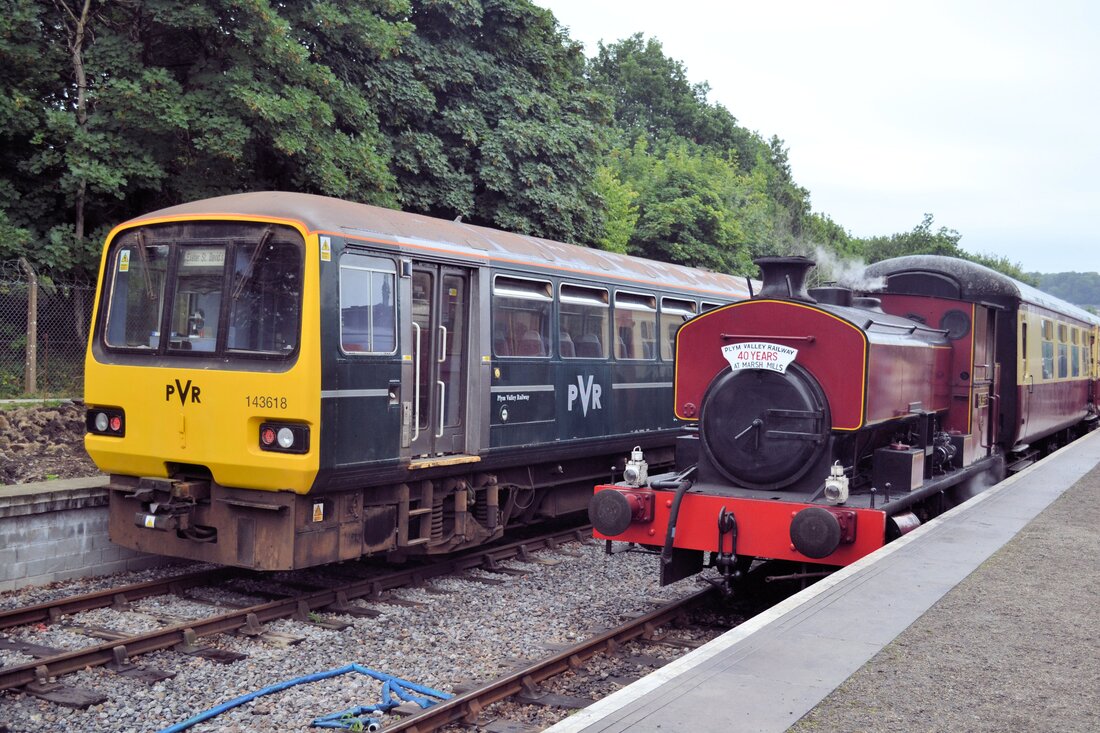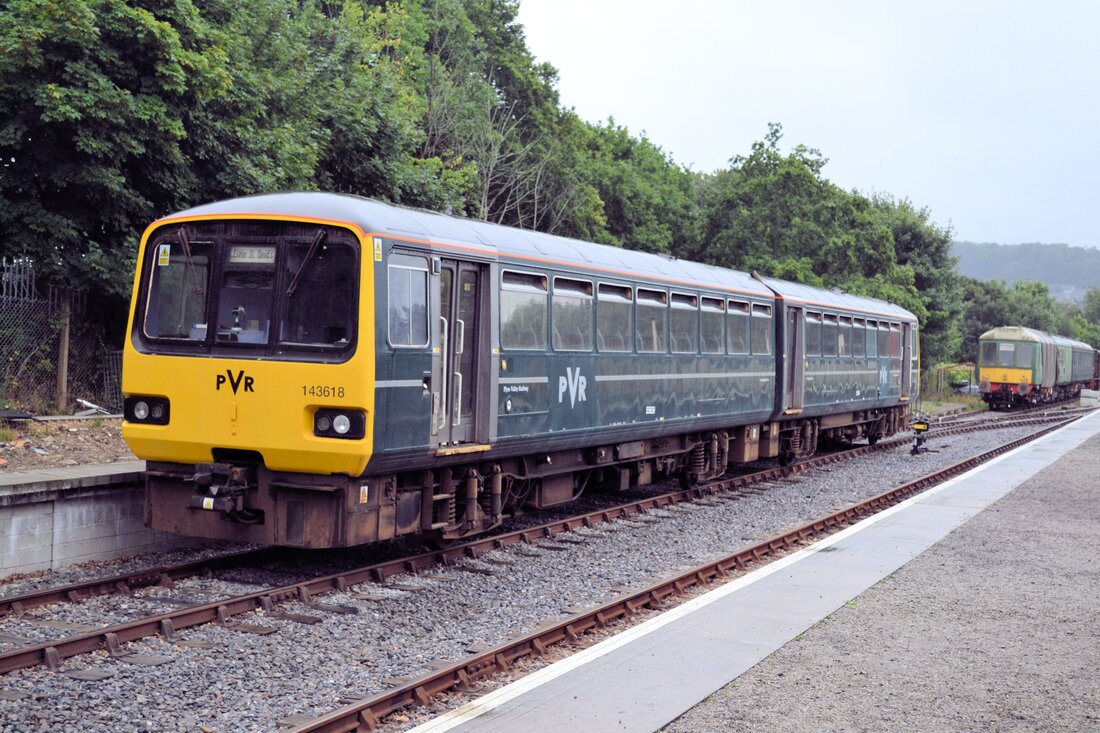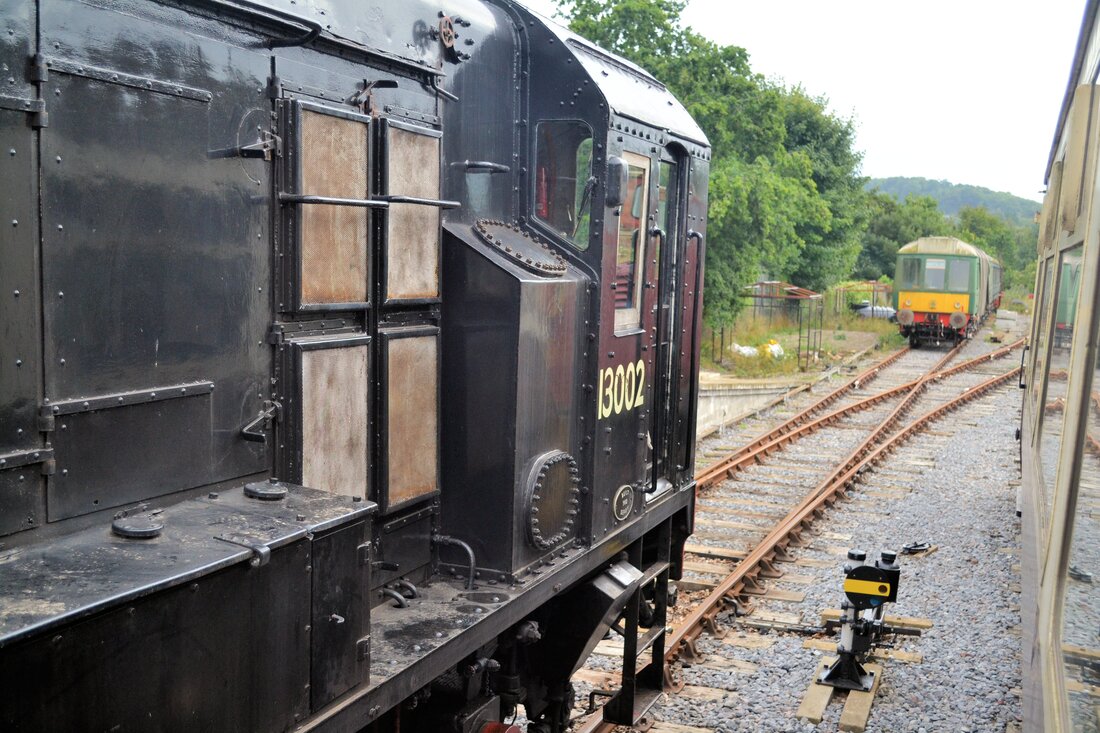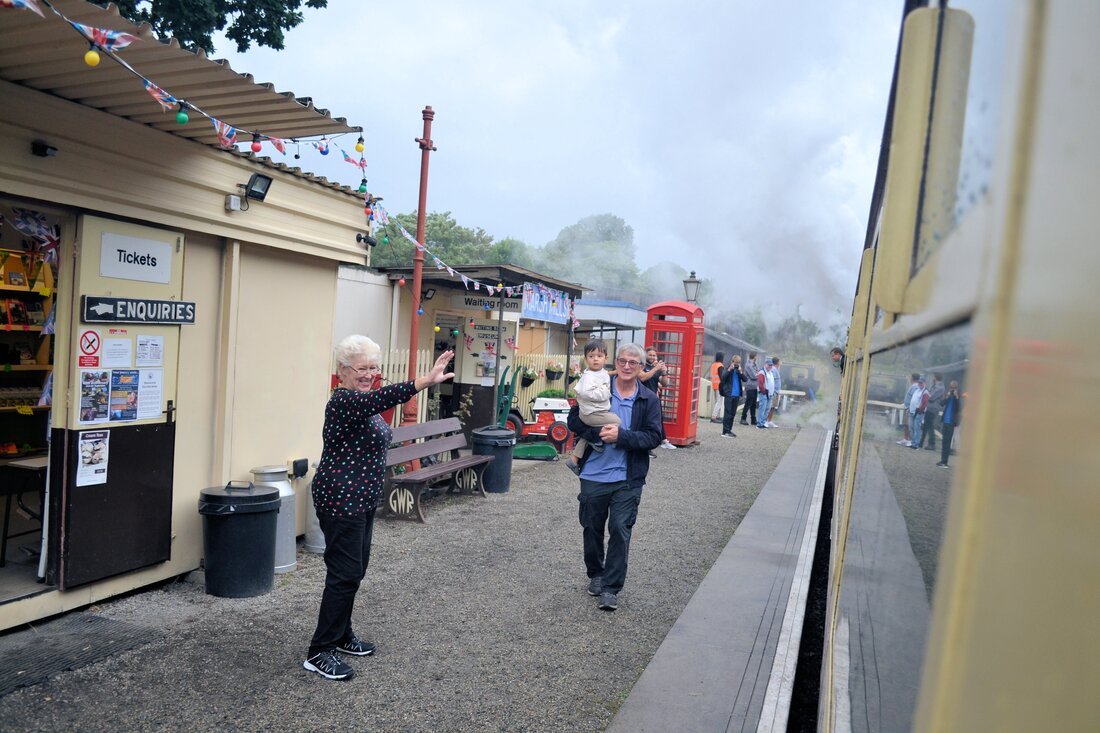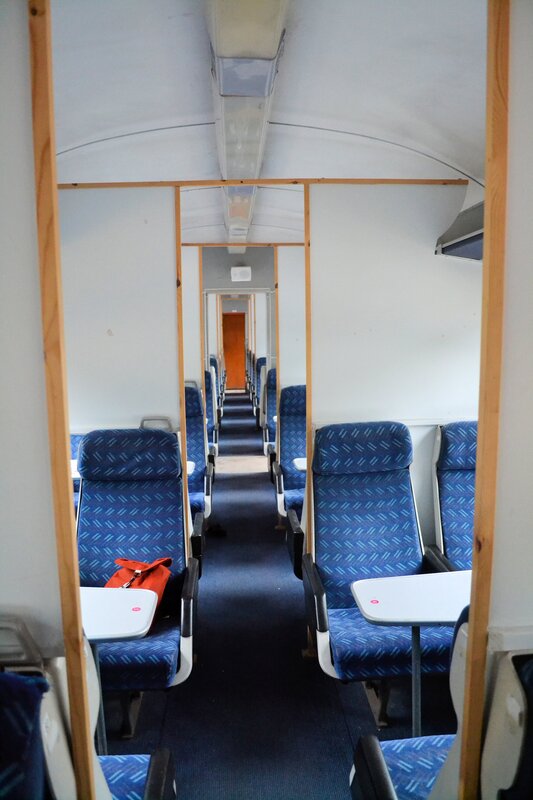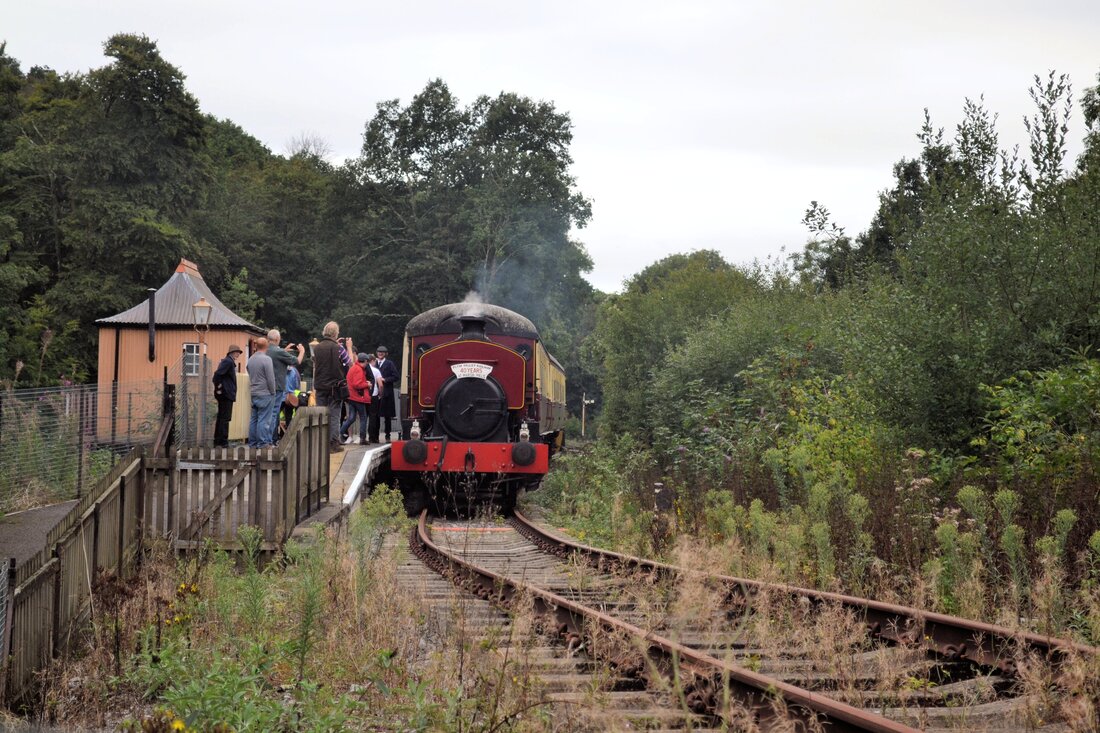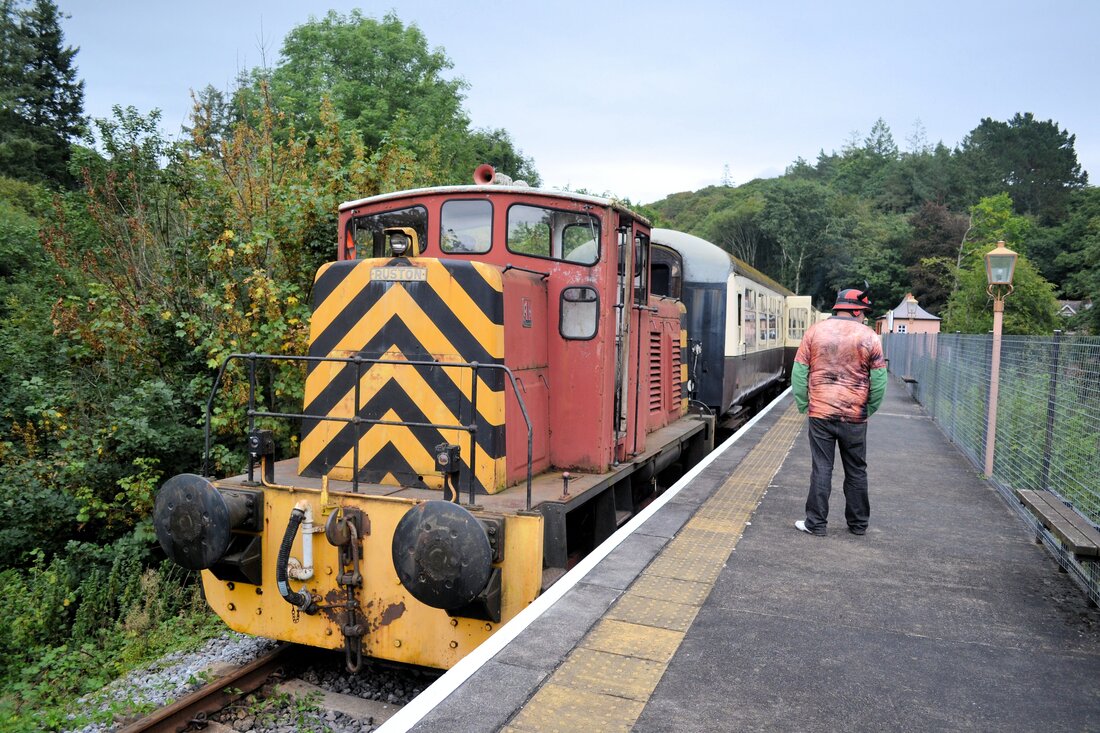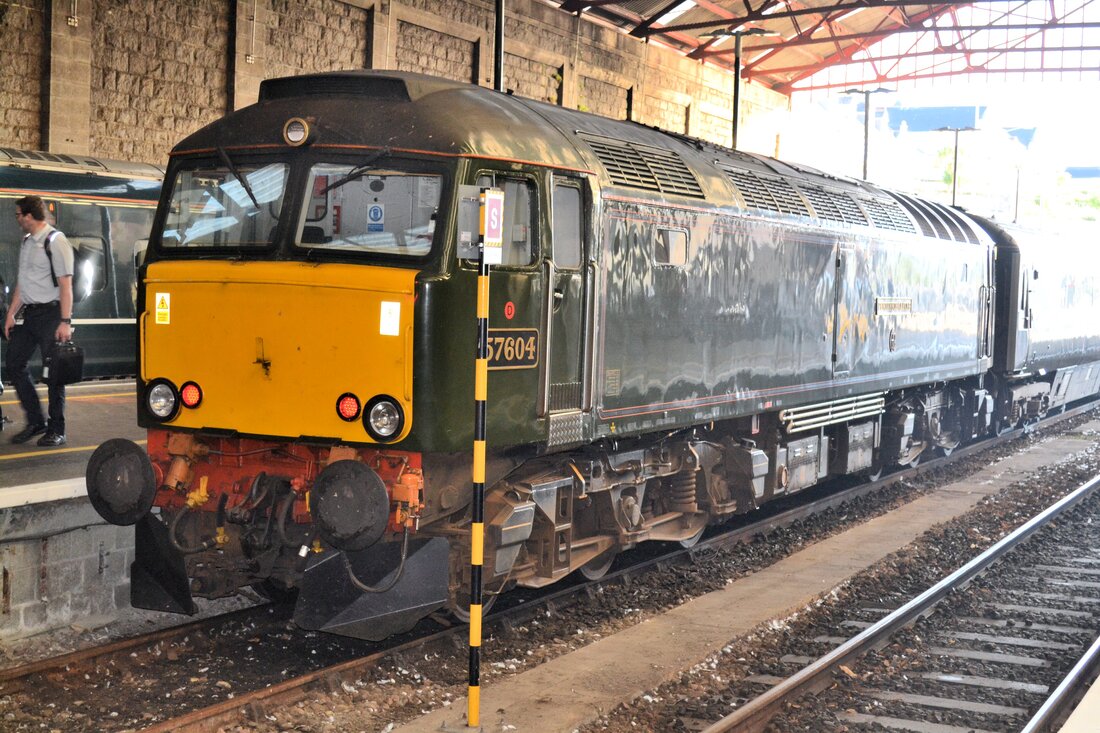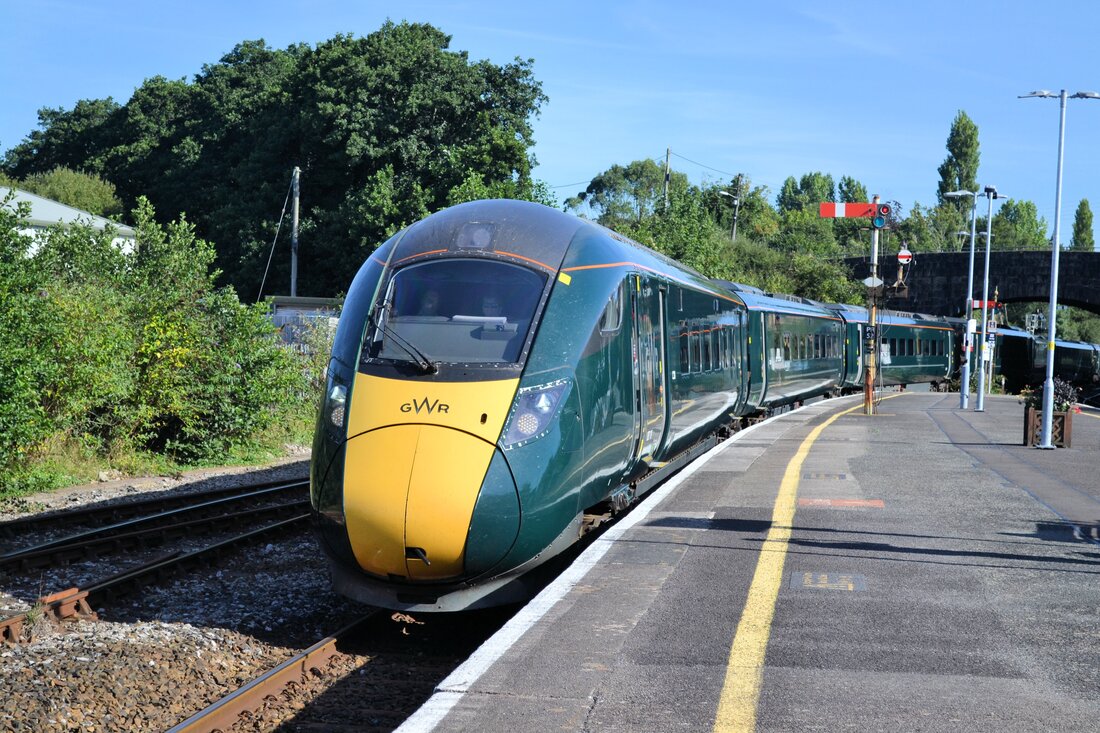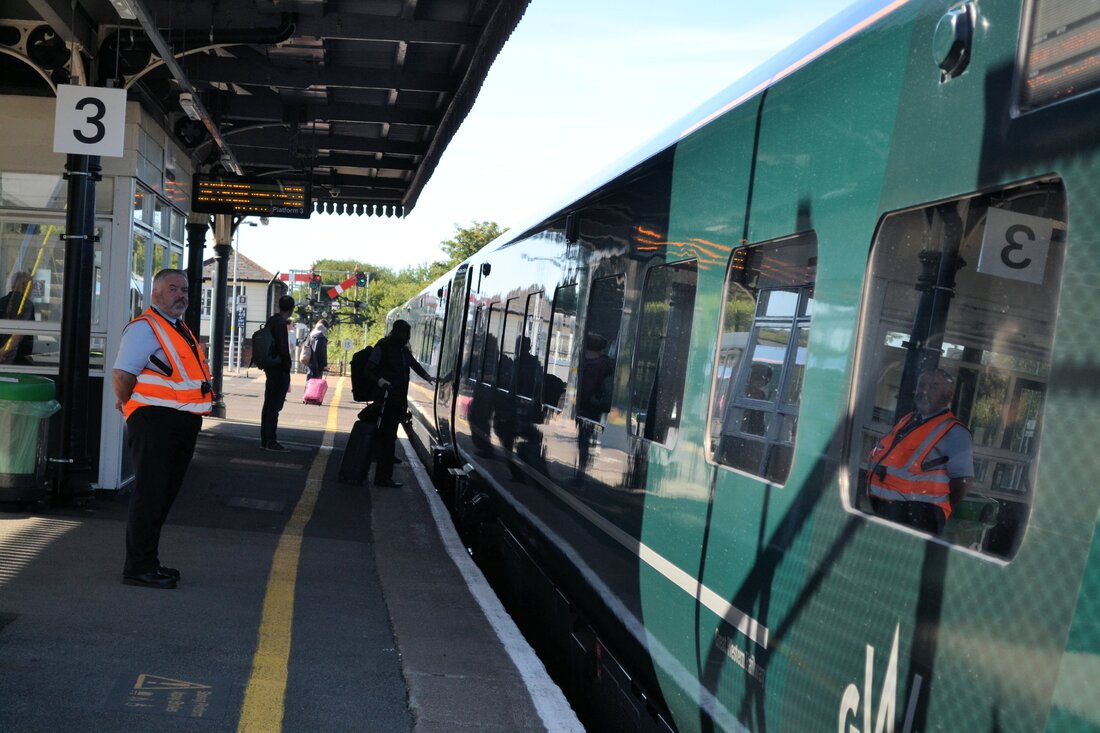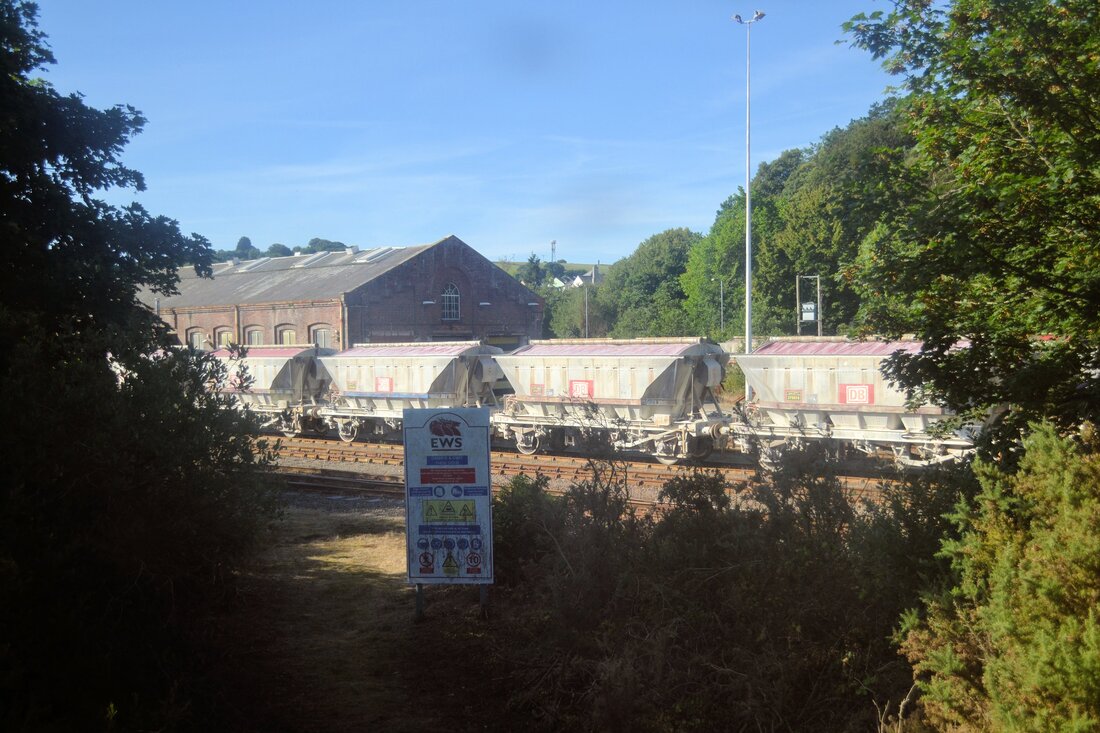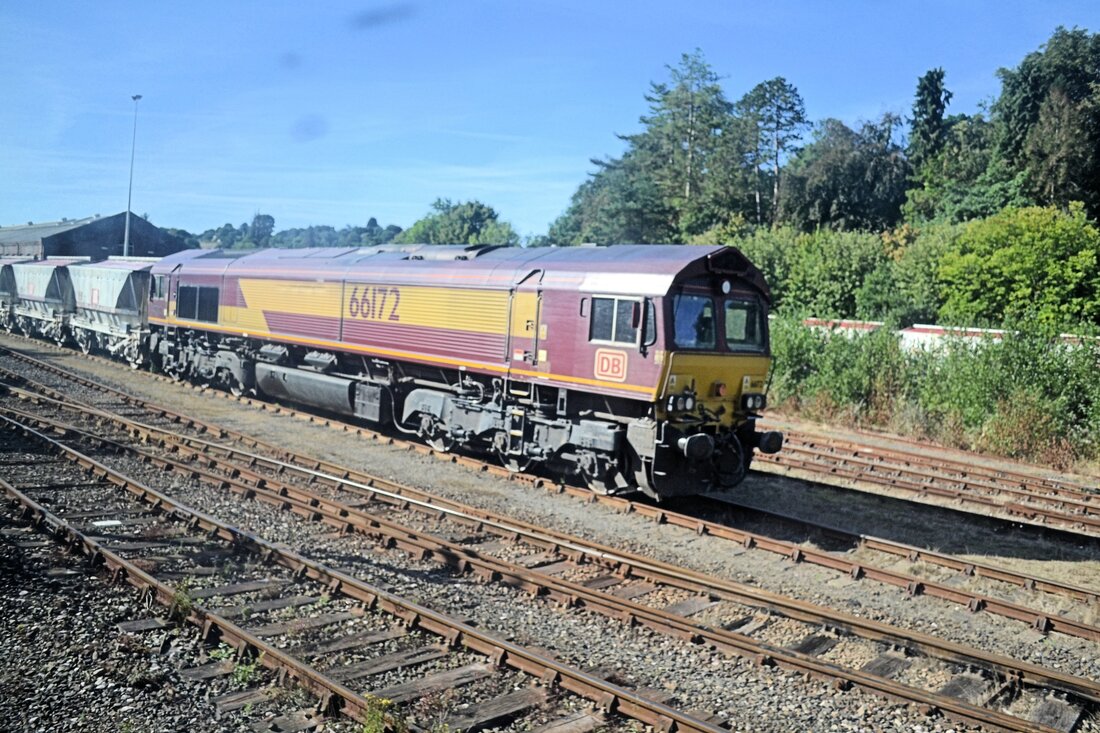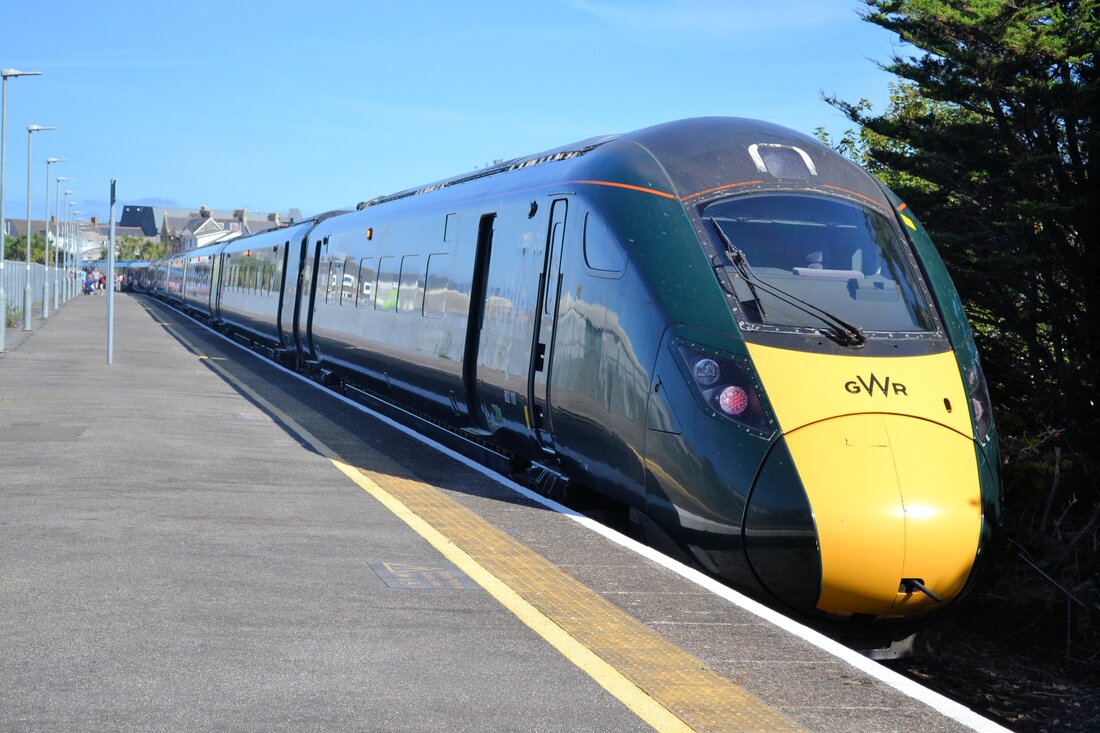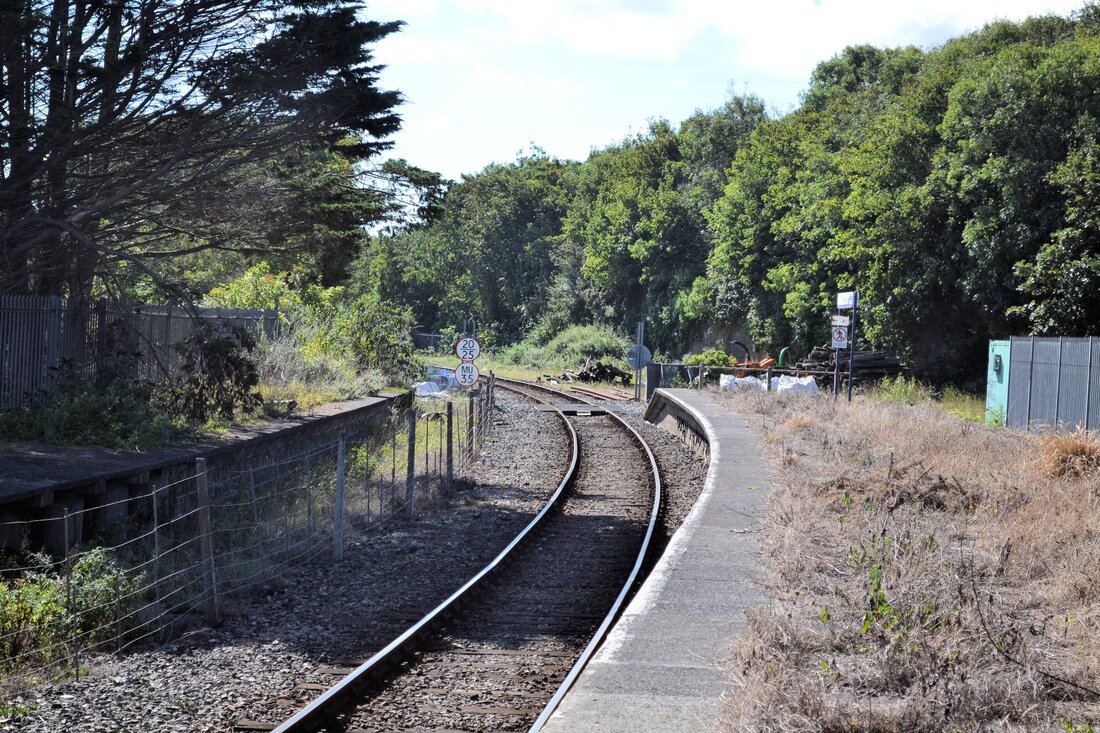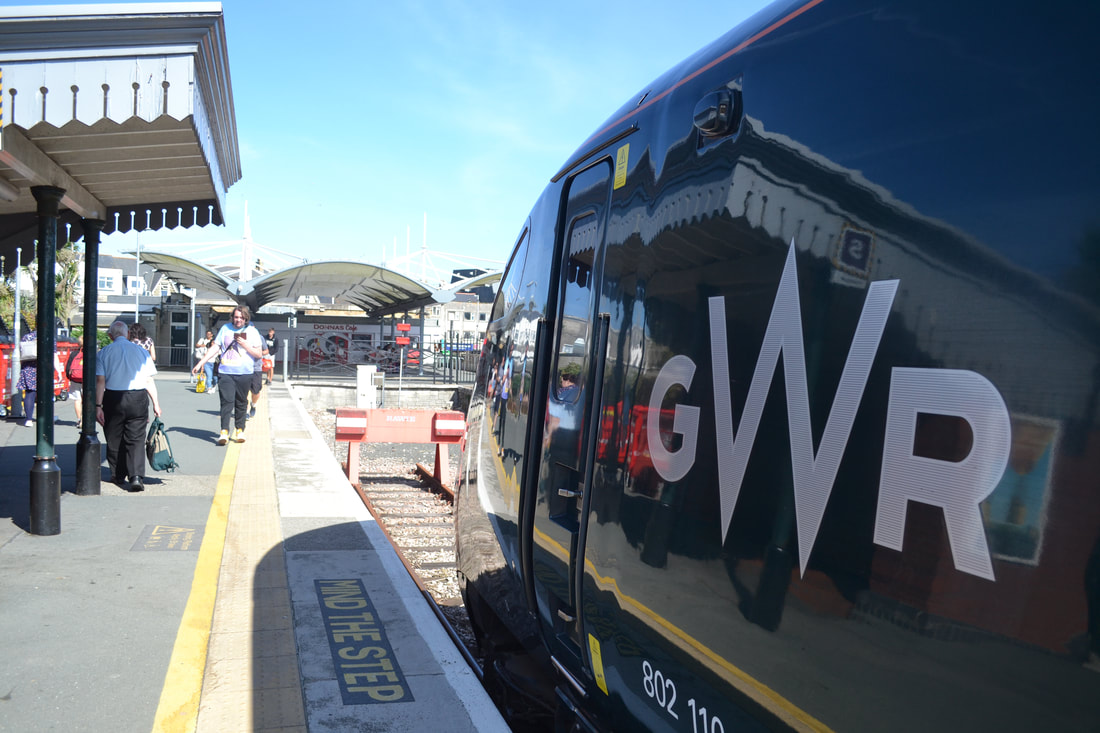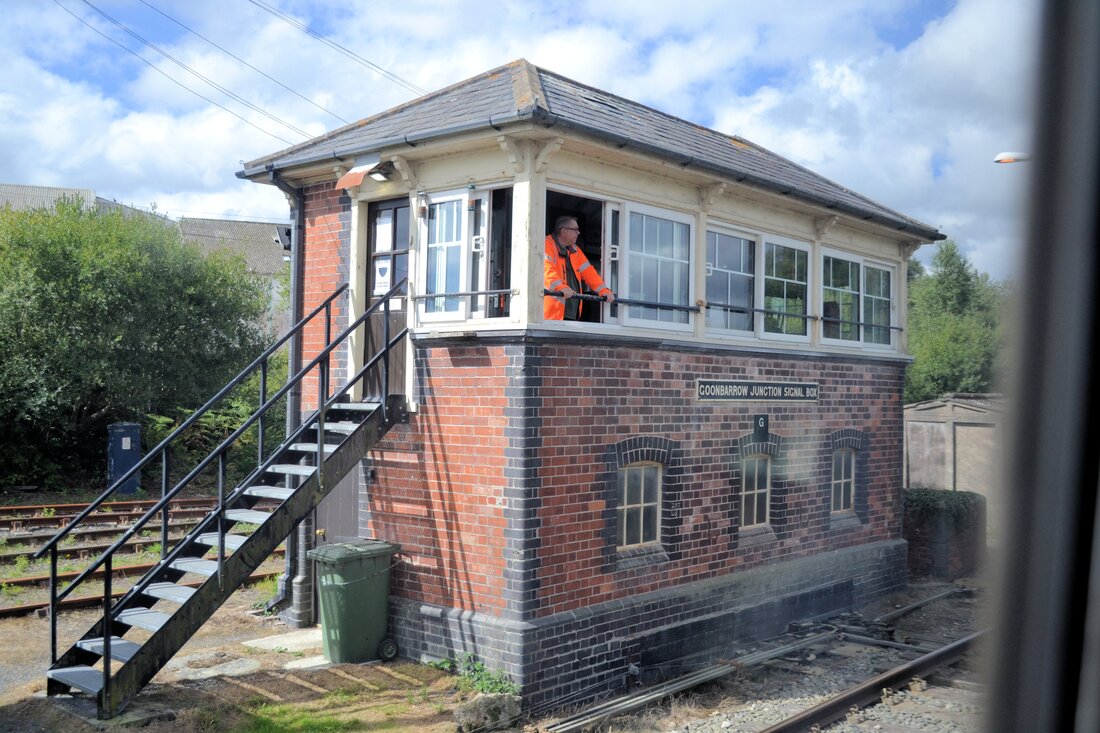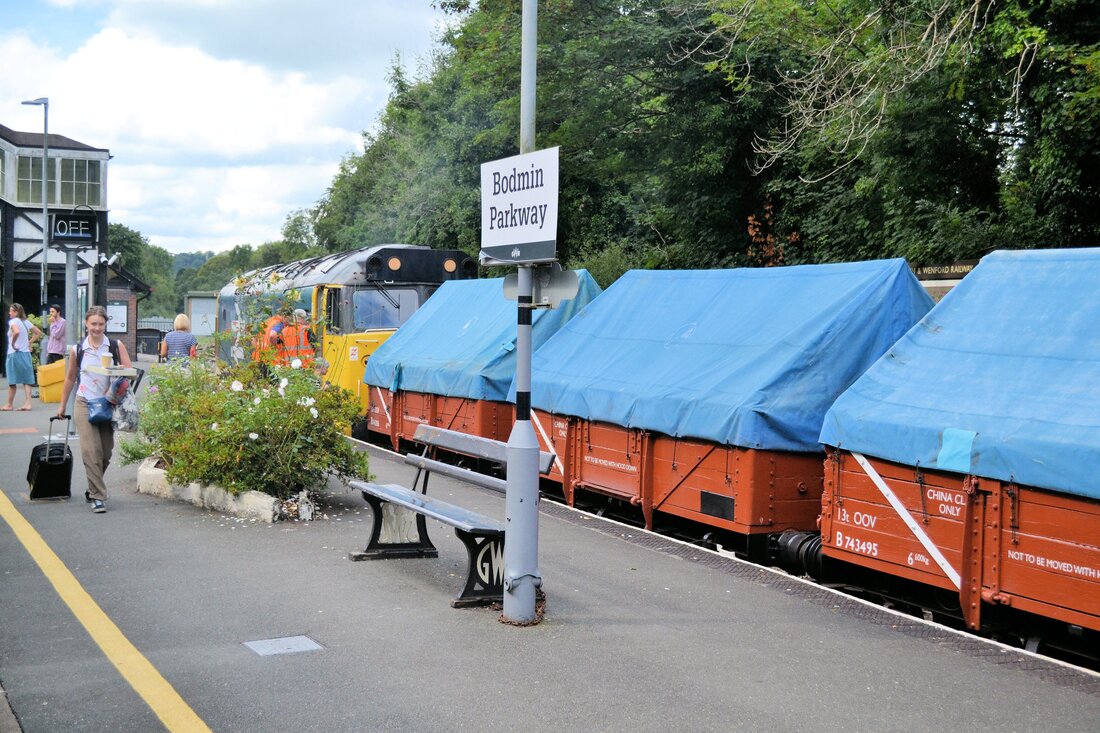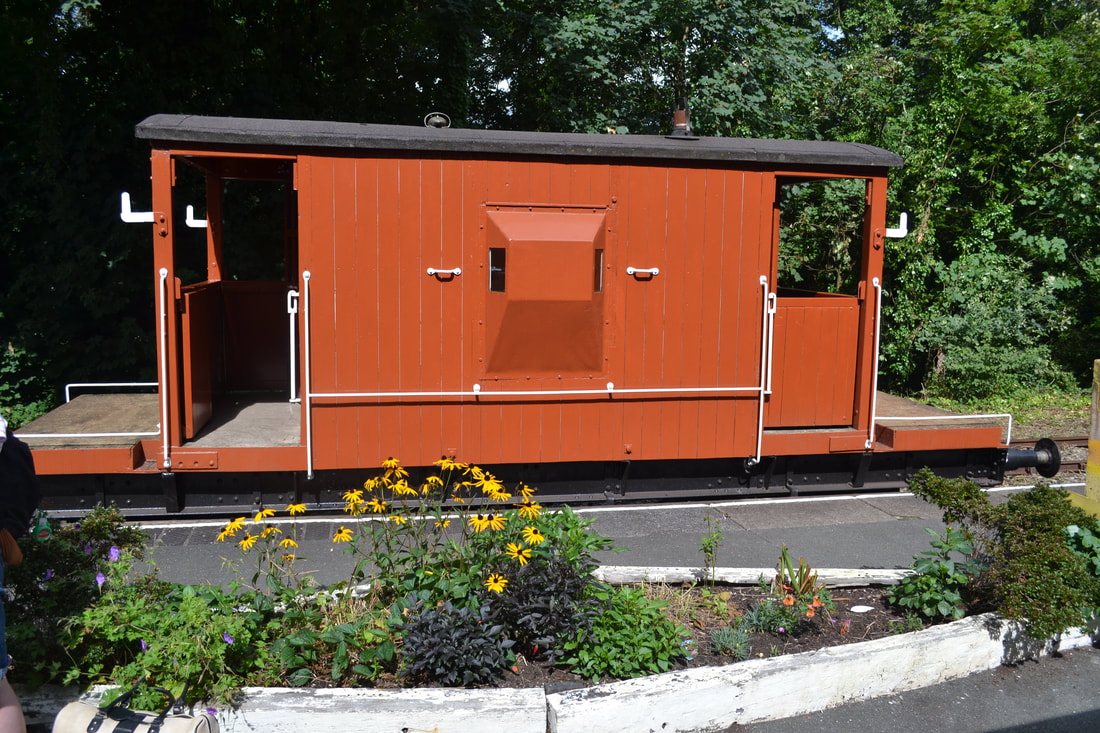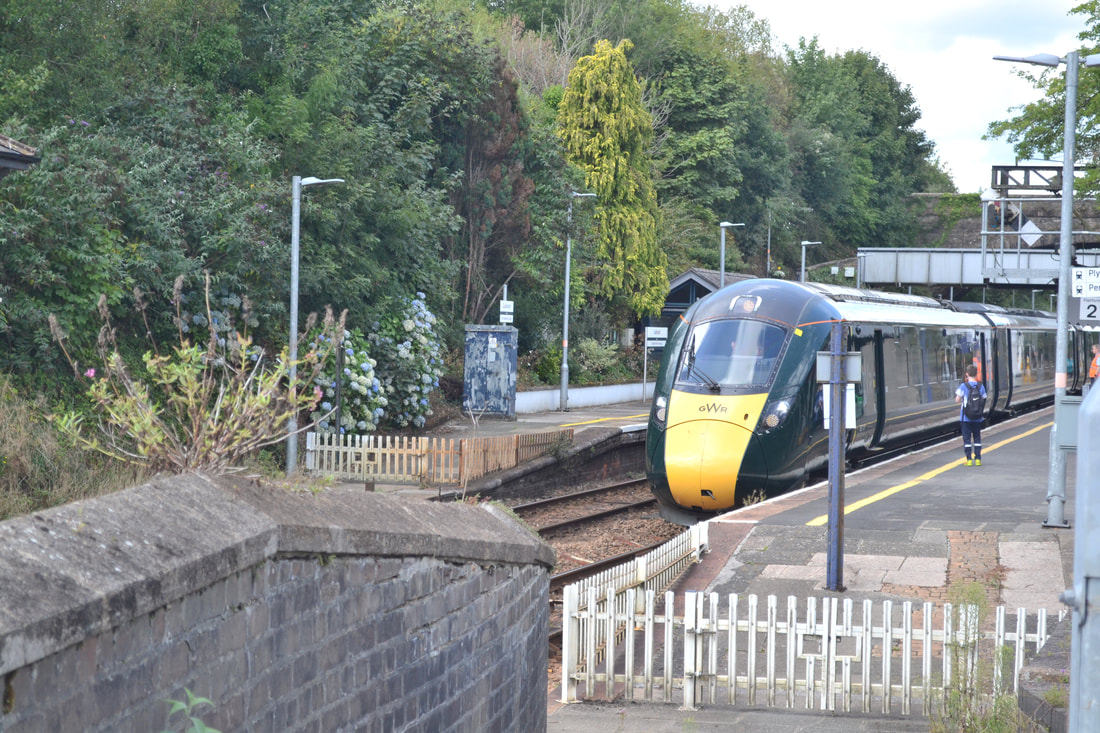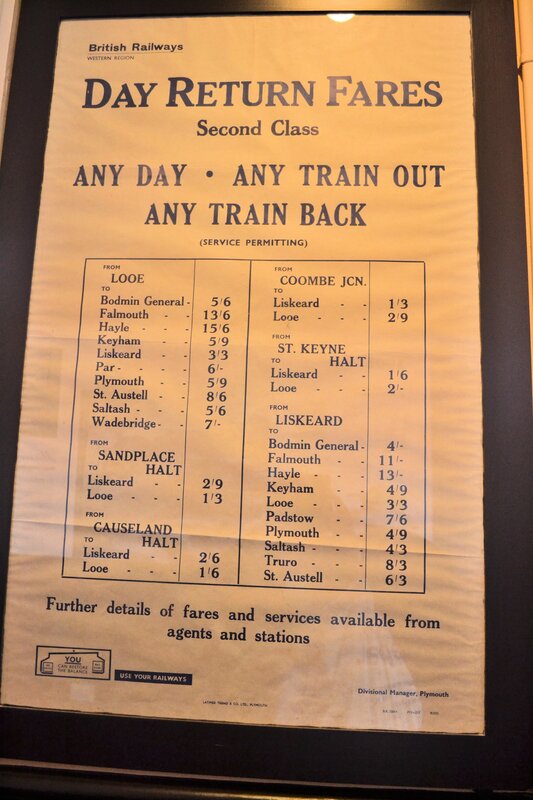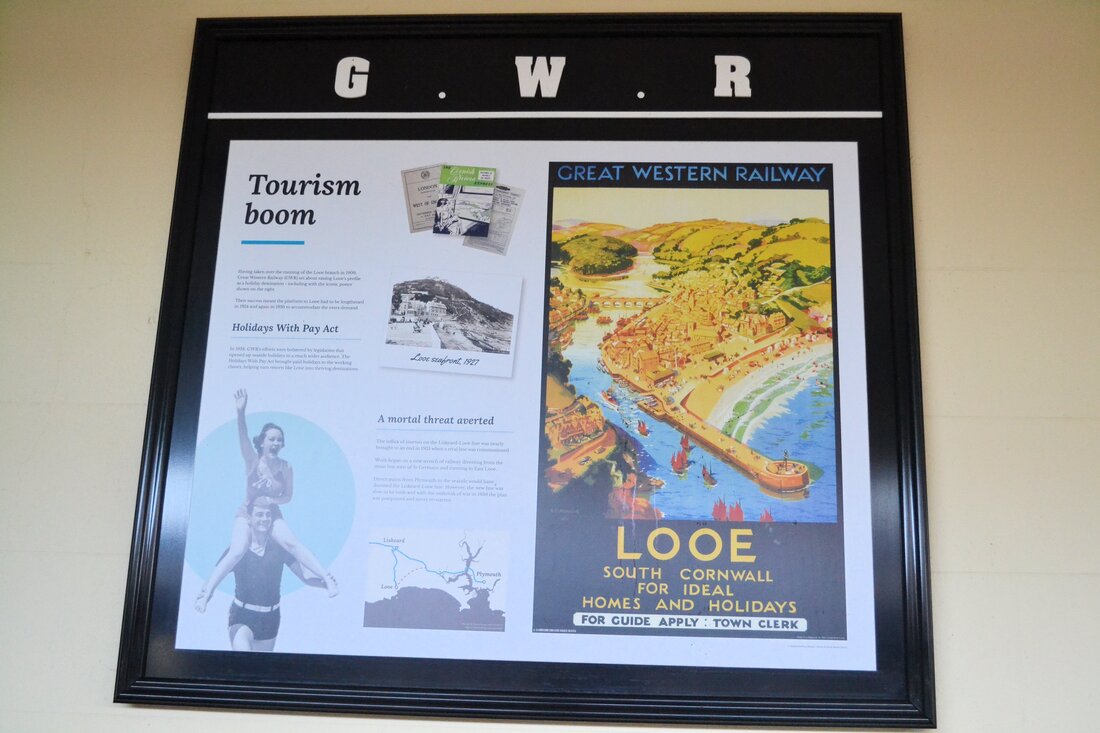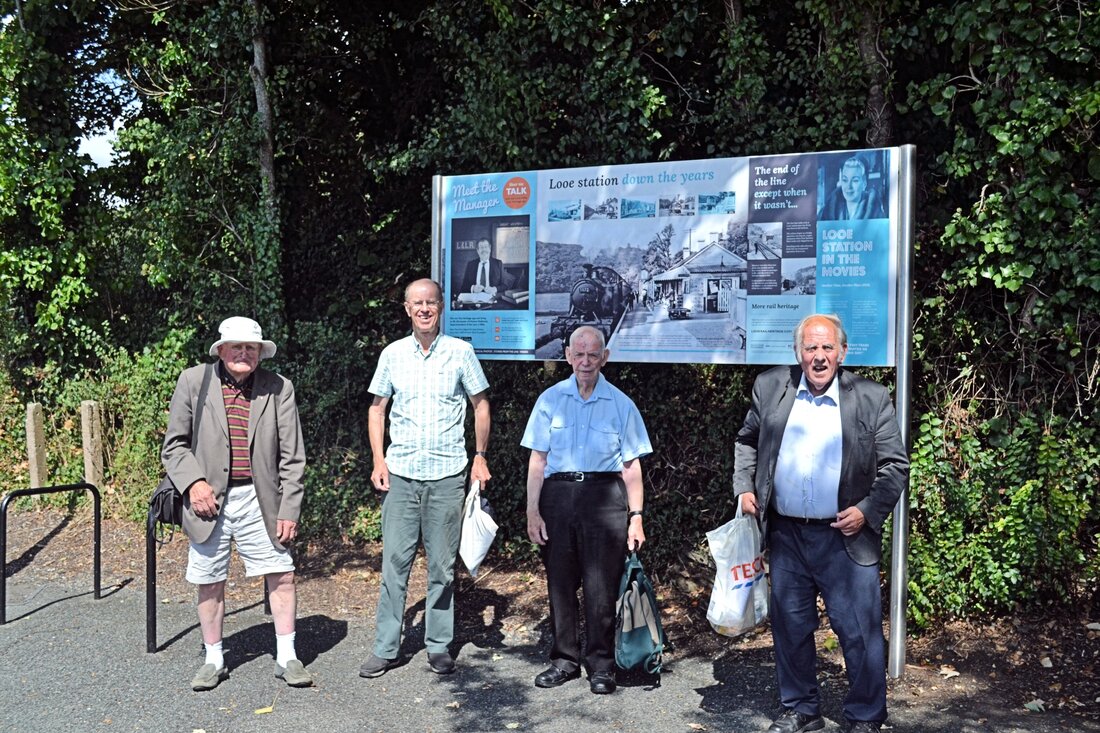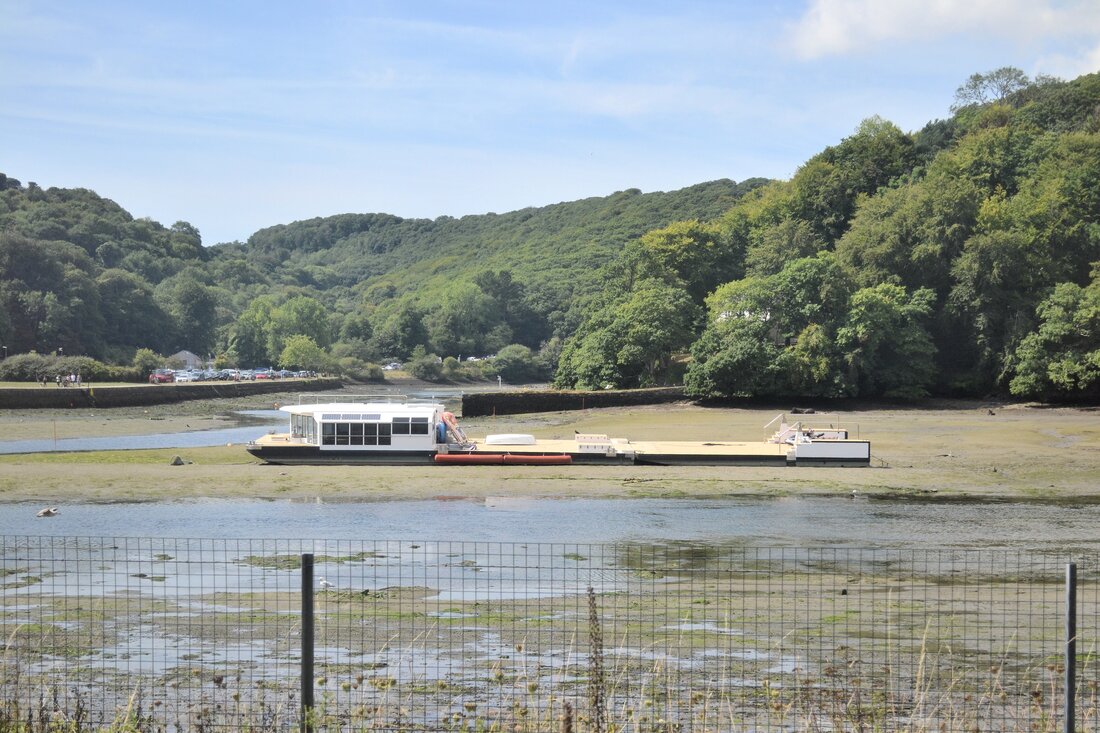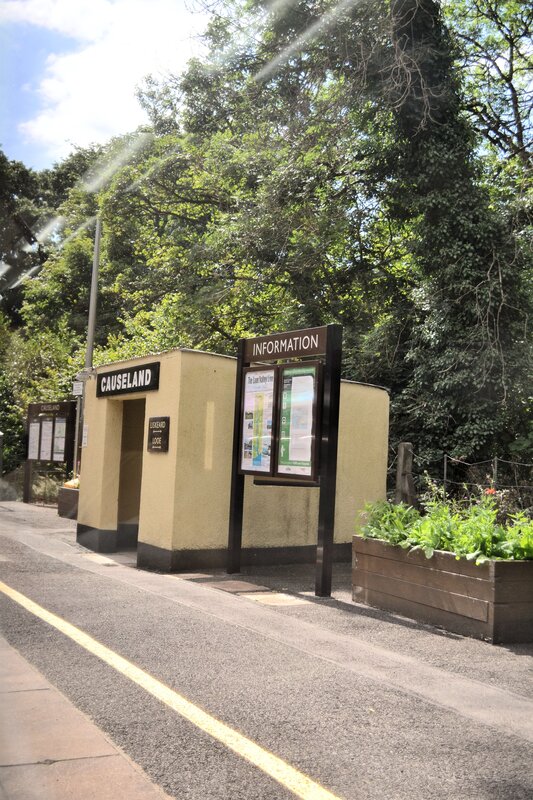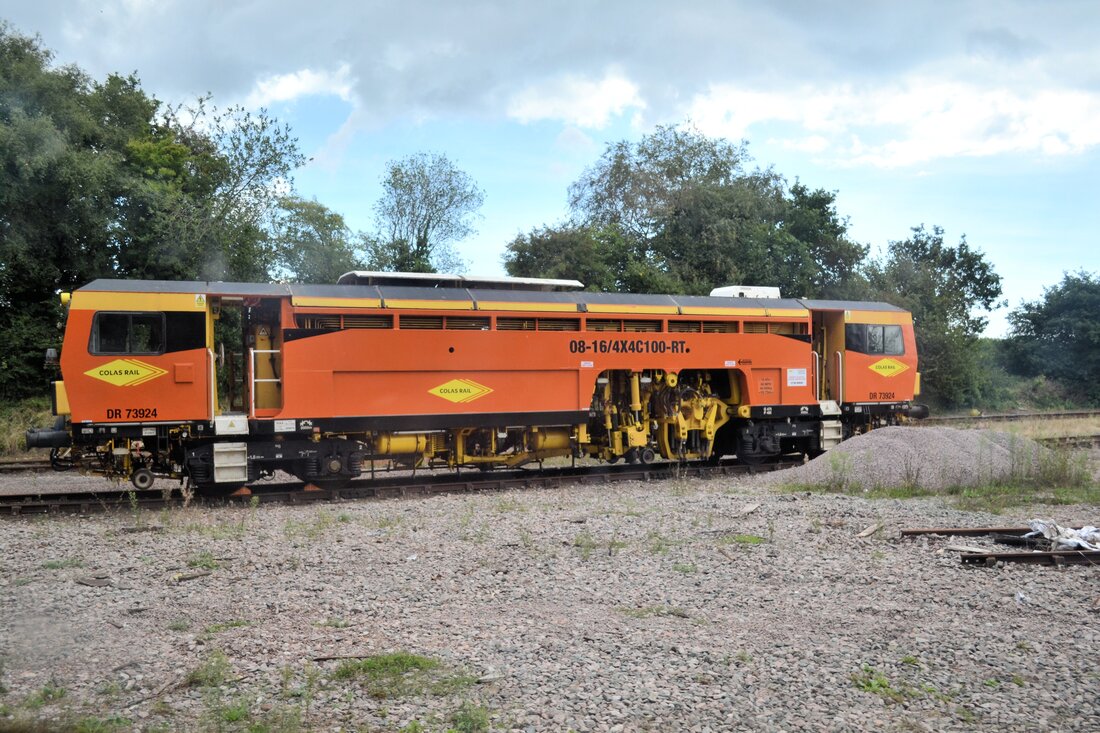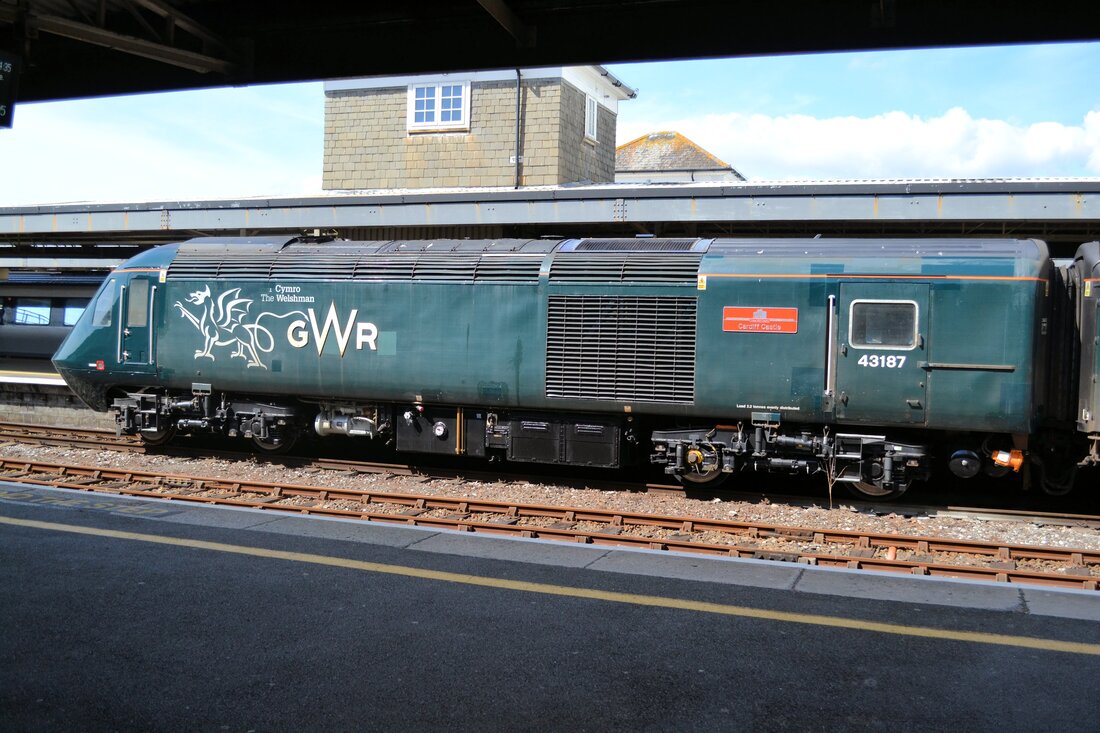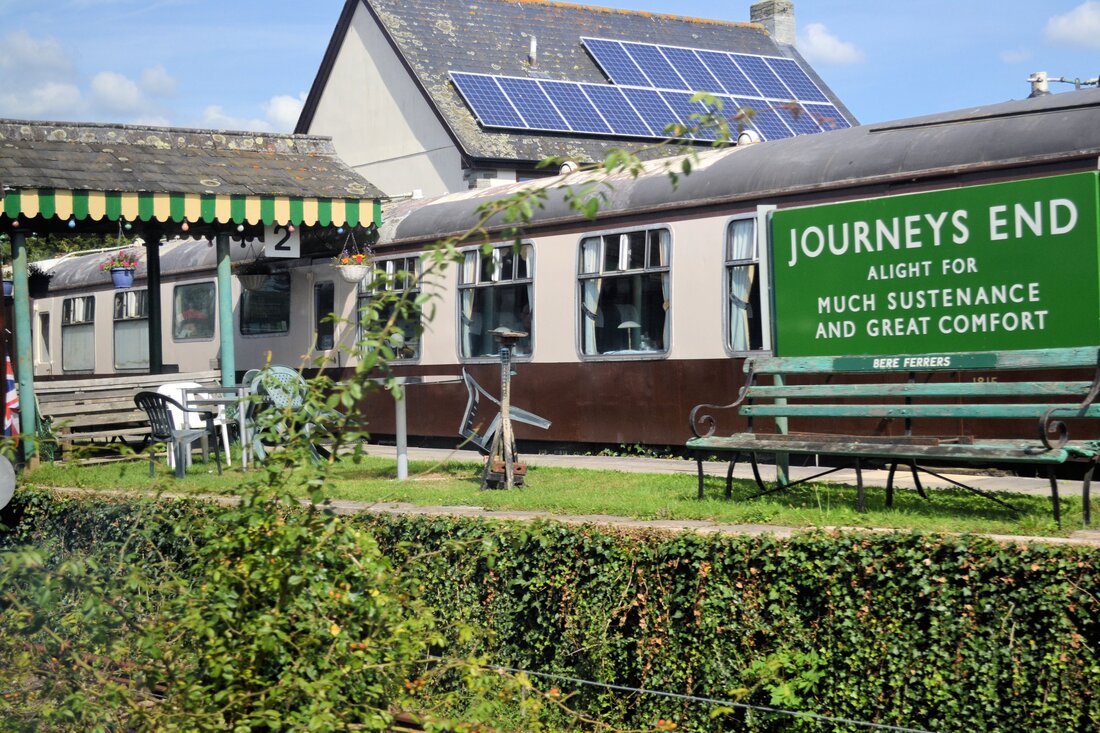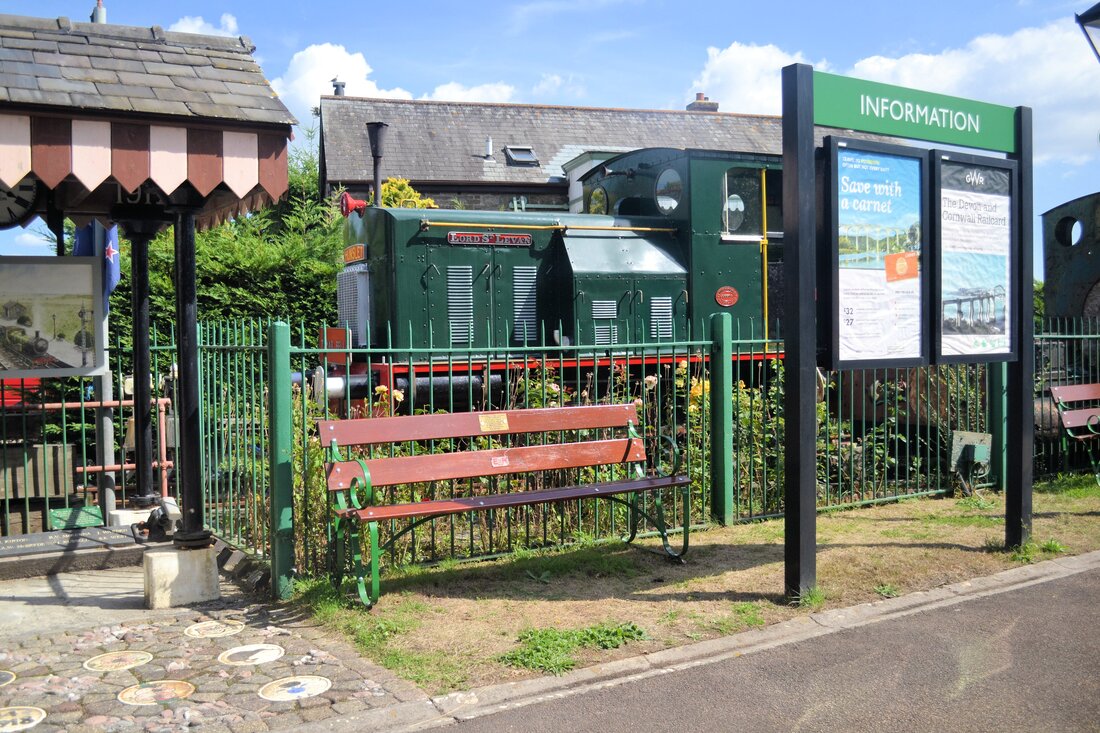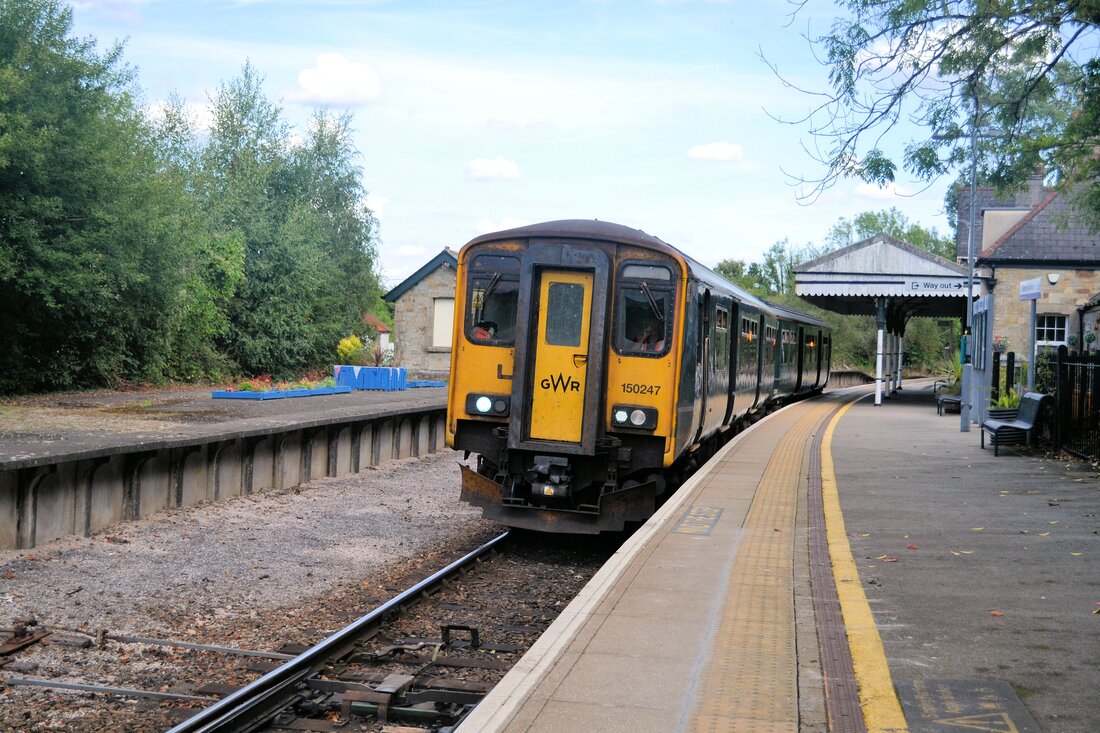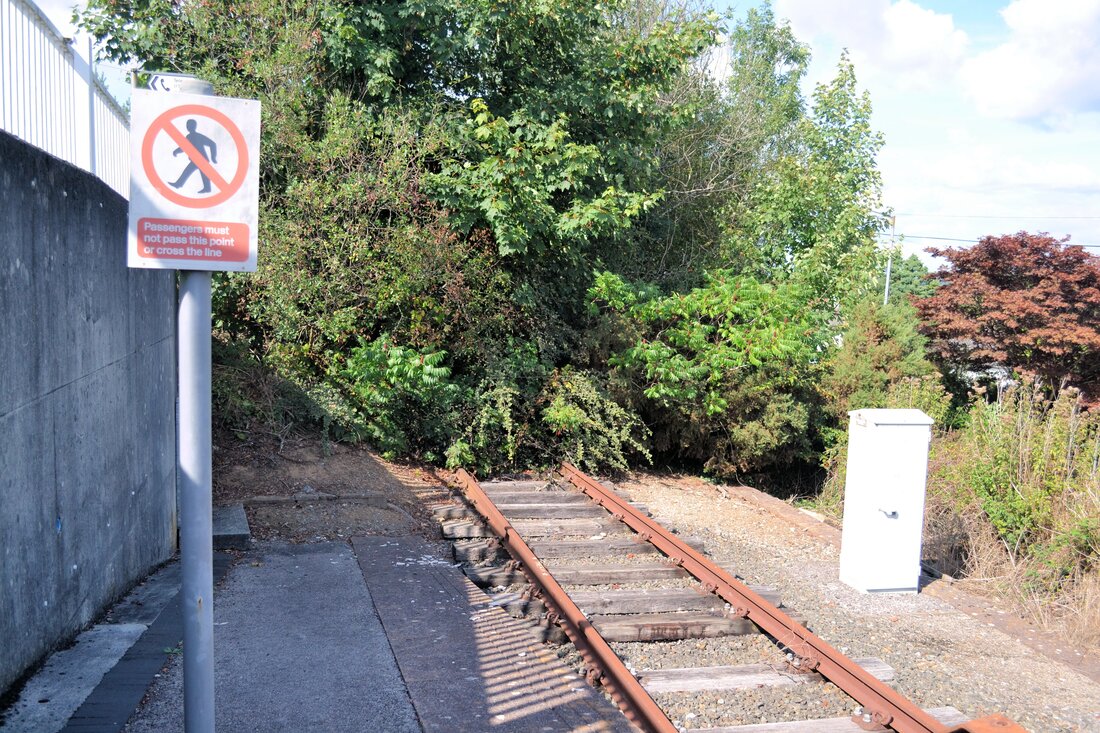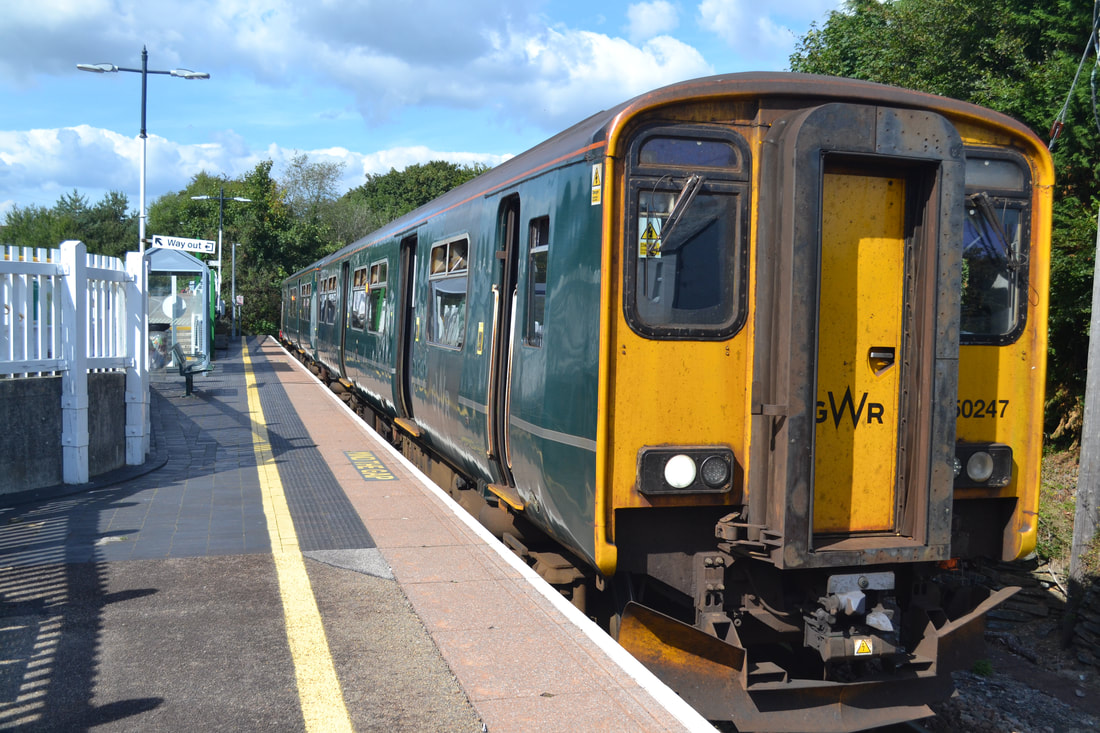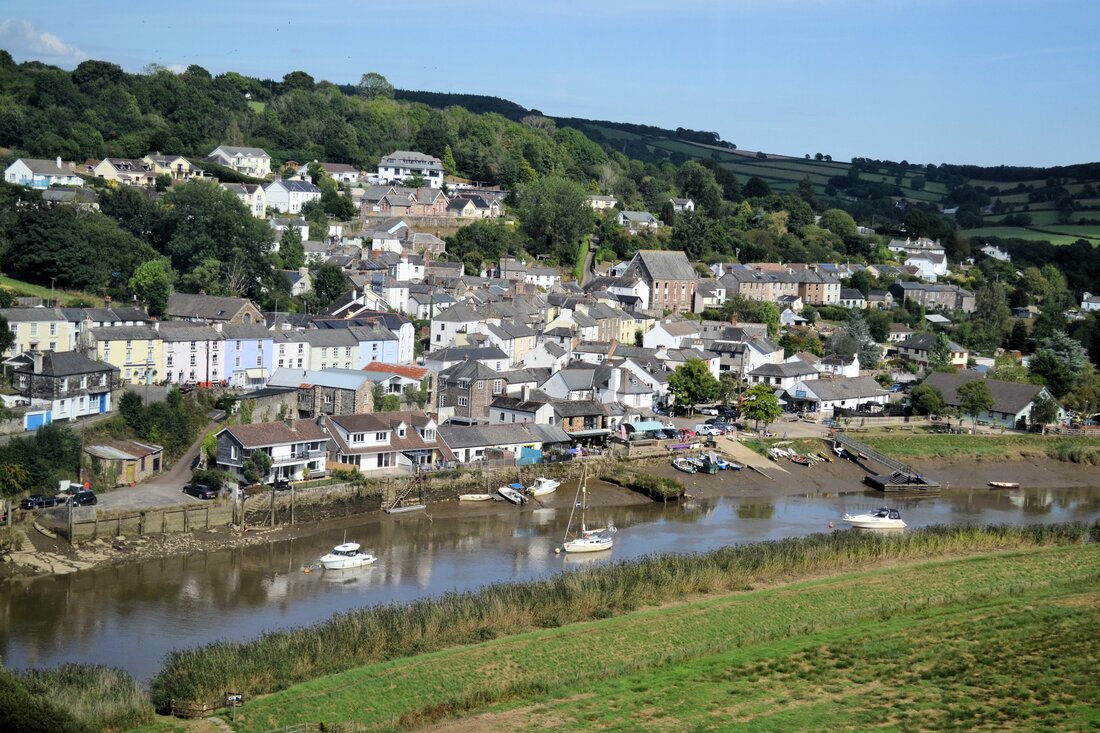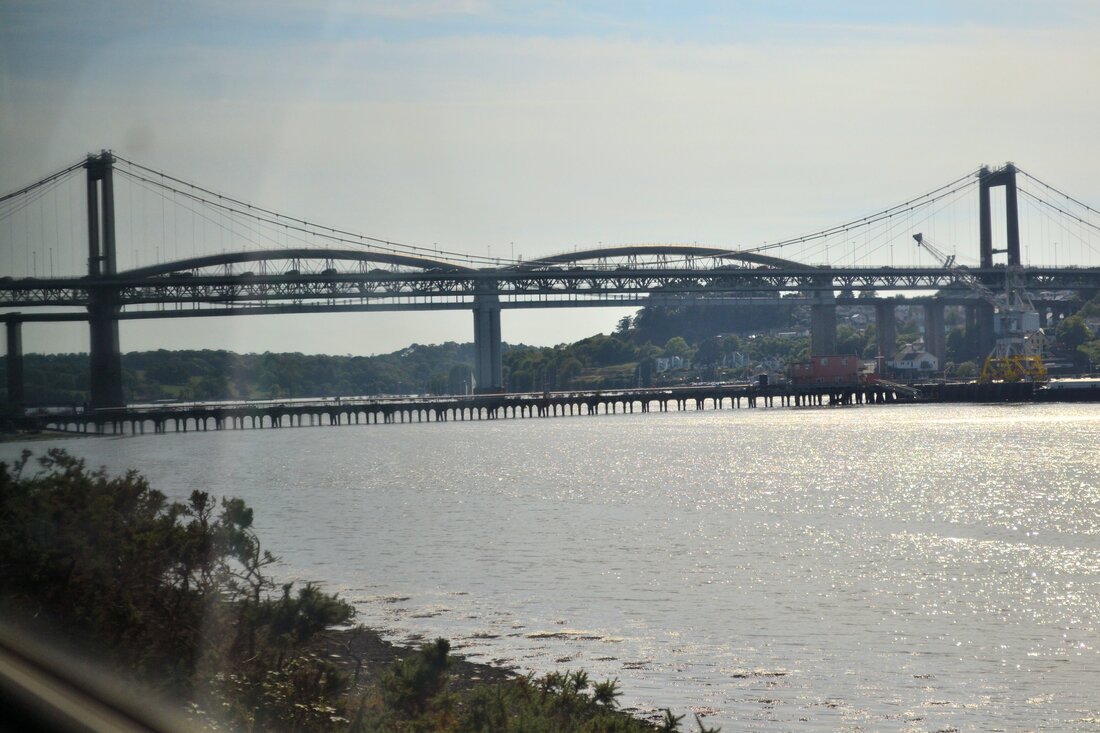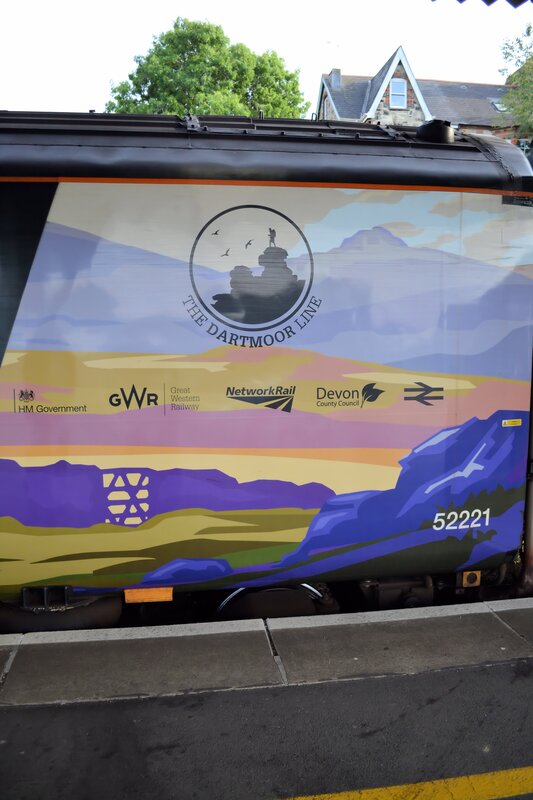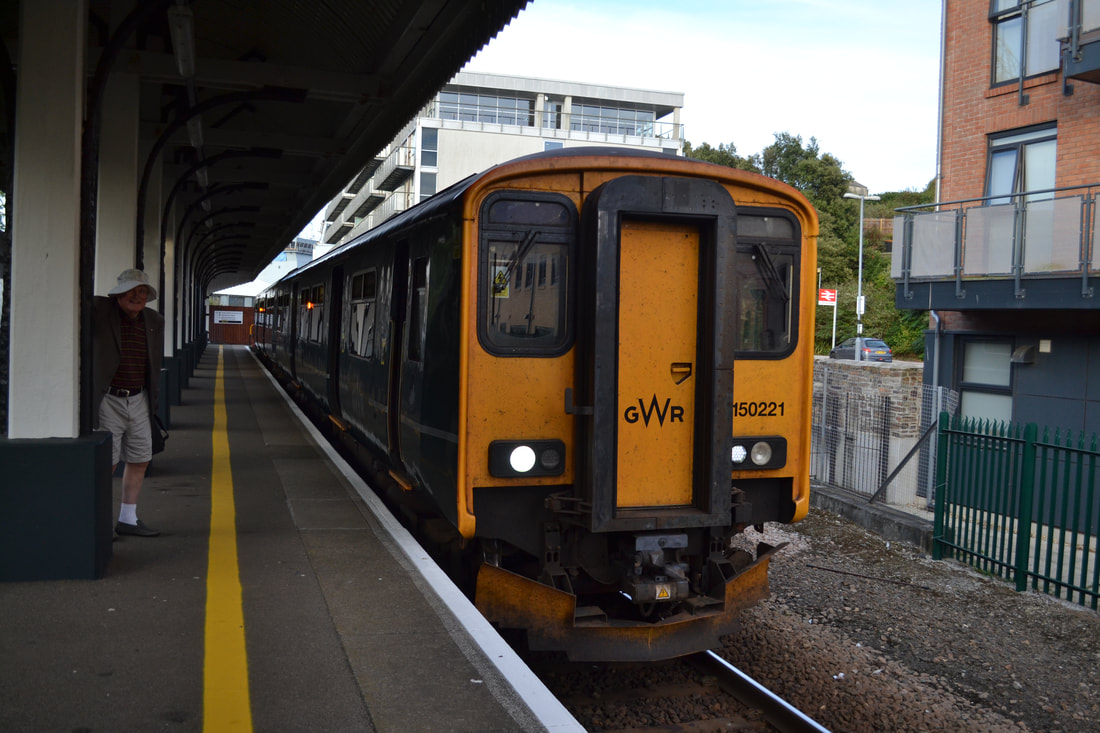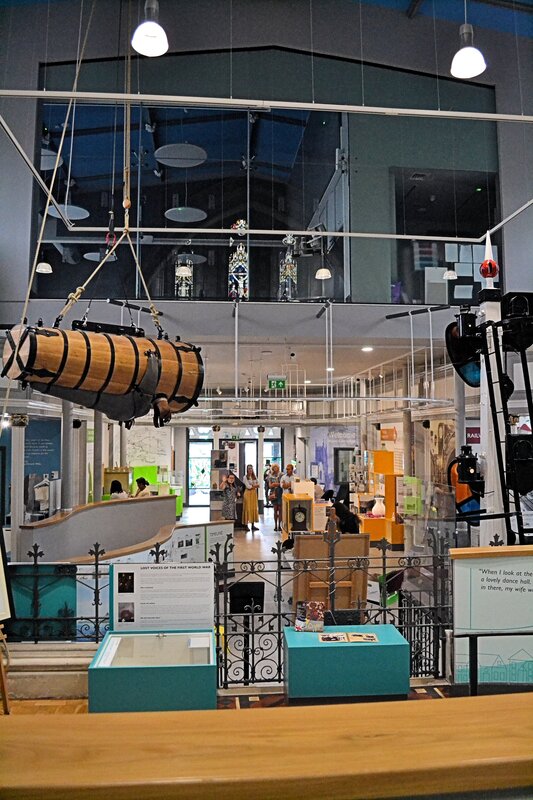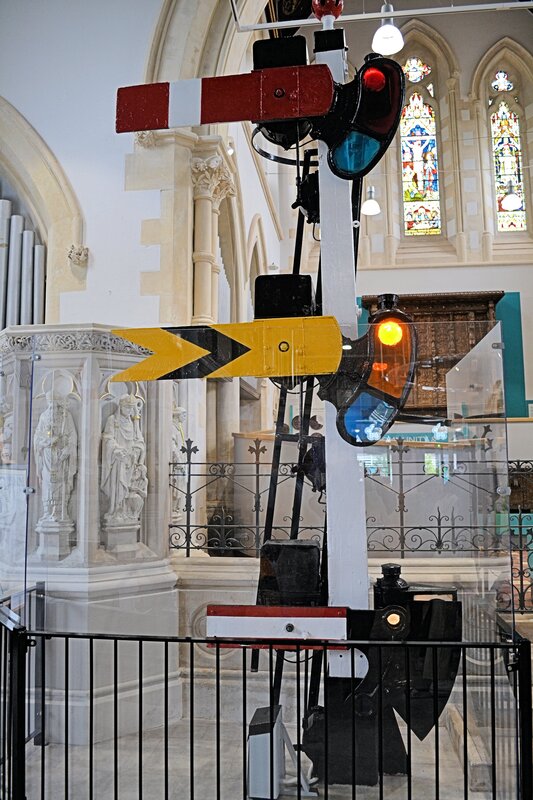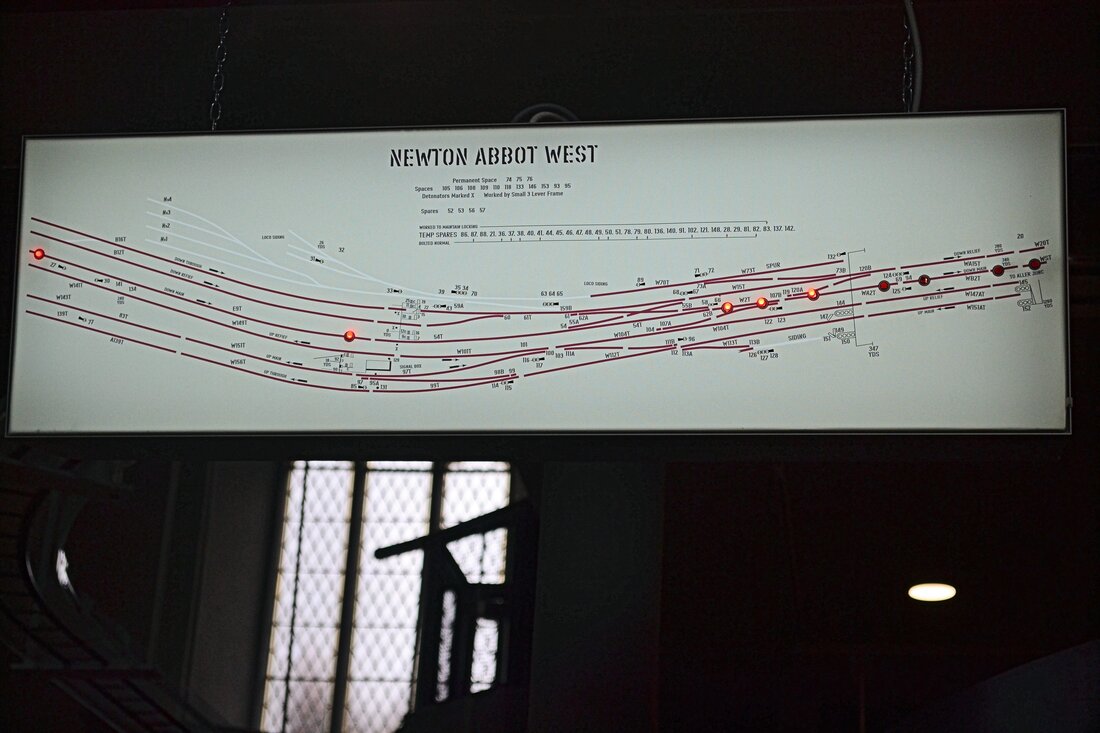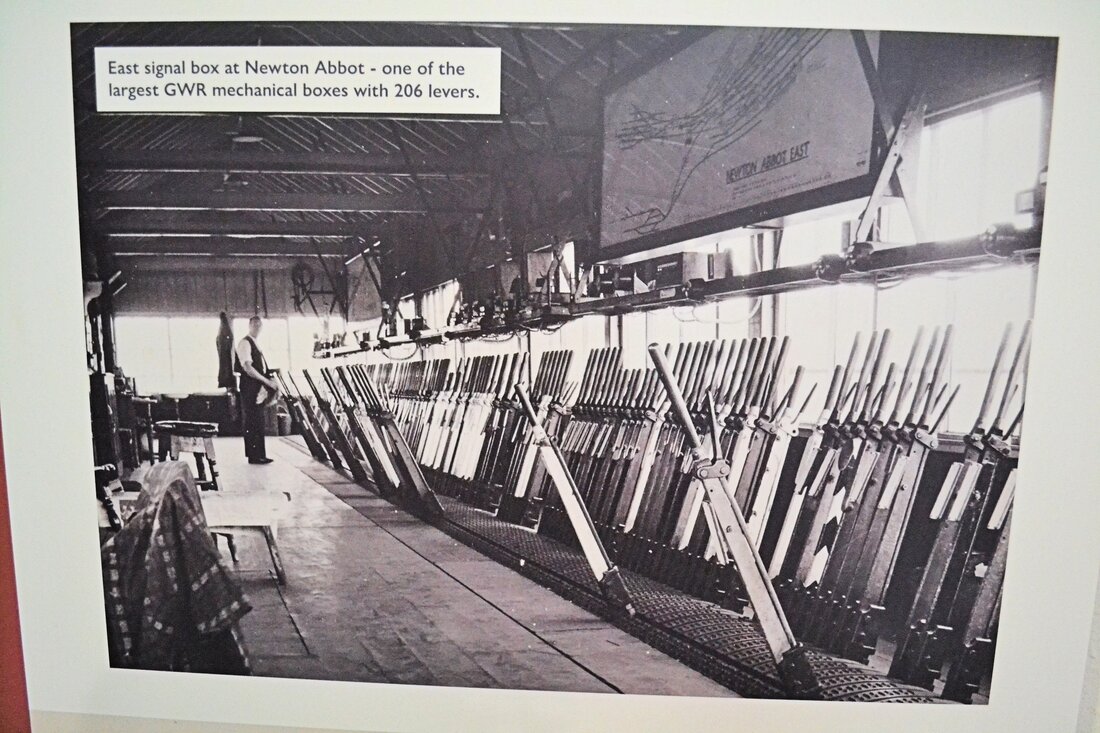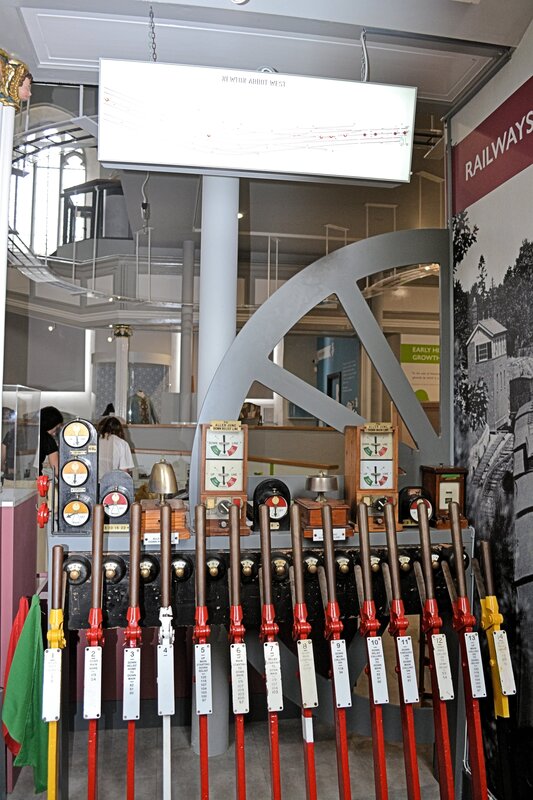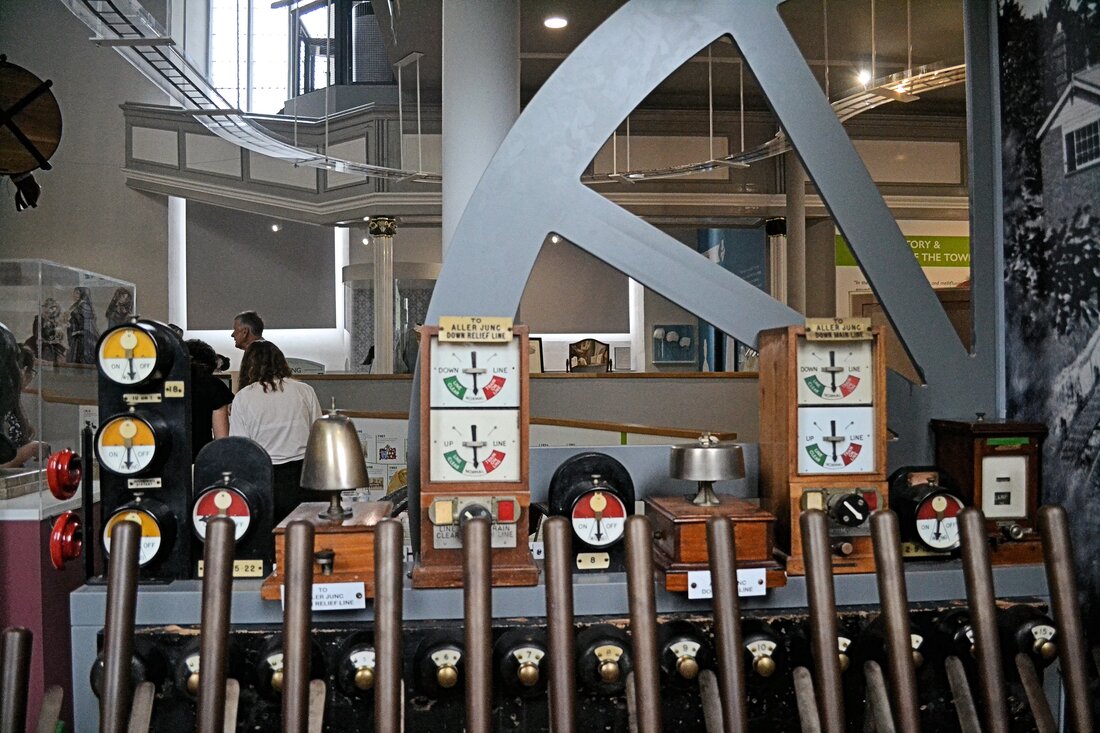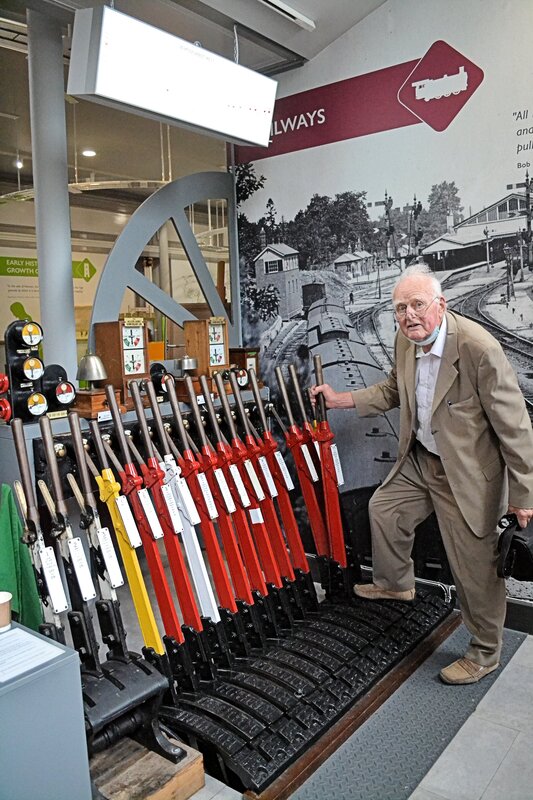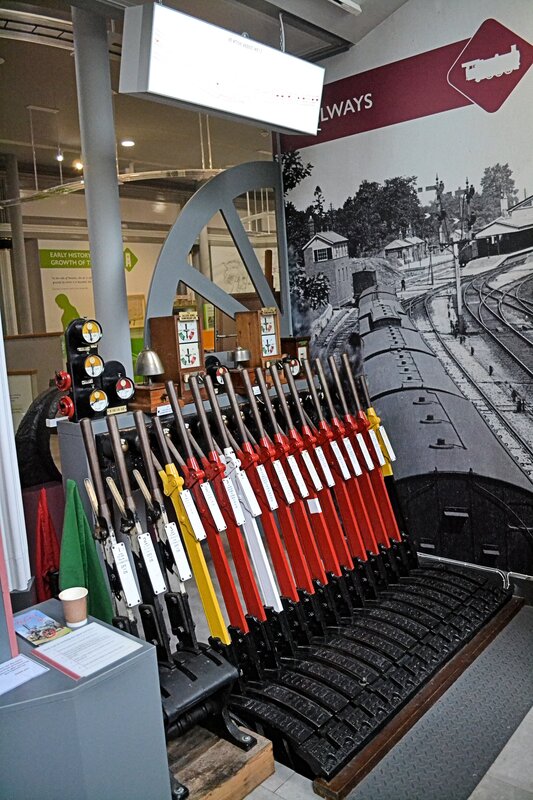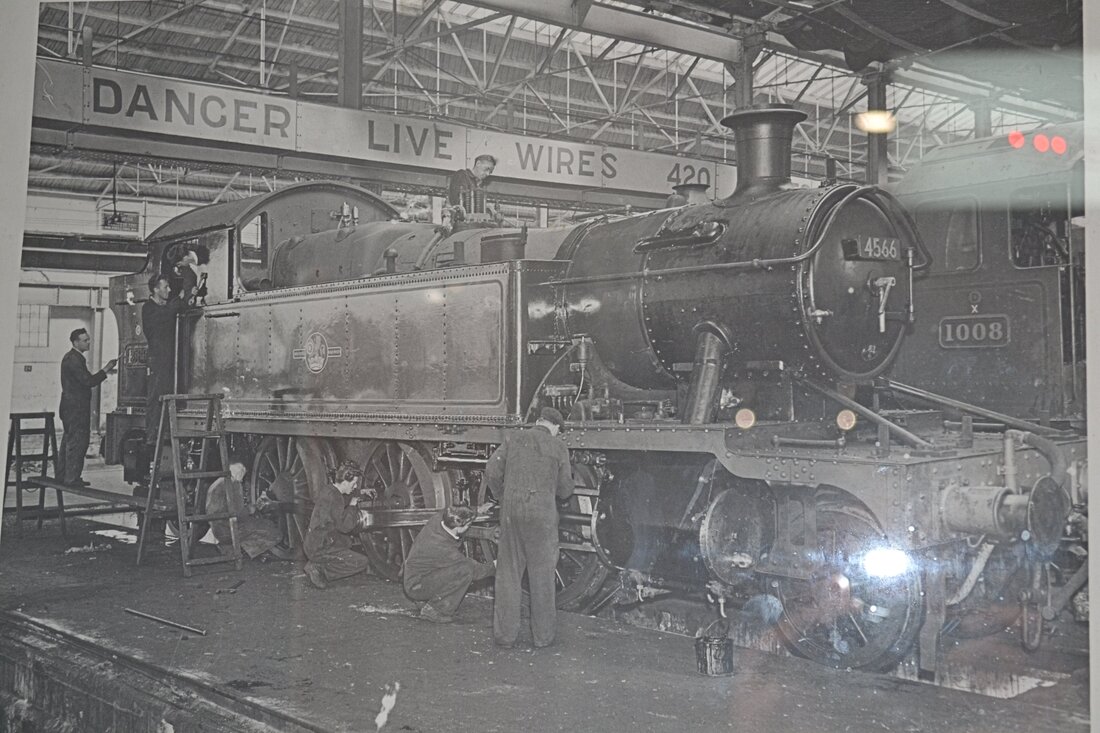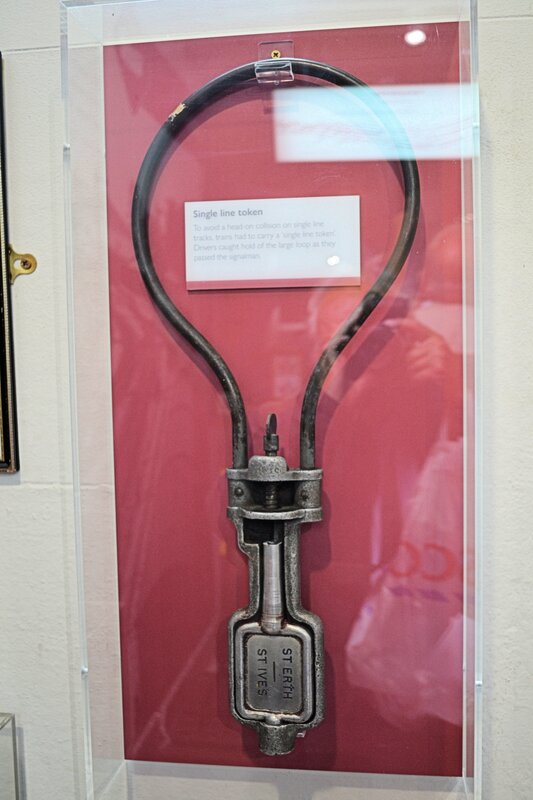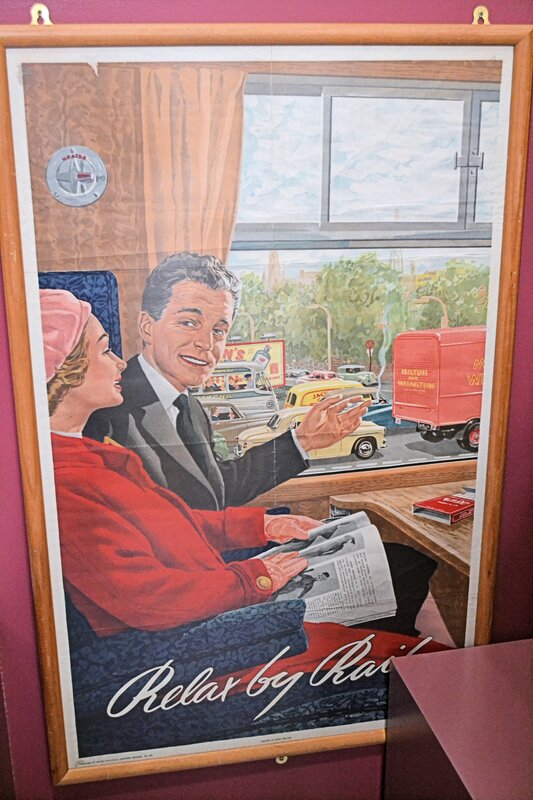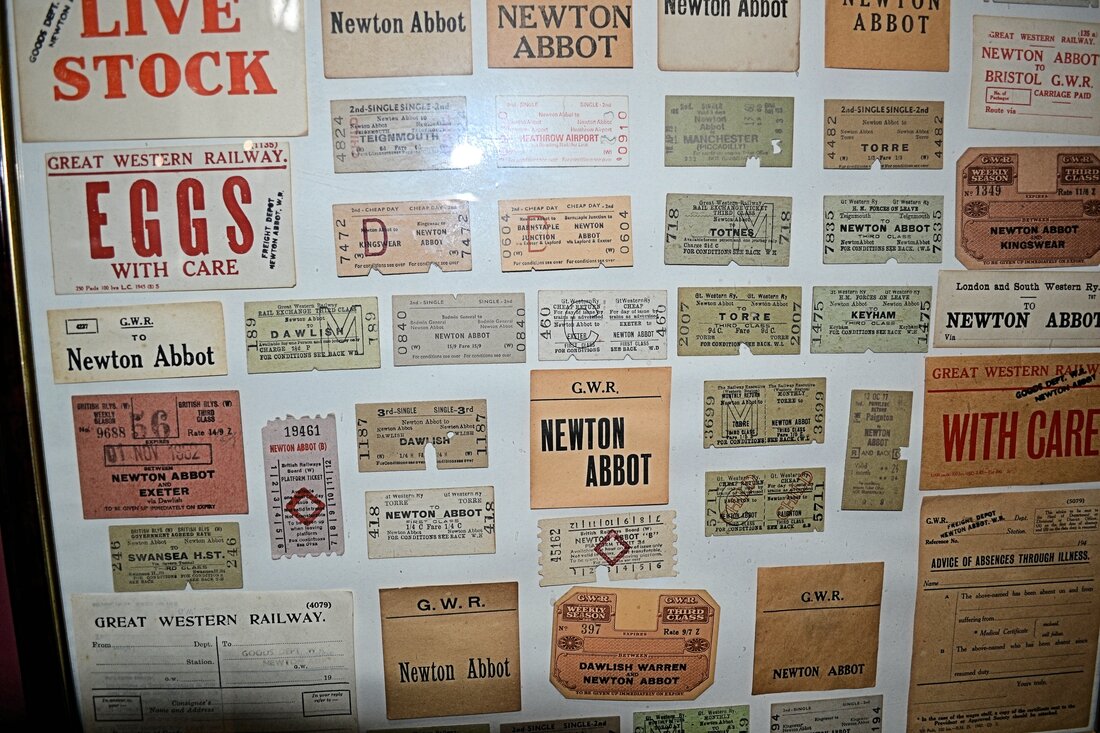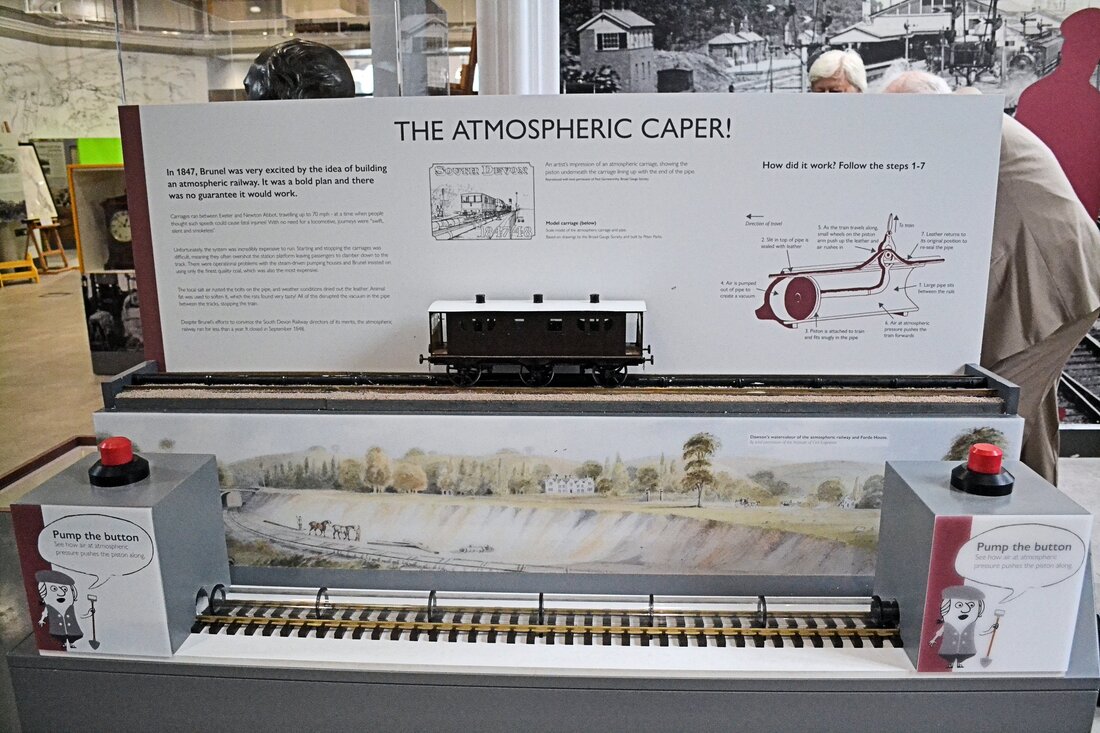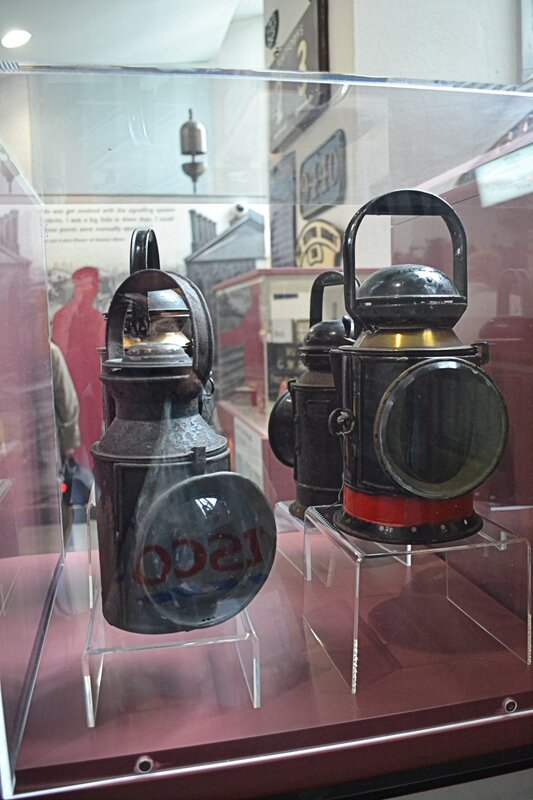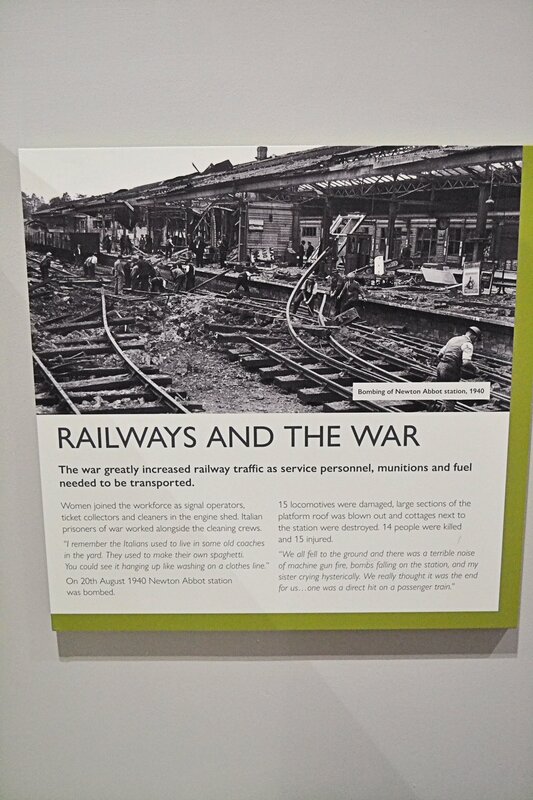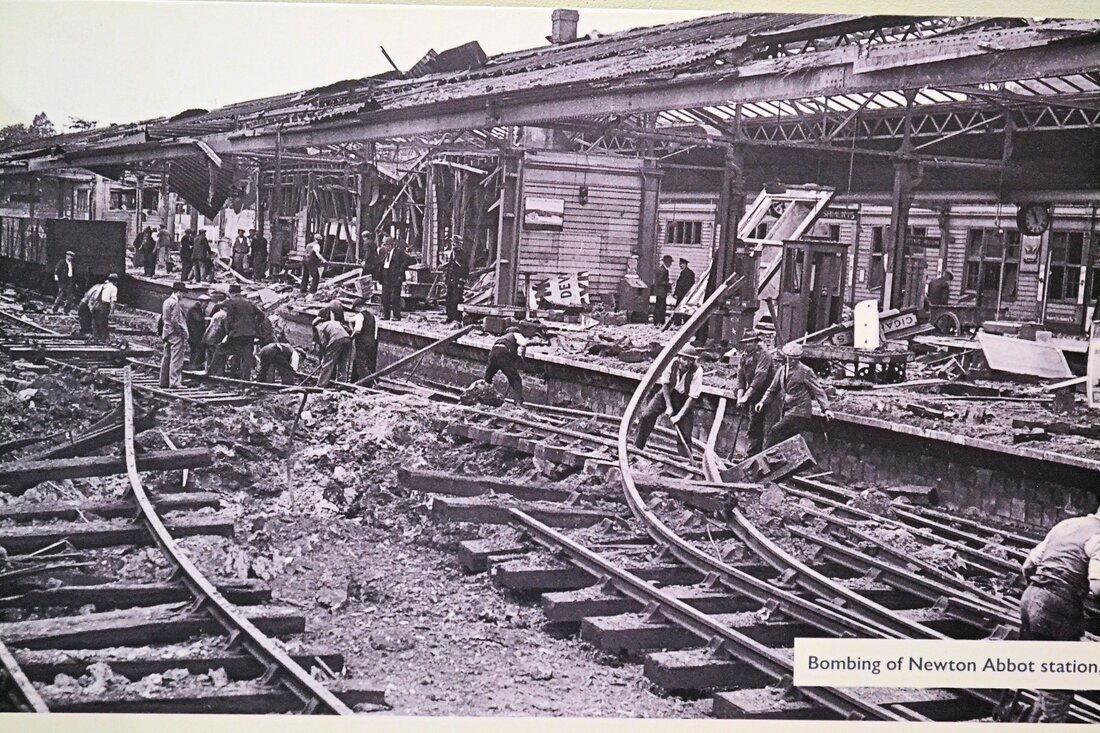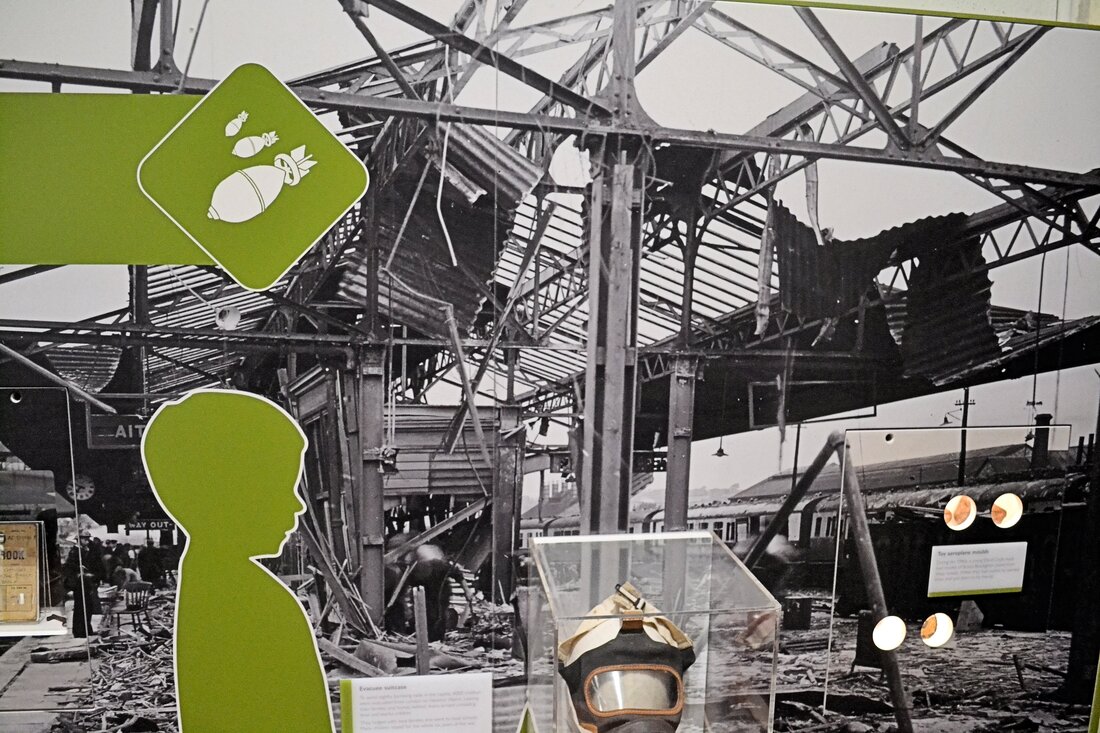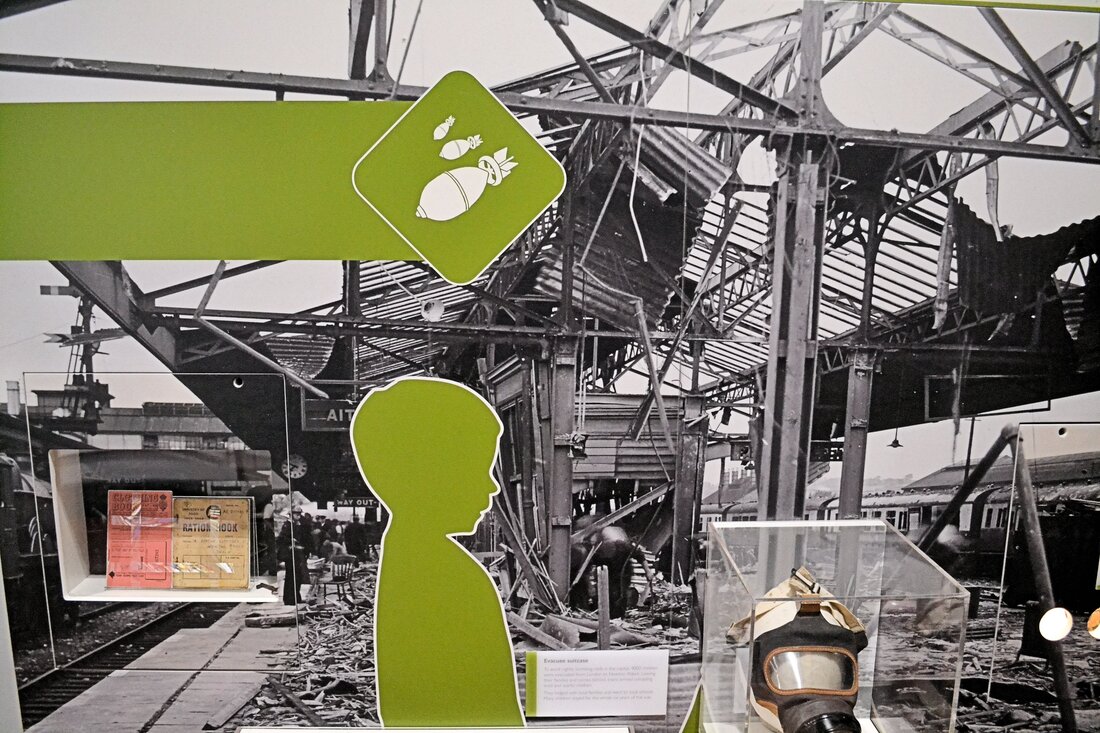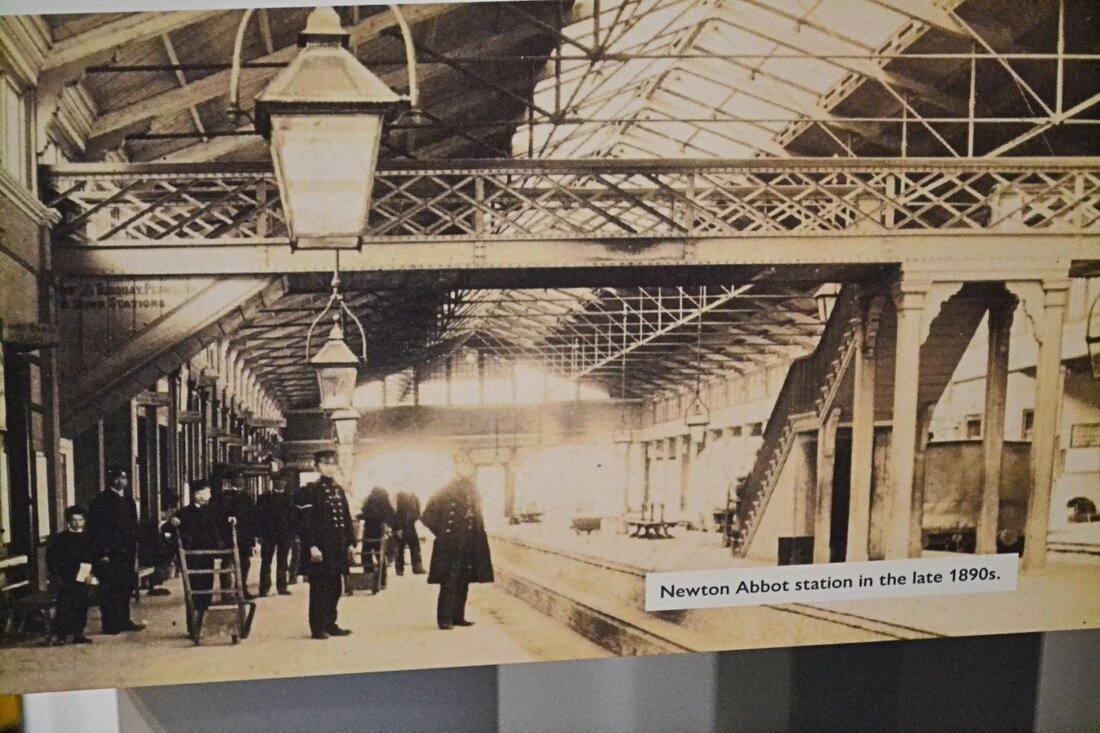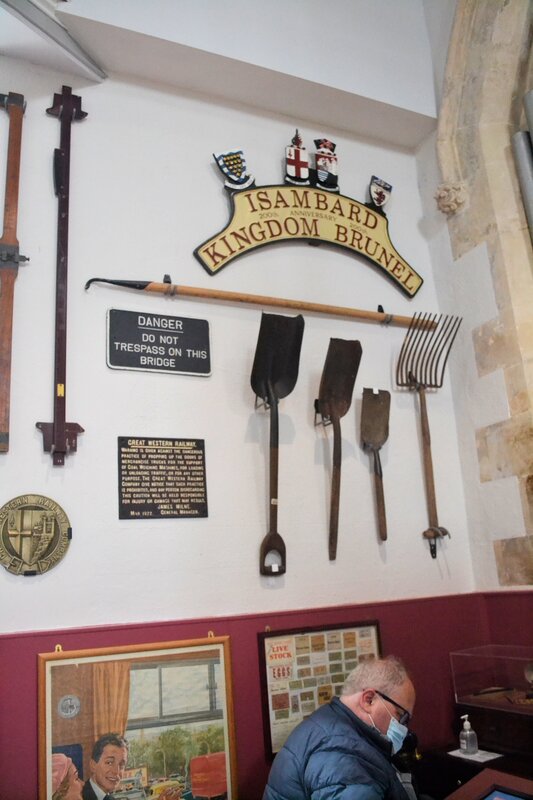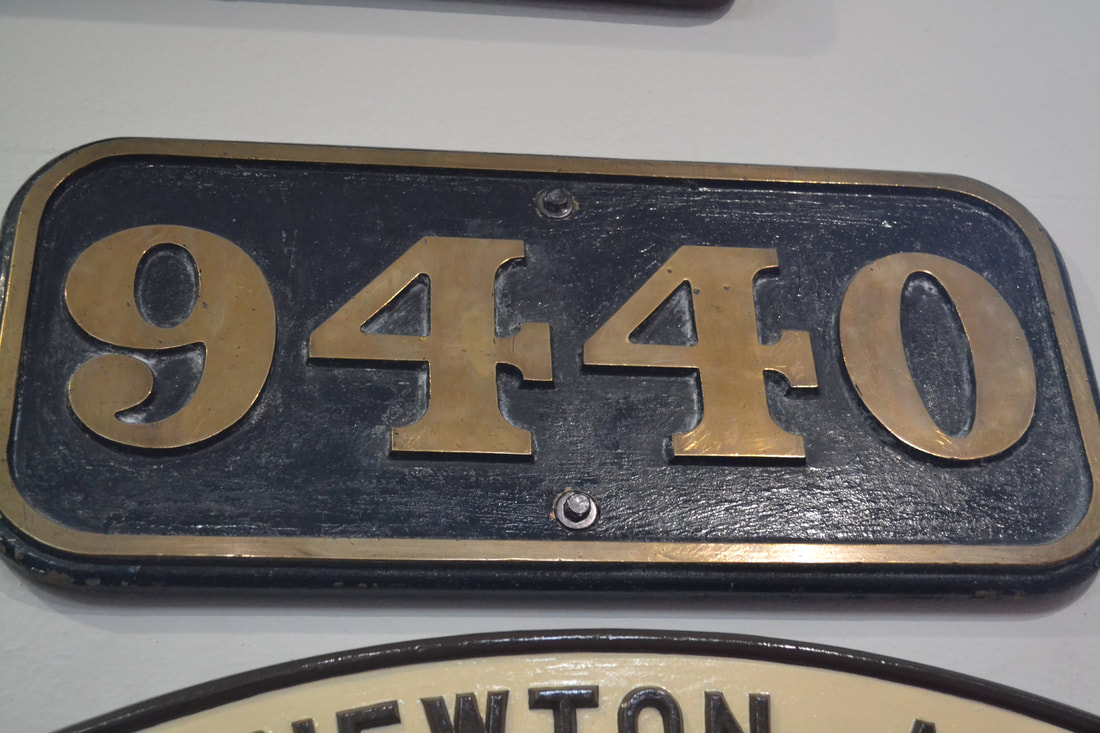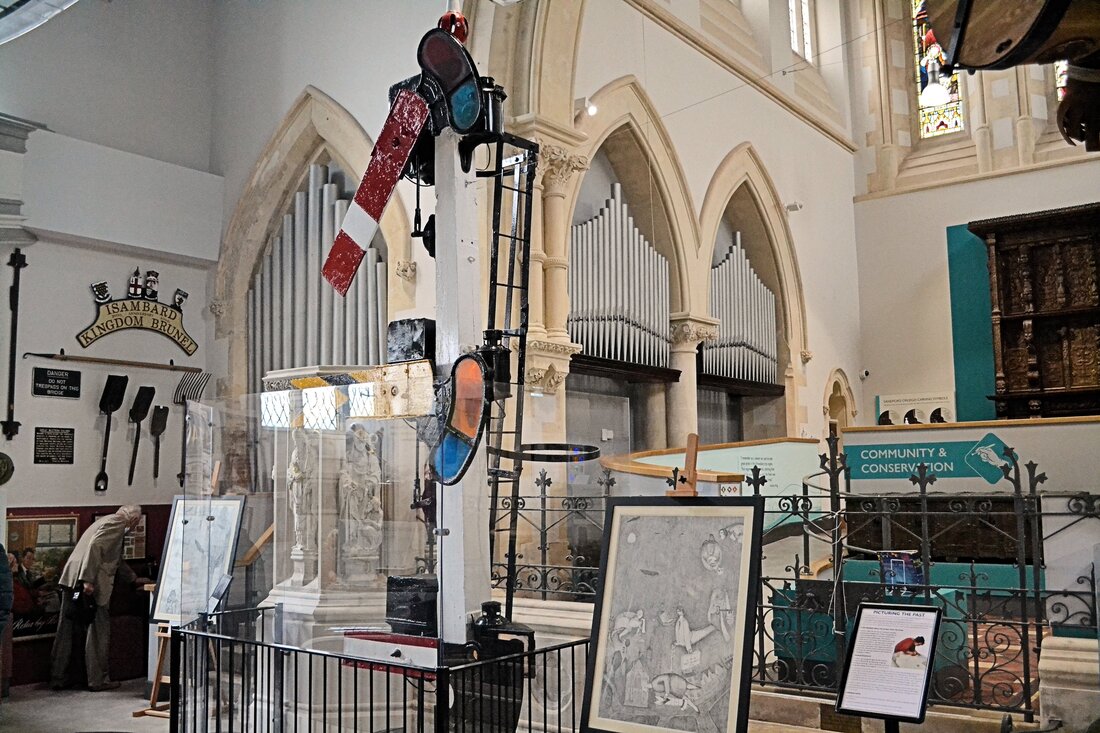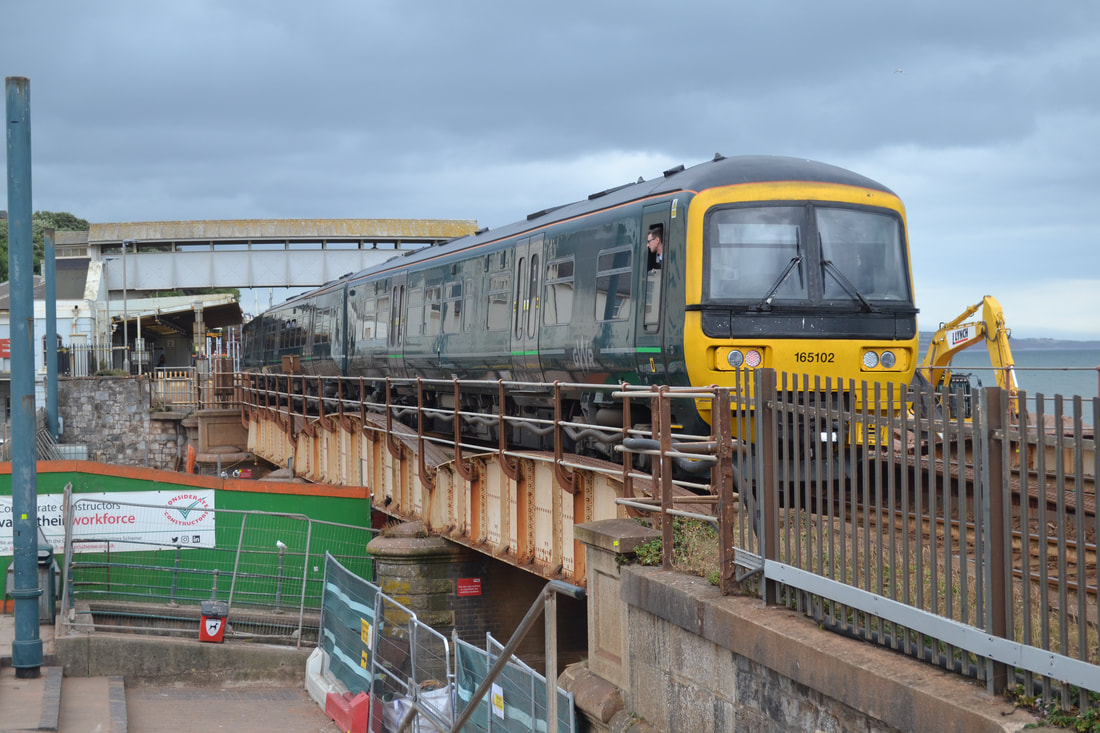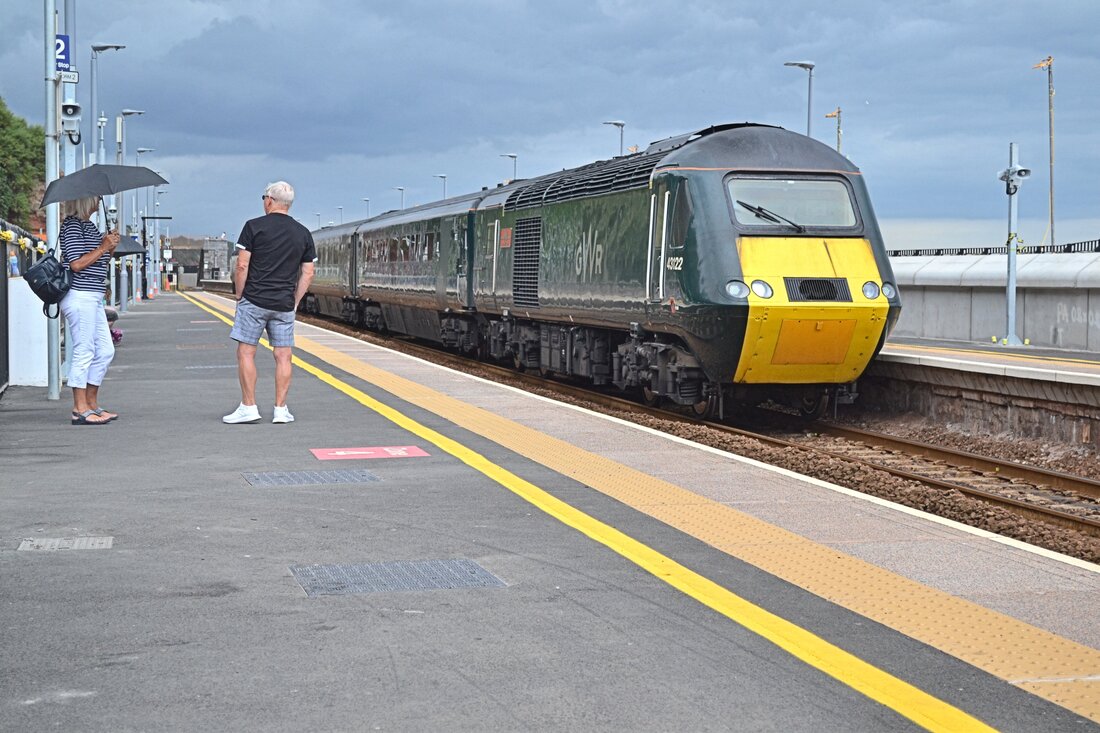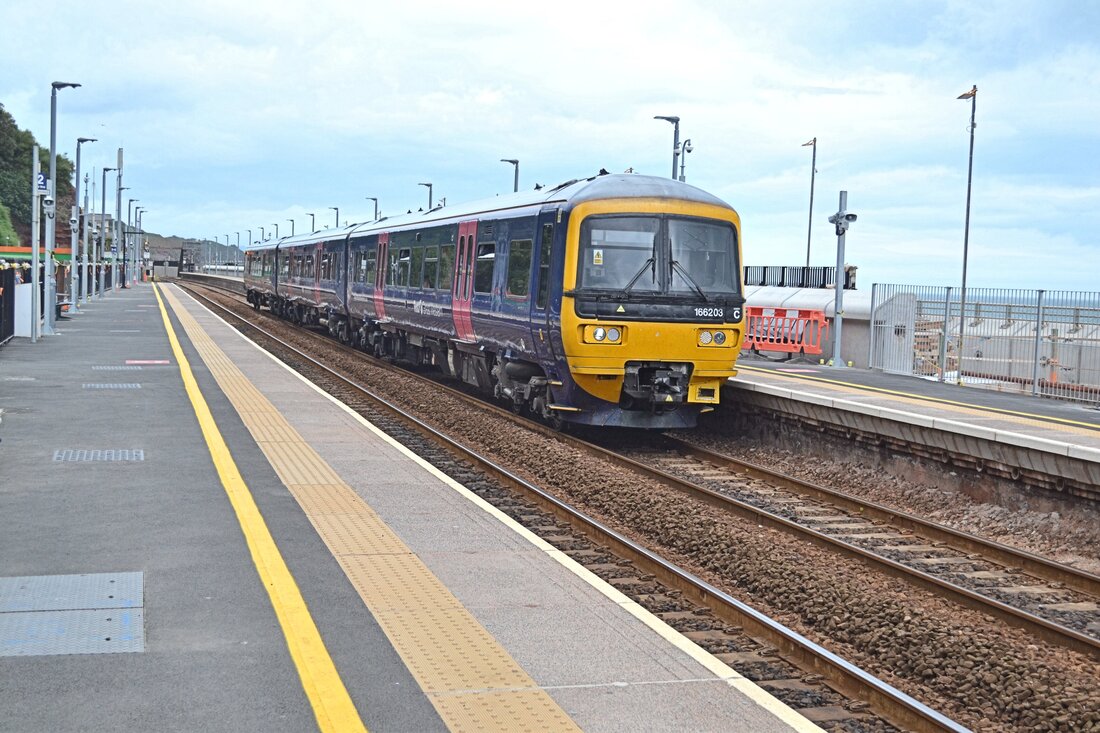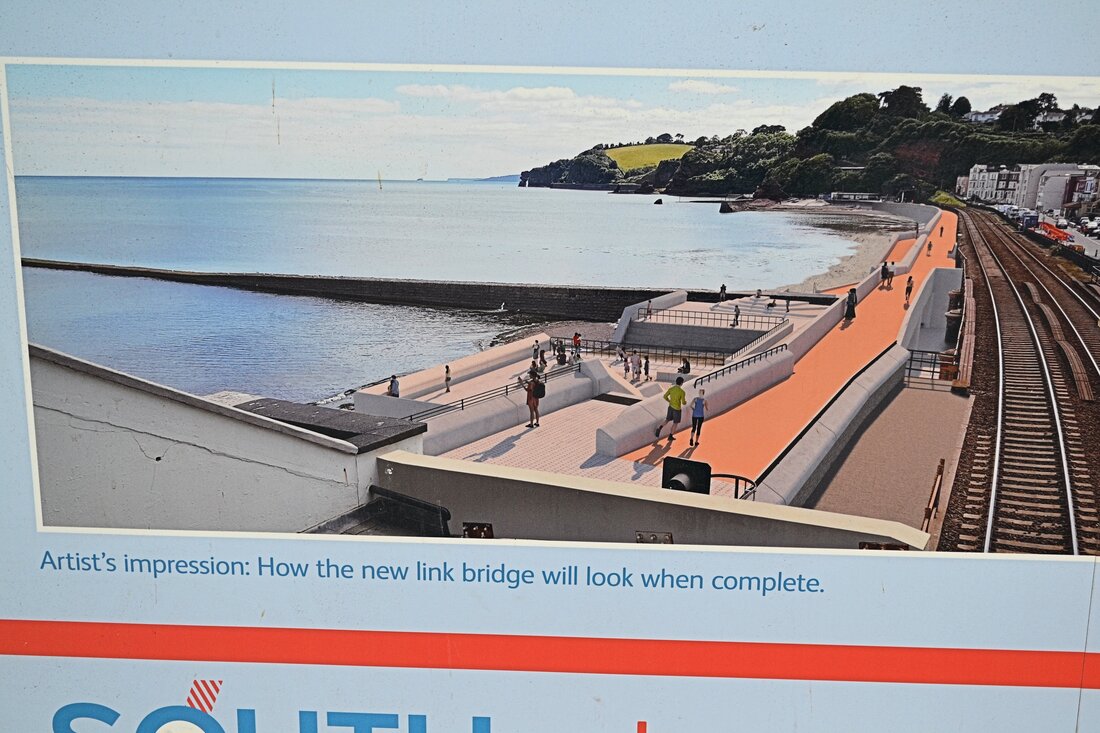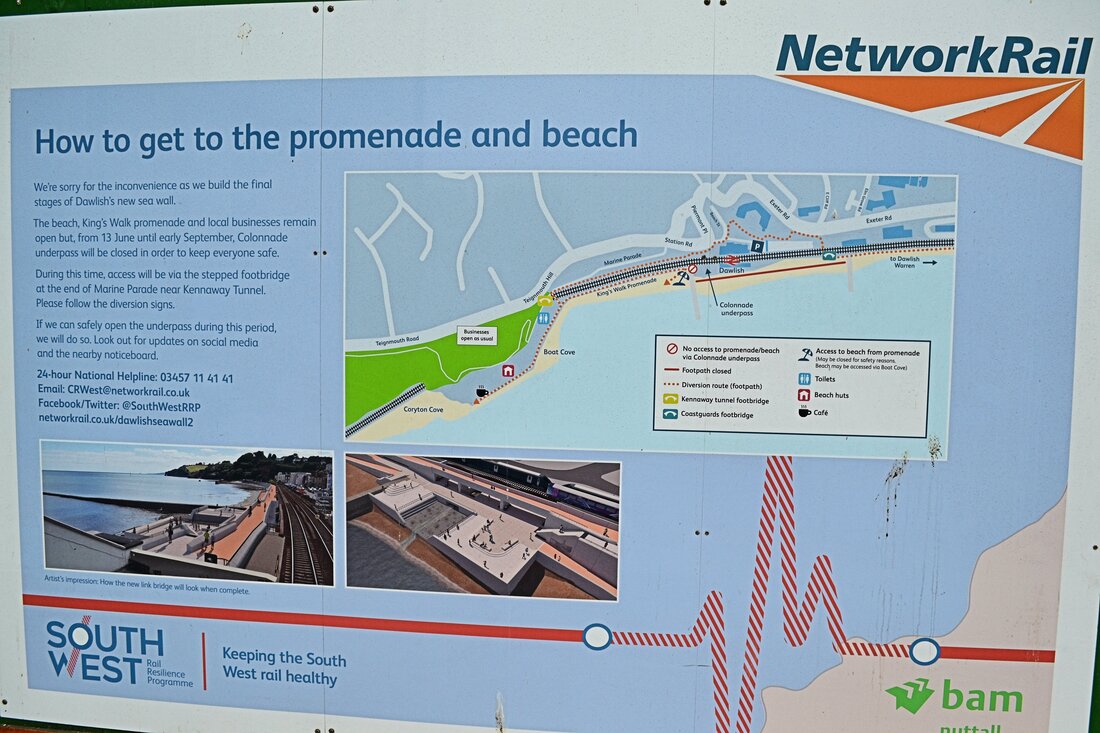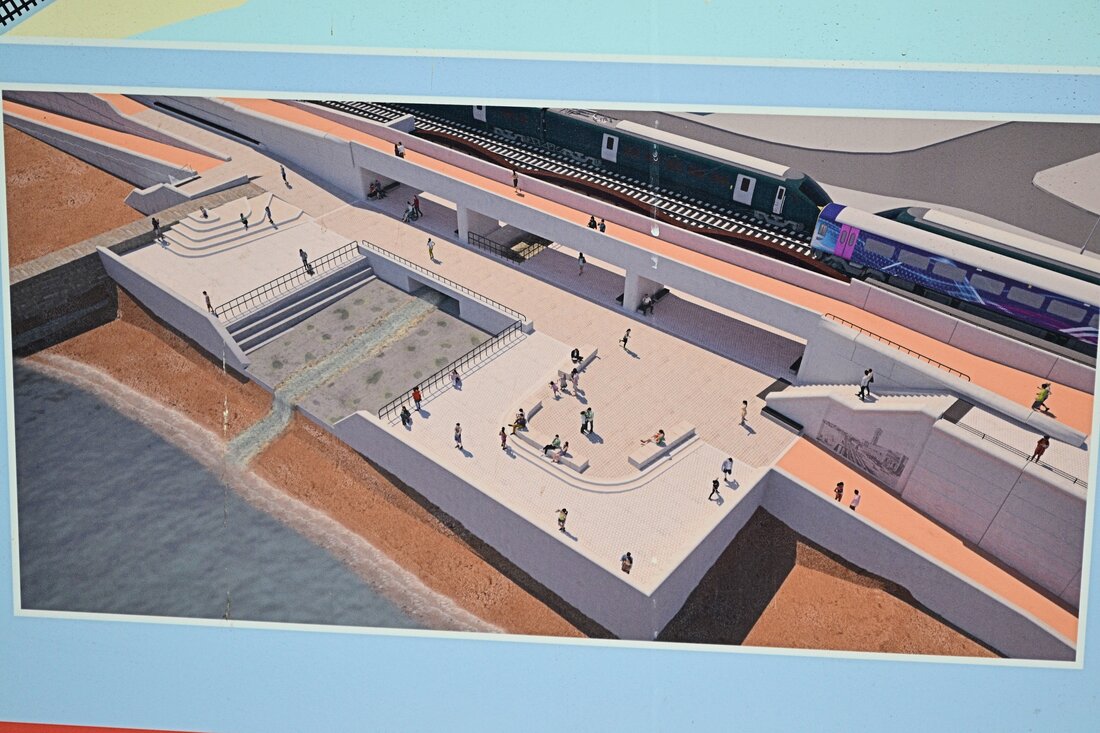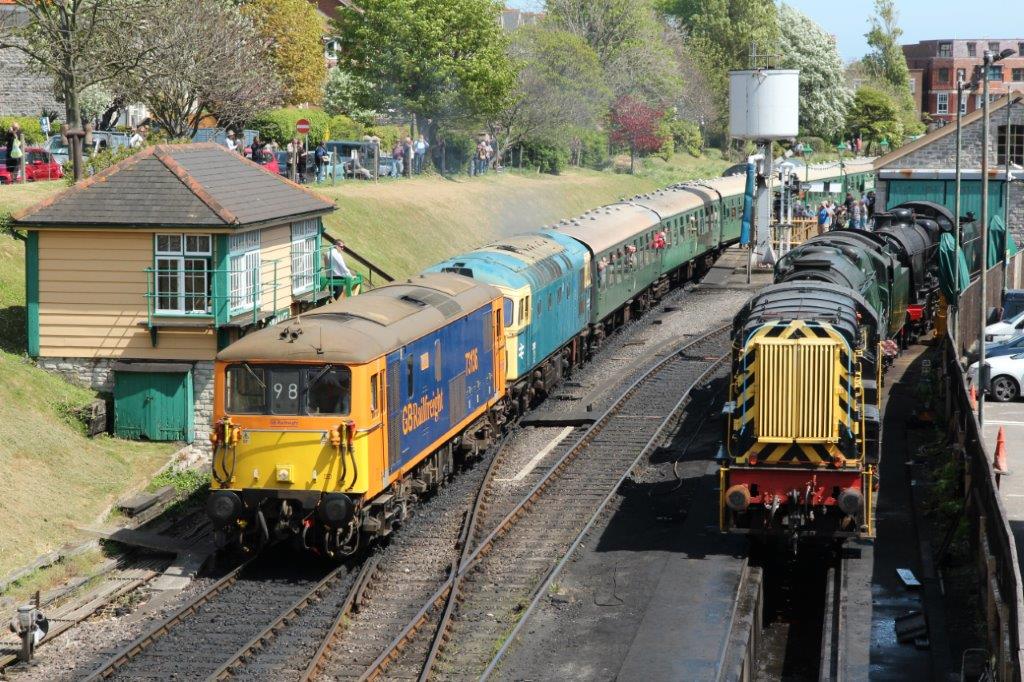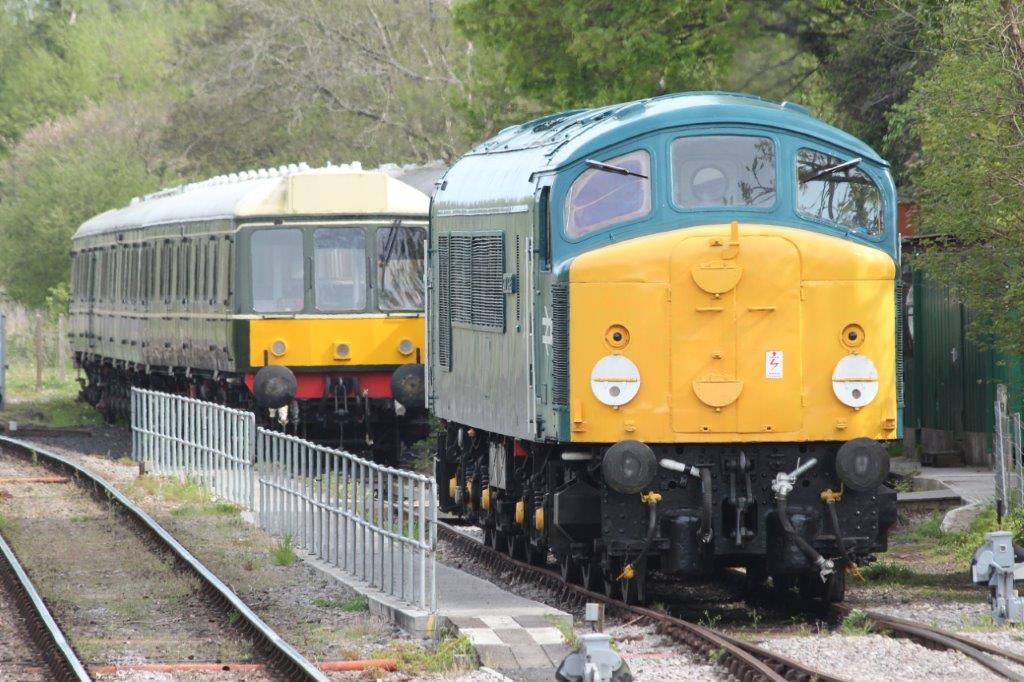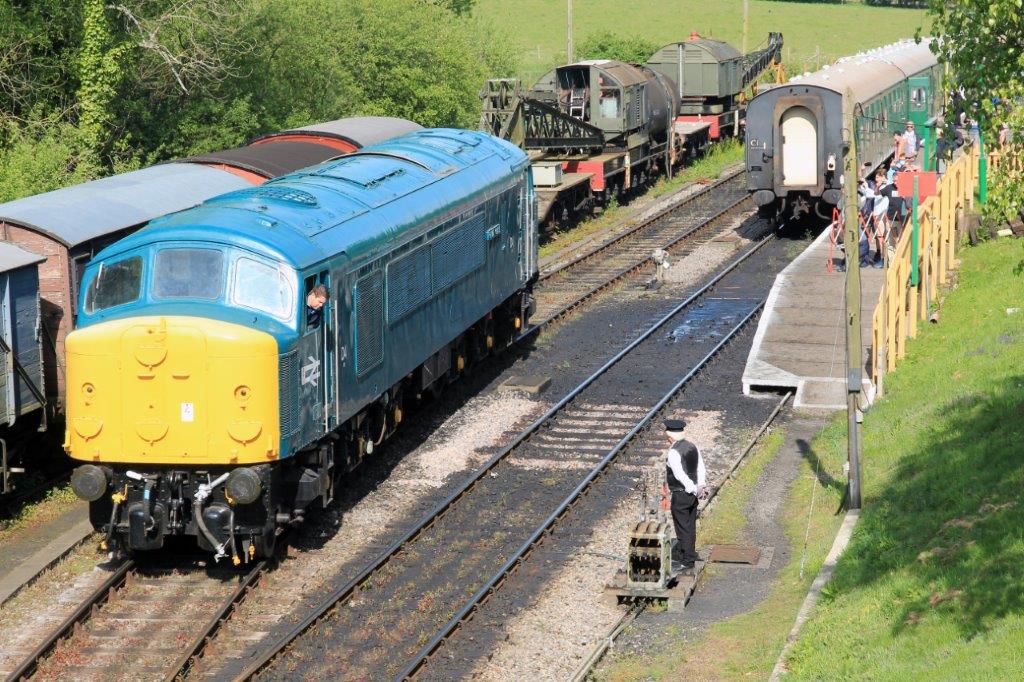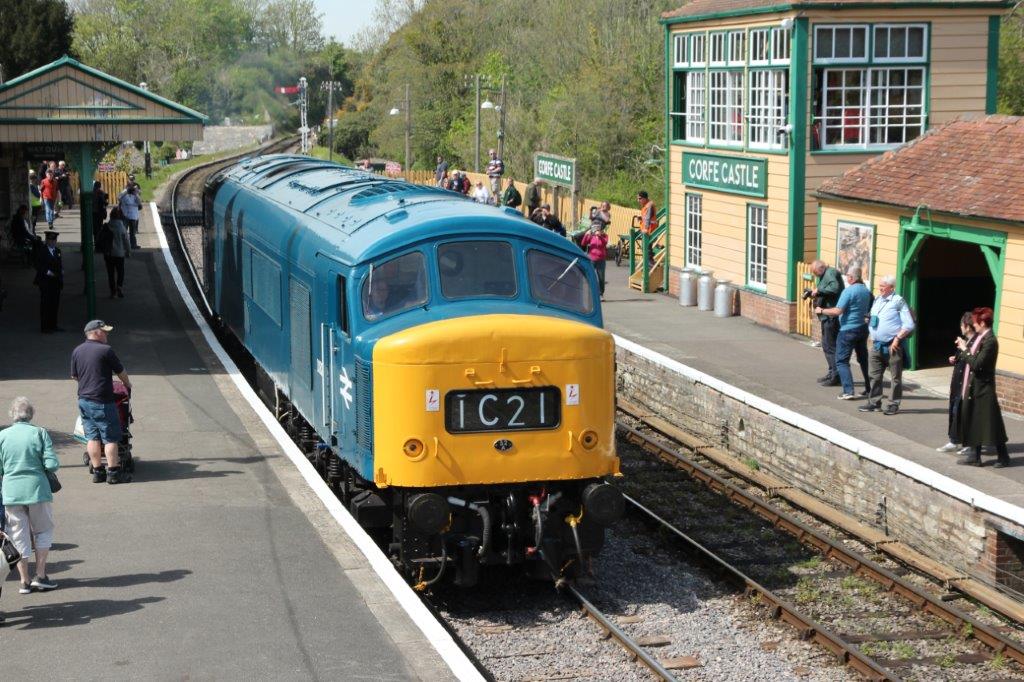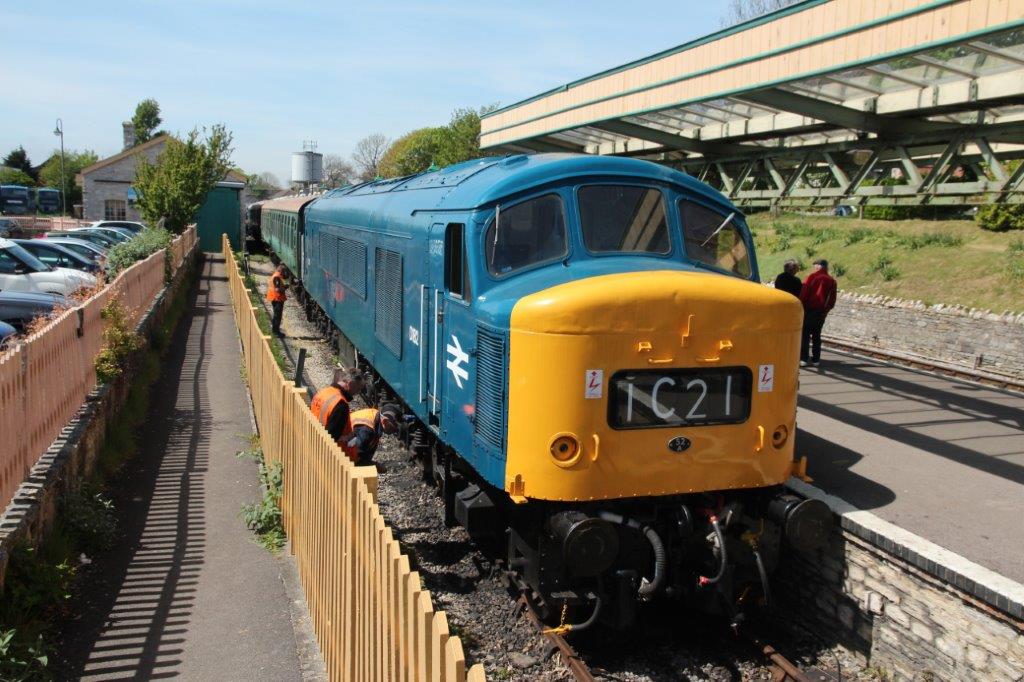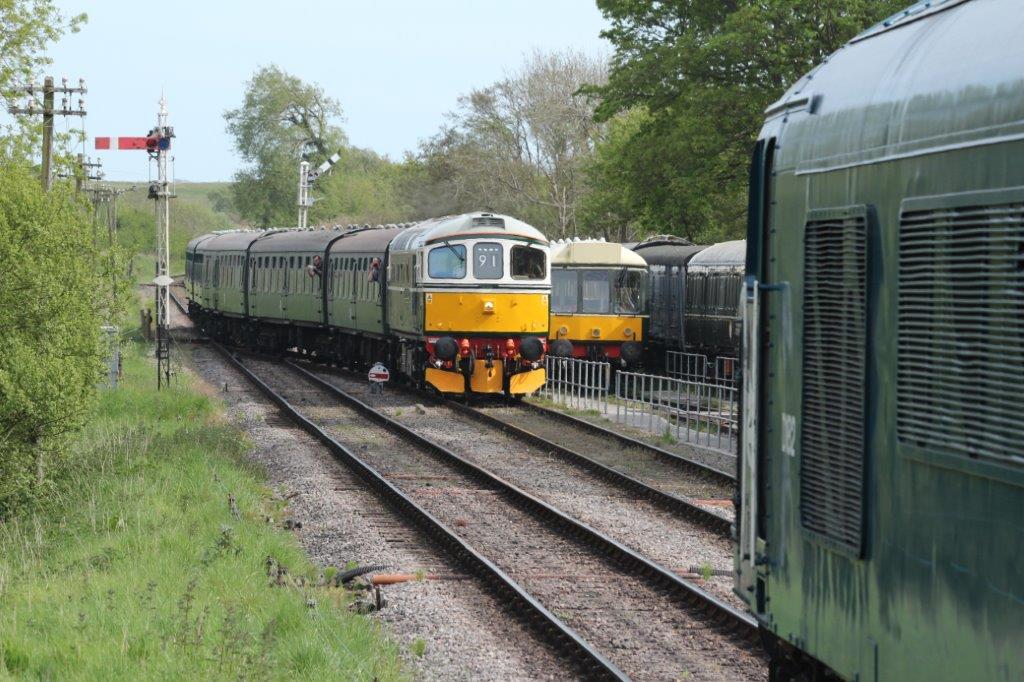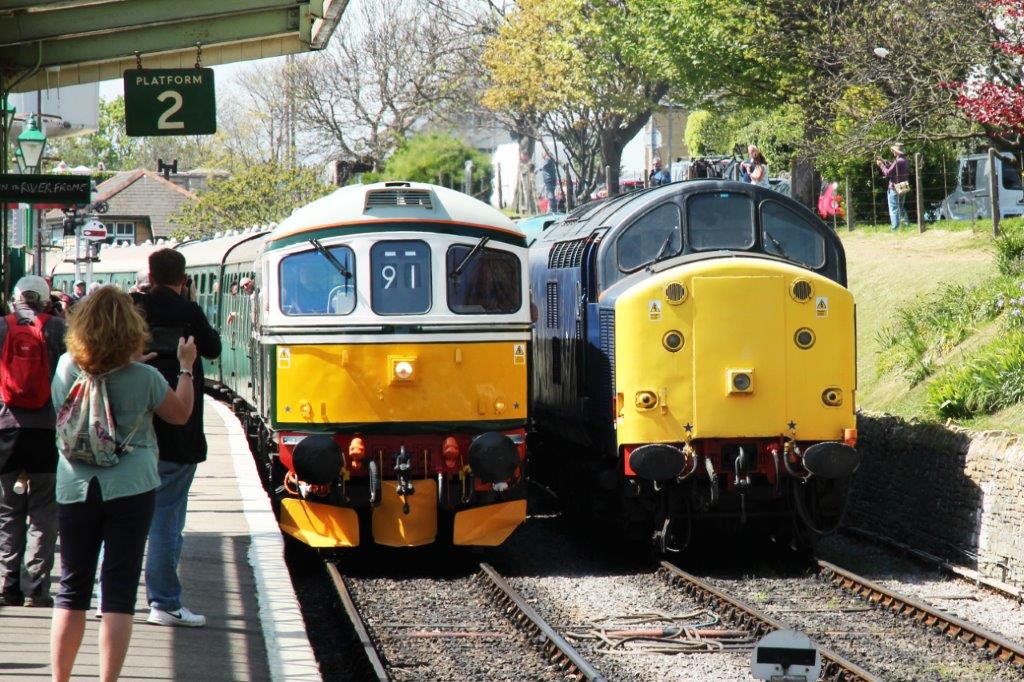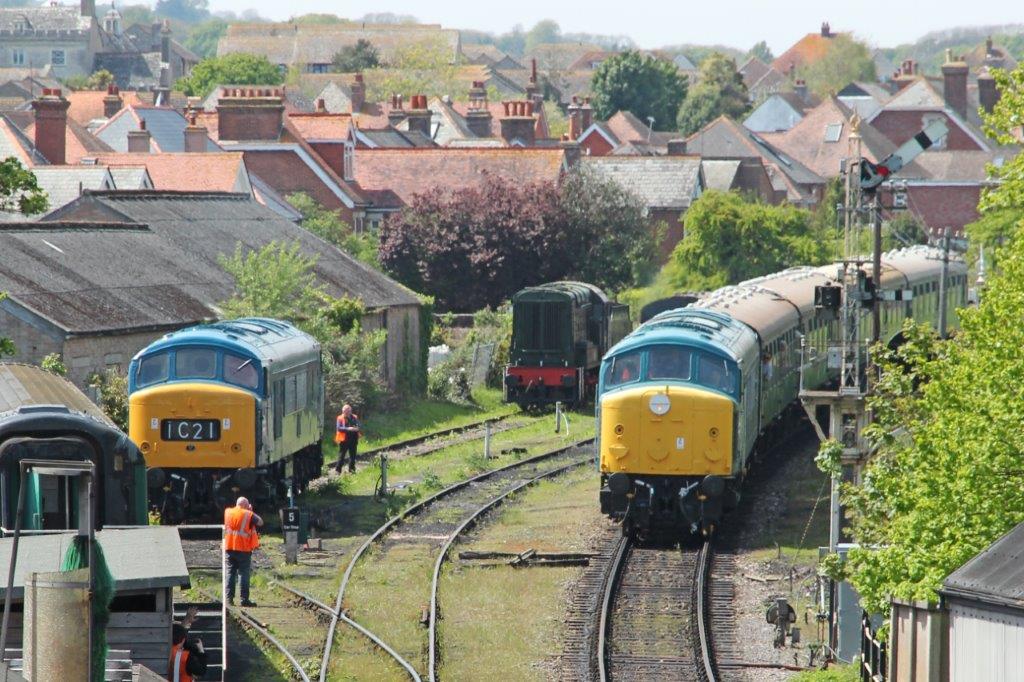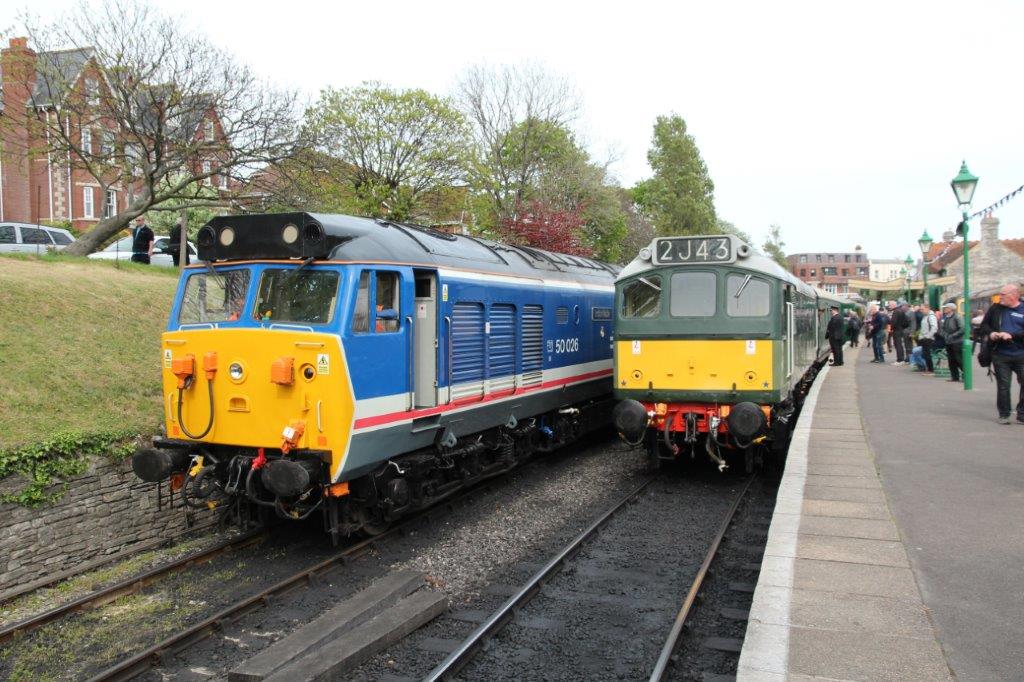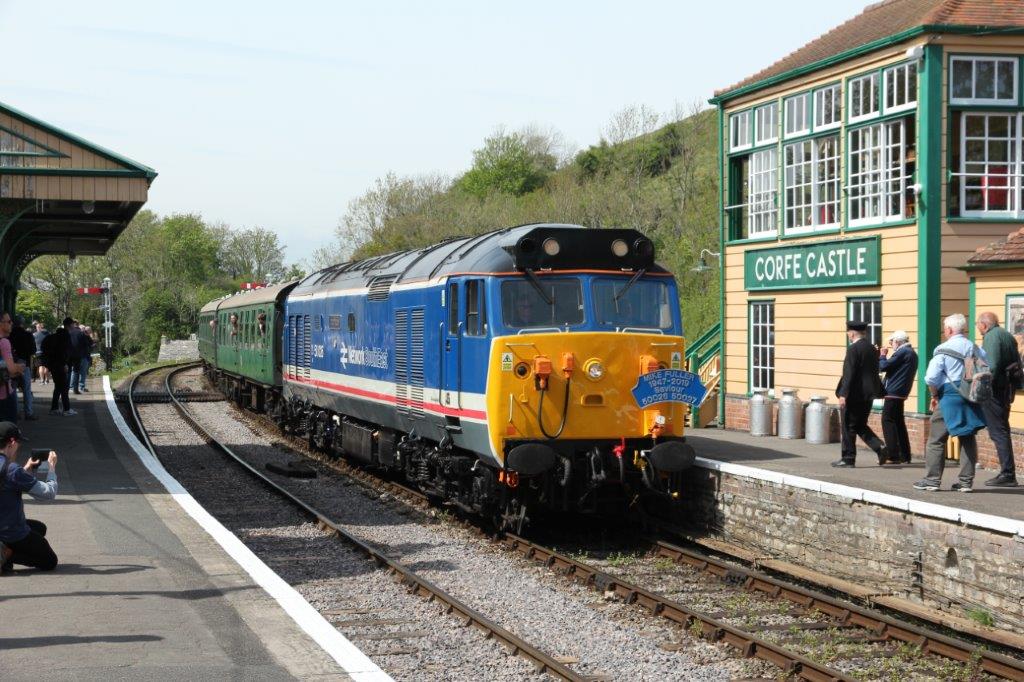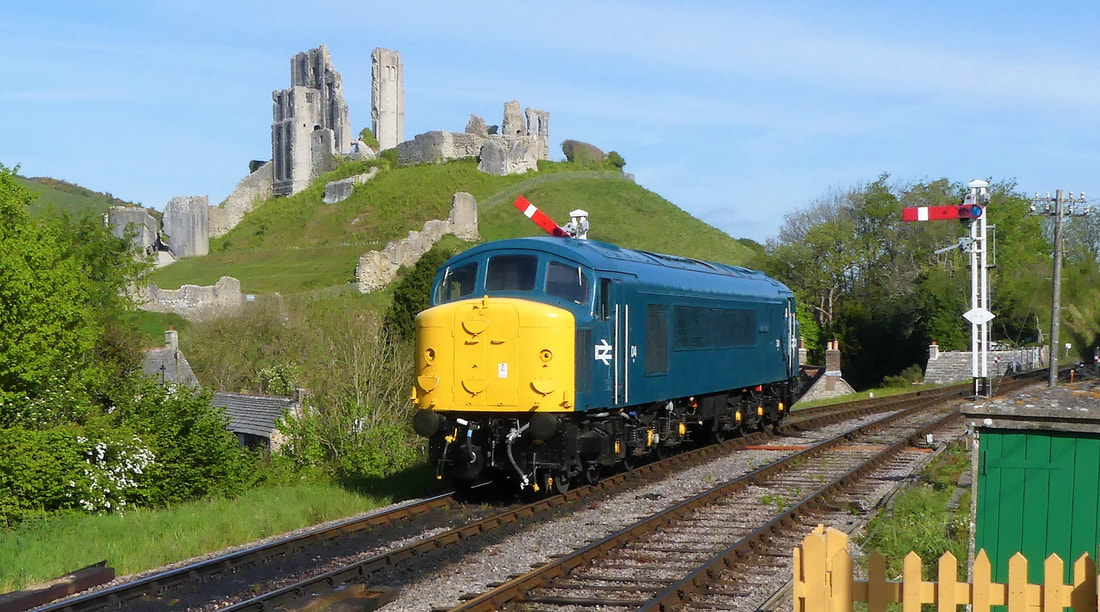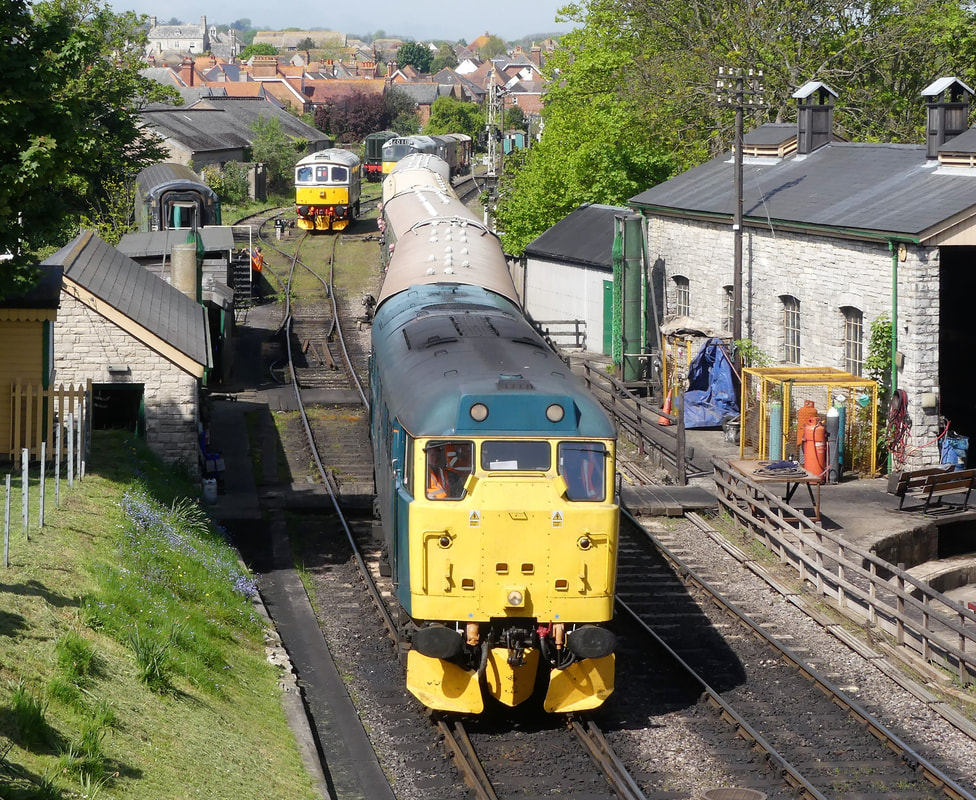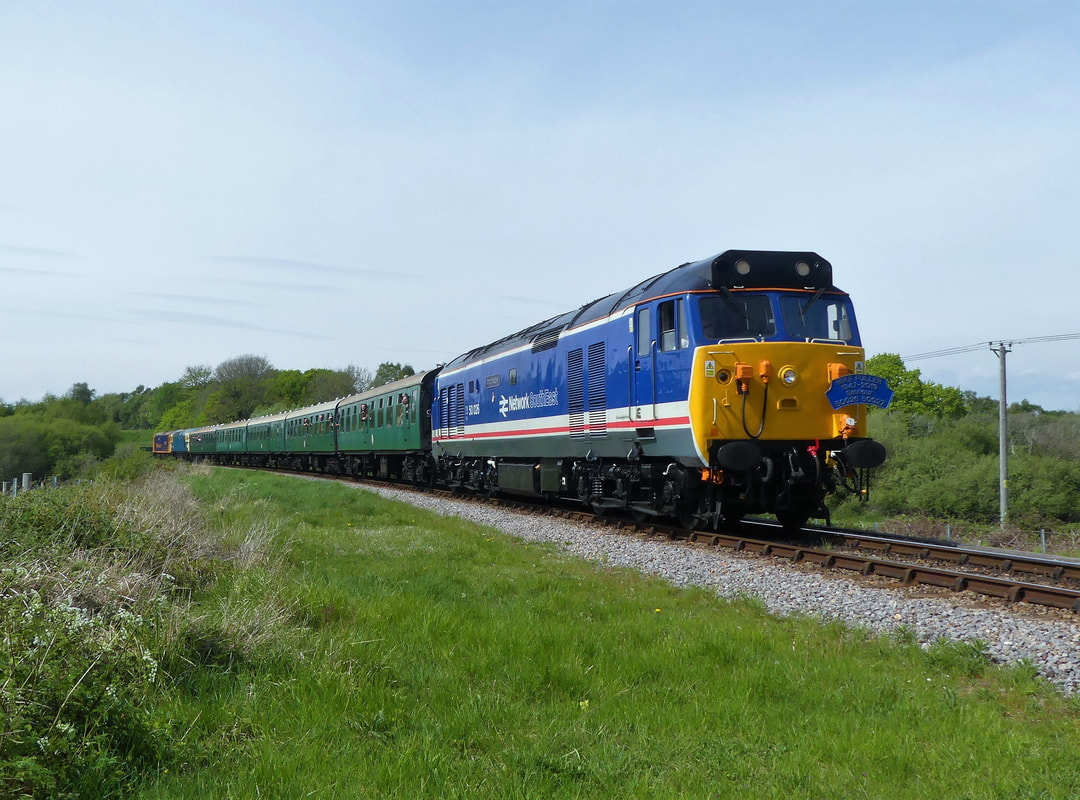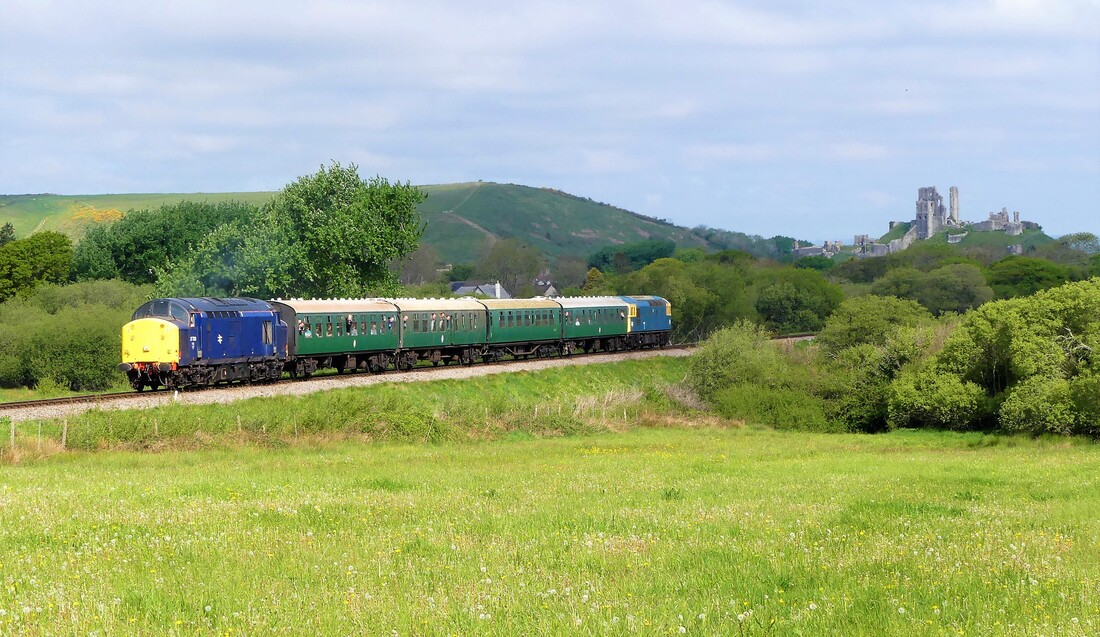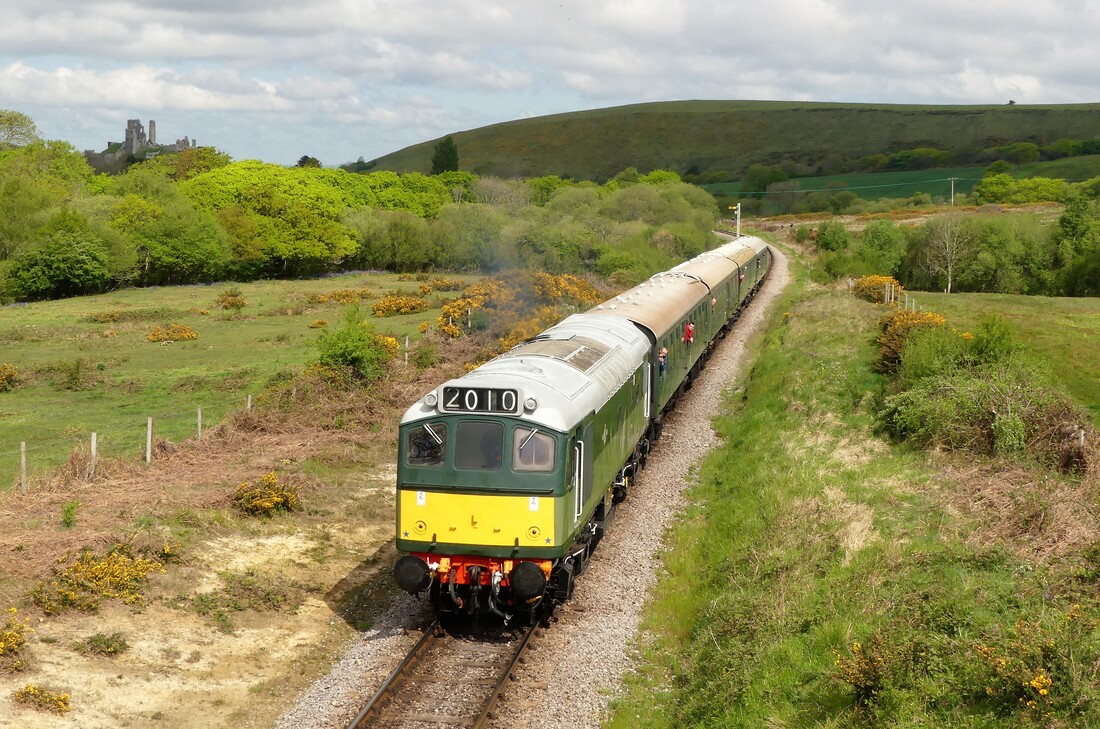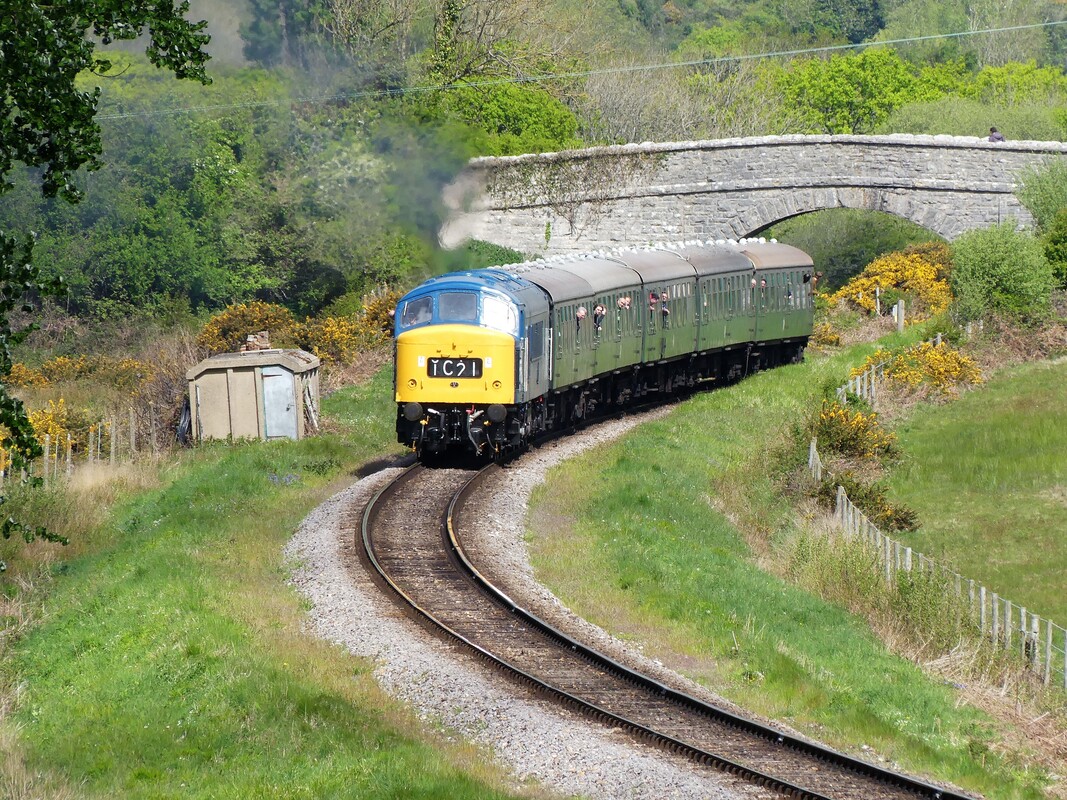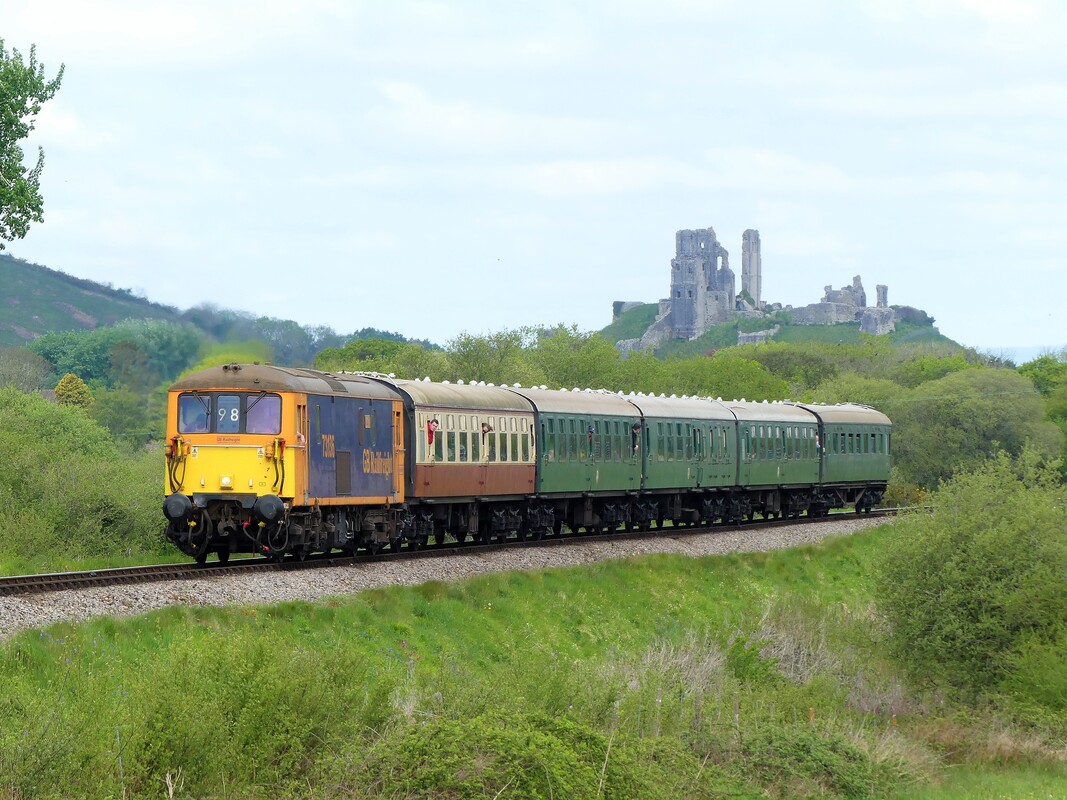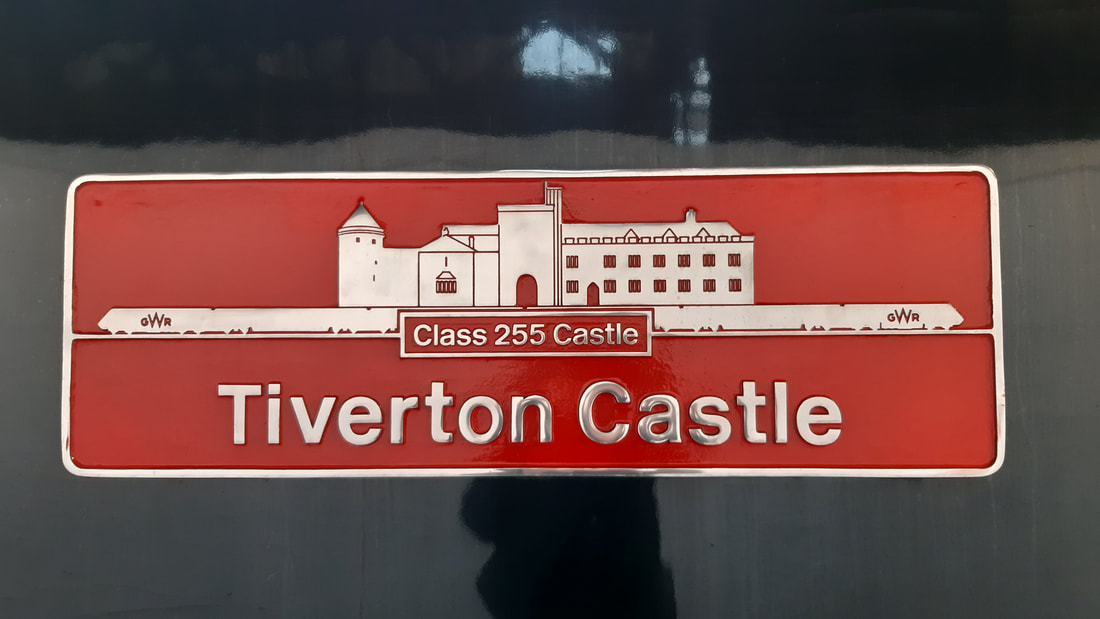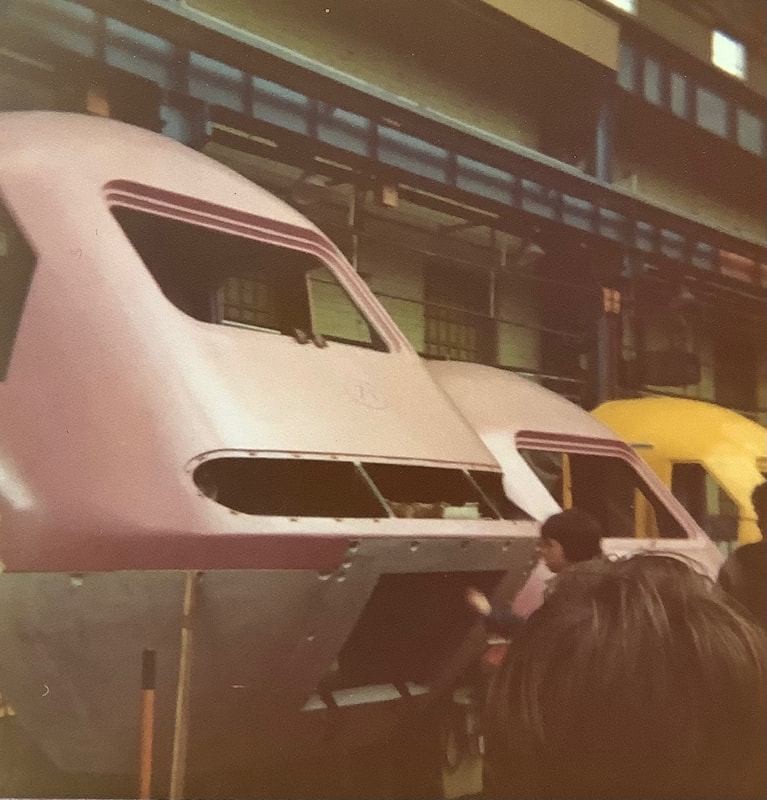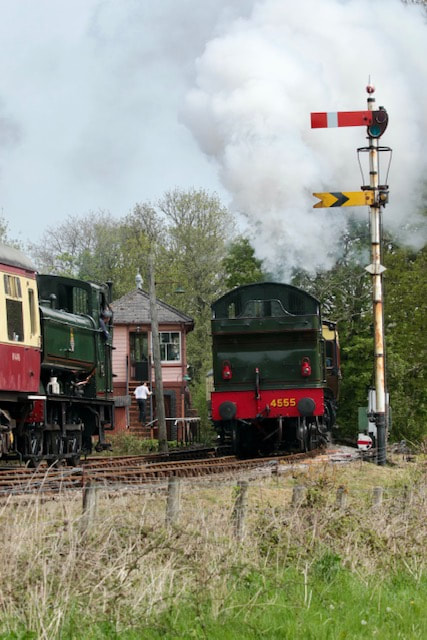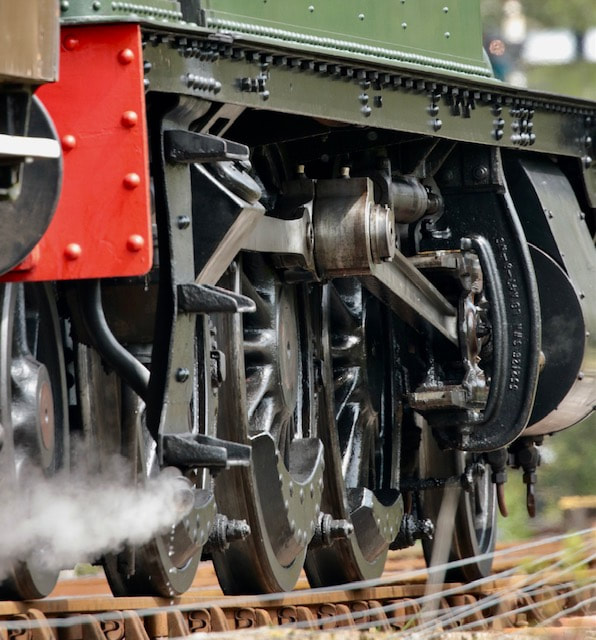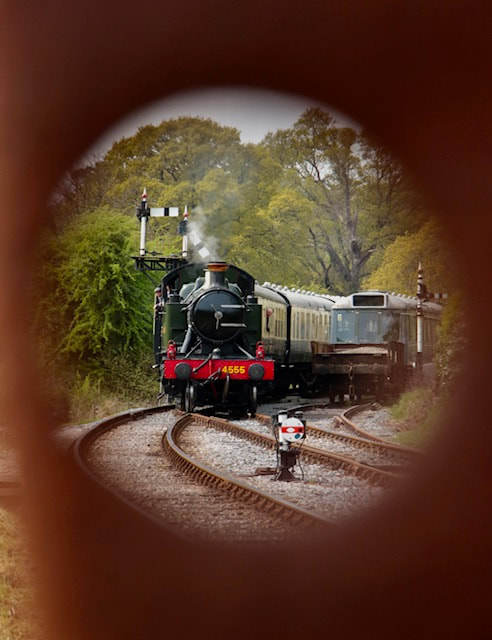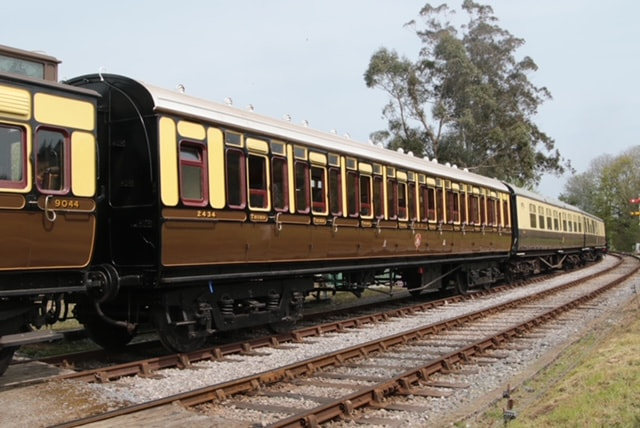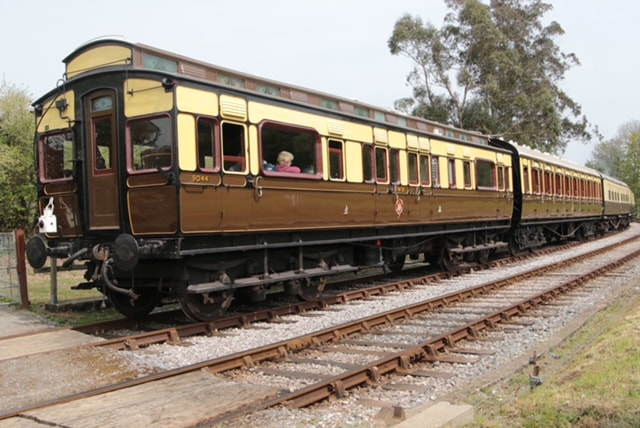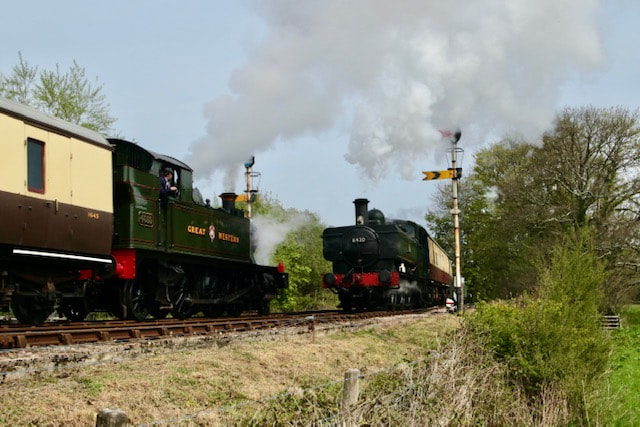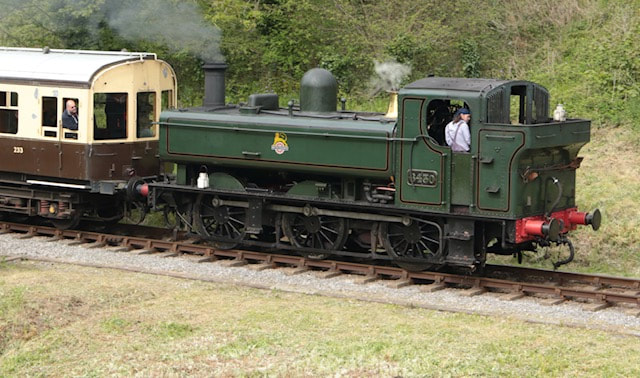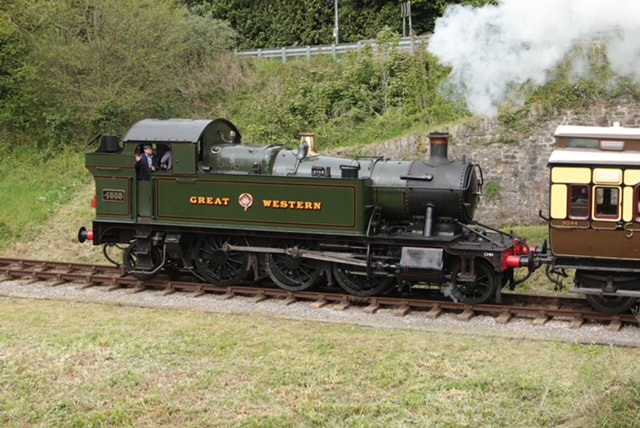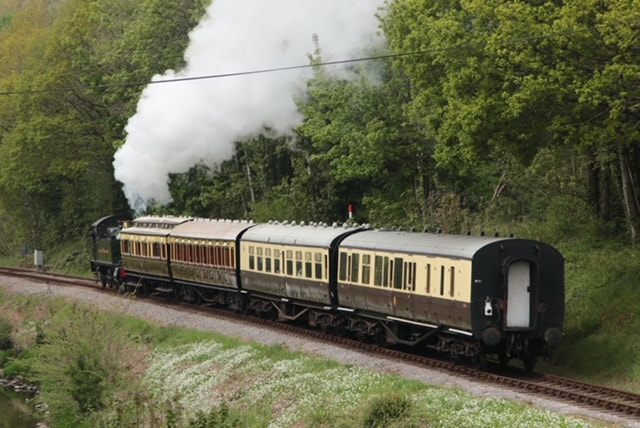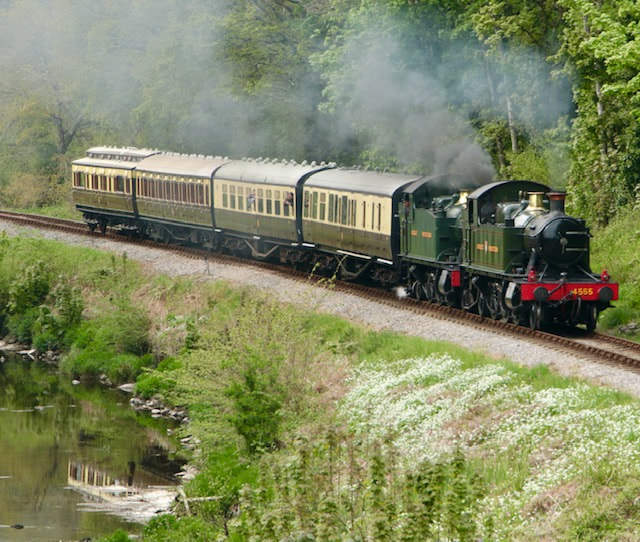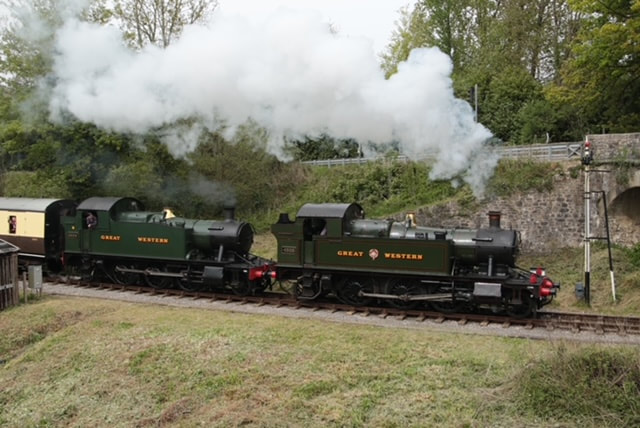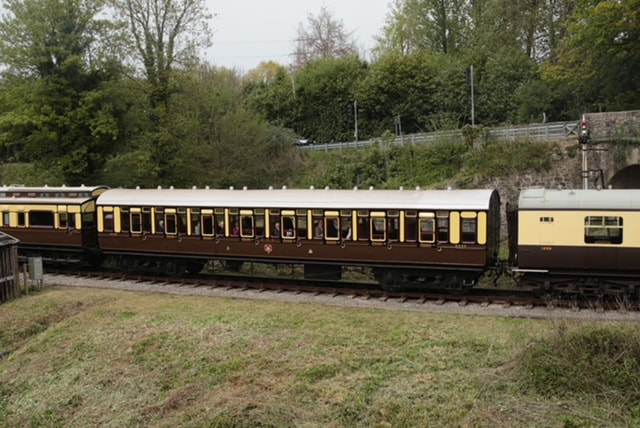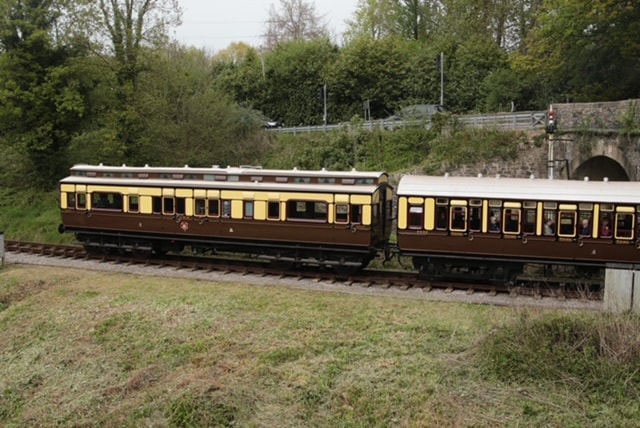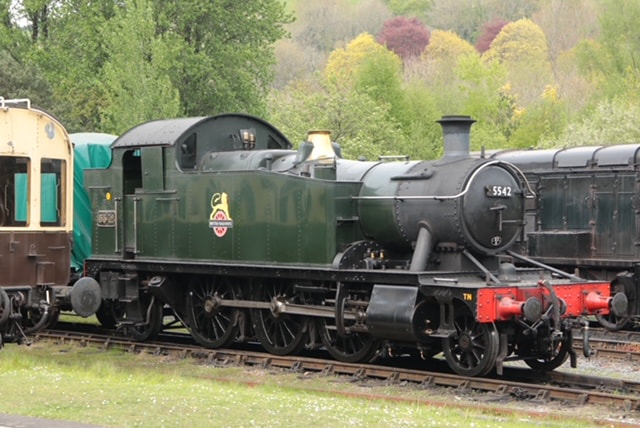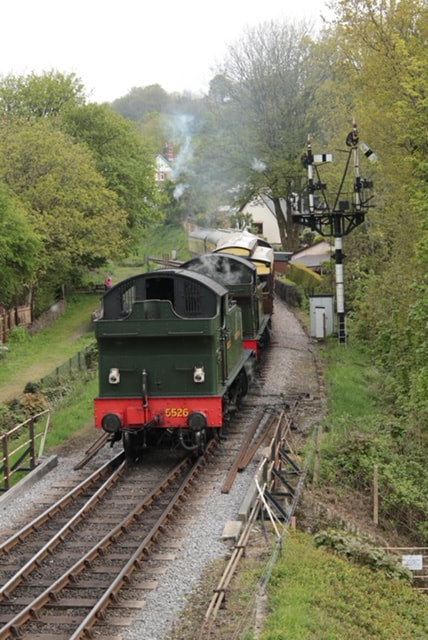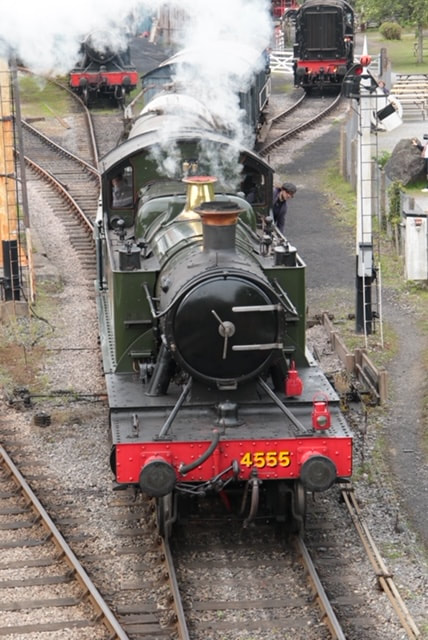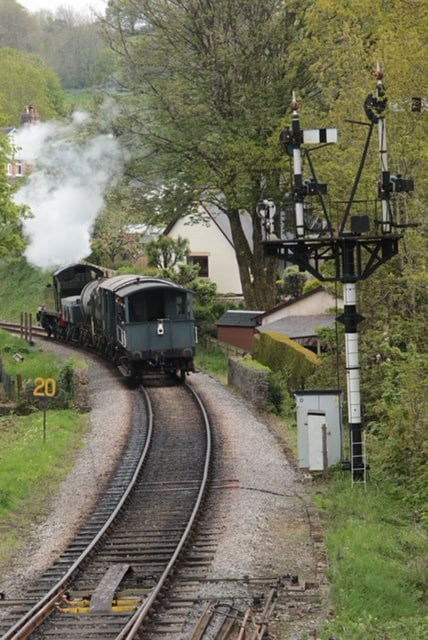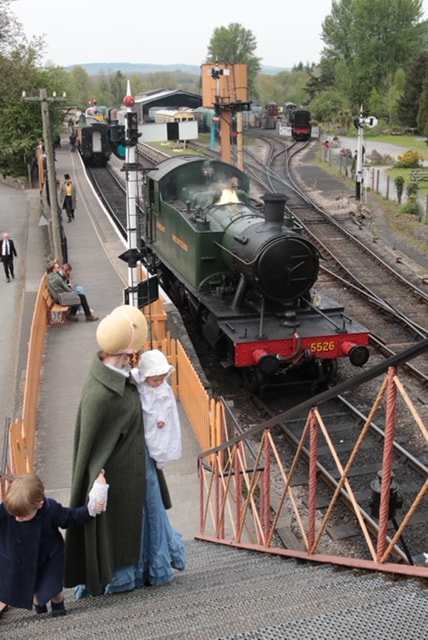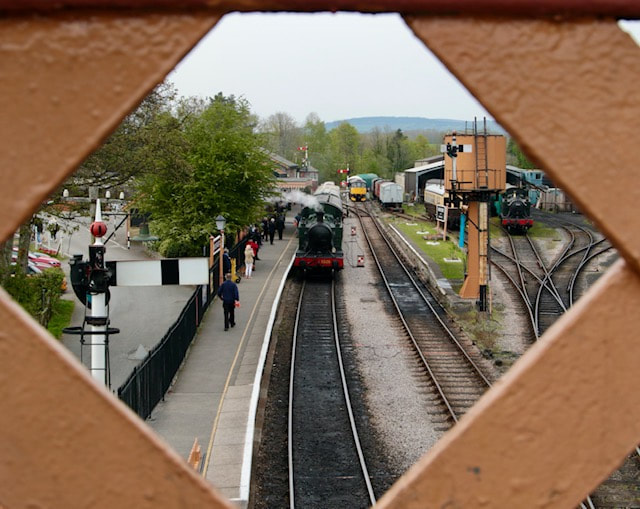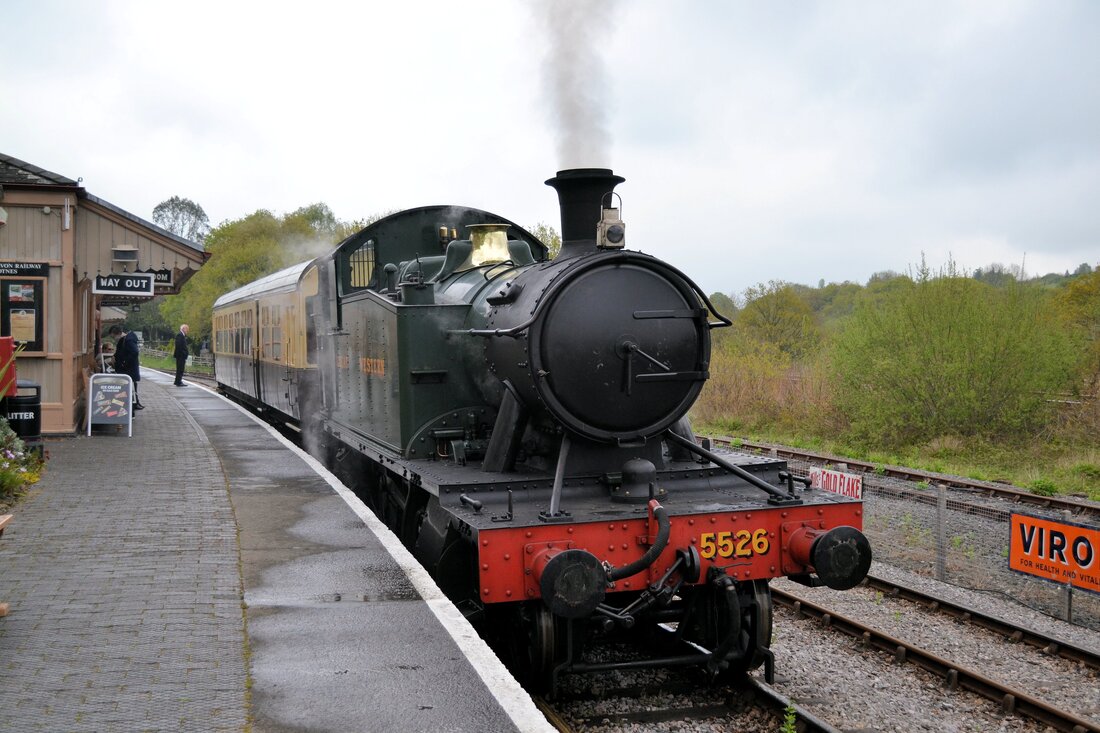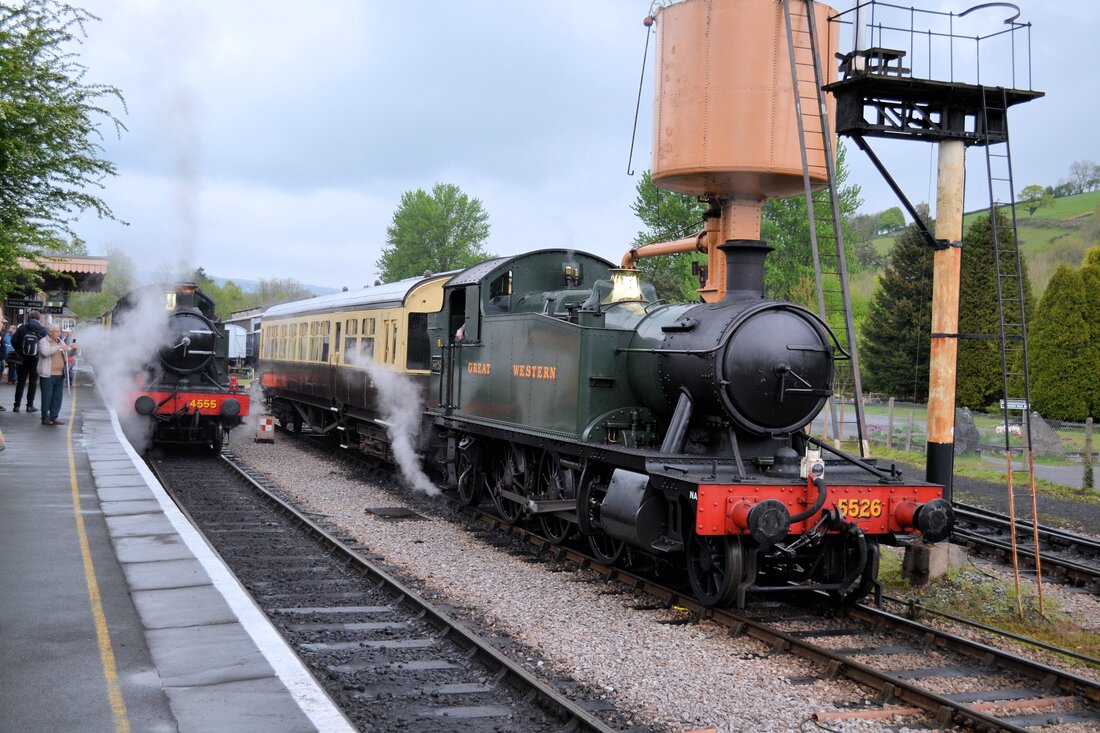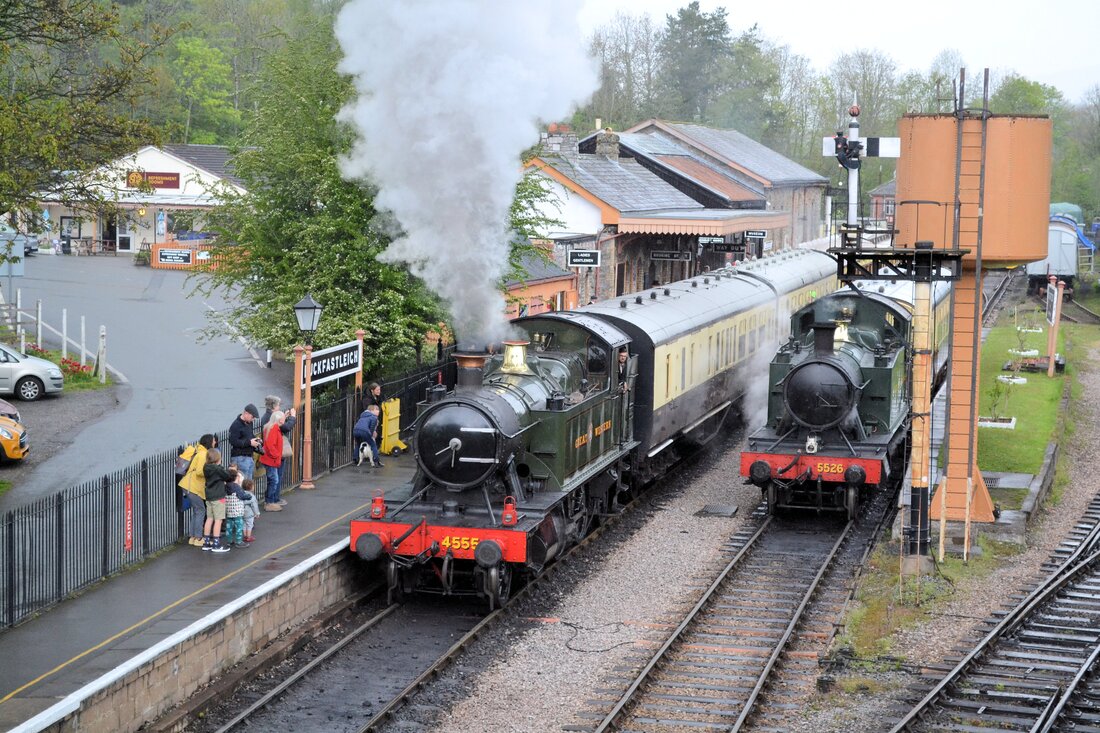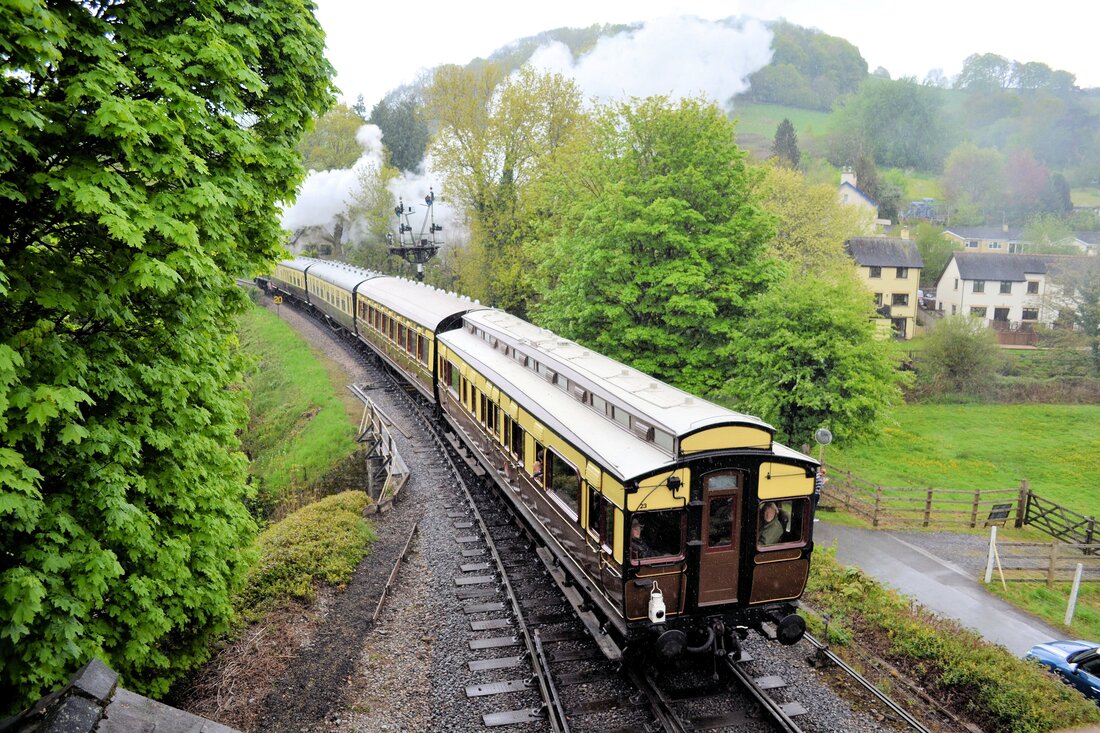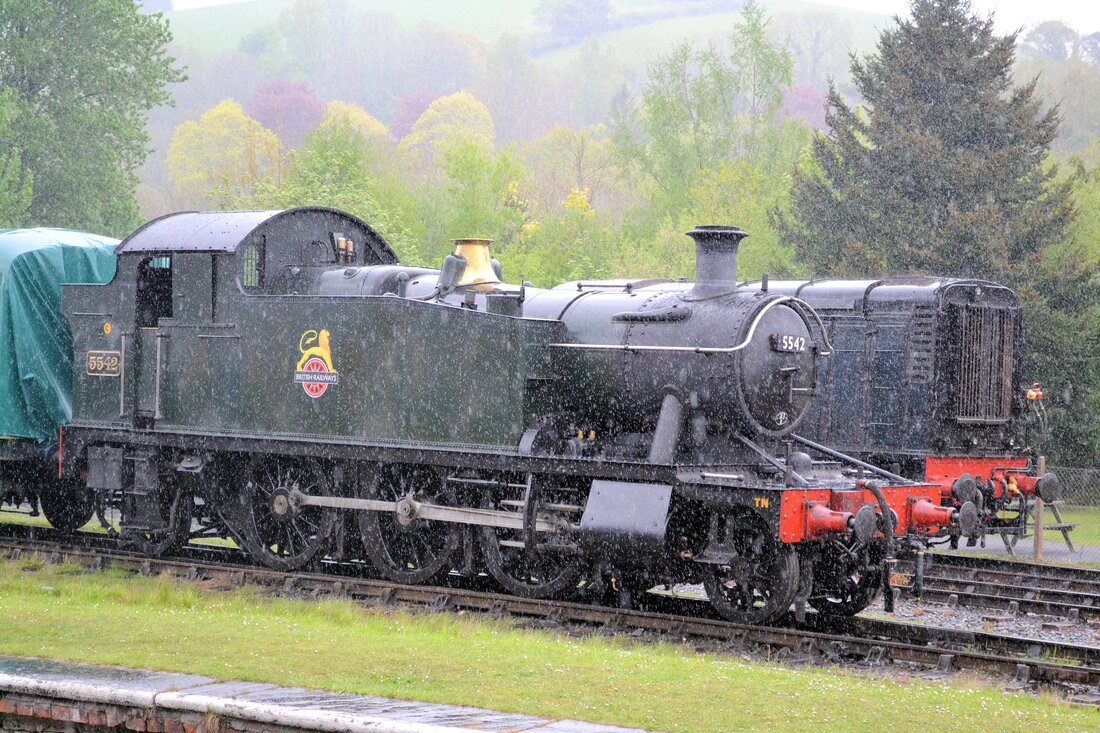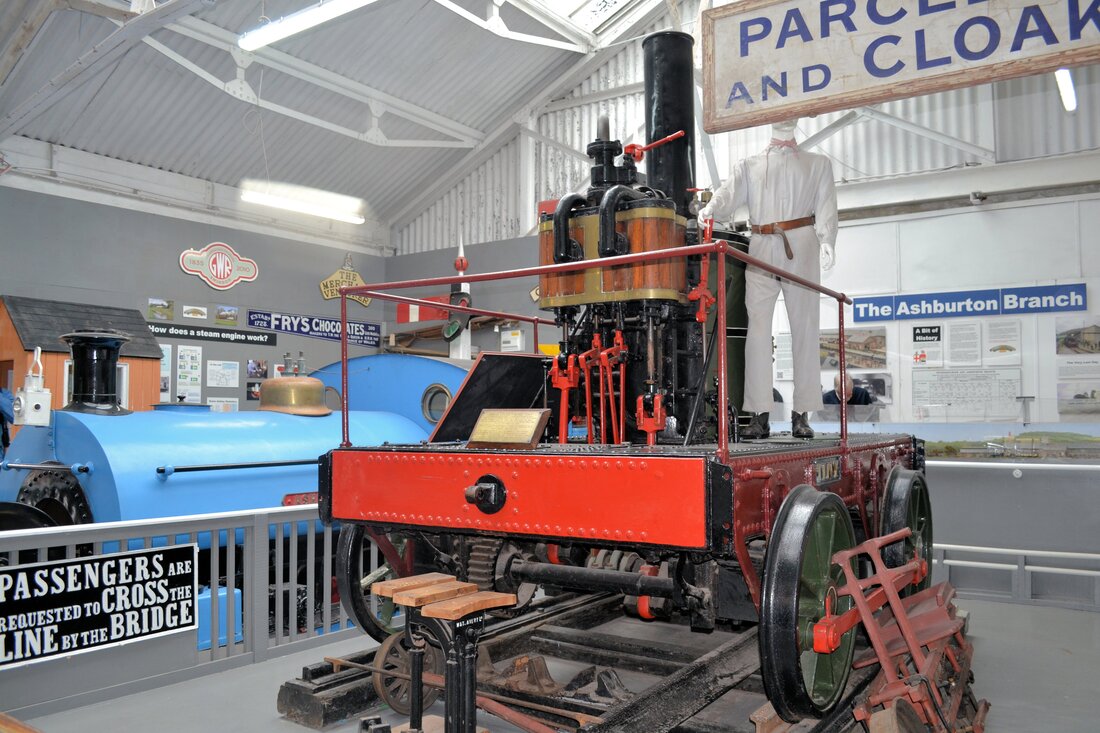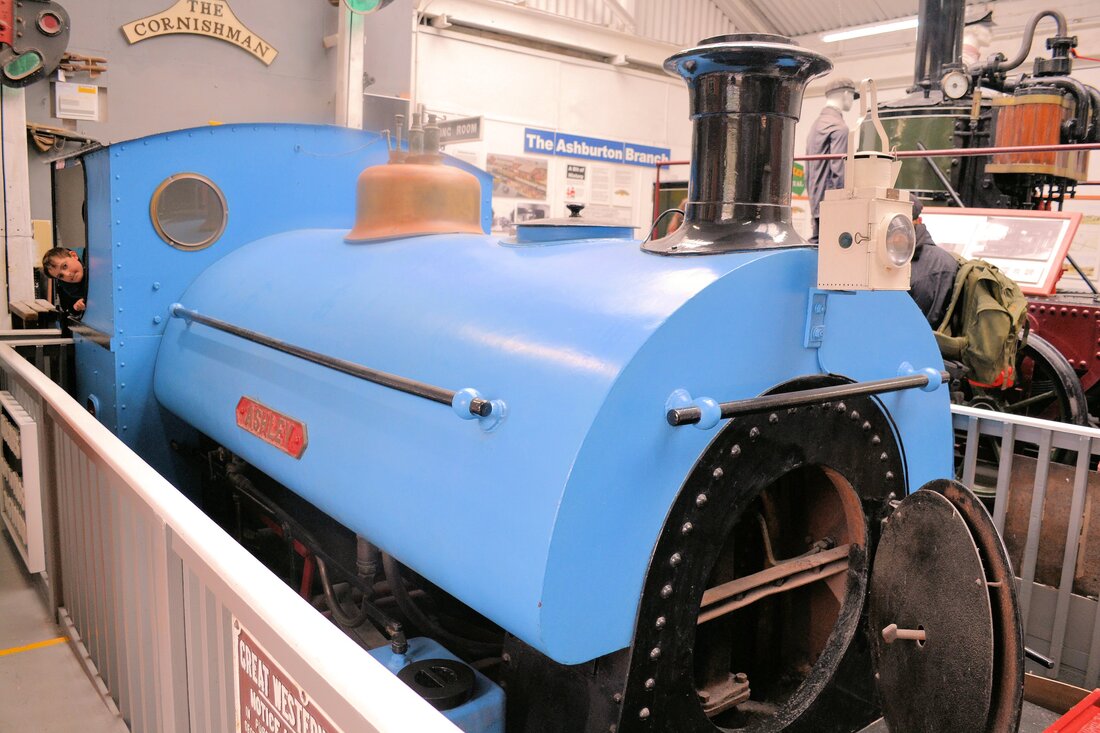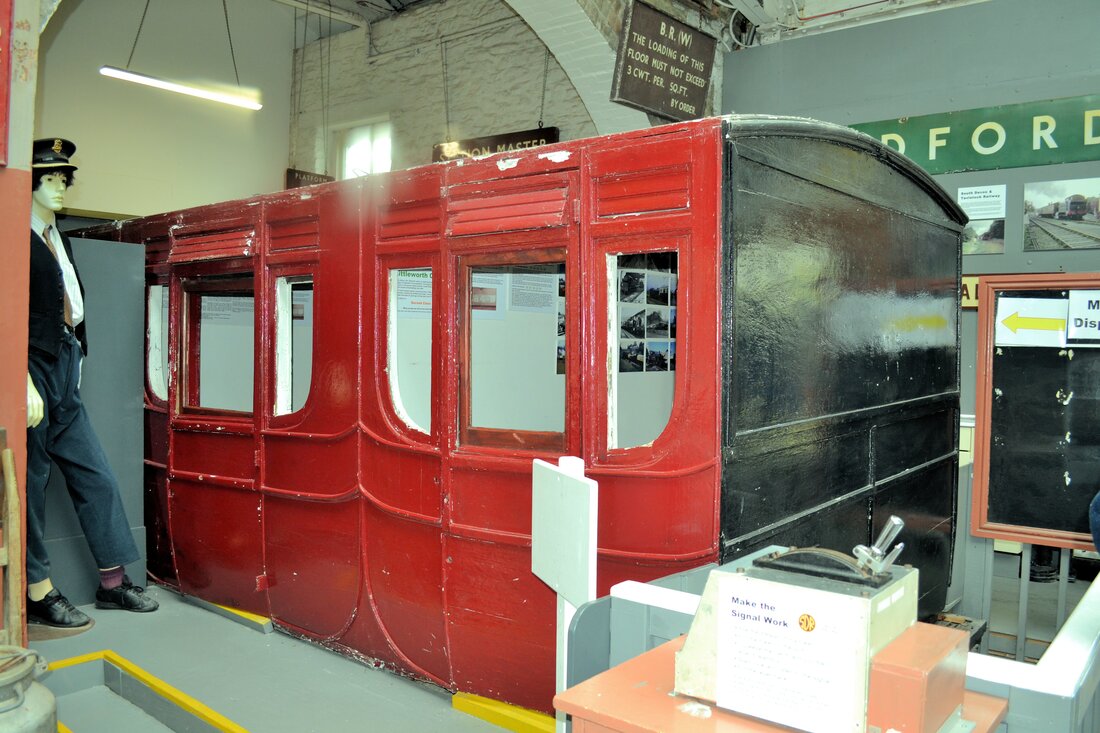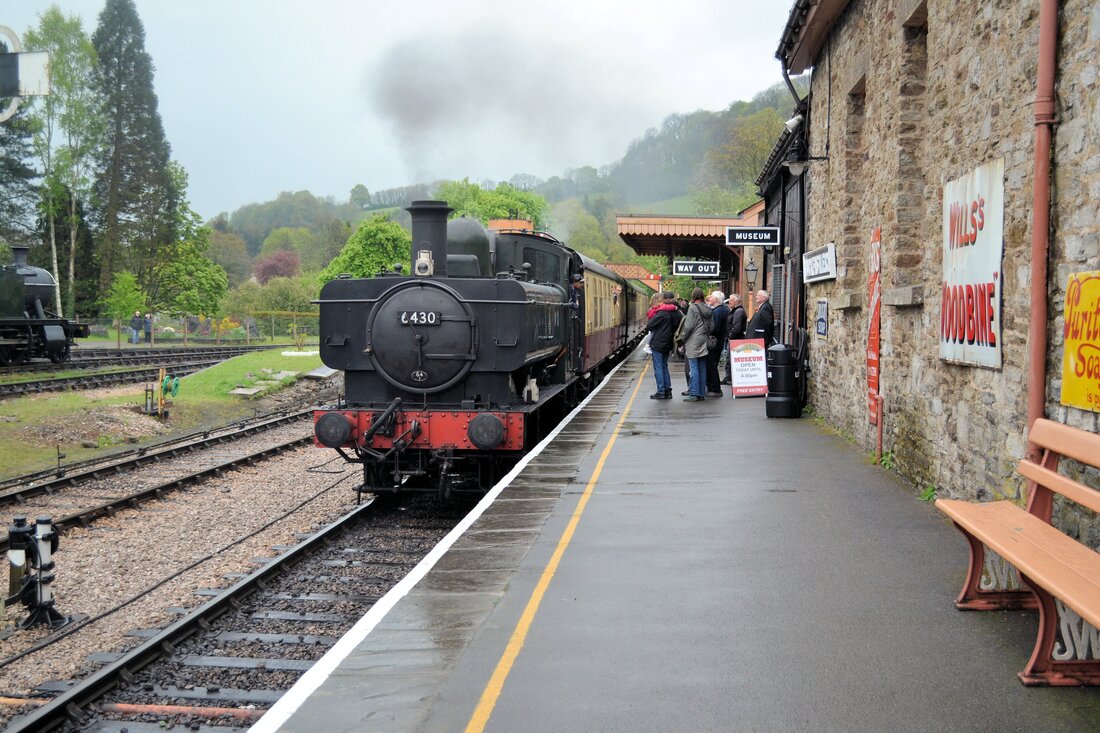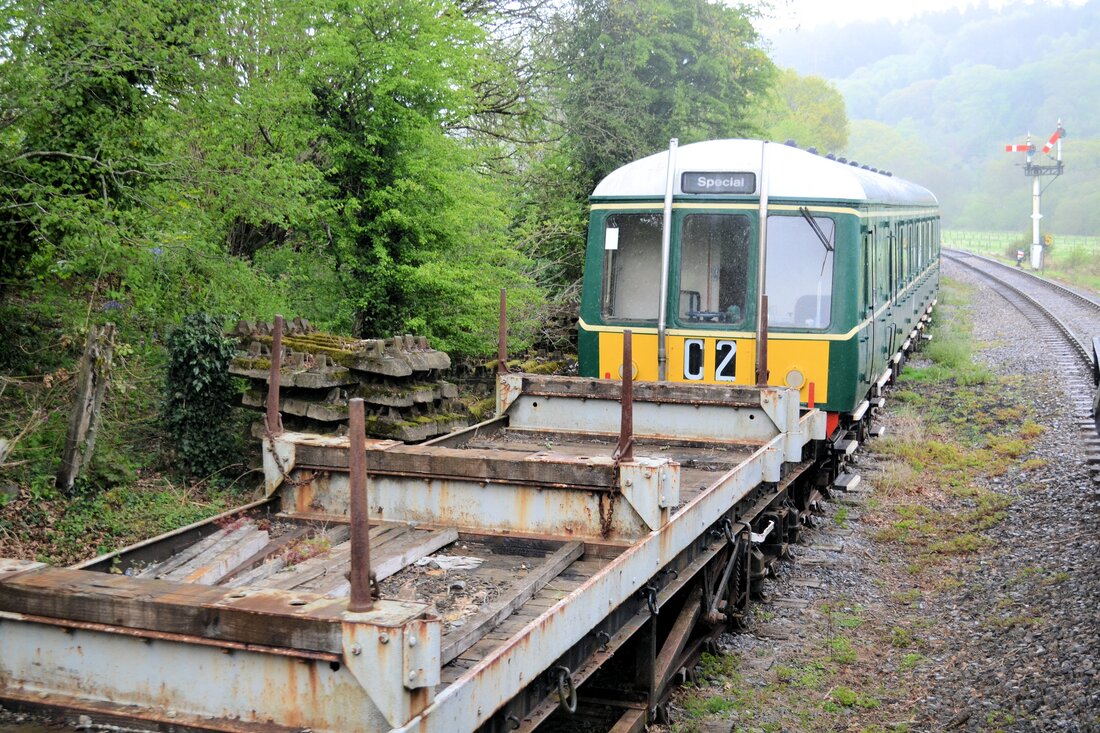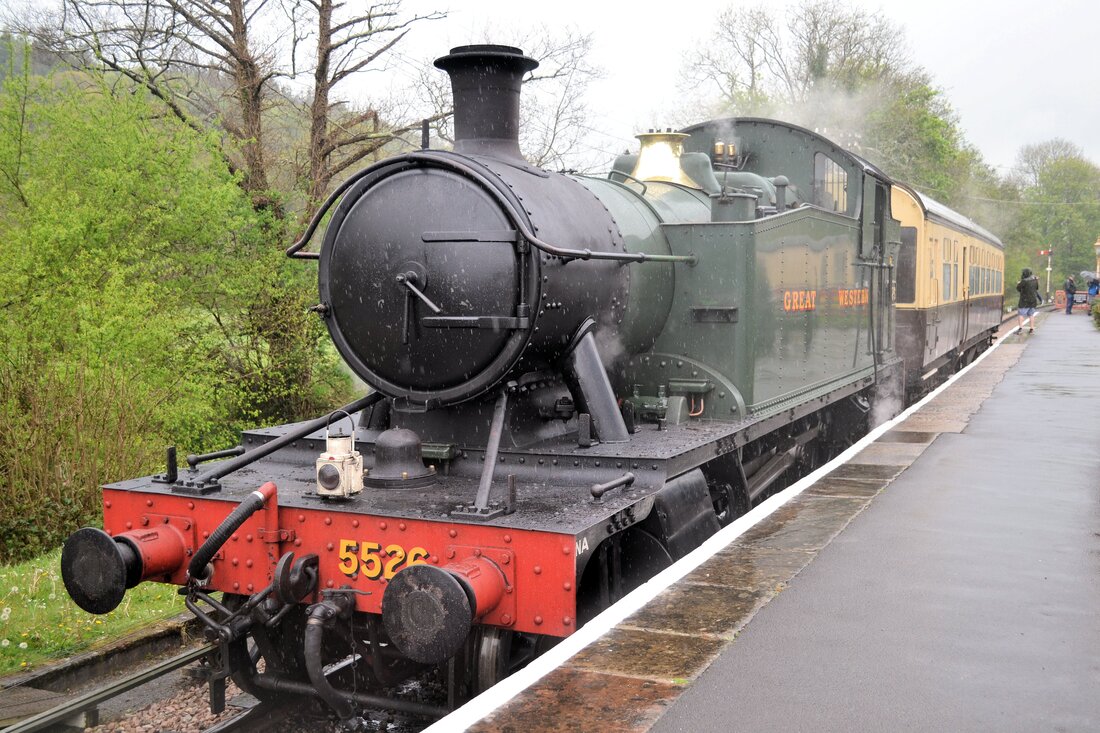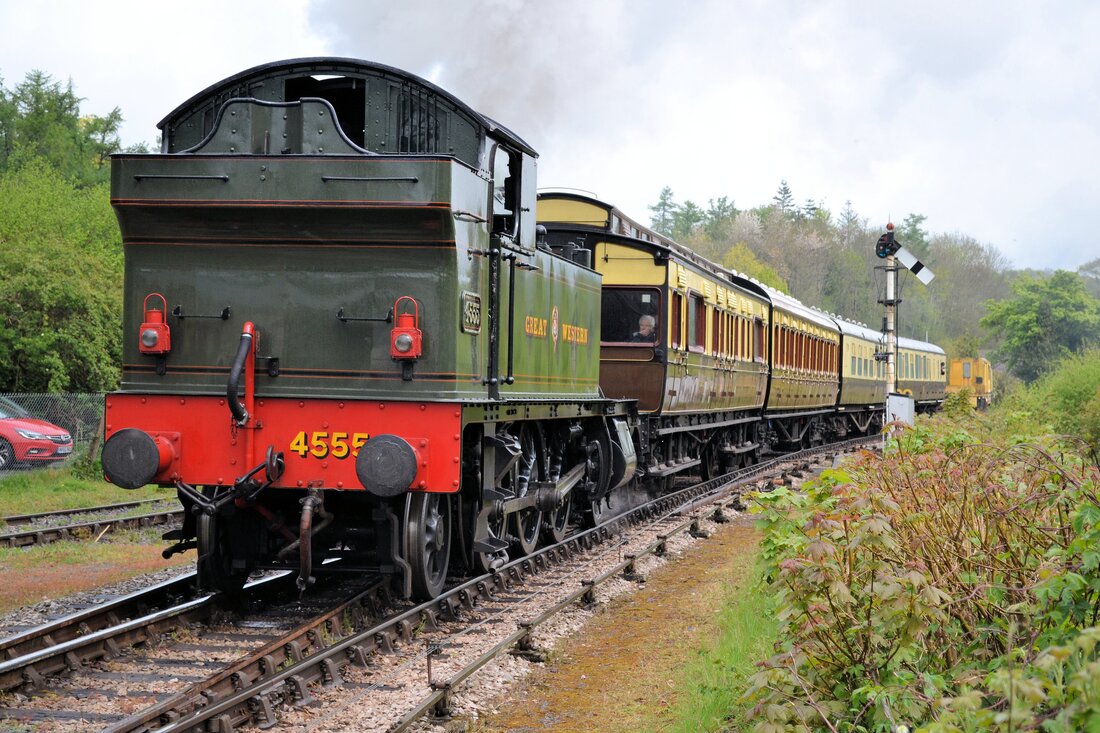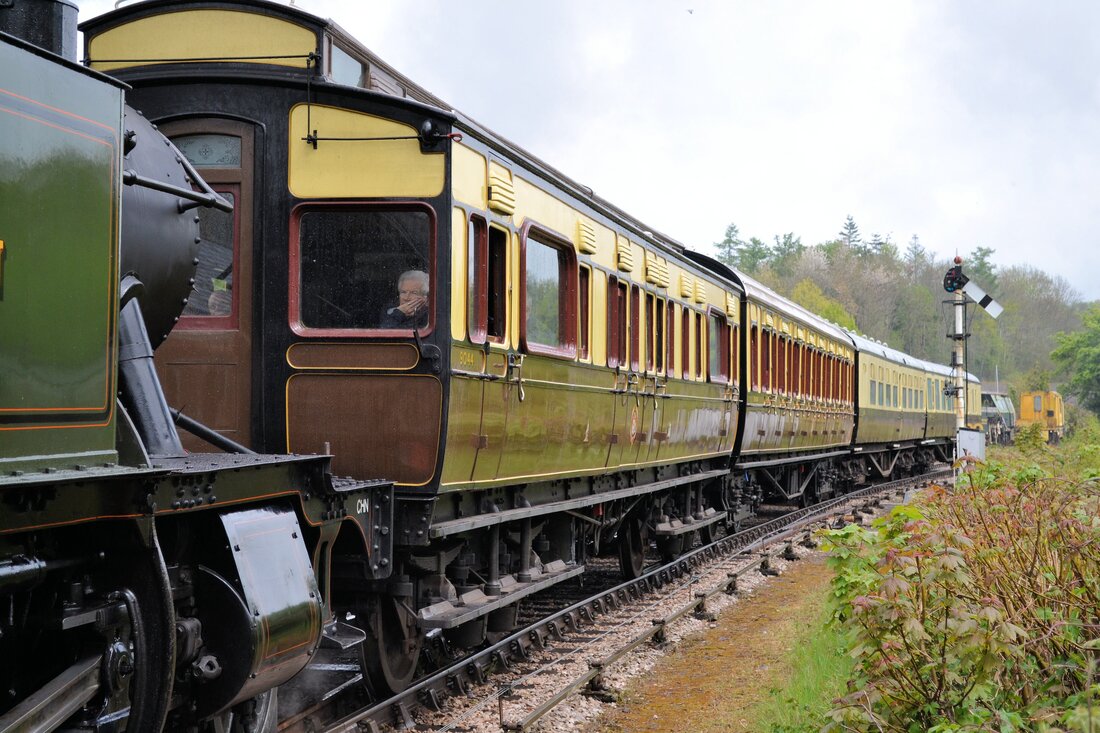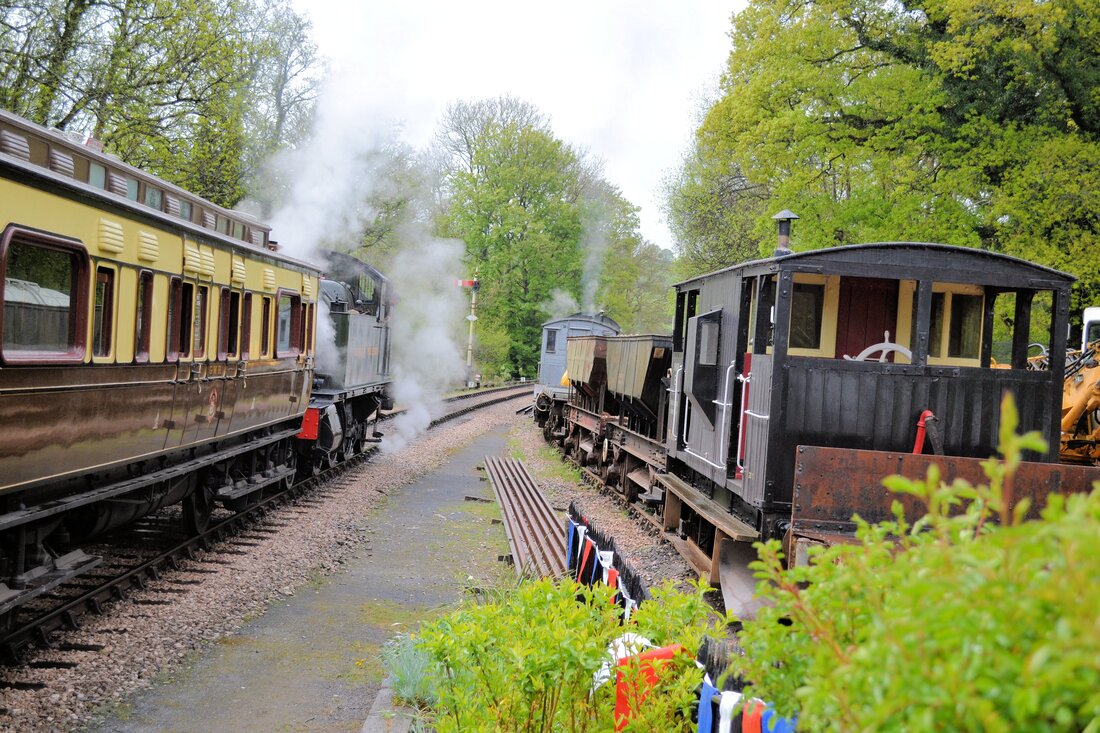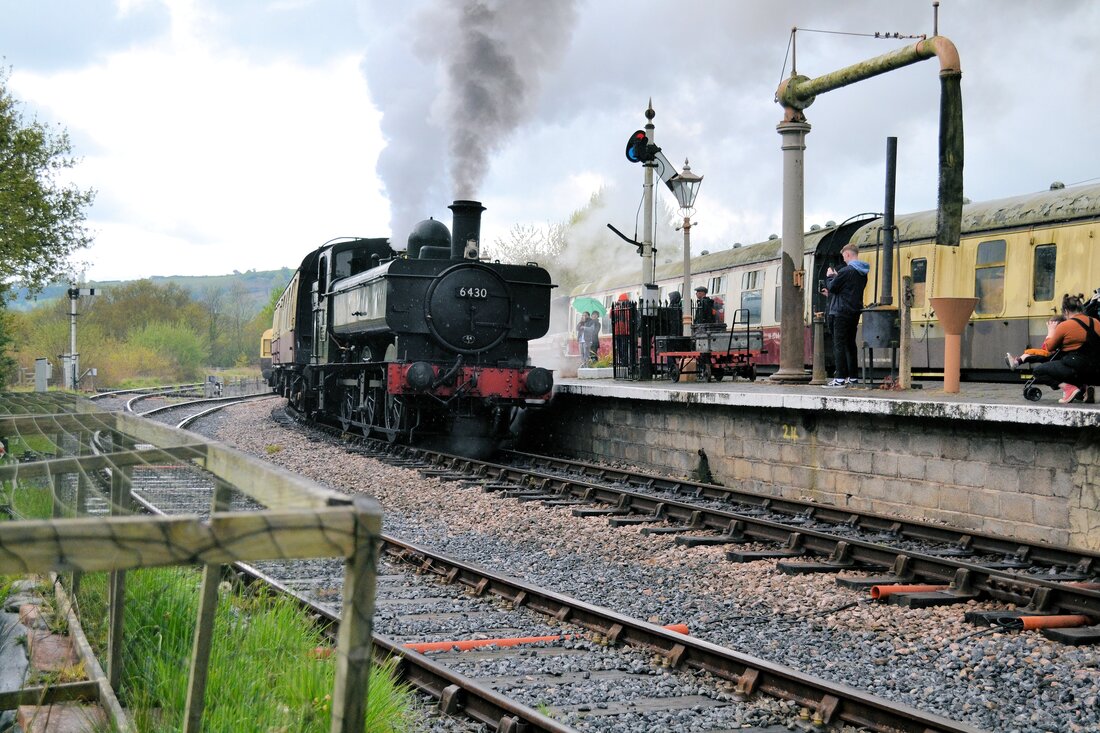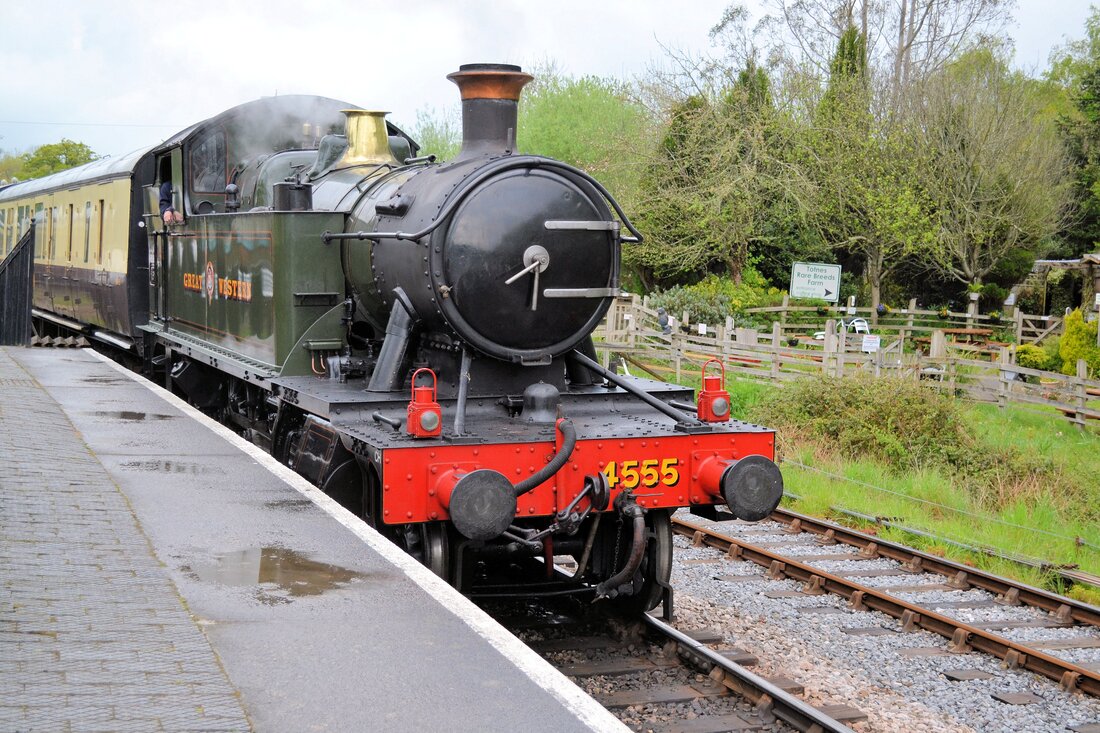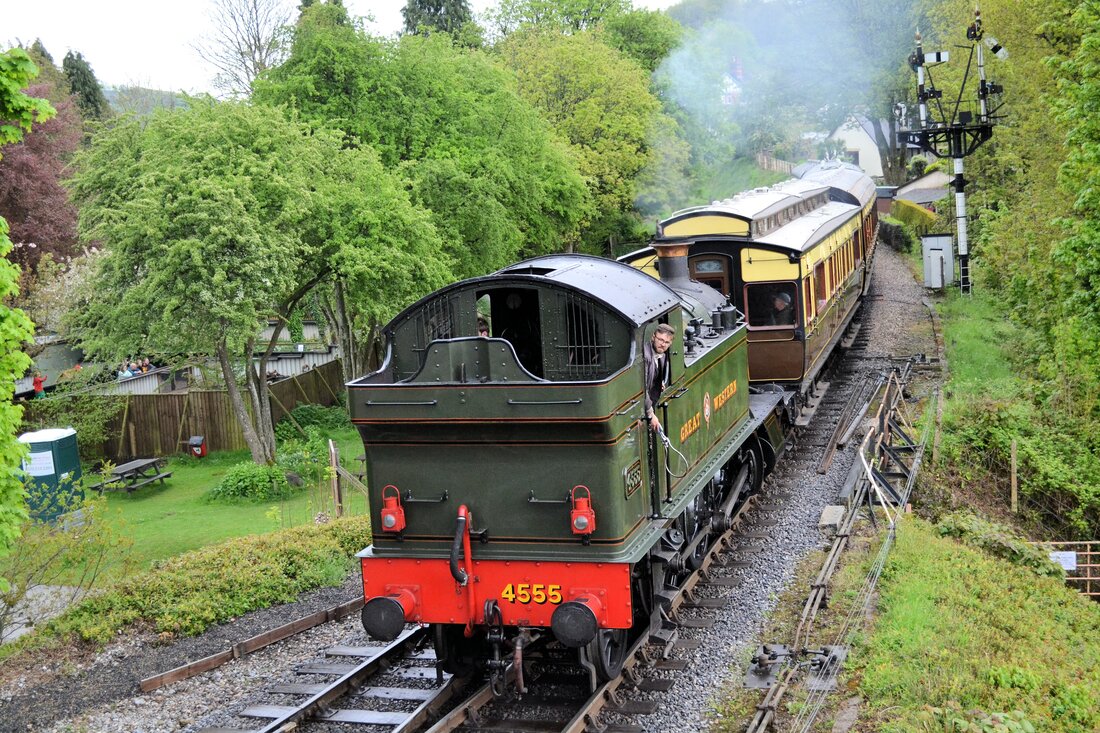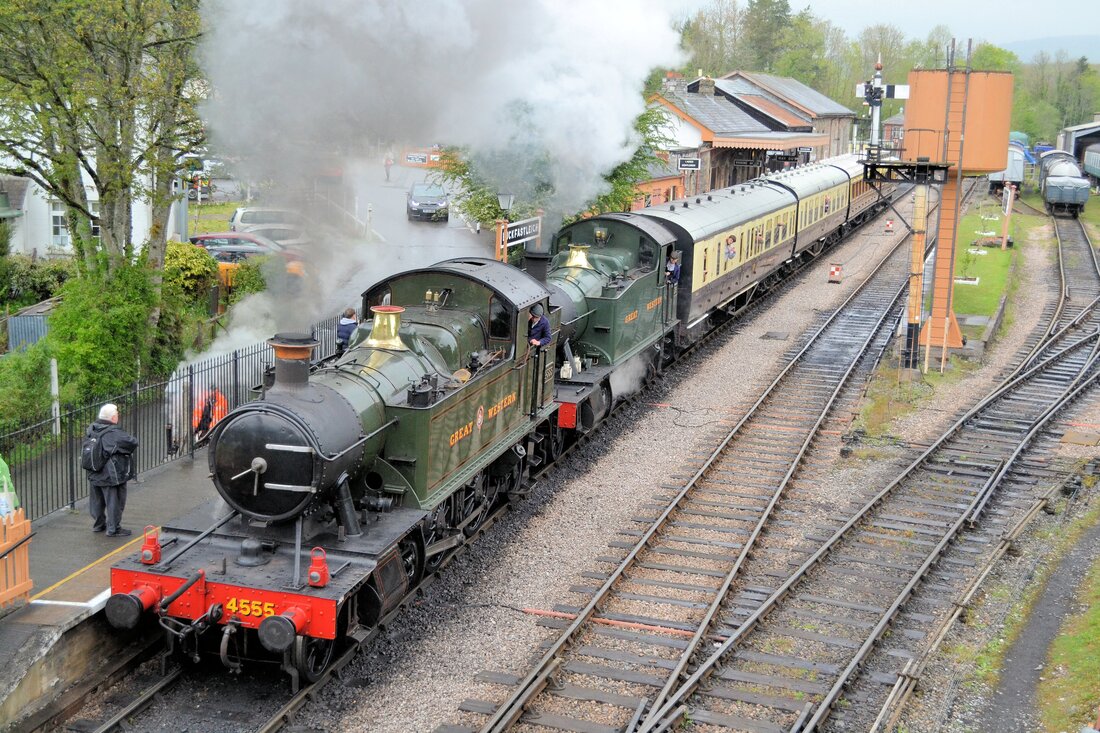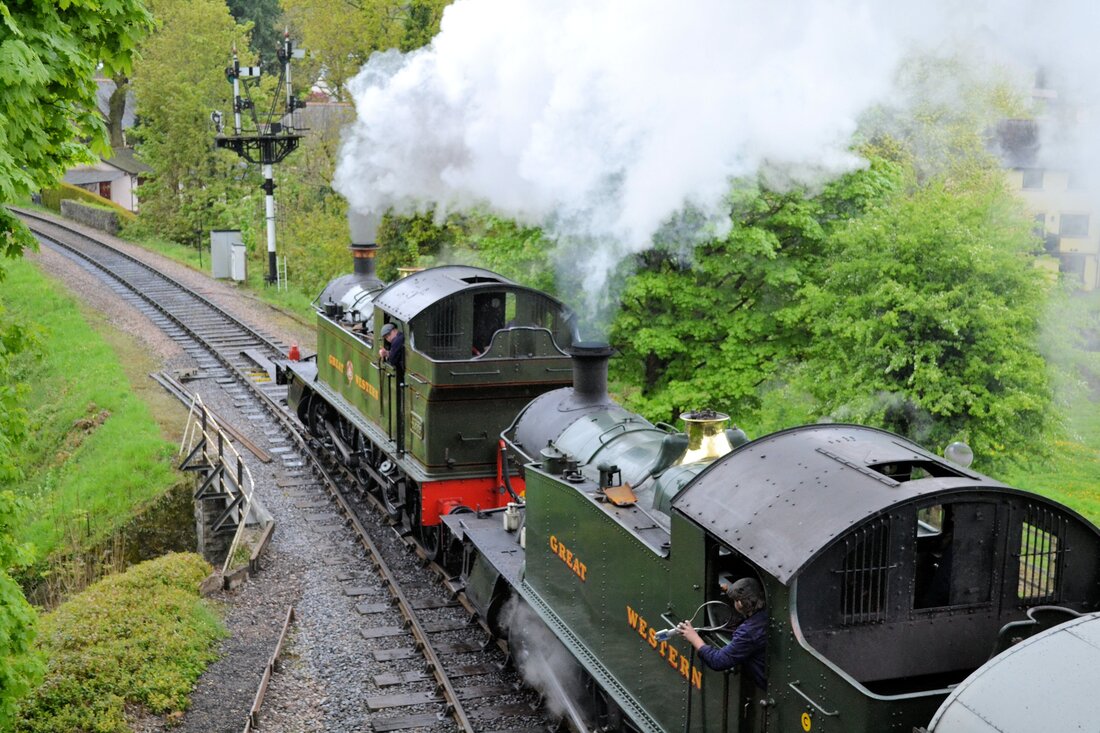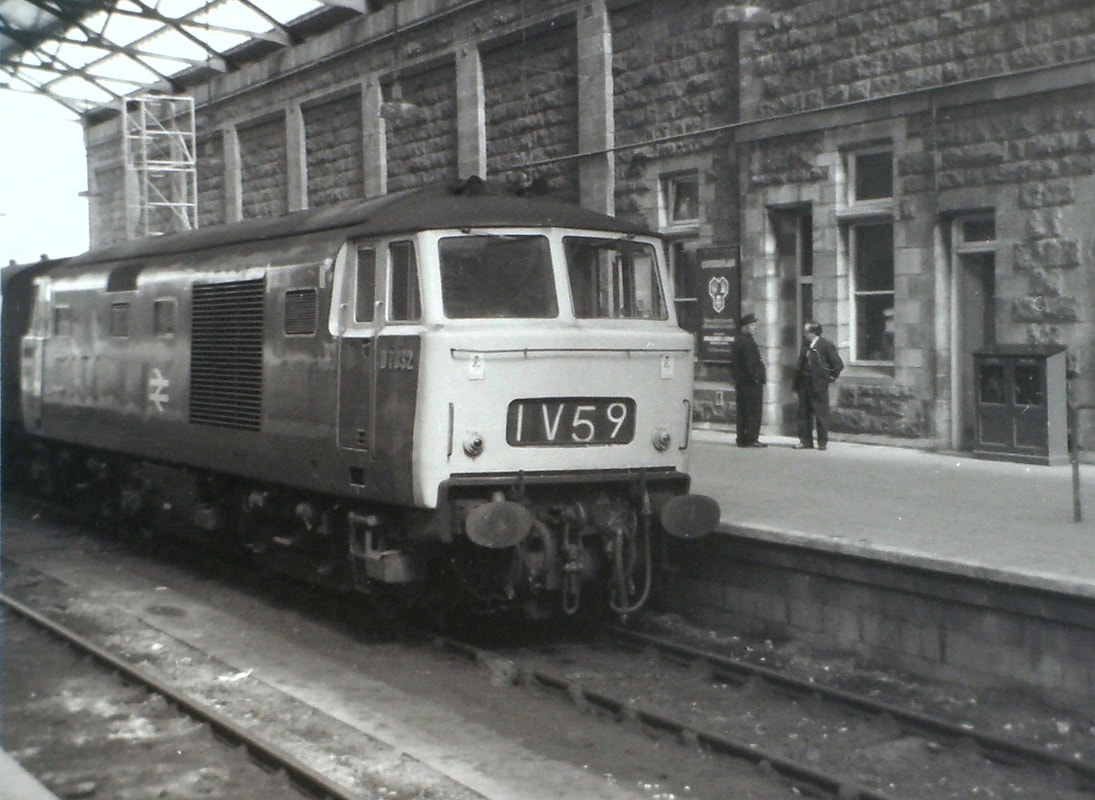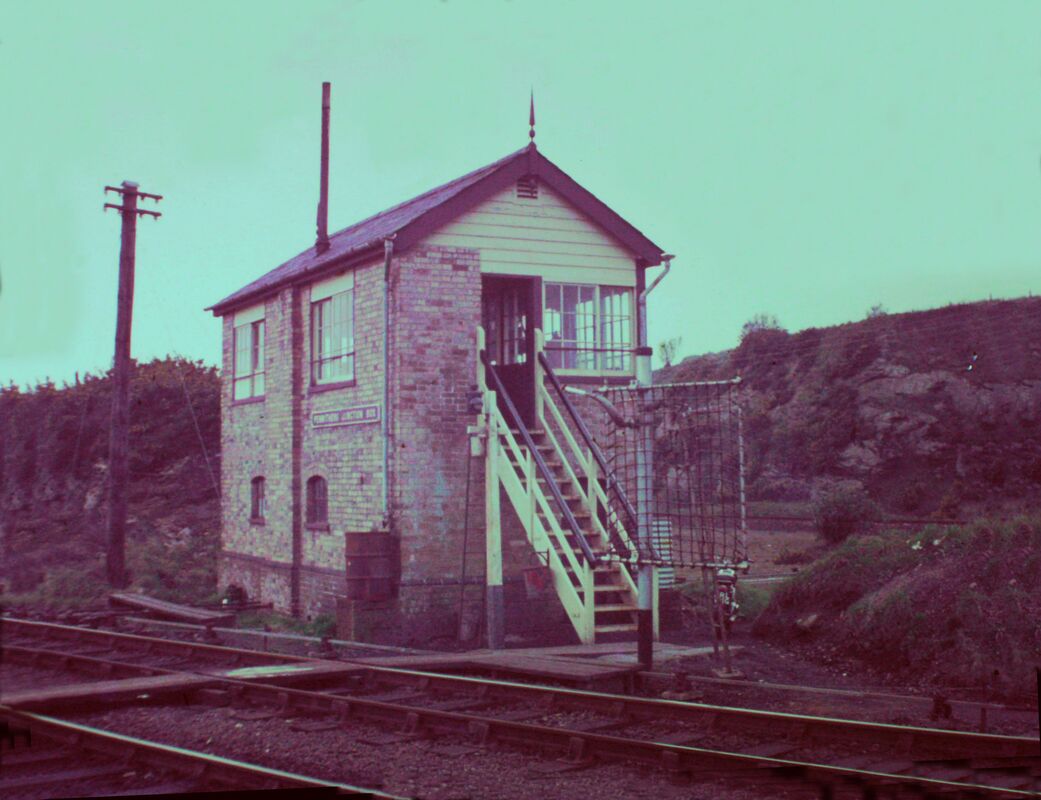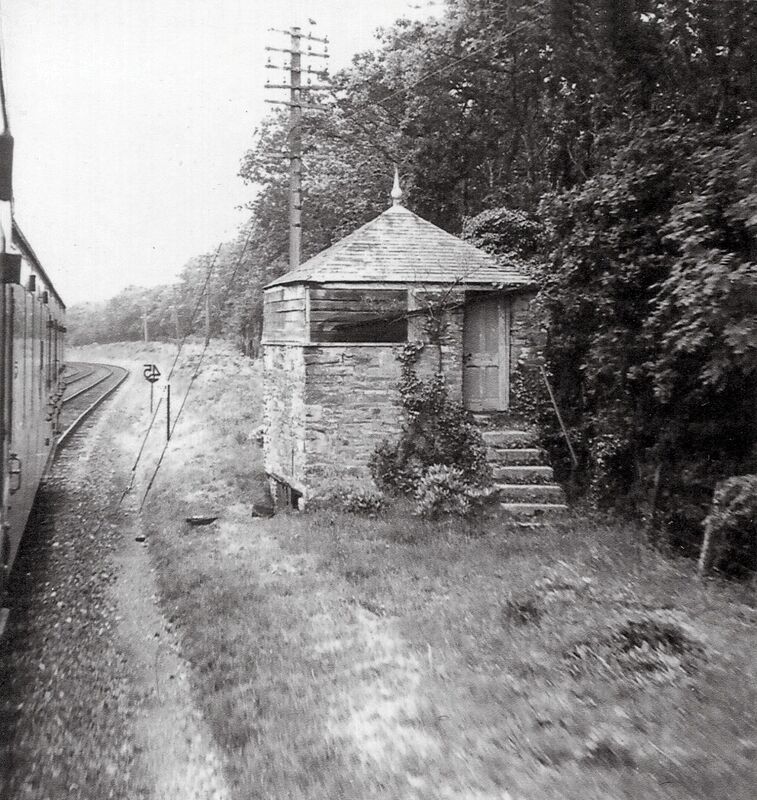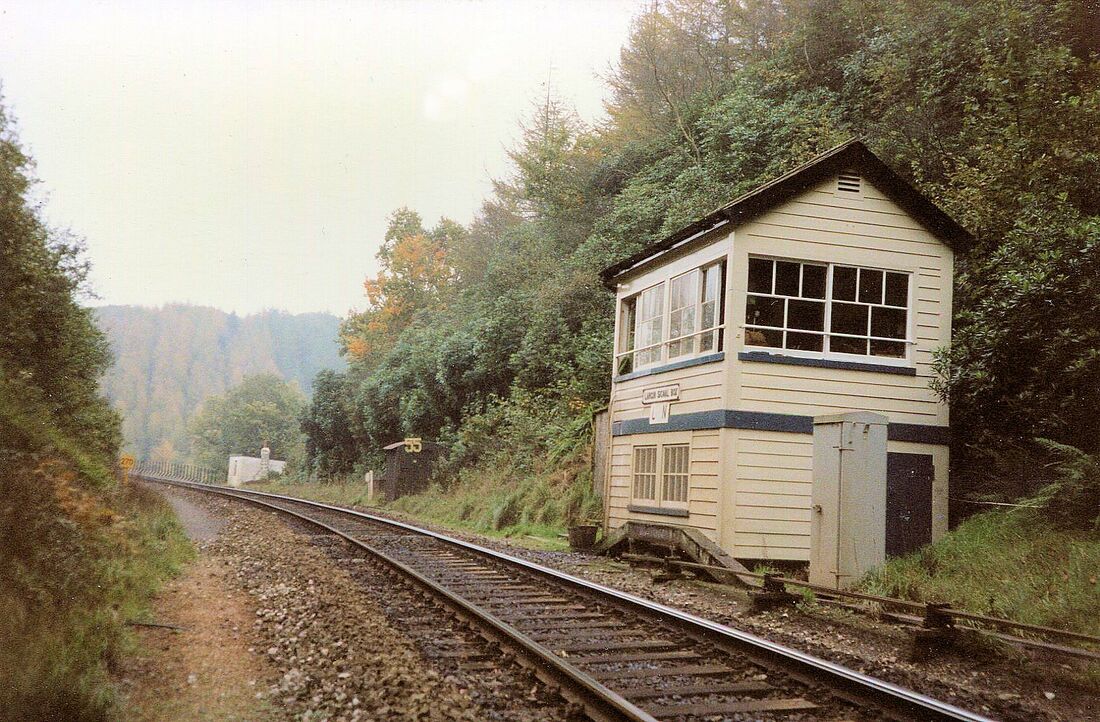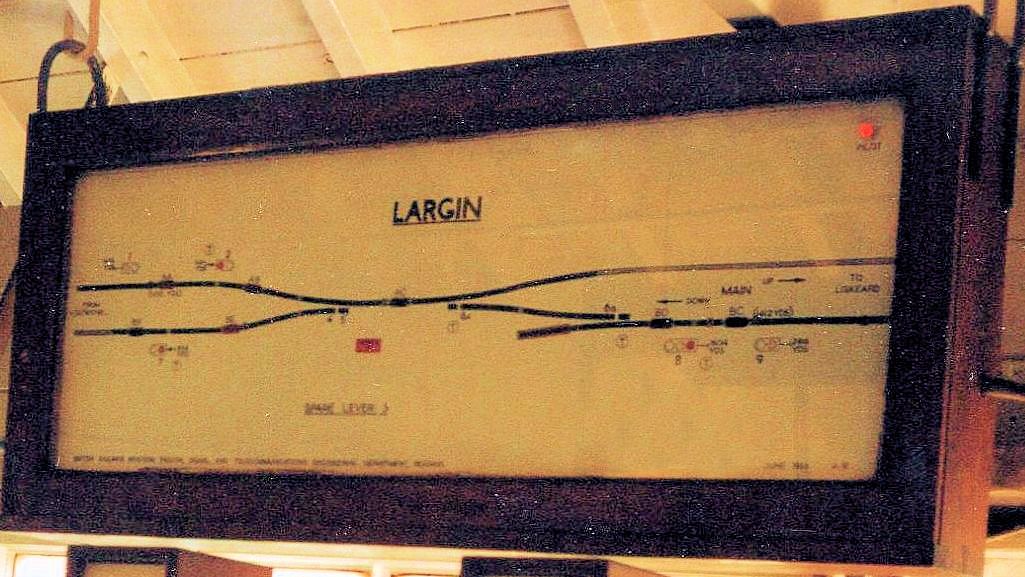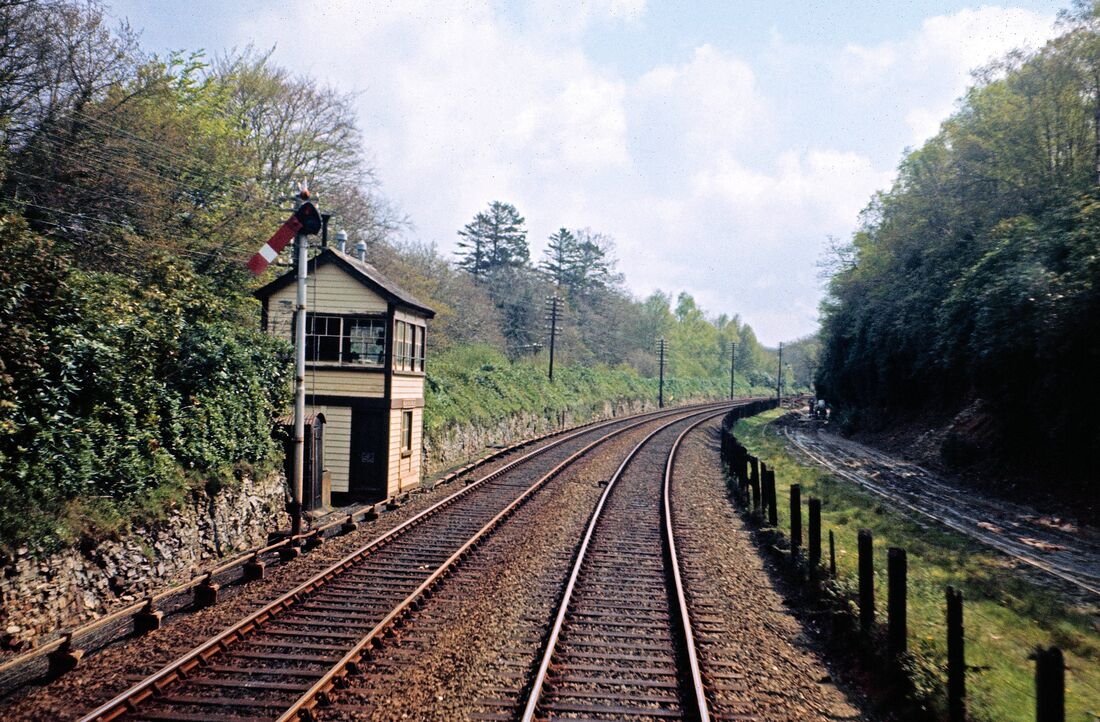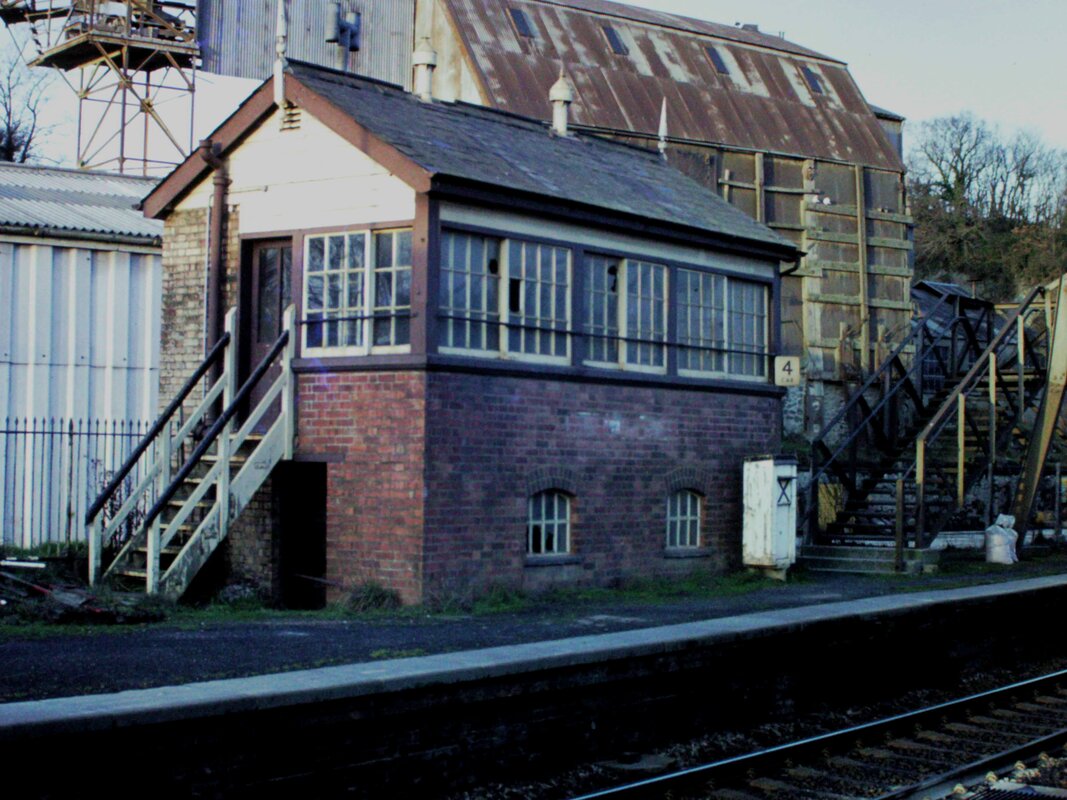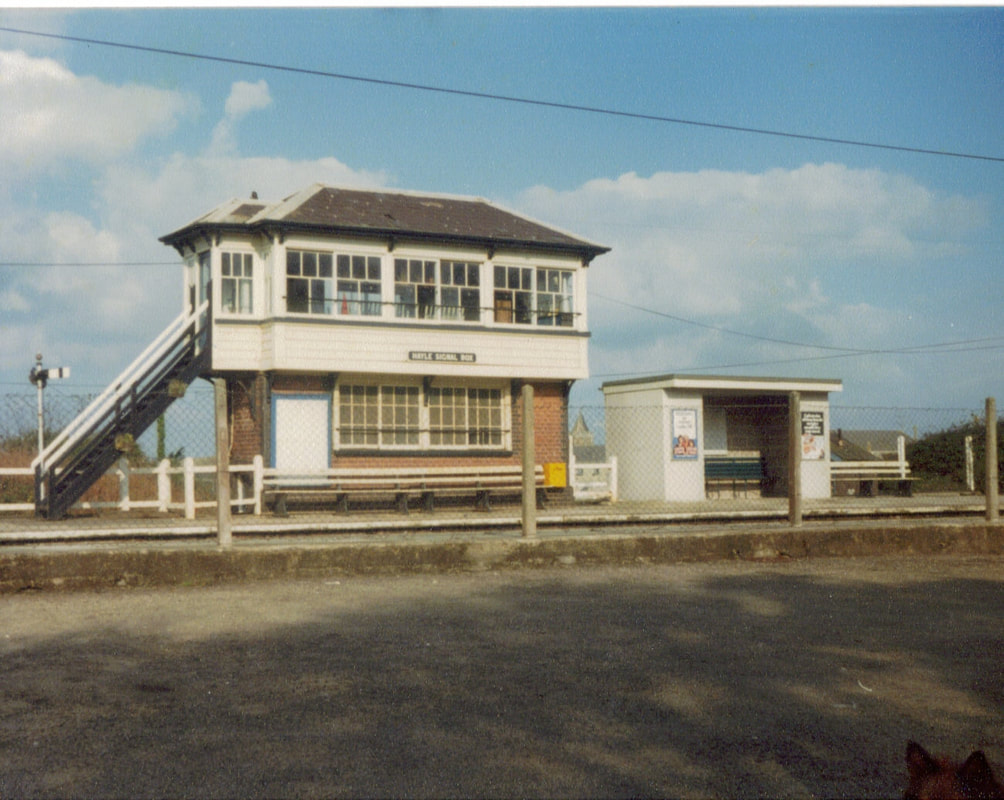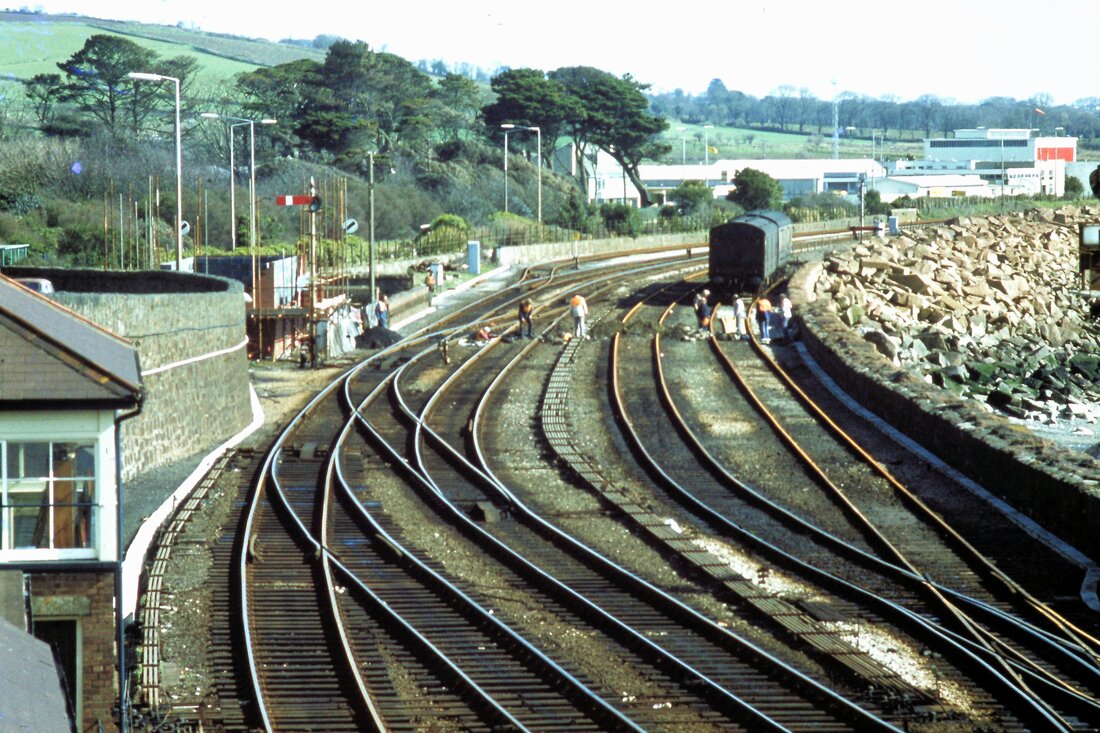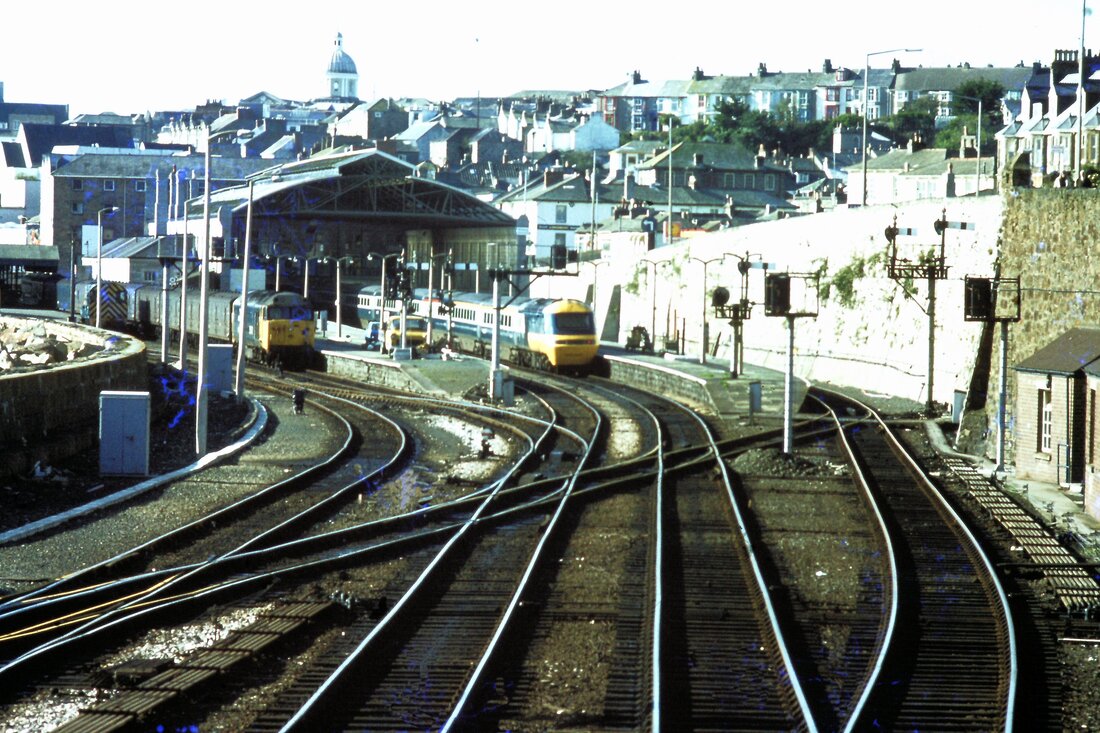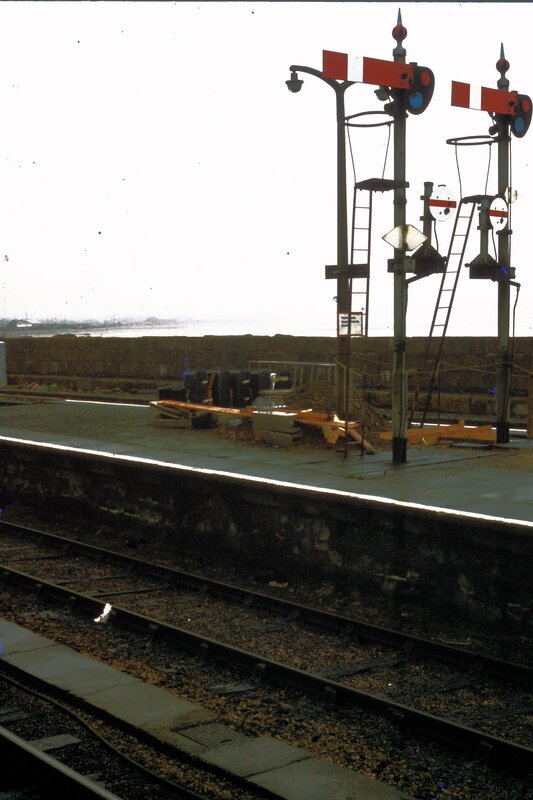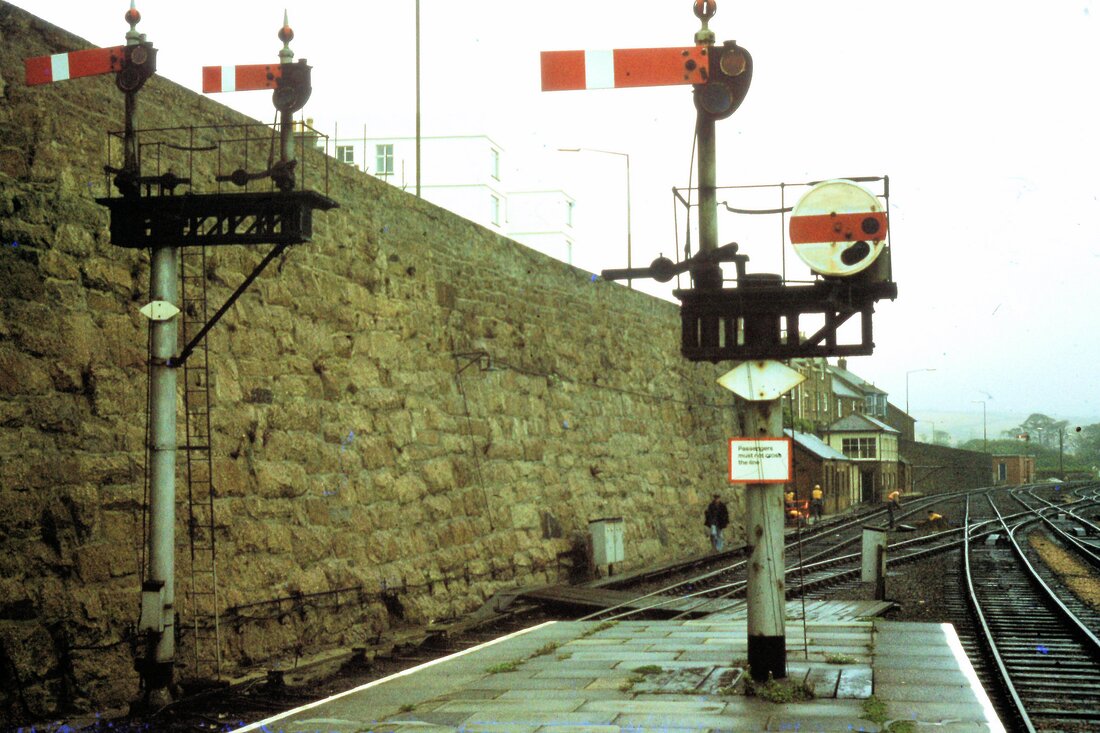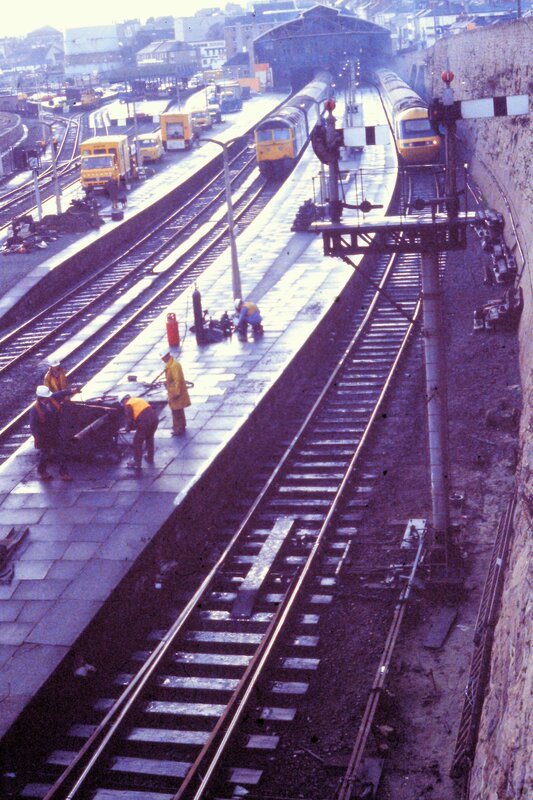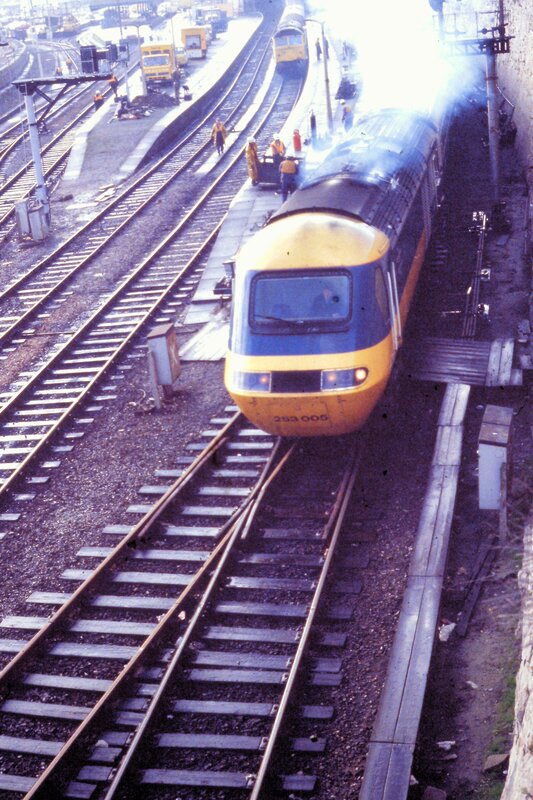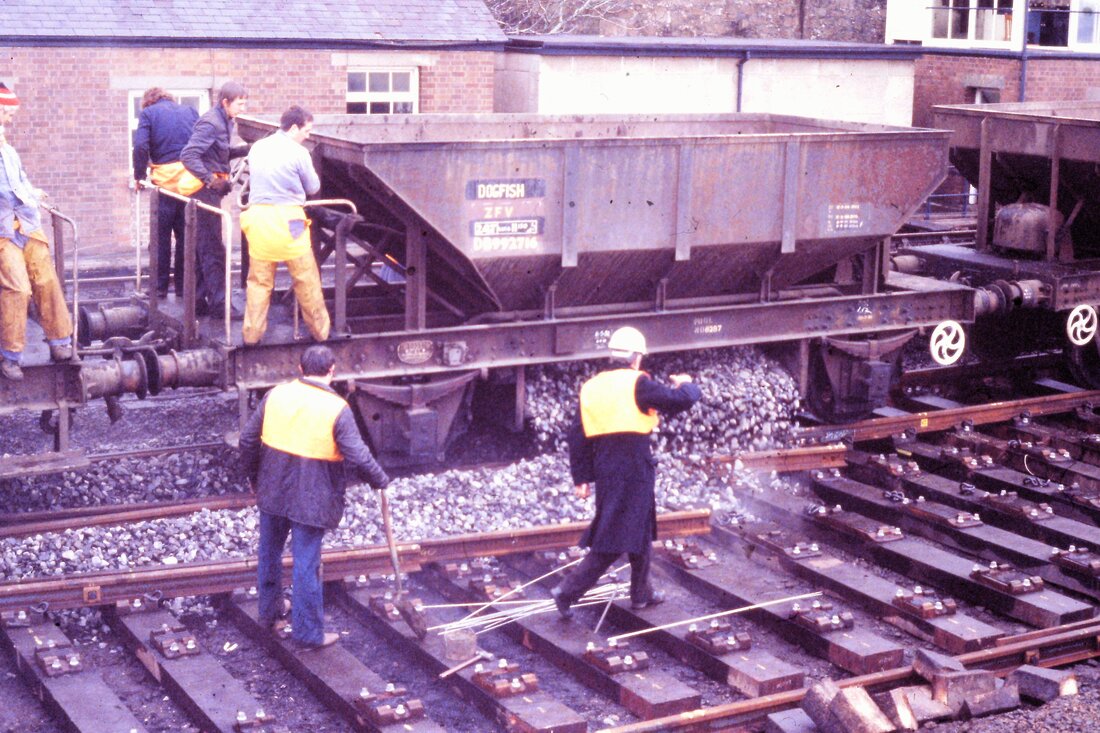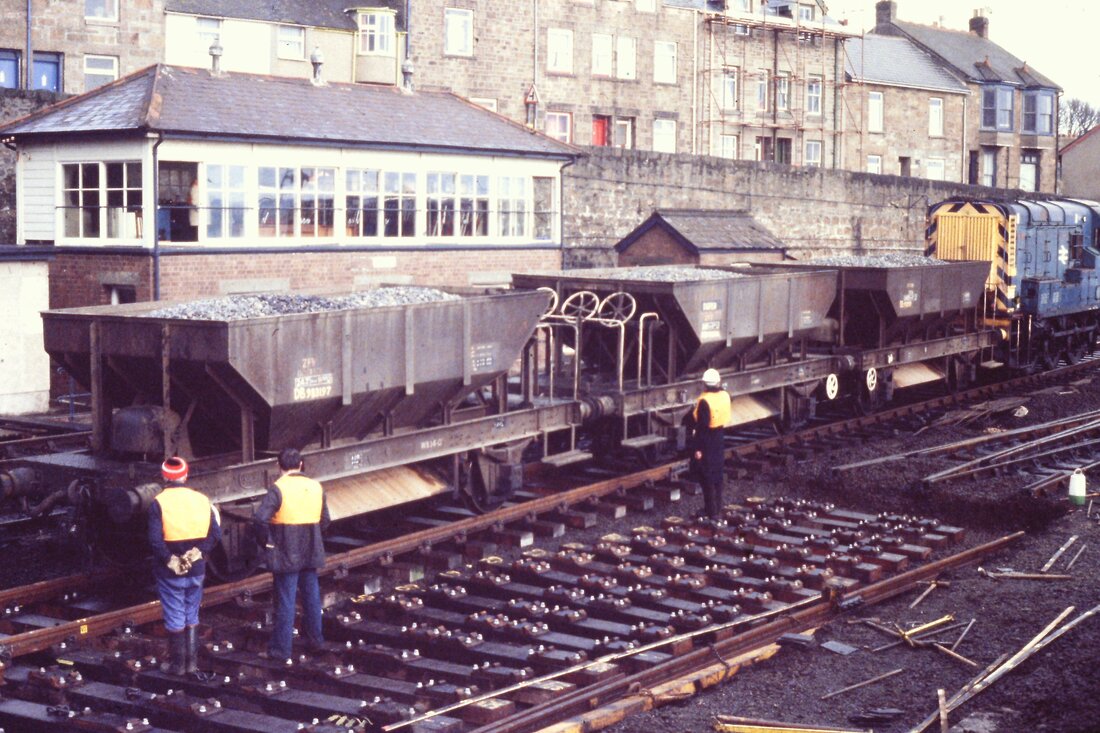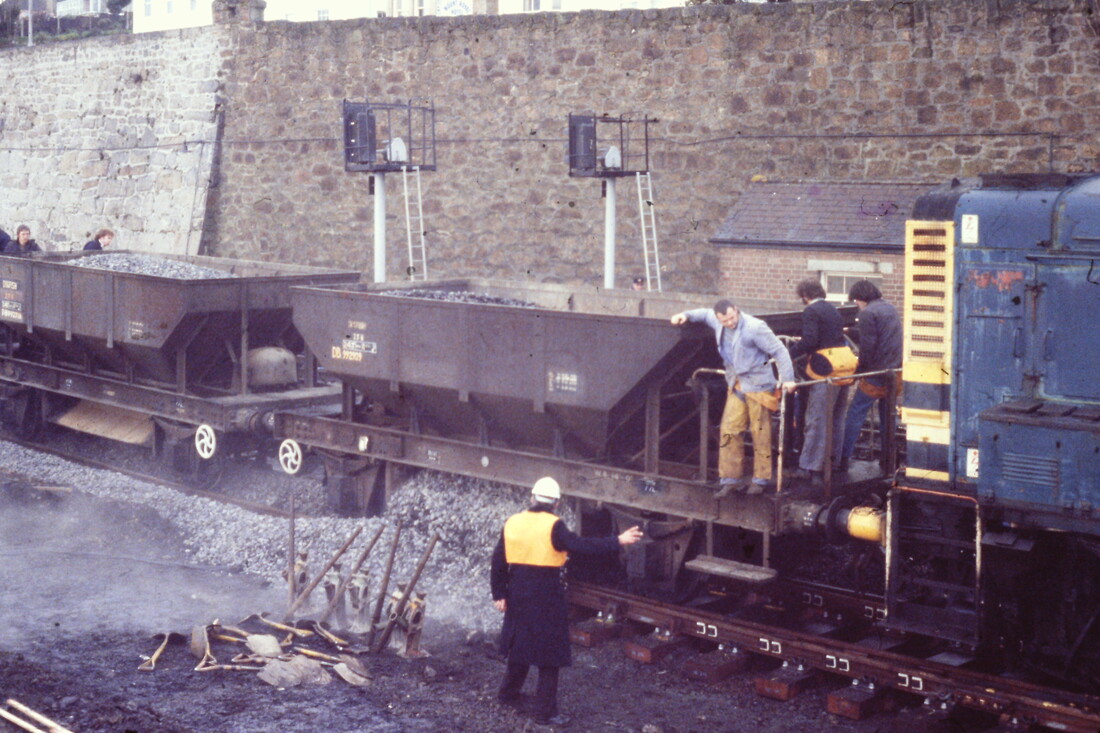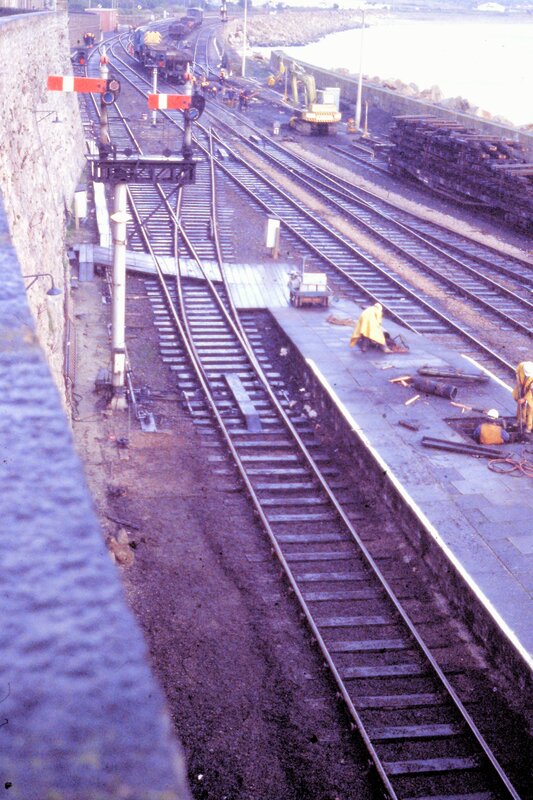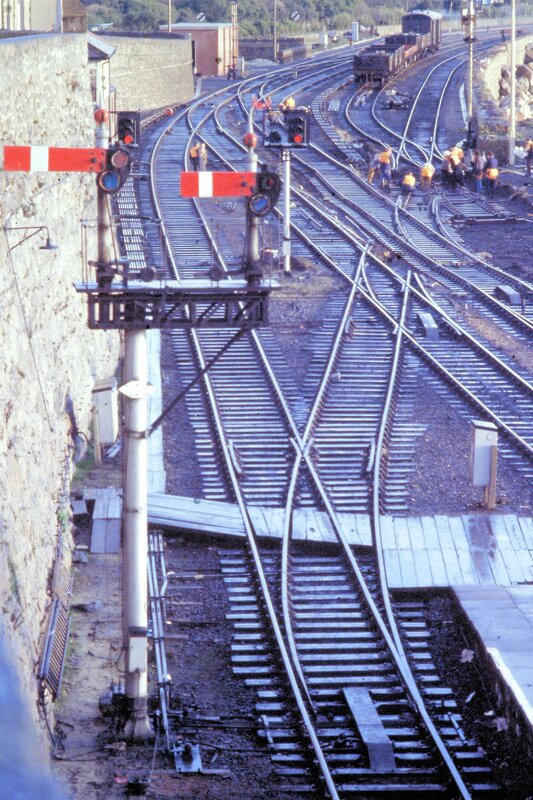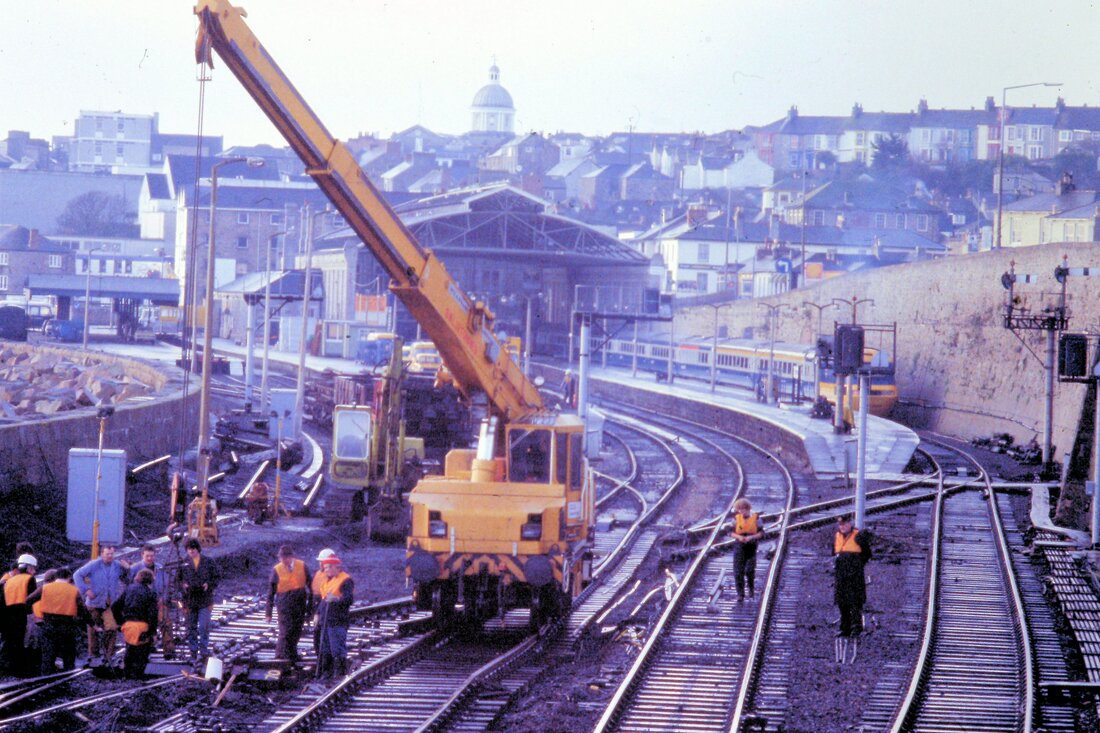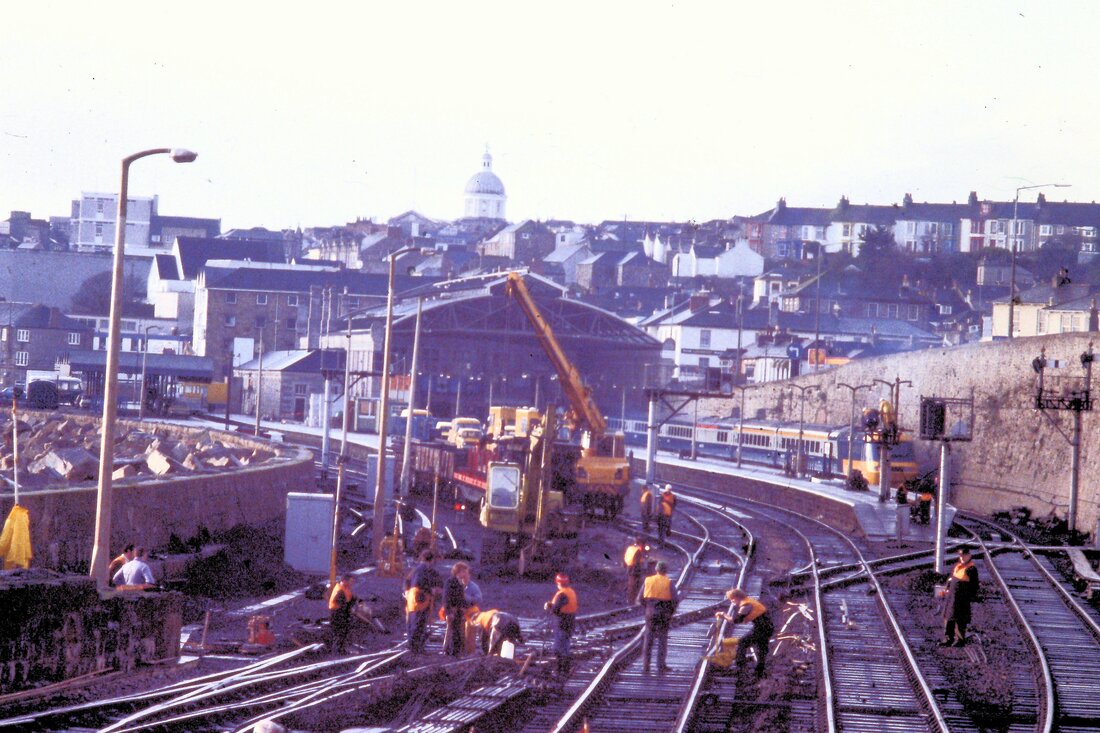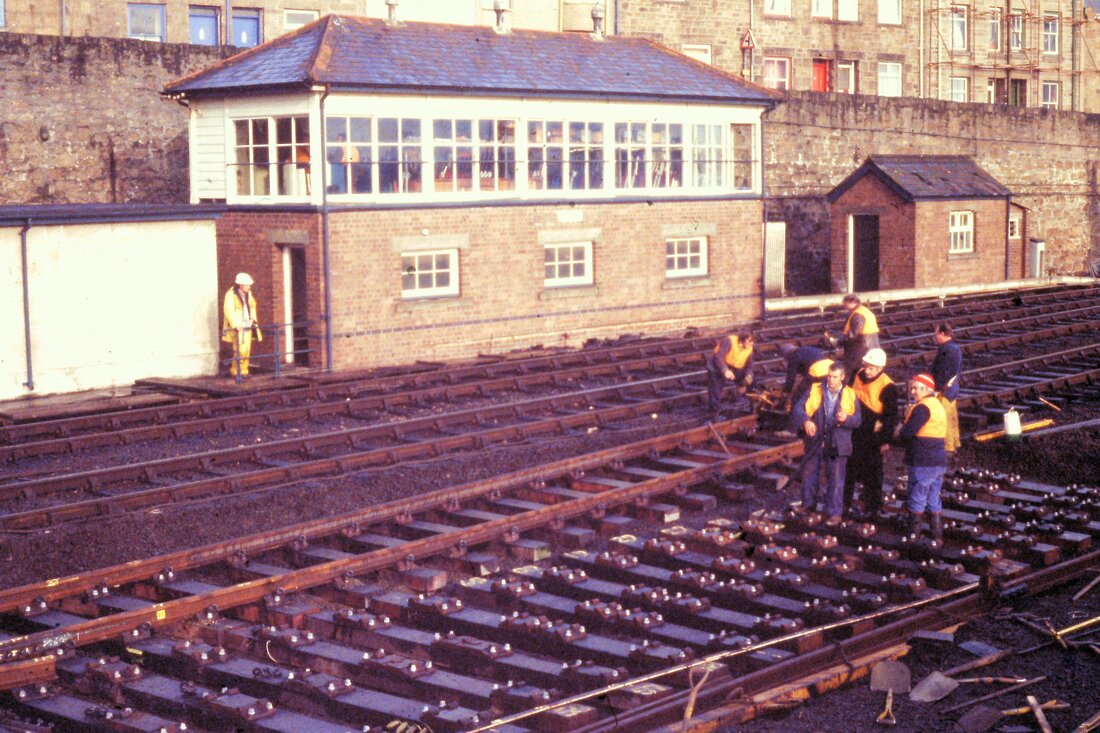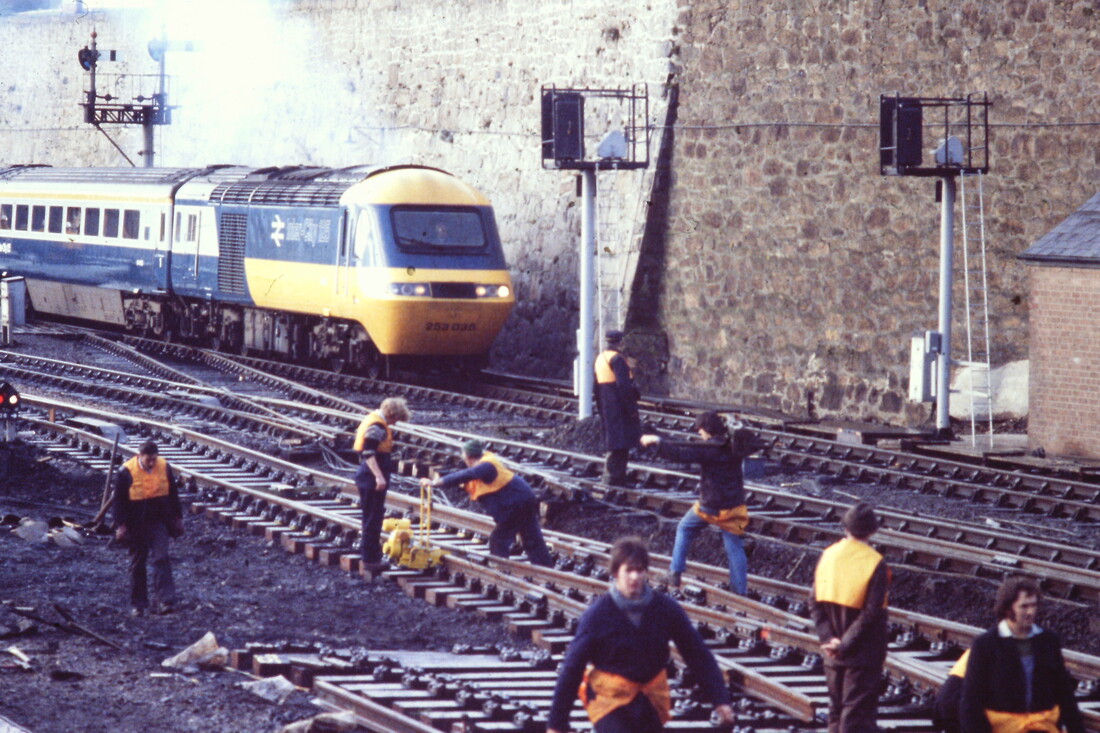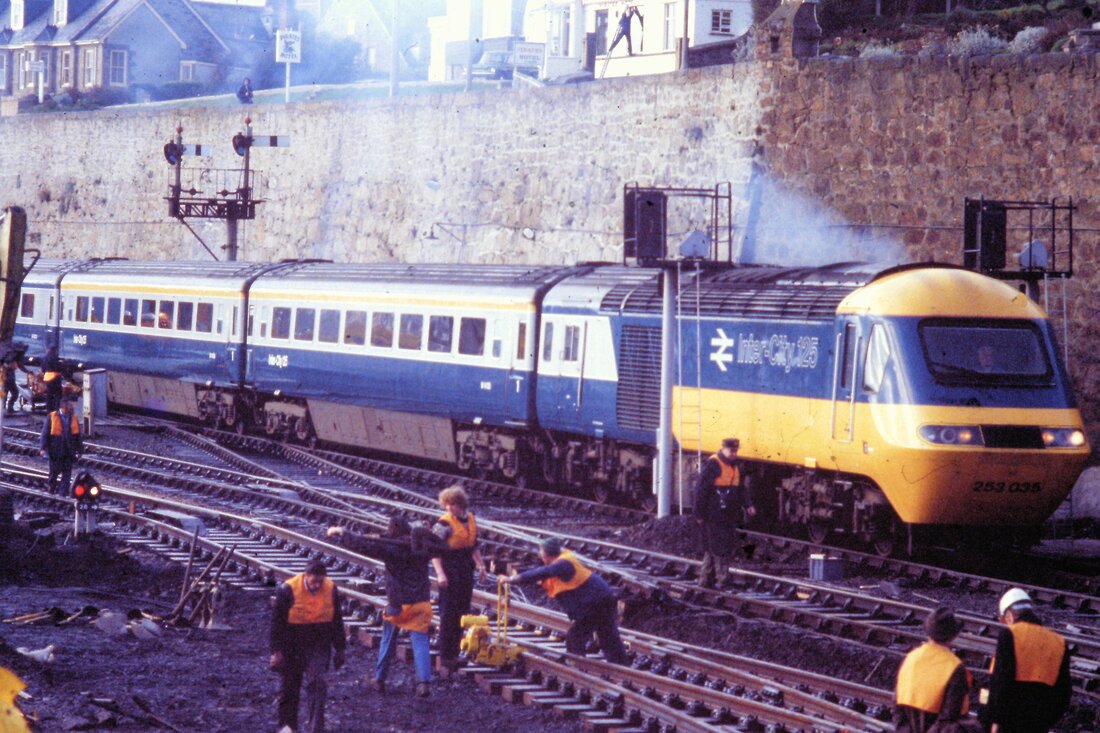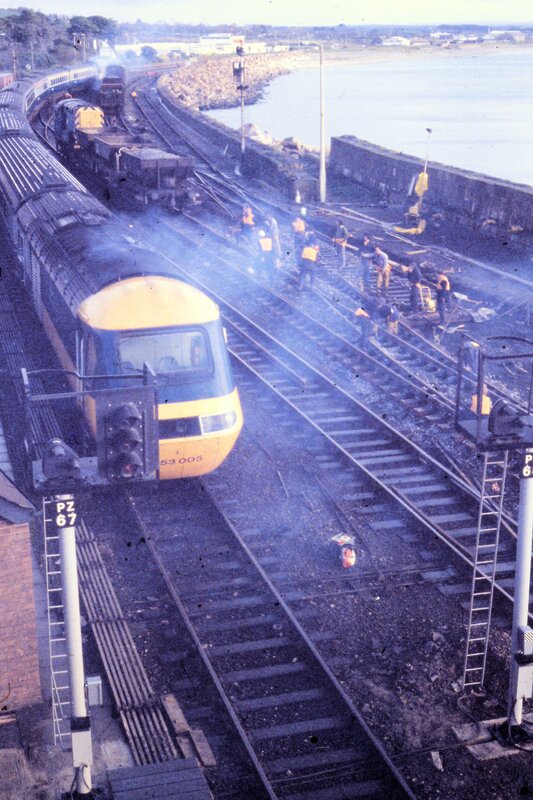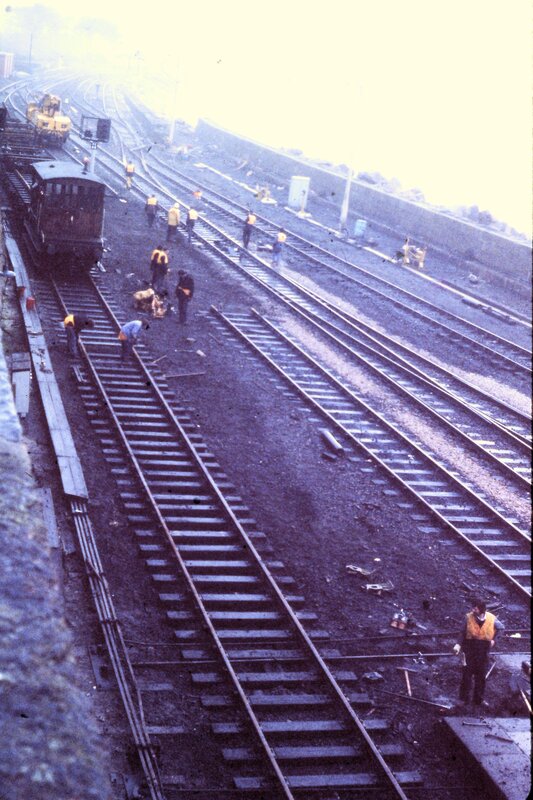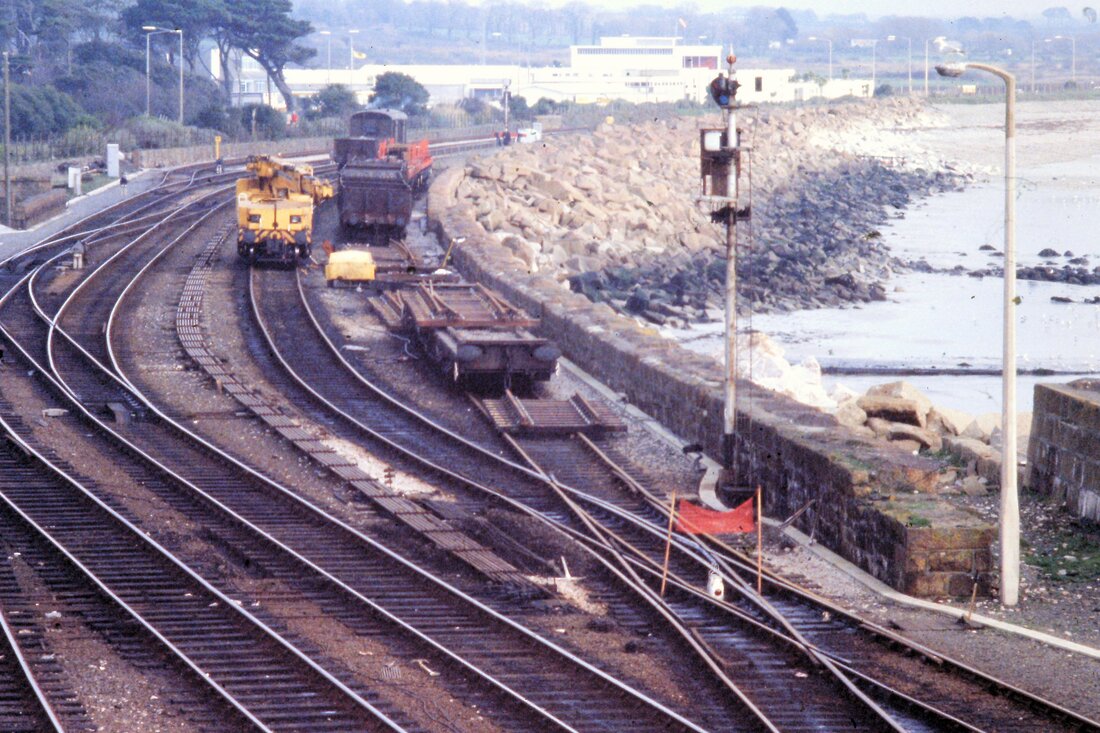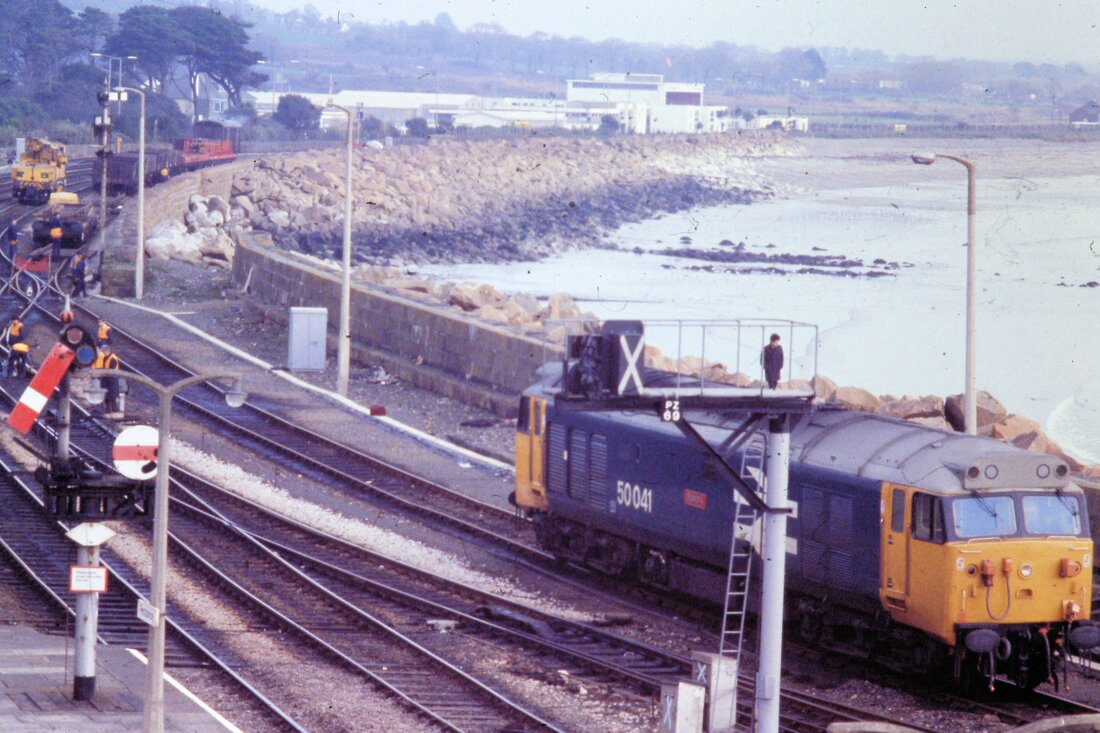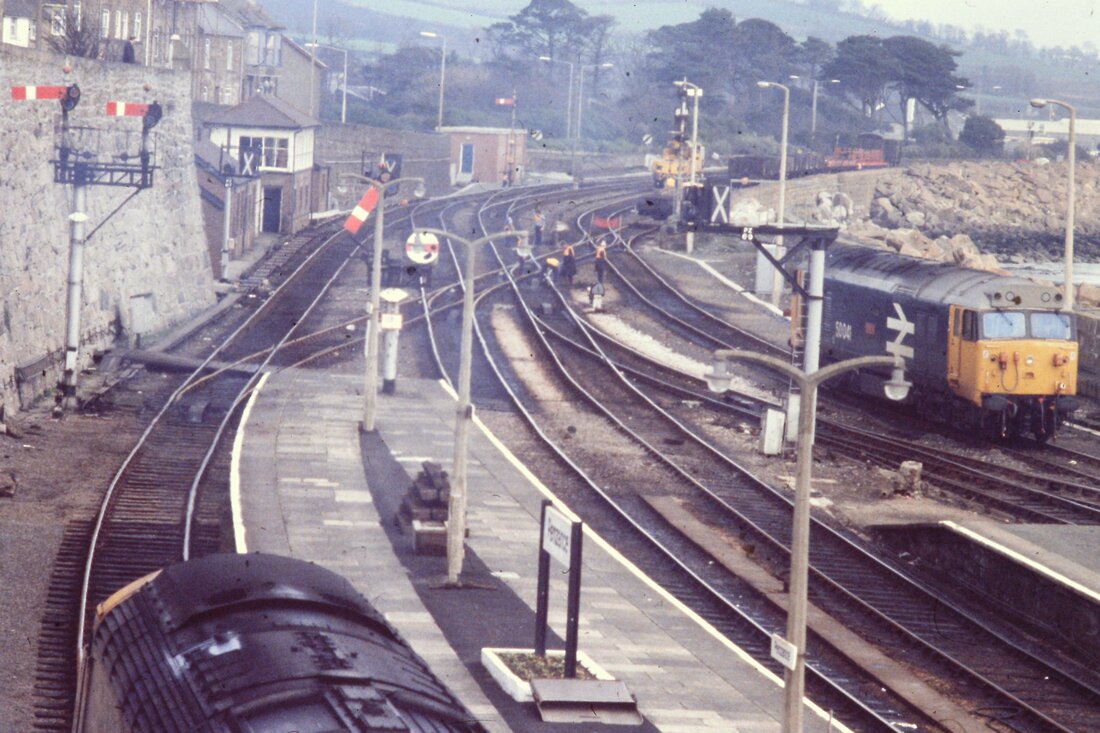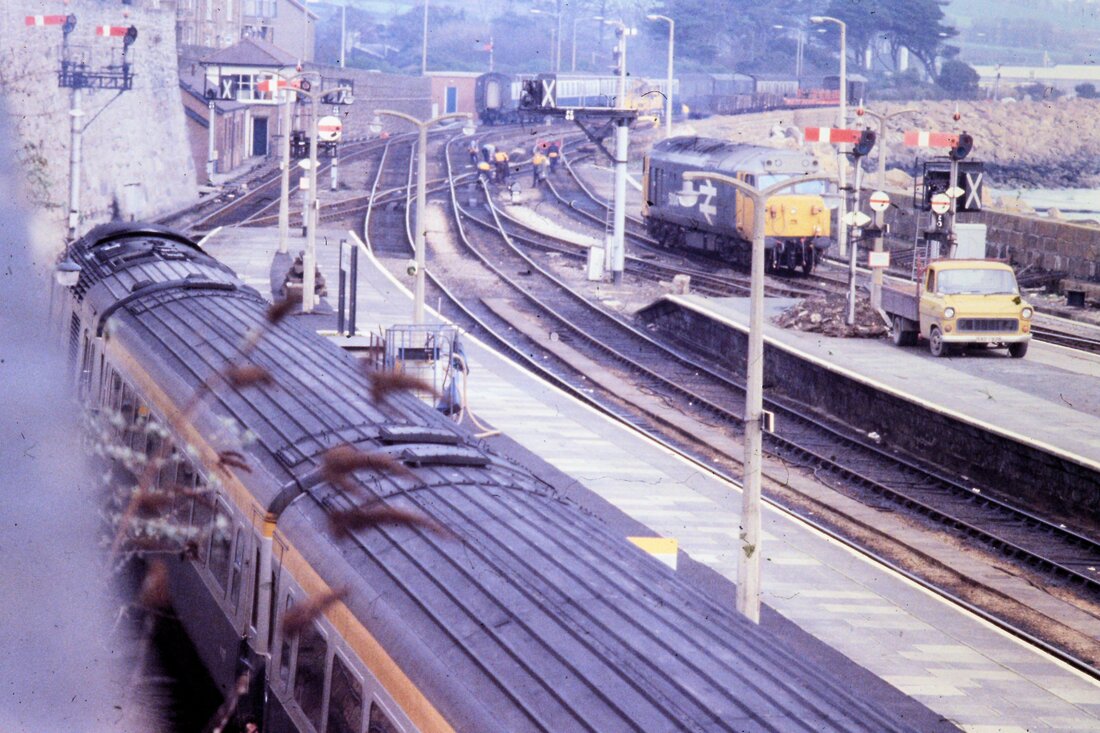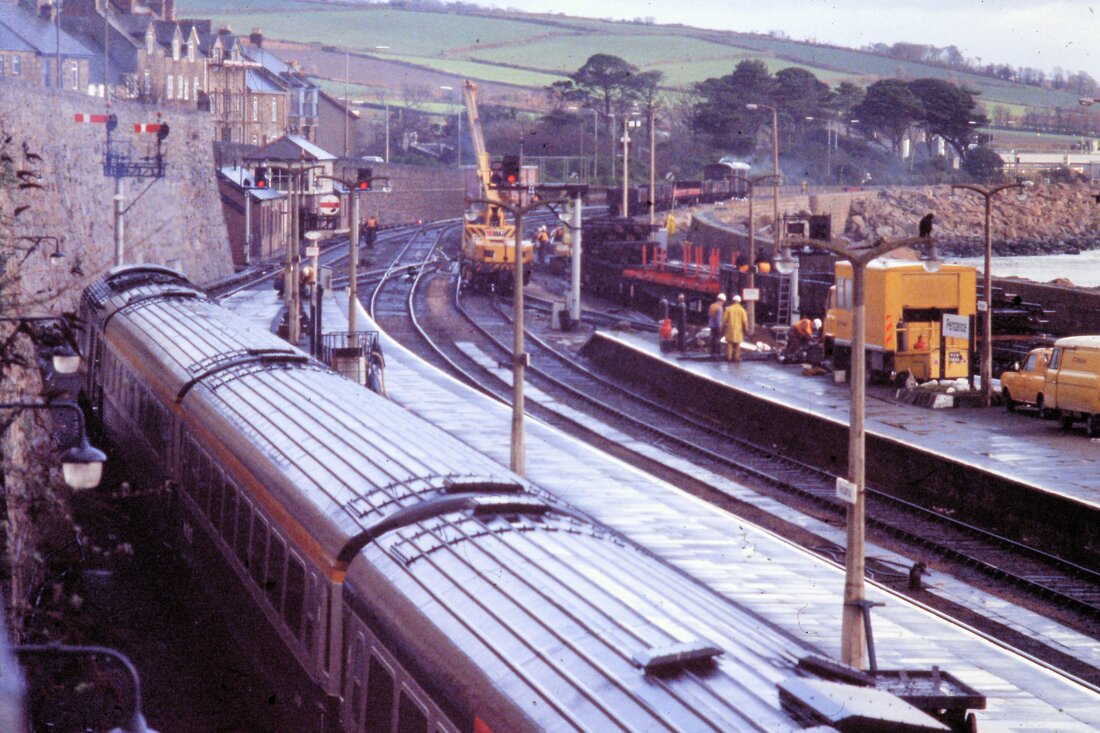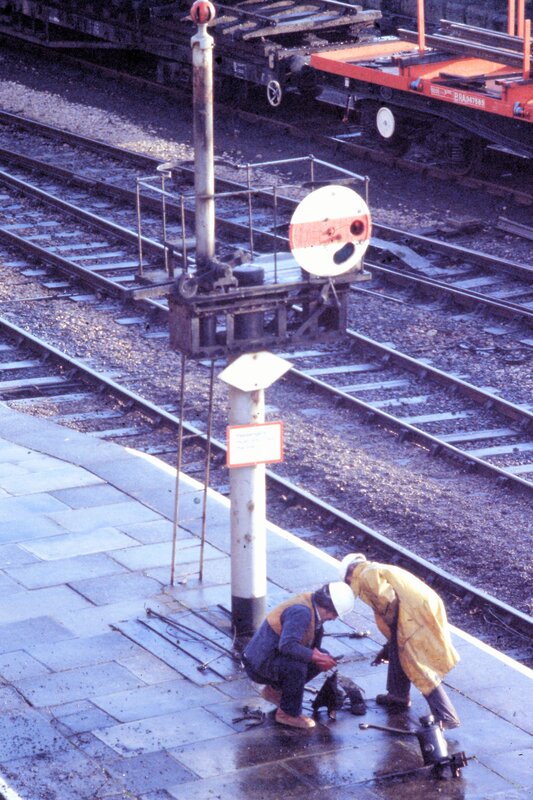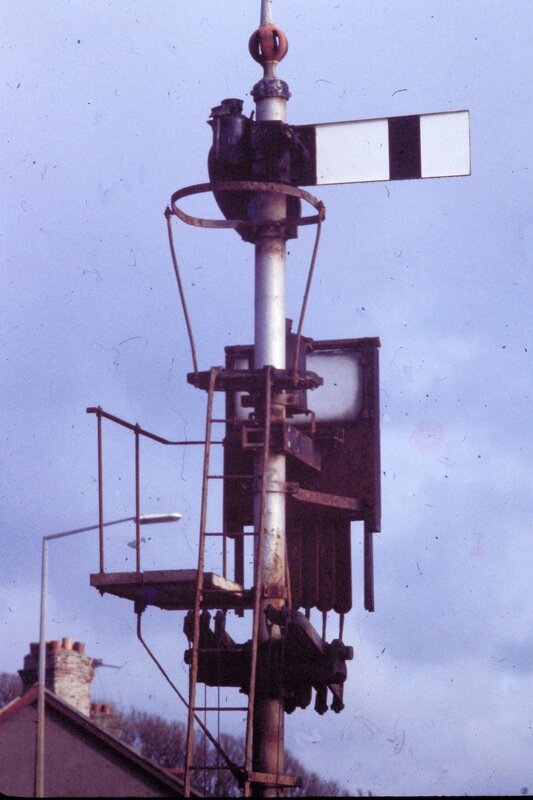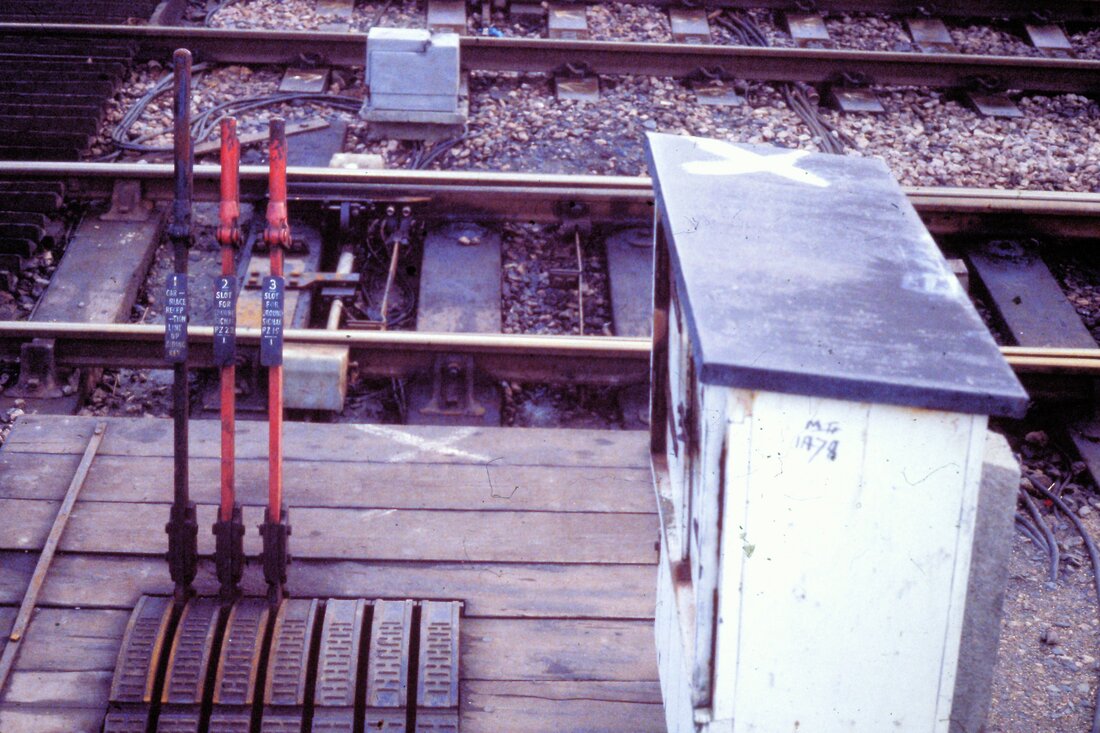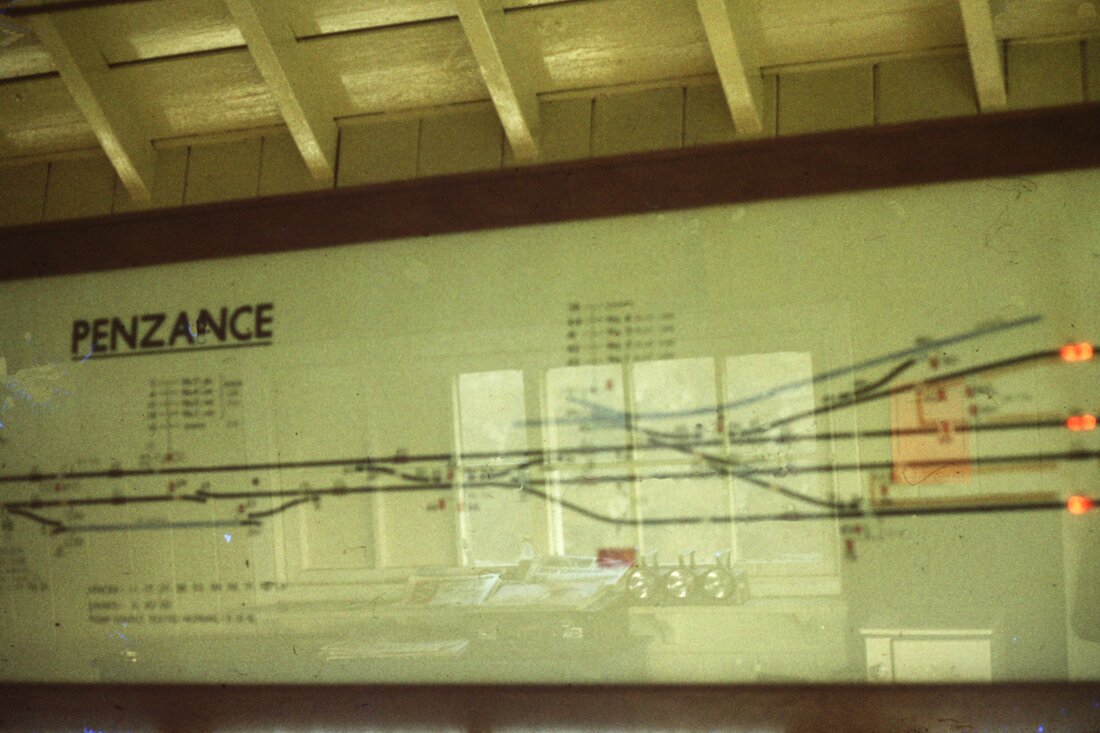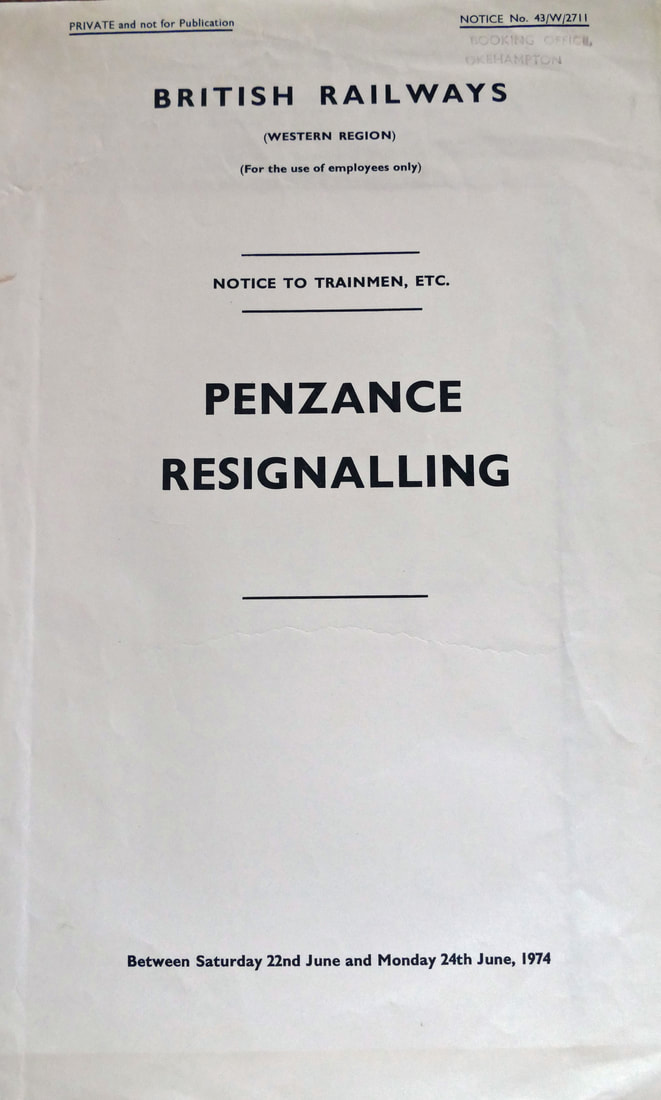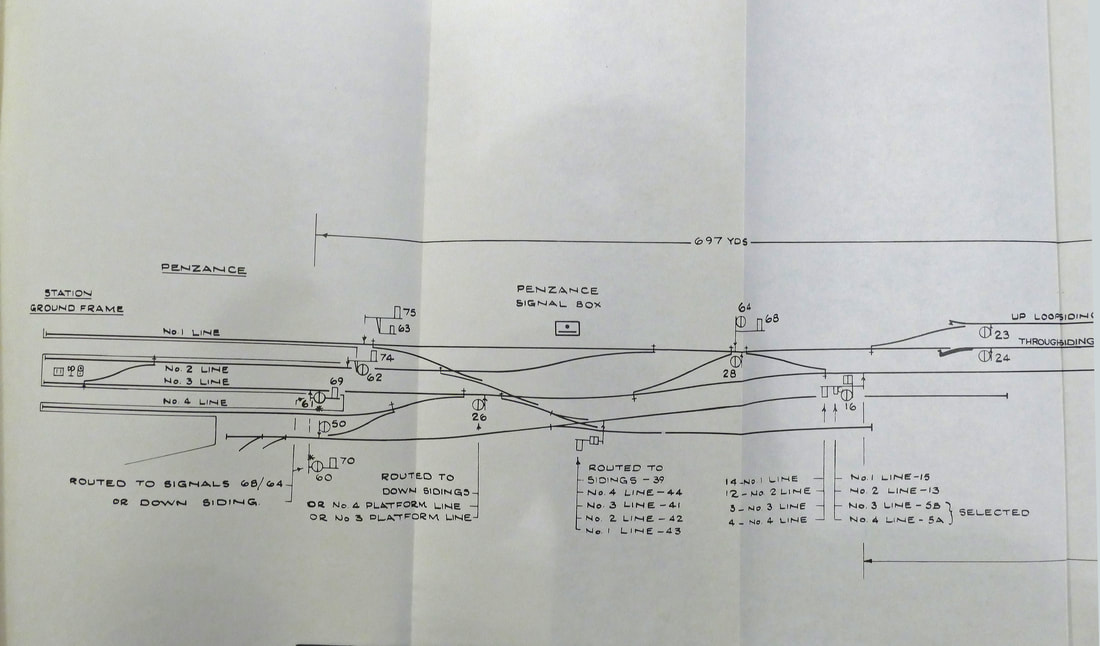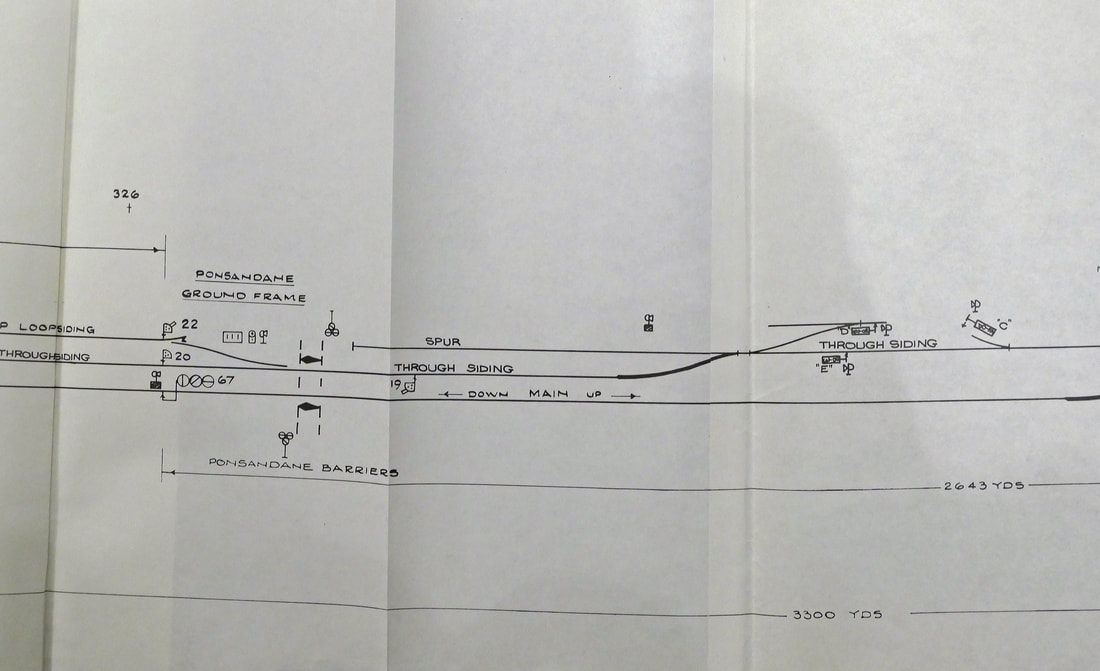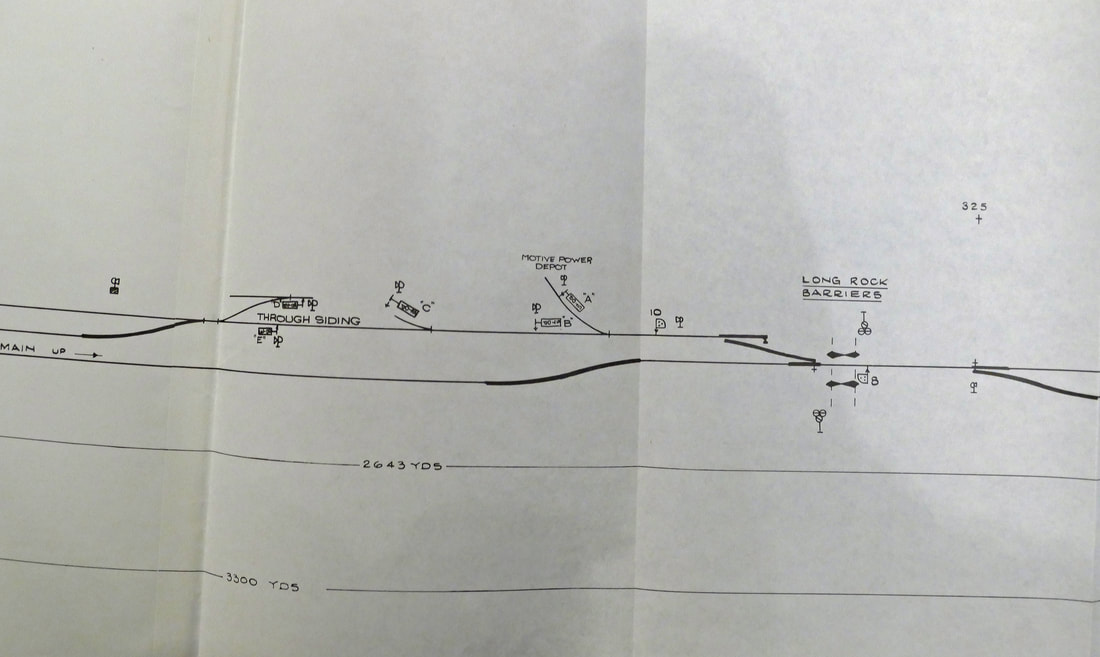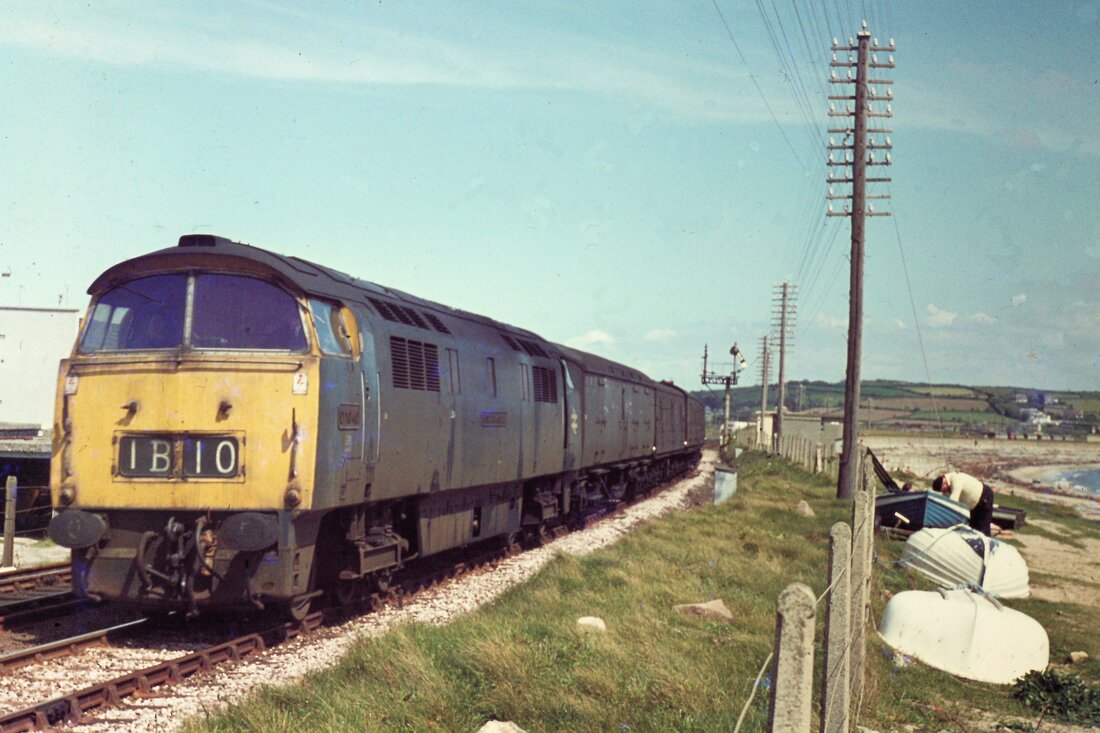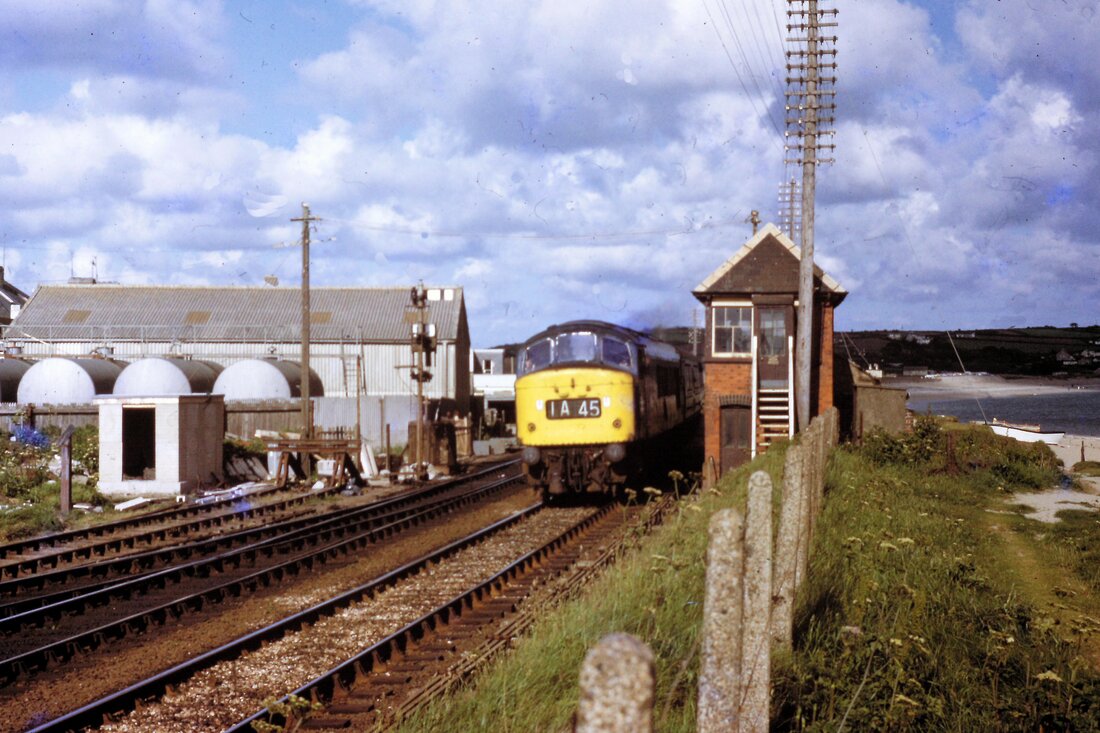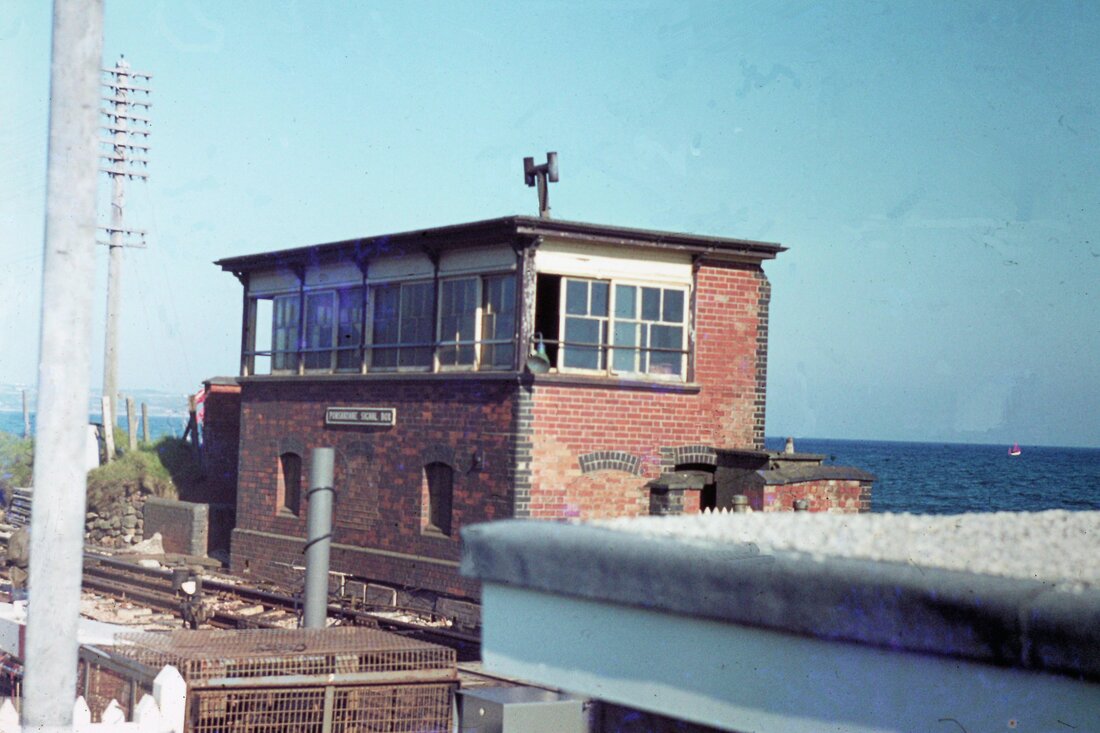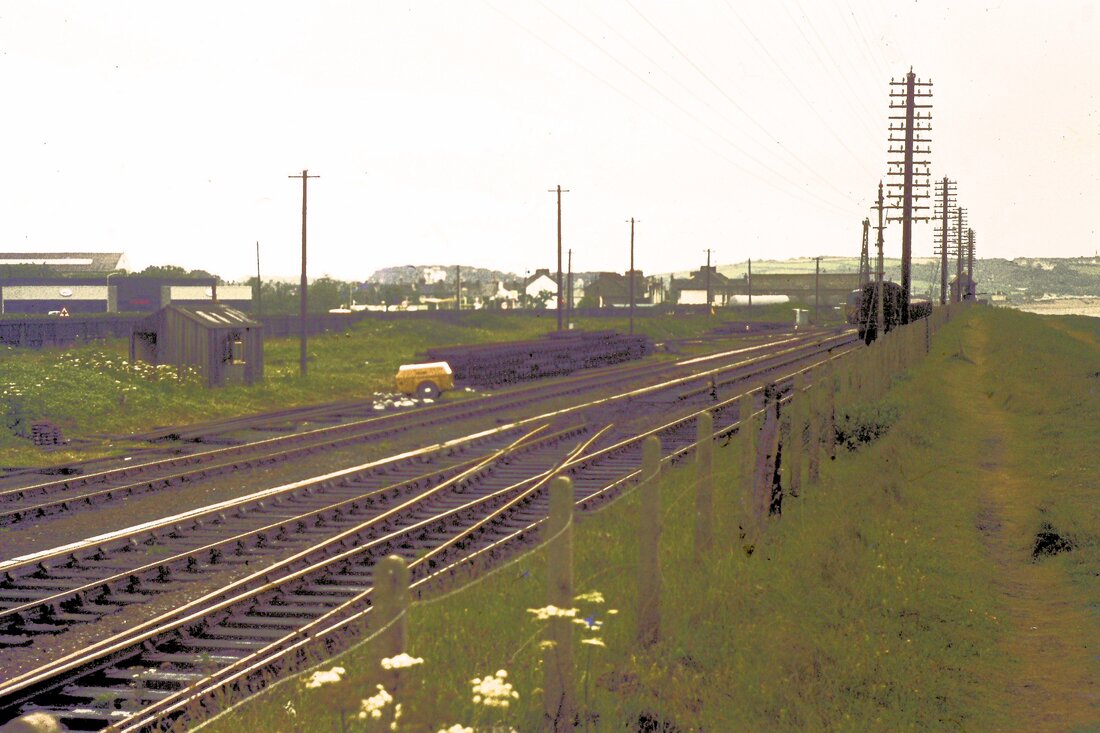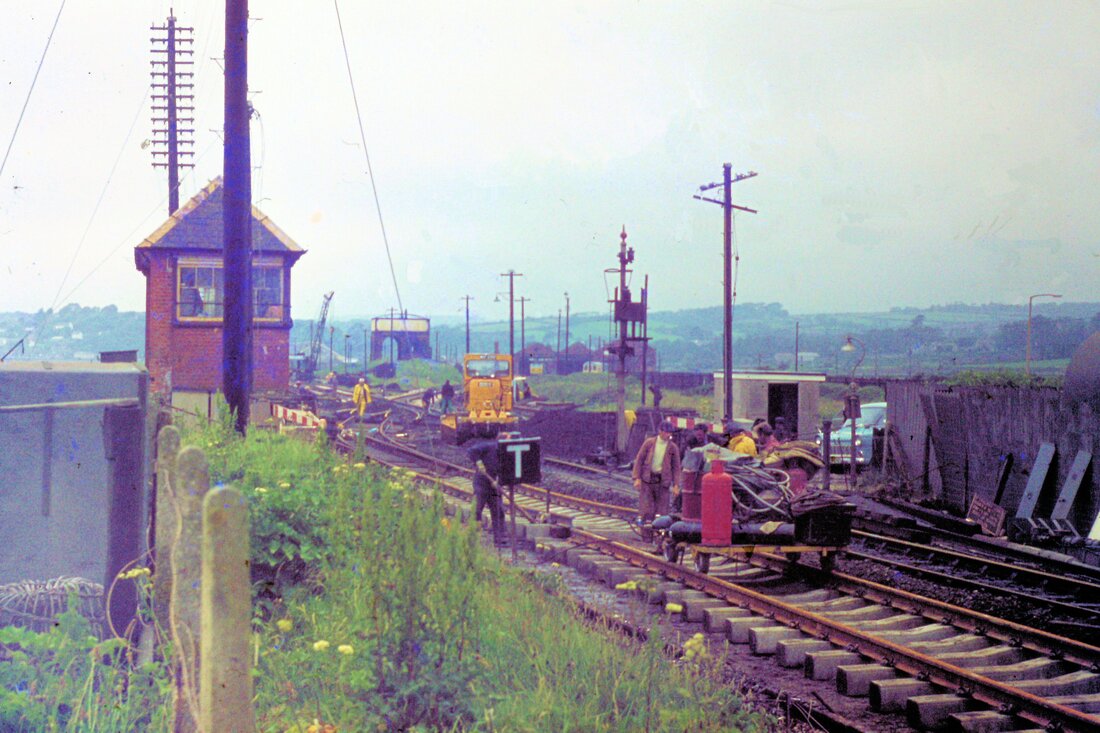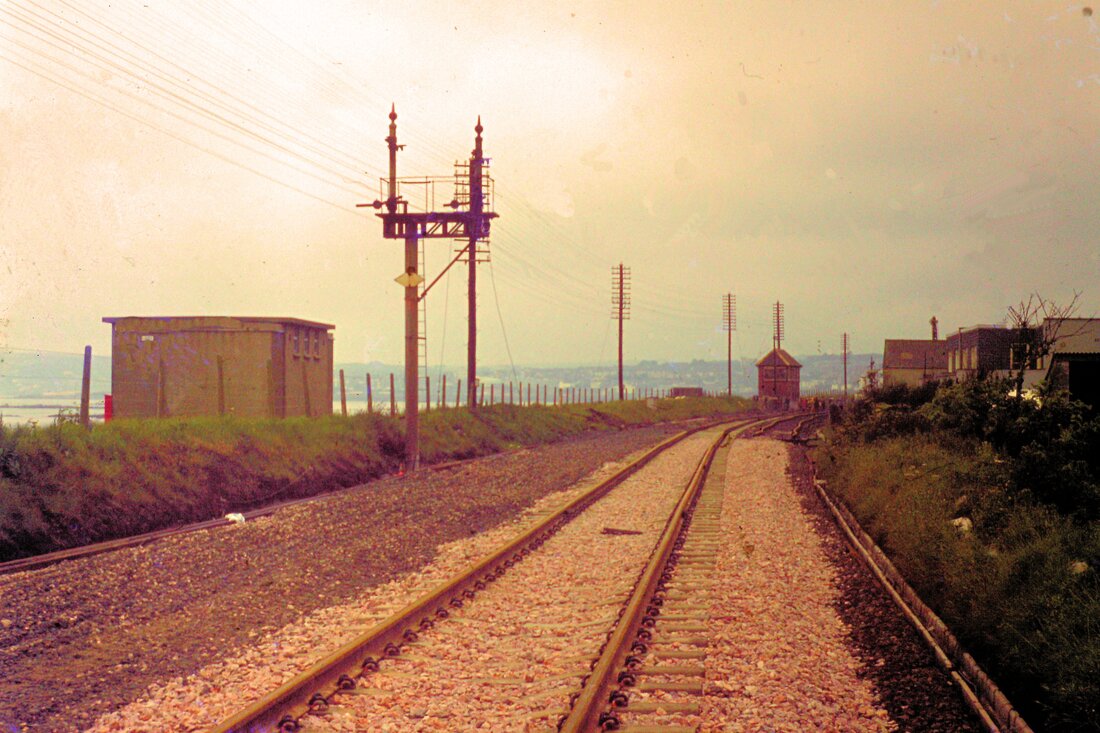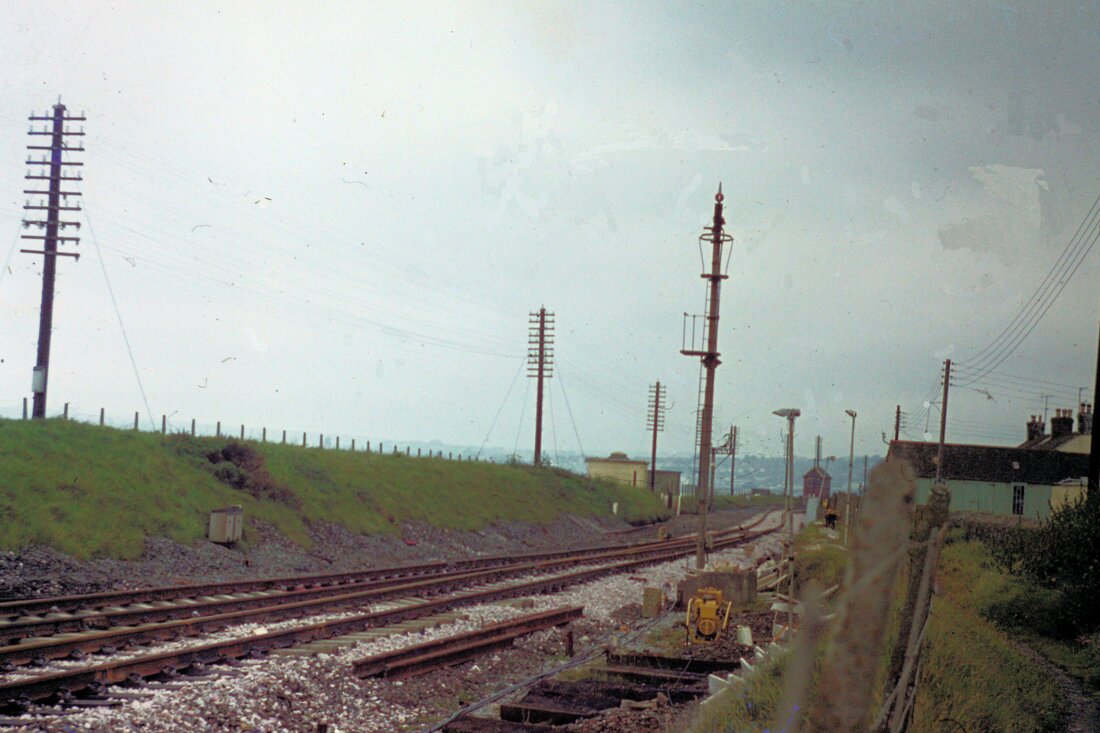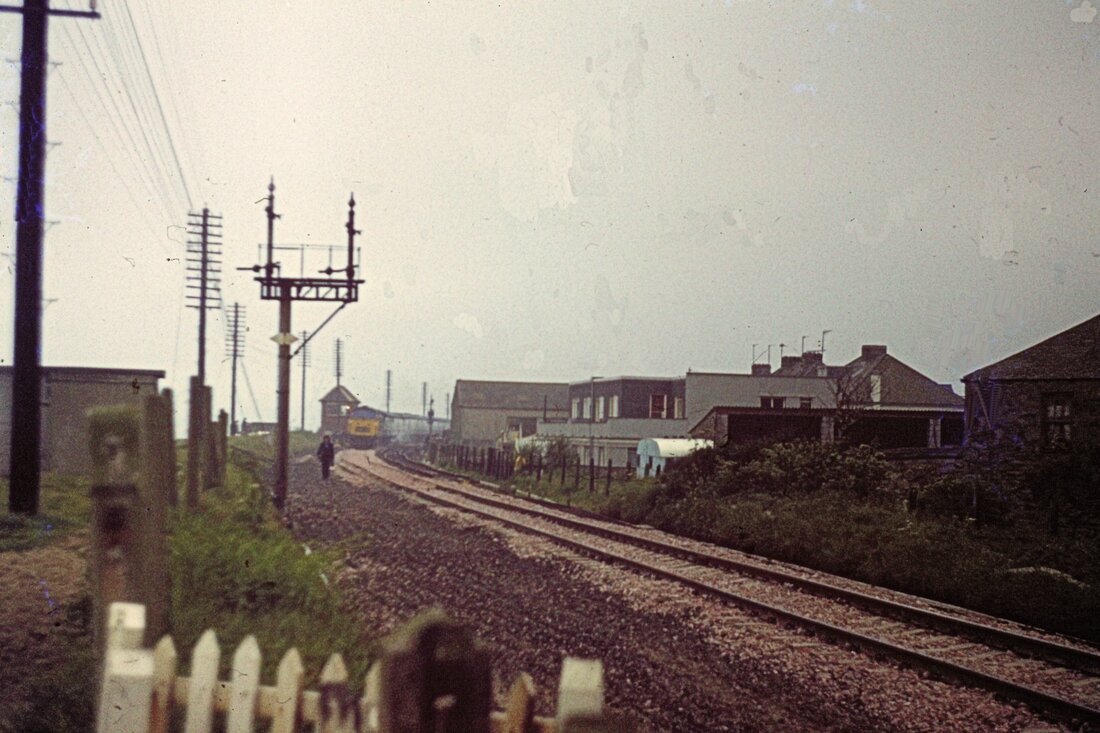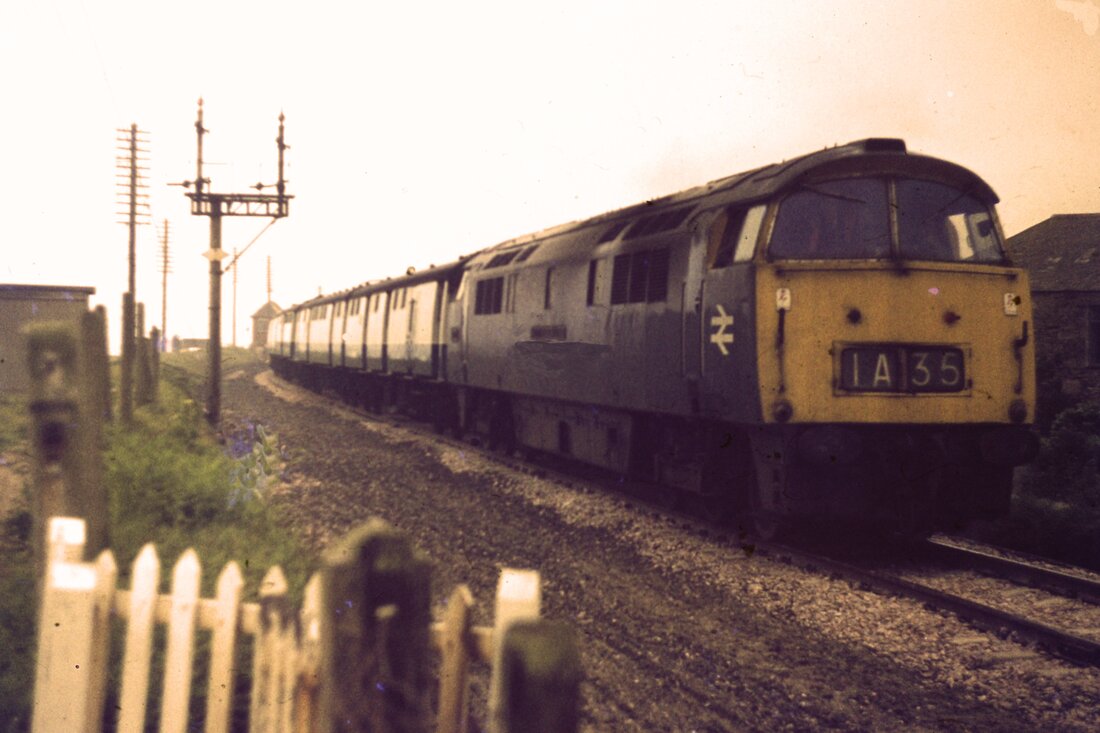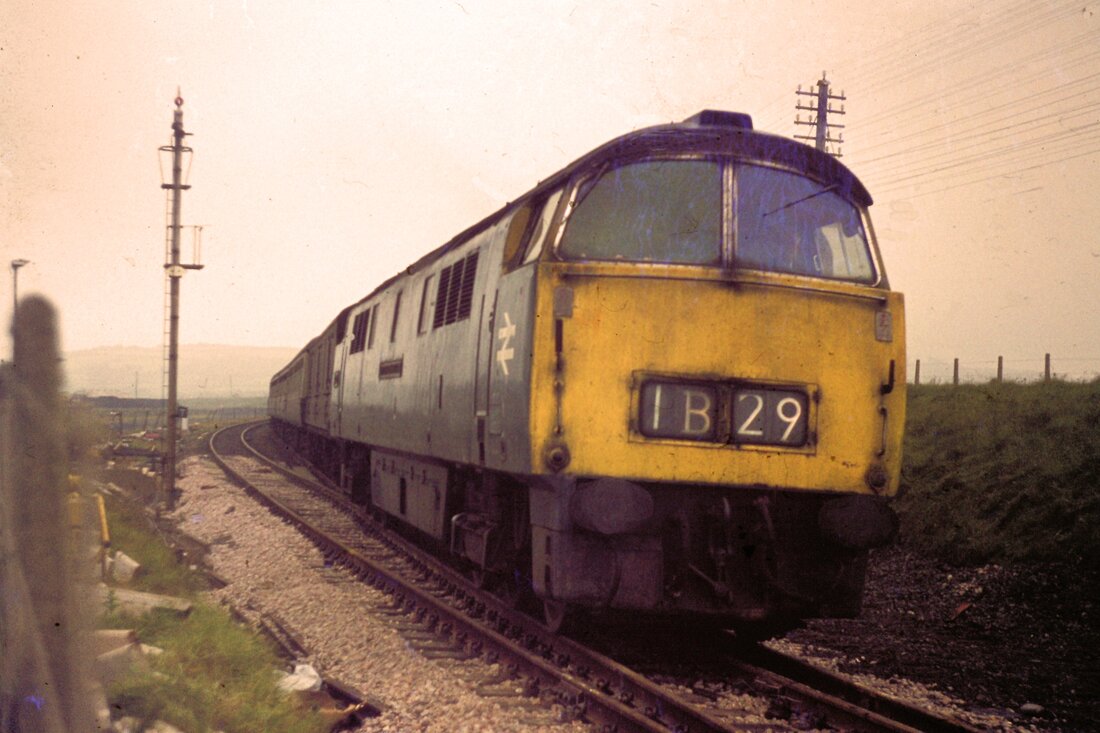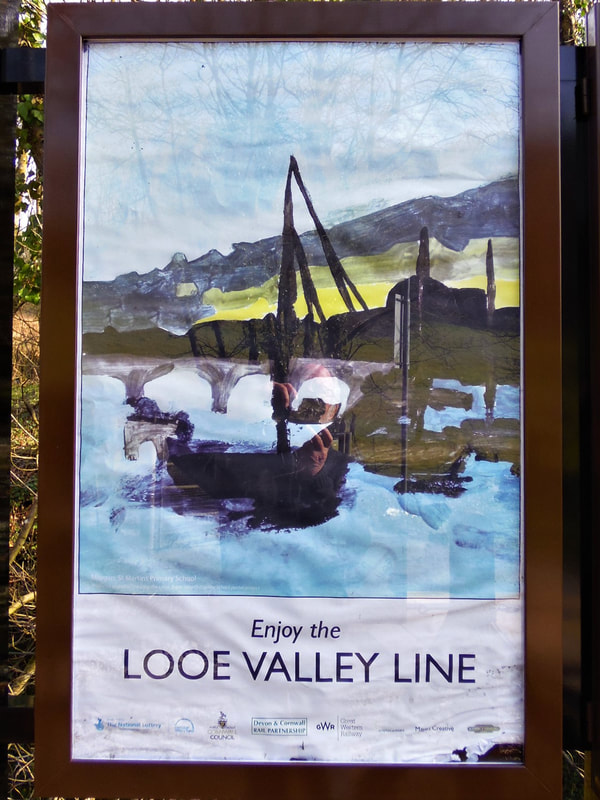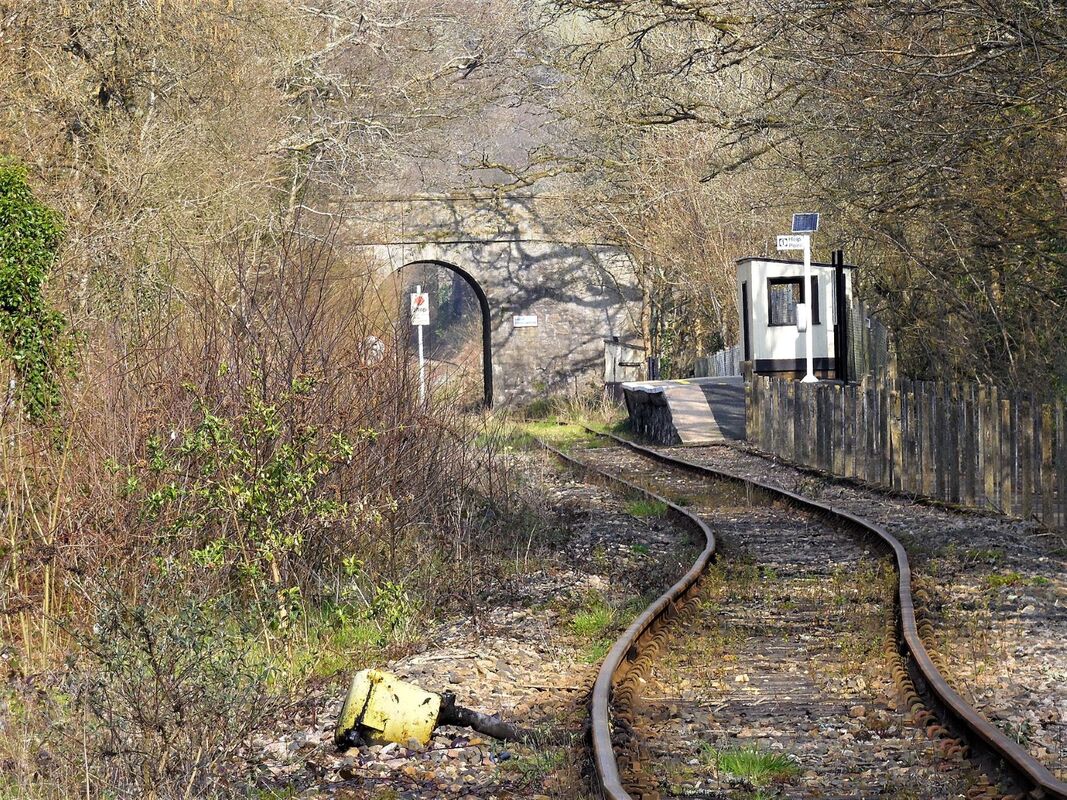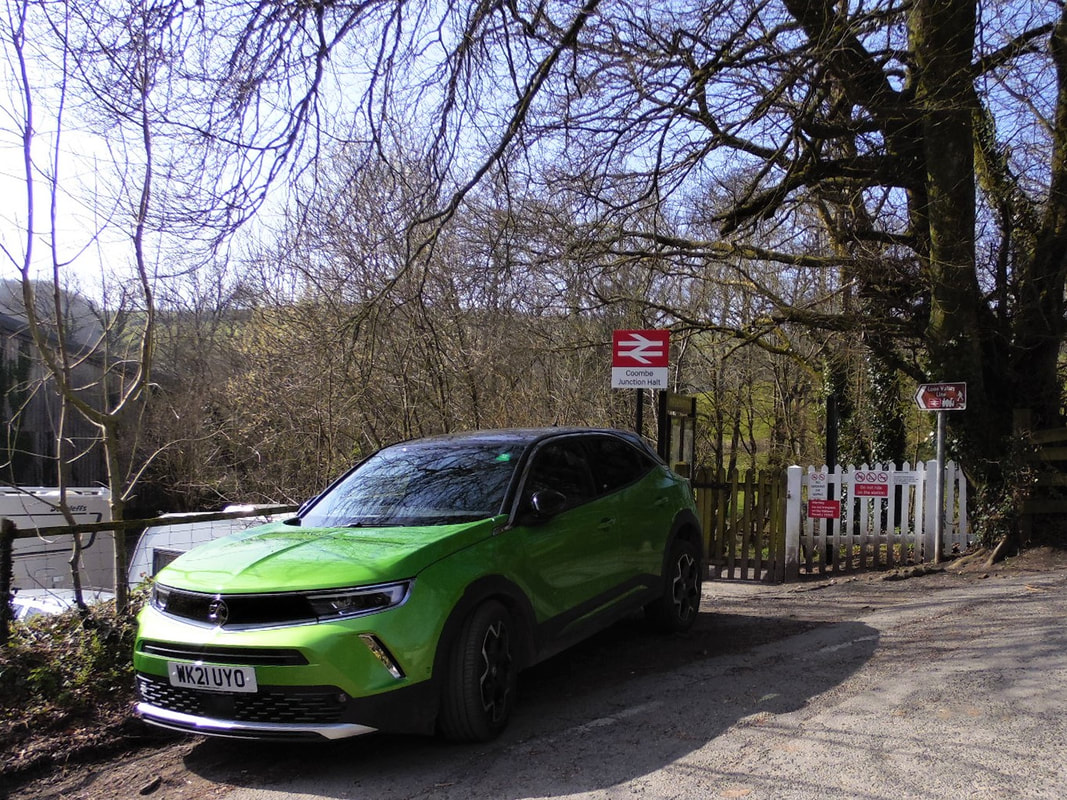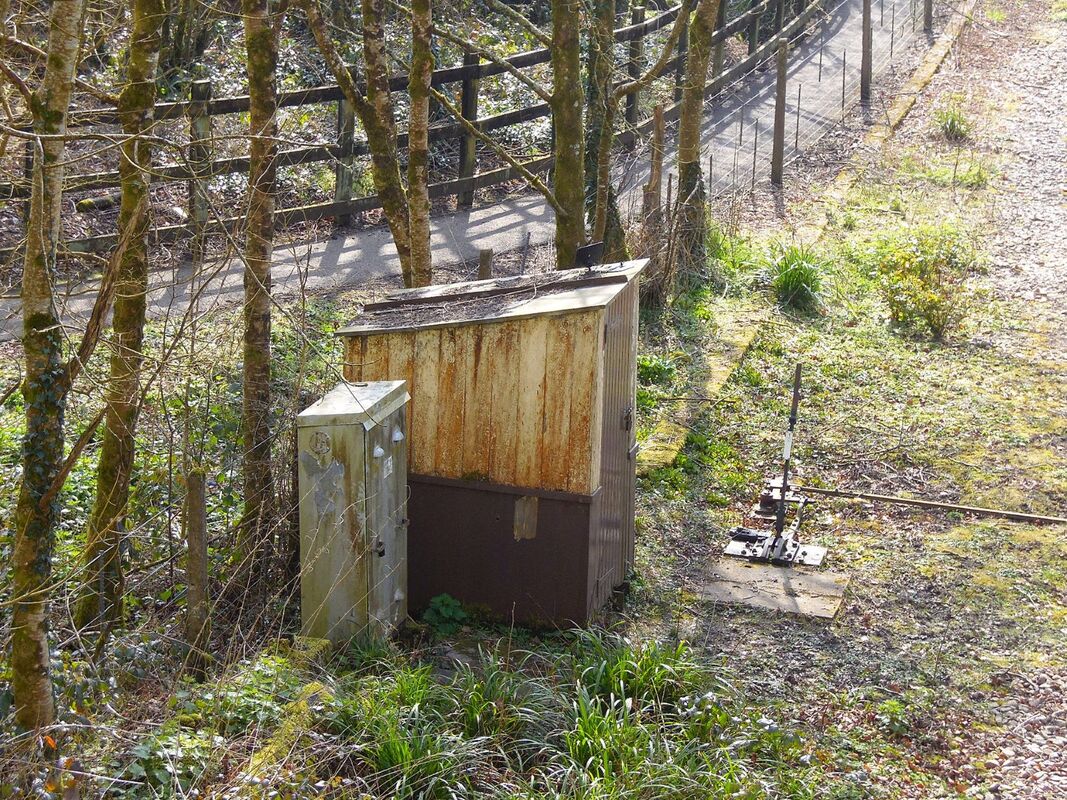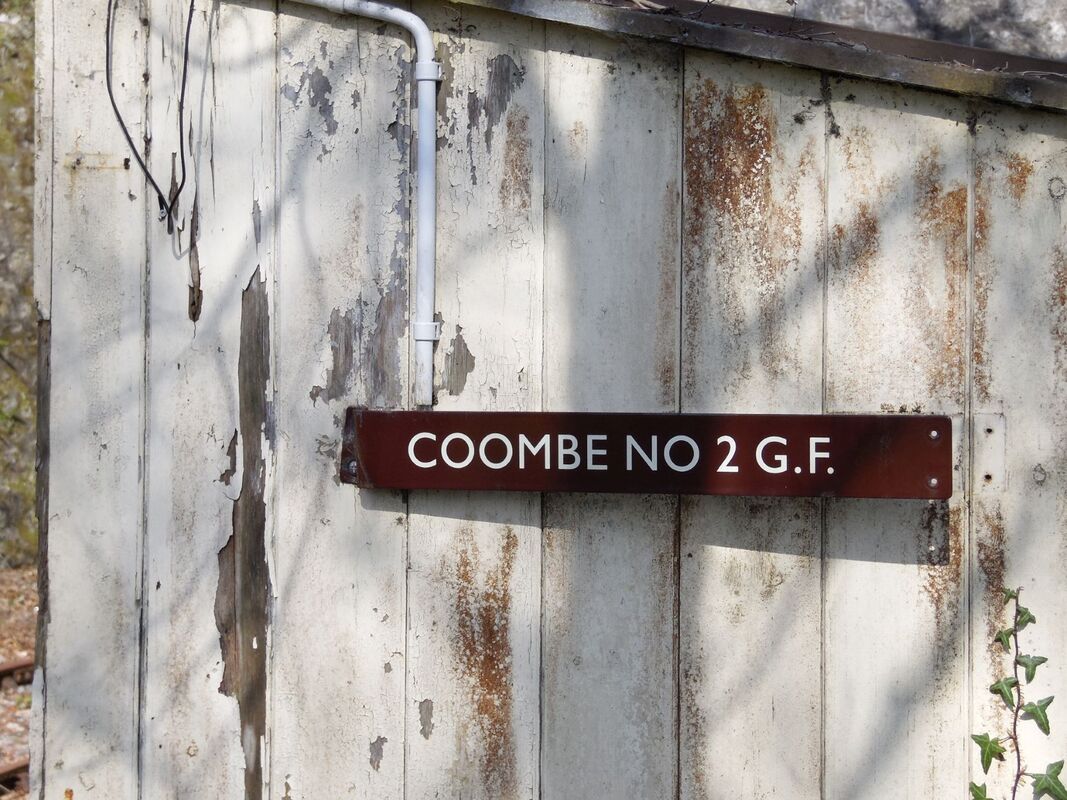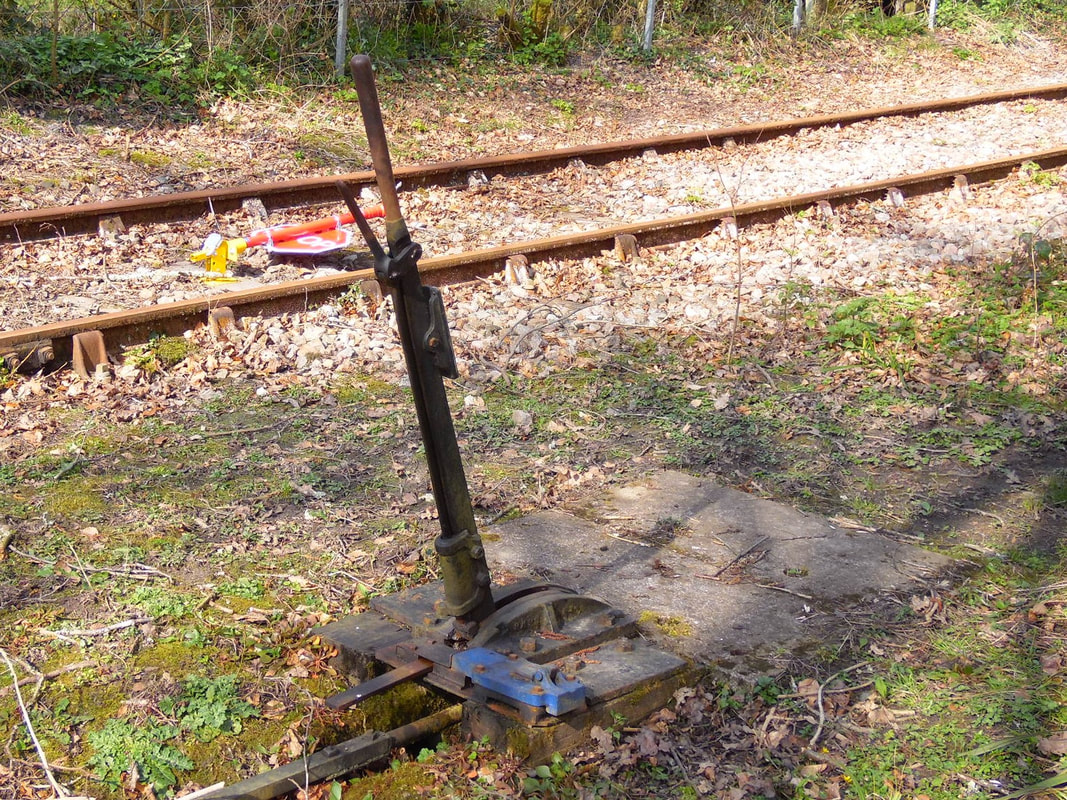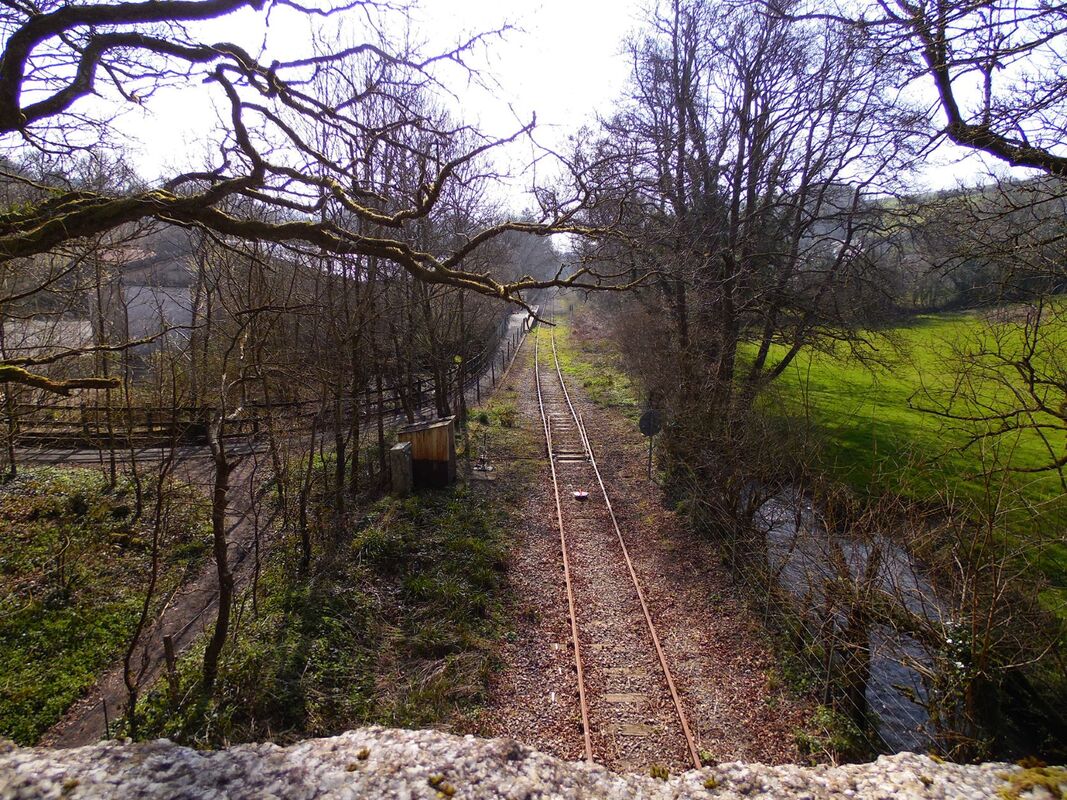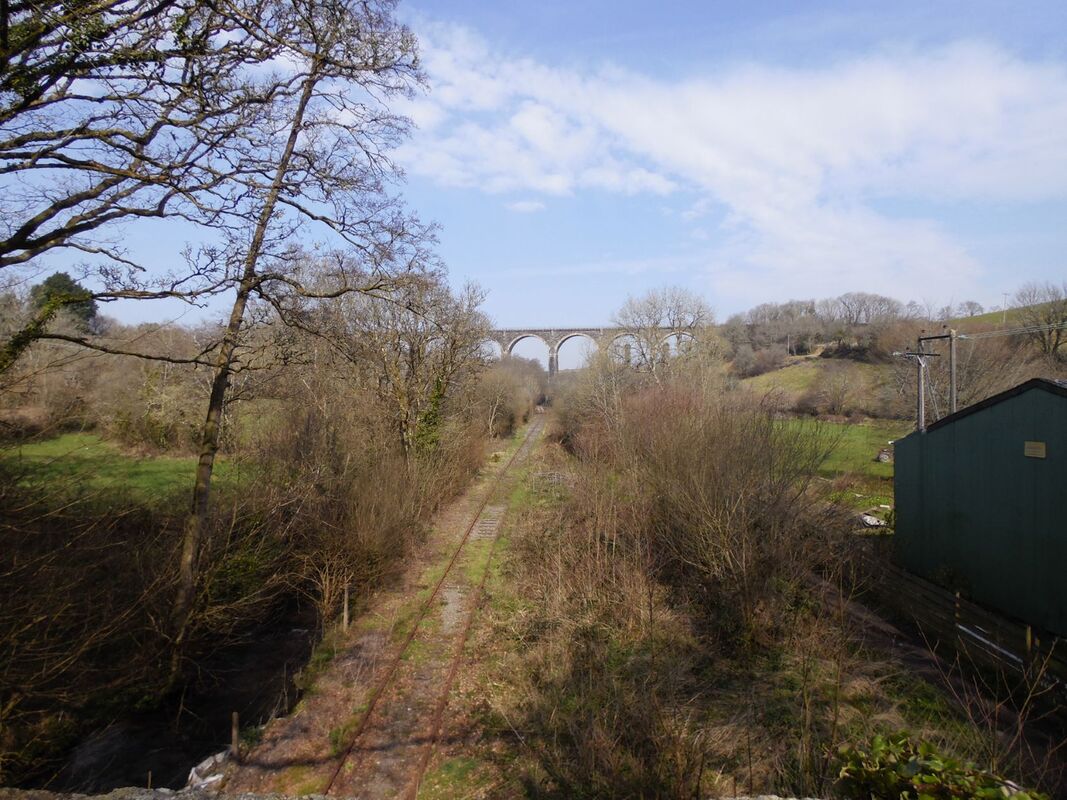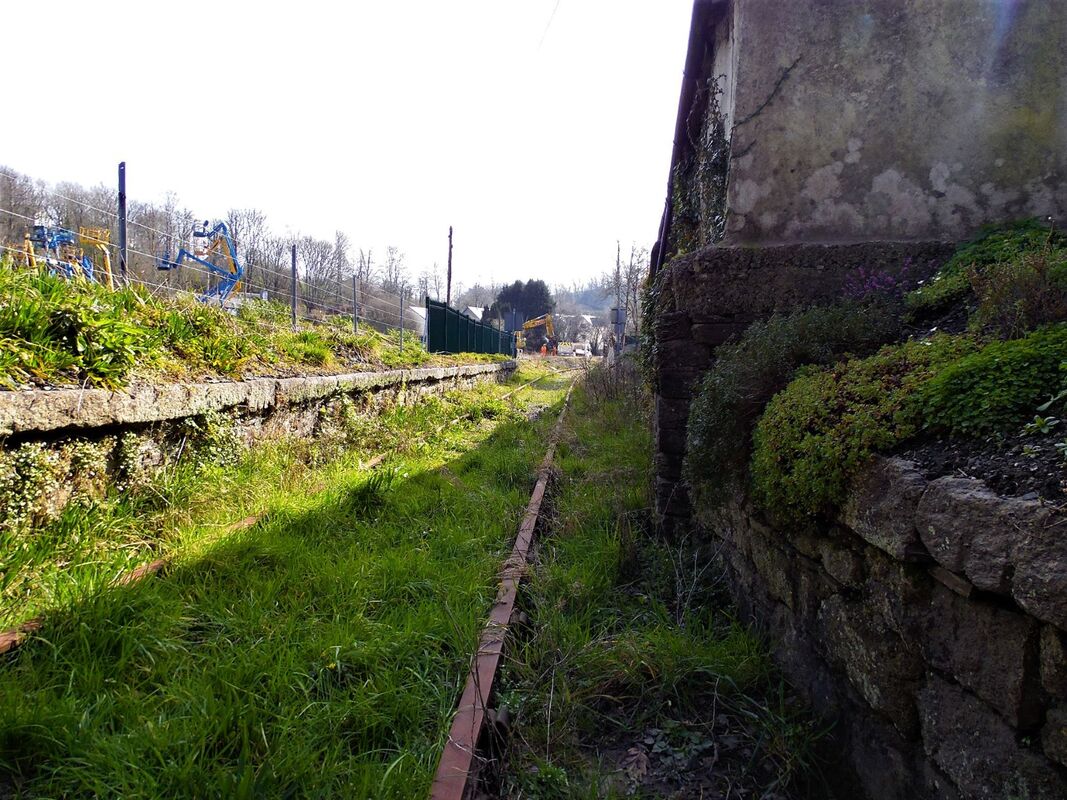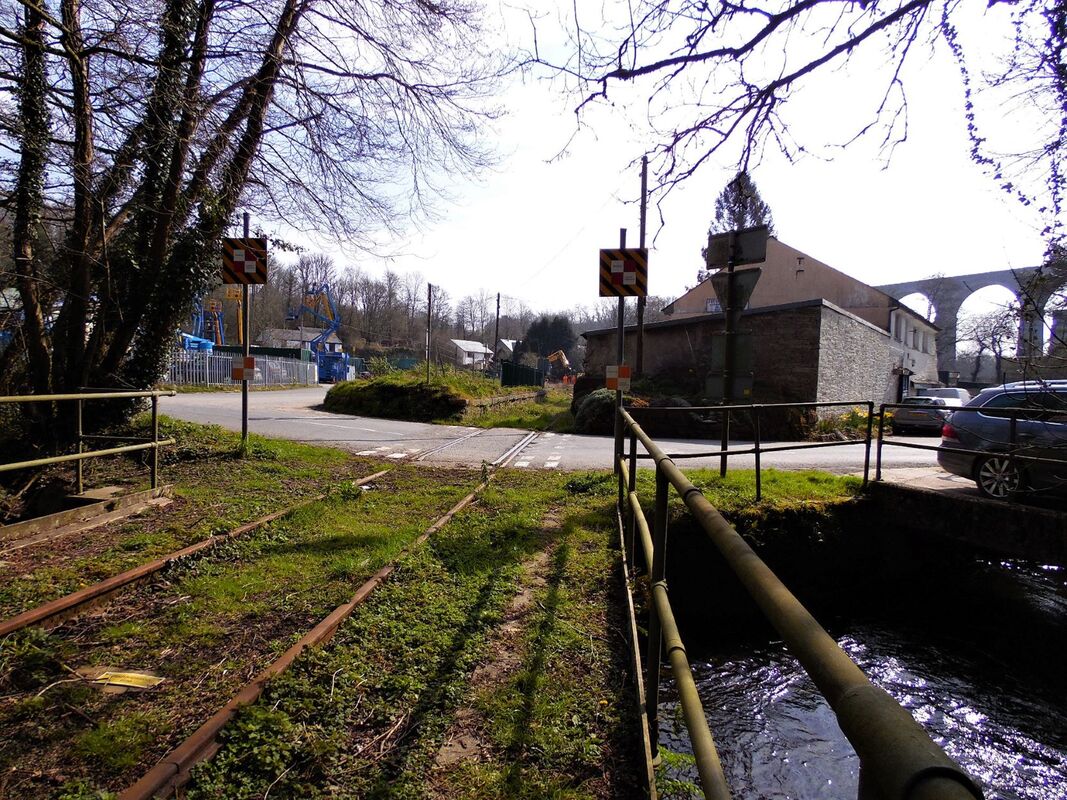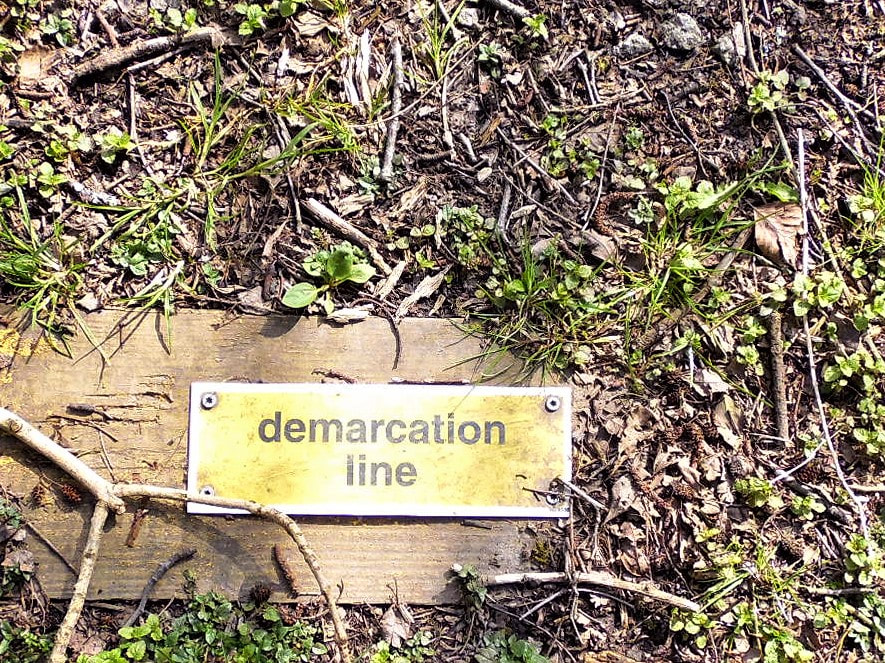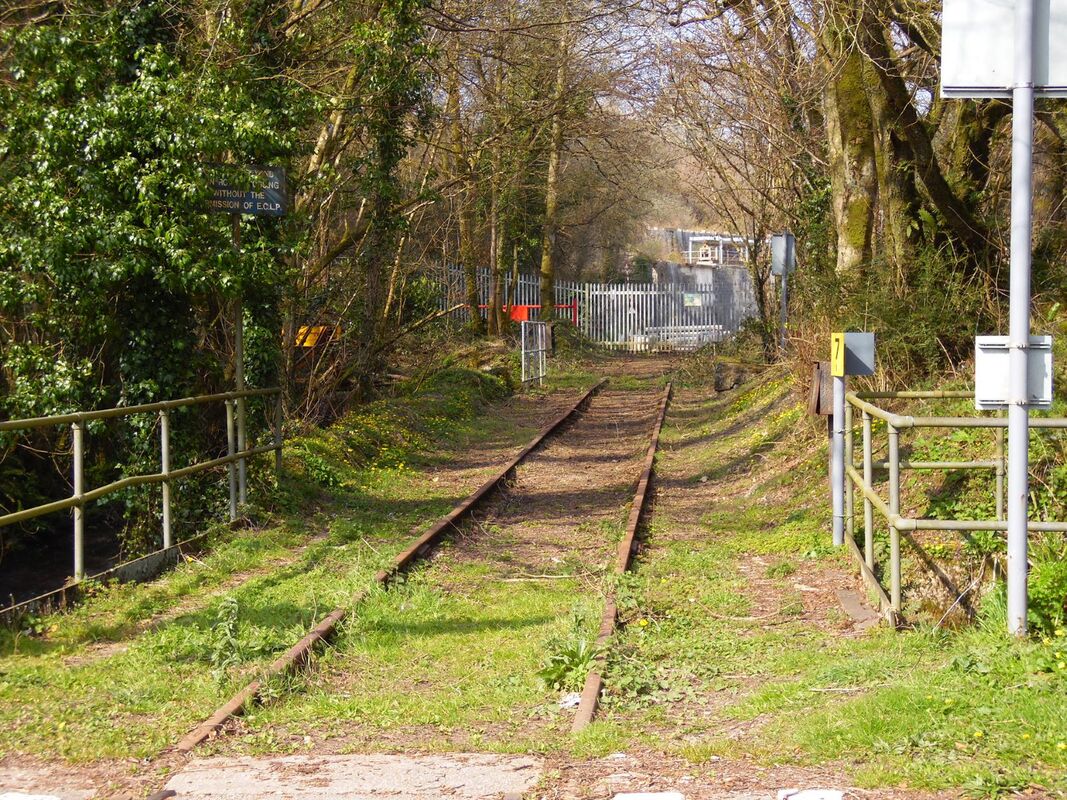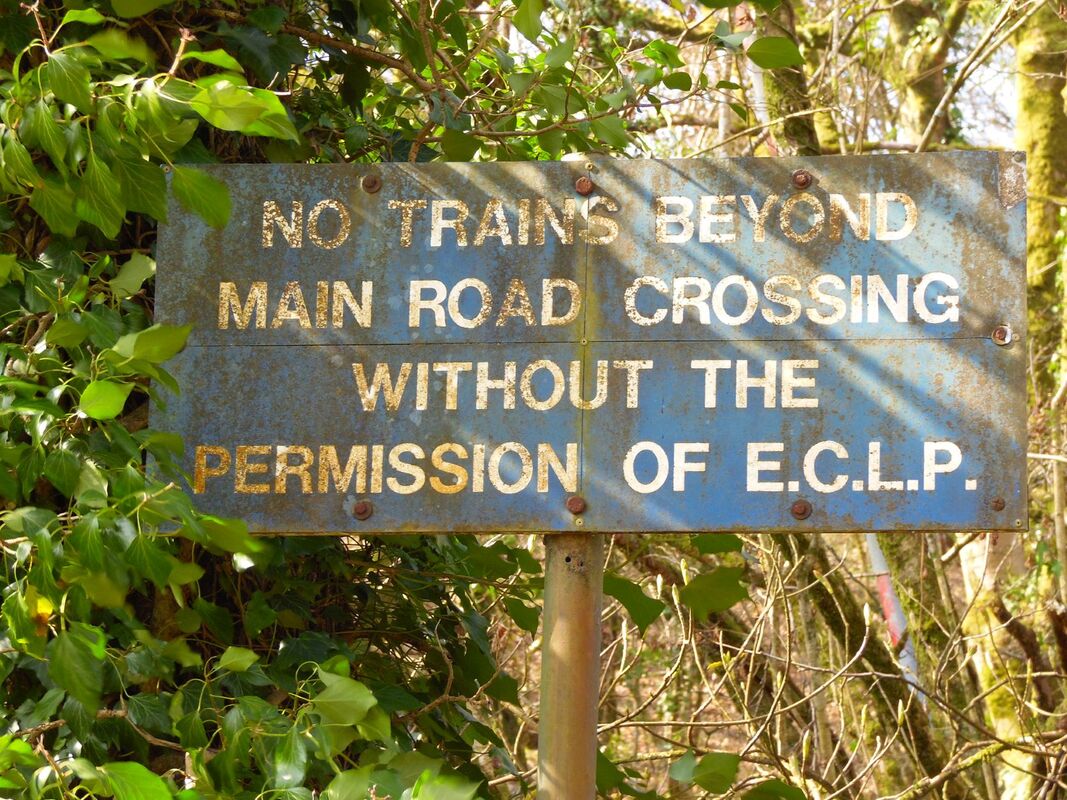Features April to September 2022
Items added in reverse order
The more recent first
Items added in reverse order
The more recent first
item 2237
The Autumn Steam Gala of the Lynton & Barnstaple Railway 24th & 25th Sept 2022
Roger Winnen
Roger Winnen
Item 2236 Liskeard -
'The good Old Days'
Neil Phillips looks Back.
'The good Old Days'
Neil Phillips looks Back.
Hello Roger and Keith,
Please find attached images taken at Liskeard 35 years ago this Friday, 16th September 1987. I was going to say “Those were the days” but 20 years earlier I had been watching the diesel-hydraulics in Cornwall on all manner of traffic, so THOSE were the days! But even so 1987 was still considerably more varied than the present scene.....
Best regards, Neil Phillips
Please find attached images taken at Liskeard 35 years ago this Friday, 16th September 1987. I was going to say “Those were the days” but 20 years earlier I had been watching the diesel-hydraulics in Cornwall on all manner of traffic, so THOSE were the days! But even so 1987 was still considerably more varied than the present scene.....
Best regards, Neil Phillips
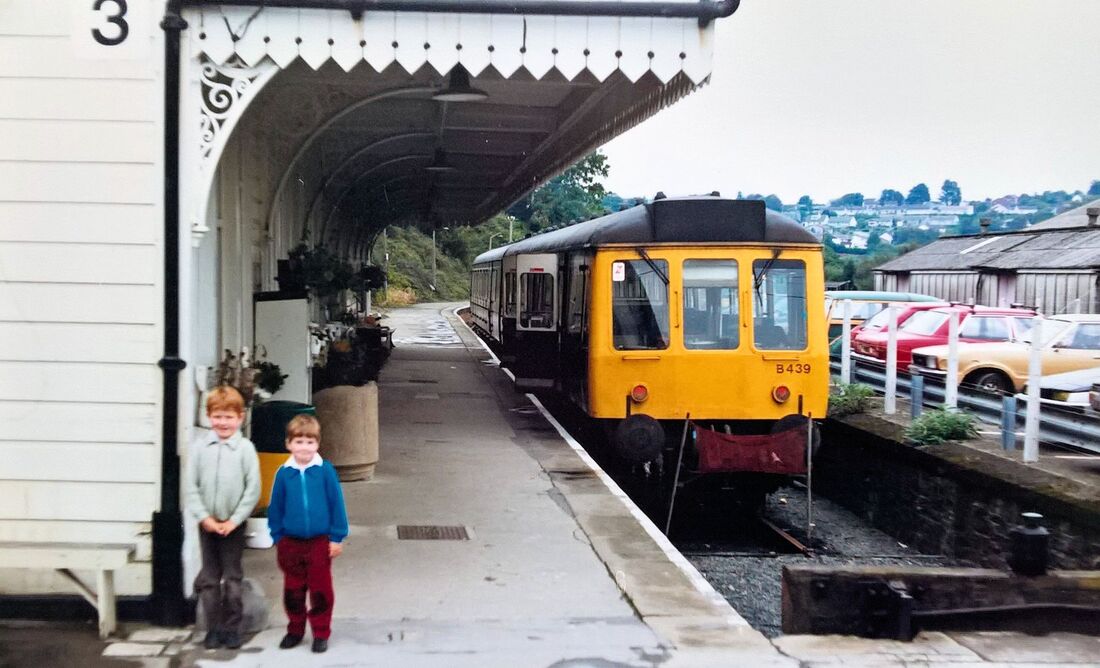
The obligatory photo of the Looe branch train in its platform, with my sons then aged 6 & 4 patiently wondering if Dad had photographed enough trains yet (I had at Liskeard, but we went on to St Germans to photograph a few more......) The eldest is now 6’ 5”, his ‘little’ brother 2” taller! Copyright Neil Phillips.
Many many thanks Neil - quite a record.
Item 2235
Transport Weekend South Devon Railway - Paul Barlow
Bonus pictures - inside the workshops not normally open to the public.
Many thanks Paul for your coverage of this important South Devon Event.
Item 2234
The Helston Railway Heritage Transport Weekend 10th & 11th September 2022 which coincided with the Death of Her Majesty Queen Elizaeth 2nd Age 96
Item 2233
37418 and Inspection saloon Caroline to Fowey
37418 and Inspection saloon Caroline to Fowey
A collection of pictures depicting the rather rare visit of the inspection saloon to Fowey on the 7th September 2022.
Outward
Return
Our very good friend Craig Munday managed to have a seat on board Caroline for the trip to Fowey and kindly sent in his views which include most interesting shots inside the coach.
Many thanks Craig.
Item 2232
Plym Valley Railway Celebrates 40 years at Marsh Mills.
The weather was not favourable in Devon compared with most of Cornwall which was in brilliant sunshine.
However everybody made me most welcome on my visit, as it was nice to see Bernard Mills up and running again.
The weather was not favourable in Devon compared with most of Cornwall which was in brilliant sunshine.
However everybody made me most welcome on my visit, as it was nice to see Bernard Mills up and running again.
Item 2231
Cornwall Railway Society Ride the Cornish Branch Lines with a Cornwall Day Ranger Saturday 27th August 2022
Route Penzance-Par-Newquay-Par-Liskeard-Looe-Liskeard-Plymouth-Gunnislake- Plymouth-Truro-Falmouth-Truro- Par or Penzance
Route Penzance-Par-Newquay-Par-Liskeard-Looe-Liskeard-Plymouth-Gunnislake- Plymouth-Truro-Falmouth-Truro- Par or Penzance
Peter Murnaghan joined our tour at Liskeard for or journey down to Looe pointing out on route the vast number of locks built over 20 in number for the canal running down nearly to Terras Crossing at Looe.
Armed with detailed information he informed us of the restoration of these locks through the train window entertaining us and passengers alike who very interested indeed
Many Thanks Peter!
Armed with detailed information he informed us of the restoration of these locks through the train window entertaining us and passengers alike who very interested indeed
Many Thanks Peter!
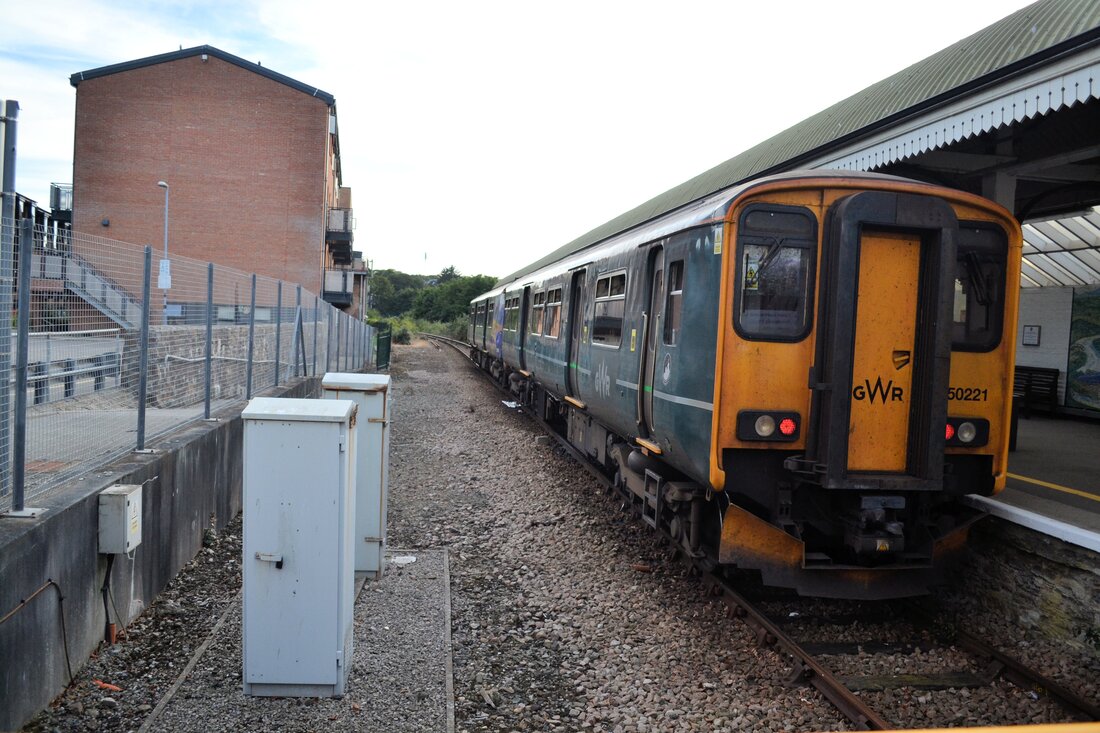
220827zb Not easy to photograph at Falmouth these days, however we meet Chris Groves from Bere Ferrers on the train returning back home only to find that the last train to Bere Ferrers and Gunnislake had been cancelled therefore the railways no doubt would provide a taxi service.Copyright Roger Winnen
Hello Chris It was nice to see you last evening I trust that you got home eventually. All the best Roger Peter and Tony
Item 2230
Hamworthy to Salisbury - Colin Burges traces the route.
Colin heads for Salisbury along finding many points of interest on the way.
https://www.teignrail.co.uk/scouting/70-hamworthy-junction-to-salisbury/
Item 2229
The Vale of Berkeley.
Colin traces the route of the old line towards the ill fated Severn Bridge at Sheerness.
A fascinating tour along the old route some of which still remains.
https://www.teignrail.co.uk/scouting/67-vale-of-berkeley/
The Vale of Berkeley.
Colin traces the route of the old line towards the ill fated Severn Bridge at Sheerness.
A fascinating tour along the old route some of which still remains.
https://www.teignrail.co.uk/scouting/67-vale-of-berkeley/
Item 2228
Return from Okehampton
Colin Burges tours the Okehampton branch long before the current re-instatemen visiting the old station site and investigating the history of the area and route. You can find out his fascinating report by clicking here.
https://www.teignrail.co.uk/scouting/69-return-from-okehampton-ii/
Return from Okehampton
Colin Burges tours the Okehampton branch long before the current re-instatemen visiting the old station site and investigating the history of the area and route. You can find out his fascinating report by clicking here.
https://www.teignrail.co.uk/scouting/69-return-from-okehampton-ii/
Item 2227
Visit to the Bridport Branch 2215 Colin Burges [The scout] reports. An excellent review of over 60 pages by Colin as he follows and researches the route of the old branch through to West Bay.
Please click below
https://www.teignrail.co.uk/scouting/65-return-to-bridport/
Visit to the Bridport Branch 2215 Colin Burges [The scout] reports. An excellent review of over 60 pages by Colin as he follows and researches the route of the old branch through to West Bay.
Please click below
https://www.teignrail.co.uk/scouting/65-return-to-bridport/
Item 2226
Visit to the Great Western Museum at Newton Abbot together with a visit to Dawlish on Saturday 23rd July 2022
This visit was due to take place on the 30th July 2022, however owing to industrial action on the railway network planned for this coming week including Saturday 30th July we took a last minute step to rearrange it for this Saturday
The Museum is the former St Leonards Church in Newtons Place, 43 Woolborough Street, Newton Abbot where we were made most welcome by the museum staff to view and operate the various railway artifacts. Peter Bragg was able to pass on his great knowledge of the railways signalling system to us and the staff in attendance which was most appreciated by all.
We departed after an hour to Dawlish where the reconstruction was still underway, having lunch and eventually ending our tour in Exmouth before returning home from Exeter St David's by Cross Country service to Truro-Redruth and Penzance
The Museum is the former St Leonards Church in Newtons Place, 43 Woolborough Street, Newton Abbot where we were made most welcome by the museum staff to view and operate the various railway artifacts. Peter Bragg was able to pass on his great knowledge of the railways signalling system to us and the staff in attendance which was most appreciated by all.
We departed after an hour to Dawlish where the reconstruction was still underway, having lunch and eventually ending our tour in Exmouth before returning home from Exeter St David's by Cross Country service to Truro-Redruth and Penzance
Dawlish Station
Item 2225
Operation Cornwall
by John Roberts
We were privileged to see Johns report just as he was about to go on holiday - however he did ask for comments on his research - as a result John's work was forwarded to Roy Hart who had an early opportunity to add adjustments.
1. Newquay - Camborne through services.
The Perranporth line was built with the extravagance of a triangle at each end. In the early days the northeastern curve was used for through freights to East Wheal Rose and Treamble, and after a period of disuse was resurrected for engine turning. I'm not aware it was ever used for passengers except maybe an excursion or railtour.
However, the 1911 WTT shows that even when the southwestern curve was open, it was used by only one train a day in one direction only: the 10.35 Perranporth to Redruth goods. Westbound passenger services still reversed at Chacewater: the first Up train at 07.50 Newquay to Camborne was balanced by the 09.35 Camborne to Newquay return. The two others were unbalanced: the 16.10 Camborne to Newquay (formed off the 15.22 Truro to Camborne) and the 18.05 Redruth to Newquay (formed off the 17.15 Truro to Redruth). These are described as Passenger Motors (presumably steam rail-motors) and some are given as little as one minute to reverse at Chacewater. Did the southwestern curve ever see a passenger service?
By 1949 this was down to one return trip per day, the first Up train at 07.30 Newquay to Redruth and the 08.55 return (on Sundays most Newquay trains start from Falmouth).
In 1957, there is an 07.24 Newquay to Camborne and 08.53 return. This is described as an Auto Train, maybe because it's Second Class Only (but see Item 3 below), whereas it's actually formed of a Truro B-Set with an extra Second, and given six minutes to run round at Chacewater.
One can surmise that in 1911 the three through trains were well-timed to serve workers and schoolchildren off the branch, and residents of Camborne-Redruth having a day out in Newquay, but in later years when there was no return service they would have changed at Chacewater. I first travelled the line in the early-60s and don't recall any through trains (other than from and to Truro and one Summer Perranporth to Paddington and return), so I assume they had been withdrawn to cut costs. Does anyone recall using the westerly through services and reversing at Chacewater?
2. Coombe Junction loop.
The Looe Branch summer 1957 timetable shows an average half-hour runtime for a 45XX and B-Set, most having a smart 3-minute turnround at Coombe, giving a service interval of around an hour and a half. As I recall there were no passenger crossing loops and Coombe Junction had only one platform with a length of about two coaches. However, at 10am there are two trains running round in the platform, the first from 10.02 to 10.07 and the second from 10.06 to 10.09. The summer 1961 TT shows two trains leaving Coombe at 10.05 SX (SO one doesn’t call at Coombe but they still cross there). This would have been the last steam summer as Moorswater shed closed around 9th September 1961. Canyone describe the procedure for running round two trains at Coombe?
A similar situation arises at Bodmin General, but the platform is long enough to double-stack two trains; crossing moves are also made at Boscarne.
3. Auto, motor and push-pull trains.
Up to the 1950s timetables, Asburton and Fowey were served by auto-trains, usually a 14xx or small pannier with one or two auto-coaches, while Plymouth suburban had up to four auto-coaches with the loco in the middle. Yealmpton and Perranporth are shown as motor-trains, but as the GWR withdrew its steam rail-motors in 1935, was there a difference between auto-trains and motor-trains? Did GWR diesel railcars ever operate in Cornwall?
In 1953, fifteen 4575s were converted for auto-working the South Wales branches, but in 1957 they were displaced by Cl 116 DMUs. Loco 5572 migrated to Laira and until 1961 worked to Tavistock with a BR brake-third converted to a driving trailer. The 1957 timetable shows one Truro to Newquay return working as 3-PP (presumably three coaches in a push-pull configuration). Was this yet another name for an auto-train, or was there some subtle difference between auto-trains and push-pull trains?
The Perranporth line was built with the extravagance of a triangle at each end. In the early days the northeastern curve was used for through freights to East Wheal Rose and Treamble, and after a period of disuse was resurrected for engine turning. I'm not aware it was ever used for passengers except maybe an excursion or railtour.
However, the 1911 WTT shows that even when the southwestern curve was open, it was used by only one train a day in one direction only: the 10.35 Perranporth to Redruth goods. Westbound passenger services still reversed at Chacewater: the first Up train at 07.50 Newquay to Camborne was balanced by the 09.35 Camborne to Newquay return. The two others were unbalanced: the 16.10 Camborne to Newquay (formed off the 15.22 Truro to Camborne) and the 18.05 Redruth to Newquay (formed off the 17.15 Truro to Redruth). These are described as Passenger Motors (presumably steam rail-motors) and some are given as little as one minute to reverse at Chacewater. Did the southwestern curve ever see a passenger service?
By 1949 this was down to one return trip per day, the first Up train at 07.30 Newquay to Redruth and the 08.55 return (on Sundays most Newquay trains start from Falmouth).
In 1957, there is an 07.24 Newquay to Camborne and 08.53 return. This is described as an Auto Train, maybe because it's Second Class Only (but see Item 3 below), whereas it's actually formed of a Truro B-Set with an extra Second, and given six minutes to run round at Chacewater.
One can surmise that in 1911 the three through trains were well-timed to serve workers and schoolchildren off the branch, and residents of Camborne-Redruth having a day out in Newquay, but in later years when there was no return service they would have changed at Chacewater. I first travelled the line in the early-60s and don't recall any through trains (other than from and to Truro and one Summer Perranporth to Paddington and return), so I assume they had been withdrawn to cut costs. Does anyone recall using the westerly through services and reversing at Chacewater?
2. Coombe Junction loop.
The Looe Branch summer 1957 timetable shows an average half-hour runtime for a 45XX and B-Set, most having a smart 3-minute turnround at Coombe, giving a service interval of around an hour and a half. As I recall there were no passenger crossing loops and Coombe Junction had only one platform with a length of about two coaches. However, at 10am there are two trains running round in the platform, the first from 10.02 to 10.07 and the second from 10.06 to 10.09. The summer 1961 TT shows two trains leaving Coombe at 10.05 SX (SO one doesn’t call at Coombe but they still cross there). This would have been the last steam summer as Moorswater shed closed around 9th September 1961. Canyone describe the procedure for running round two trains at Coombe?
A similar situation arises at Bodmin General, but the platform is long enough to double-stack two trains; crossing moves are also made at Boscarne.
3. Auto, motor and push-pull trains.
Up to the 1950s timetables, Asburton and Fowey were served by auto-trains, usually a 14xx or small pannier with one or two auto-coaches, while Plymouth suburban had up to four auto-coaches with the loco in the middle. Yealmpton and Perranporth are shown as motor-trains, but as the GWR withdrew its steam rail-motors in 1935, was there a difference between auto-trains and motor-trains? Did GWR diesel railcars ever operate in Cornwall?
In 1953, fifteen 4575s were converted for auto-working the South Wales branches, but in 1957 they were displaced by Cl 116 DMUs. Loco 5572 migrated to Laira and until 1961 worked to Tavistock with a BR brake-third converted to a driving trailer. The 1957 timetable shows one Truro to Newquay return working as 3-PP (presumably three coaches in a push-pull configuration). Was this yet another name for an auto-train, or was there some subtle difference between auto-trains and push-pull trains?
Operation Cornwall - some adjustments suggested by Roy Hart;
Dear All,
The Perranporth branch was not built 'with a triangle at each end'. The Cornwall Minerals railway had a triangle at Tolcarn, but this was in tramway days before 1888, and of course the line only ran to Treamble. The triangle was revived in 1931 for engine-turning purposes, as the 1905 turntable at Newquay could not take the new 'Halls'.
Through services between Camborne-Redruth and Newquay were originally steam railmotors, but until 1960 there was a daily service from Camborne.This train normally contained at least one auto car. All trains on the Perranporth line were made up of at least one auto car because of all the halts with tiny platforms. The balance of the train was usually old main line corridor stock. The traditional 'B' set was rarely seen for the same reason.
Blackwater west curve was little used. The west box was 'switched out' for most of its life. After 1916 it carried only an occasional freight.
You will find in the galleries section of the CRS website, 2 photographs of a Camborne to Newquay service (1) entering Chacewater on the main line and (2) setting out on the branch, having run round. Note the auto car. The photos are not together. Go to MAIN LINE -- then SCORRIER TO PENWITHERS.
The photo is from about 1956.
Trains crossing at Coombe Junction: Train 1 arrives from Looe and runs round in the normal way. It then backs into the loop (i.e. the line leading to Moorswater) and comes to a sta nd opposite the platform. Train 2 comes from Liskeard and runs straight into platform. Train 1 goes on its way to Liskeard. Train 2 runs around and proceeds to Looe.
Auto/motor working: Fowey was the only Cornish branch to be worked by auto (i.e push-pull) trains. No Cornish shed had auto fitted engines except the lone Fowey engine at St Blazey. Management references to 'motors' on the Perranporth line refer to auto car accommodation, not auto car in pull-push mode.
Cheers! Roy
The Perranporth branch was not built 'with a triangle at each end'. The Cornwall Minerals railway had a triangle at Tolcarn, but this was in tramway days before 1888, and of course the line only ran to Treamble. The triangle was revived in 1931 for engine-turning purposes, as the 1905 turntable at Newquay could not take the new 'Halls'.
Through services between Camborne-Redruth and Newquay were originally steam railmotors, but until 1960 there was a daily service from Camborne.This train normally contained at least one auto car. All trains on the Perranporth line were made up of at least one auto car because of all the halts with tiny platforms. The balance of the train was usually old main line corridor stock. The traditional 'B' set was rarely seen for the same reason.
Blackwater west curve was little used. The west box was 'switched out' for most of its life. After 1916 it carried only an occasional freight.
You will find in the galleries section of the CRS website, 2 photographs of a Camborne to Newquay service (1) entering Chacewater on the main line and (2) setting out on the branch, having run round. Note the auto car. The photos are not together. Go to MAIN LINE -- then SCORRIER TO PENWITHERS.
The photo is from about 1956.
Trains crossing at Coombe Junction: Train 1 arrives from Looe and runs round in the normal way. It then backs into the loop (i.e. the line leading to Moorswater) and comes to a sta nd opposite the platform. Train 2 comes from Liskeard and runs straight into platform. Train 1 goes on its way to Liskeard. Train 2 runs around and proceeds to Looe.
Auto/motor working: Fowey was the only Cornish branch to be worked by auto (i.e push-pull) trains. No Cornish shed had auto fitted engines except the lone Fowey engine at St Blazey. Management references to 'motors' on the Perranporth line refer to auto car accommodation, not auto car in pull-push mode.
Cheers! Roy
Many thanks to both John and Roy for the original work by John and suggested modifications by Roy. No doubt John will come back with an adjusted article.
Item 2224
DMU Allocations in
Devon and Cornwall 1960 to 1997.
A detailed list provided by John Roberts
DMU Allocations in
Devon and Cornwall 1960 to 1997.
A detailed list provided by John Roberts
CRS Steam to Diesel transition 1958-68 (2)
Broadly, initial allocations of classes eventually seen in Cornwall were:
1956 Cl 101 for NER, LMR and ScR - some migrated to WR (3-car sets 800-6), including Laira 1974-5 and 1987-97.
1957 Cl 103 for Walsall - 2 x 2-car sets (P200-1) migrated to Kingswear for the 1972 season.
1958 Cl 108 for ER and LMR - some migrated to ScR and WR, including Laira 1987-92.
1957 Cl 116 for Tyseley (1957), Cathays (1957-8) and Marsh Junction (1958) suburban.
1959 Cl 117 for Reading and Southall suburban, mainline local and branches.
1960 Cl 118 for Laira and Marsh Junction suburban, mainline local, and branches.
1958 Cl 119 for Marsh Junction (1958), Canton (1959) and Tyseley (1960) cross-country.
1958 Cl 120 for Canton and Marsh Junction (1958), ScR (1959-60) and Tyseley (1961) cross-country.
1960 Cl 121 for Southall, Reading and Marsh Junction branches.
1958 Cl 122 for Southall, Reading and Tyseley branches.
1958 AC Cars - 1 at Perth for Crieff and 4 at Swindon for Kemble.
1963 Cl 123 for Canton - migrated to Reading in 1968 and operated on summer Saturday Paddington to Minehead services. There was also a Fulham to Argyle Footex in 1971 but did they ever reach Cornwall?
After the 1955 Modernisation Plan orders had been placed but before delivery many local services and branches had been closed, and closures continued into the 1970s. Reallocations started almost immediately and many units were never used on the services for which they’d been intended. Eg Cl 123 were built for a Cardiff-Brighton service but didn't run east of Portsmouth.
Initially the vehicles within a set were fairly stable with Laira sets having an LA-prefix set number. By 1971 Plymouth sets had received a P-prefix set number, but from the mid-60s WR non-gangwayed sets were being gangwayed for paytrain operation, then refurbished and painted blue. These were not done in sequence and many sets were reformed apparently randomly with sometimes driving cars and trailers from two or three different classes. In other cases, non-gangwayed cars were paired with gangwayed cars having a lavatory, while yet again sometimes extra power-cars were added so that units could keep up with modern schedules.
Some of the Modernisation Plan DMUs had a 40-year lifespan, so were generally more successful than their locomotive counterparts some of which lasted only 10 years in traffic. Sadly these early vehicles were either withdrawn before the preservation movement took off, or were not seen as glamorous, and therefore many classes became extinct fairly early on.
DMU Allocations to Devon & Cornwall 1960-1997
There can be some discrepancy between vehicles officially allocated and wheels on the ground, due to lag in documentation and temporary loans in or out which are not always recorded. There is also conflicting evidence whether the 2 x AC Cars were officially allocated to St Blazey or merely outbased from Laira.
It may also be seen that there is excessive churn of classes in and out as BR tries to optimise efficiency around the regions. For example, why did they move Cl 101 to Laira in 1974 and then immediately reverse that decision in 1975?
Apr to Jul 1960 - 15 x 3-car Cl 118 delivered, 13 sets officially allocated to Laira, new depot created at Belmont and Harwell Street, to operate west of Newton Abbot, plus 2 sets allocated to Marsh Junction for the Bristol - Taunton service. Similar in design to Cl 116 and 117 suburban units, the Cl 117 and 118 trailer-composites had lavatories for mainline use albeit still non-gangwayed.
13th Jun 60 - Plymouth to Saltash auto-trains converted to DMU (except Tavistock inter-workings).
Jun 61 - 8 x Cl 122 (LA 100-7) arrive at Laira.
Jun 62 - Most Cl 118 replaced by Cl 116 and 120; also 1 x Cl 121 reached Falmouth.
1963 - Laira DMU fleet pretty stable.
1964 - More Cl 116 and 120 arrive, plus 2 x Cl 121, and 2 x AC Cars for Yeovil plus 2 at St Blazey for Bodmin.
5th Oct 64 - most remaining main line local stations close.
1965 - More Cl 116 and 121 arrive, while some Cl 118 return to the area. Fleet size peaks at 130 vehicles.
1966 - Cl 116 start to depart. 2 x AC Cars leave Yeovil.
1967 - General reduction. 2 x AC Cars leave Bodmin.
1968 - Further reduction but some Cl 117 arrive and most Cl 122 leave.
1969 - Slight reduction.
Oct 69 - Belmont and Harwell Street closed and servicing transferred to Laira.
1970 - Slight reduction. Fleet size stabilises at around 54 vehicles.
1971 - 6 x Cl 119 arrive, all Cl 117 and most Cl 118 depart.
1972 - Cl 103 arrive and depart.
1973 - Fleet is now mainly Cl 119 with a few Cl 116, 118, 120, 121 and 122.
1974 - 5 x 3-car Cl 101 displace several Cl 119 and 120.
1975 - 5 x Cl 101 replaced by several Cl 119 and 120.
1976 - Several Cl 119 replaced by Cl 118. Cl 116 and 122 depart, fleet size reduced to 42 vehicles.
1977 - Last Cl 119 depart. Fleet is now all Cl 118 and 120, plus 3 x Cl 121.
1978 - 2 x Cl 116 displace some Cl 120.
1979 - Little change.
1980 - Cl 117 and a few Cl 119 return to the area, last Cl 120 depart.
1981 - Cl 119 depart.
1982 - Cl 117 depart, now almost all Cl 118.
1983 - Last Cl 116 depart, now all Cl 118 plus 1 x Cl 121.
1984 - No change.
1985 - Little change.
1986 - Drastic reduction to 4 x Cl 118, fleet size now 11 vehicles.
1987 - Cl 101, 108, 117, 118, 121 and 122 arrive to replace Cl 142. Fleet size now 50 vehicles.
1988 - Cl 117 depart.
1989 - Cl 118 depart.
1990 - More Cl 101 and 108 arrive. Fleet size peaks at 60 vehicles.
1991 - Little change.
1992 - Cl 108 and 121 and most 101 depart. Fleet size reduced to 9 vehicles.
1993 - 1 x Cl 101 plus 5 x Cl 122 remain, while 4 x Cl 117 return to the area.
24th May 94 - 1 x Cl 101 plus 4 x Cl 117 transferred from Laira to Penzance.
1995 - 1 x Cl 117 added temporarily for the summer season, then 1 x Cl 117 withdrawn.
Jul 95 - Last Cl 119 in service moved to Penzance but not used, so sent for scrap on 11th Aug.
1996 - No change.
Mar 1997 - Remaining cars reallocated from Penzance to Headquarters and moved to store at Exeter.
References:
www.railcar.co.uk
www.shedbashuk.blogspot.com
www.brdatabase.info
Broadly, initial allocations of classes eventually seen in Cornwall were:
1956 Cl 101 for NER, LMR and ScR - some migrated to WR (3-car sets 800-6), including Laira 1974-5 and 1987-97.
1957 Cl 103 for Walsall - 2 x 2-car sets (P200-1) migrated to Kingswear for the 1972 season.
1958 Cl 108 for ER and LMR - some migrated to ScR and WR, including Laira 1987-92.
1957 Cl 116 for Tyseley (1957), Cathays (1957-8) and Marsh Junction (1958) suburban.
1959 Cl 117 for Reading and Southall suburban, mainline local and branches.
1960 Cl 118 for Laira and Marsh Junction suburban, mainline local, and branches.
1958 Cl 119 for Marsh Junction (1958), Canton (1959) and Tyseley (1960) cross-country.
1958 Cl 120 for Canton and Marsh Junction (1958), ScR (1959-60) and Tyseley (1961) cross-country.
1960 Cl 121 for Southall, Reading and Marsh Junction branches.
1958 Cl 122 for Southall, Reading and Tyseley branches.
1958 AC Cars - 1 at Perth for Crieff and 4 at Swindon for Kemble.
1963 Cl 123 for Canton - migrated to Reading in 1968 and operated on summer Saturday Paddington to Minehead services. There was also a Fulham to Argyle Footex in 1971 but did they ever reach Cornwall?
After the 1955 Modernisation Plan orders had been placed but before delivery many local services and branches had been closed, and closures continued into the 1970s. Reallocations started almost immediately and many units were never used on the services for which they’d been intended. Eg Cl 123 were built for a Cardiff-Brighton service but didn't run east of Portsmouth.
Initially the vehicles within a set were fairly stable with Laira sets having an LA-prefix set number. By 1971 Plymouth sets had received a P-prefix set number, but from the mid-60s WR non-gangwayed sets were being gangwayed for paytrain operation, then refurbished and painted blue. These were not done in sequence and many sets were reformed apparently randomly with sometimes driving cars and trailers from two or three different classes. In other cases, non-gangwayed cars were paired with gangwayed cars having a lavatory, while yet again sometimes extra power-cars were added so that units could keep up with modern schedules.
Some of the Modernisation Plan DMUs had a 40-year lifespan, so were generally more successful than their locomotive counterparts some of which lasted only 10 years in traffic. Sadly these early vehicles were either withdrawn before the preservation movement took off, or were not seen as glamorous, and therefore many classes became extinct fairly early on.
DMU Allocations to Devon & Cornwall 1960-1997
There can be some discrepancy between vehicles officially allocated and wheels on the ground, due to lag in documentation and temporary loans in or out which are not always recorded. There is also conflicting evidence whether the 2 x AC Cars were officially allocated to St Blazey or merely outbased from Laira.
It may also be seen that there is excessive churn of classes in and out as BR tries to optimise efficiency around the regions. For example, why did they move Cl 101 to Laira in 1974 and then immediately reverse that decision in 1975?
Apr to Jul 1960 - 15 x 3-car Cl 118 delivered, 13 sets officially allocated to Laira, new depot created at Belmont and Harwell Street, to operate west of Newton Abbot, plus 2 sets allocated to Marsh Junction for the Bristol - Taunton service. Similar in design to Cl 116 and 117 suburban units, the Cl 117 and 118 trailer-composites had lavatories for mainline use albeit still non-gangwayed.
13th Jun 60 - Plymouth to Saltash auto-trains converted to DMU (except Tavistock inter-workings).
Jun 61 - 8 x Cl 122 (LA 100-7) arrive at Laira.
Jun 62 - Most Cl 118 replaced by Cl 116 and 120; also 1 x Cl 121 reached Falmouth.
1963 - Laira DMU fleet pretty stable.
1964 - More Cl 116 and 120 arrive, plus 2 x Cl 121, and 2 x AC Cars for Yeovil plus 2 at St Blazey for Bodmin.
5th Oct 64 - most remaining main line local stations close.
1965 - More Cl 116 and 121 arrive, while some Cl 118 return to the area. Fleet size peaks at 130 vehicles.
1966 - Cl 116 start to depart. 2 x AC Cars leave Yeovil.
1967 - General reduction. 2 x AC Cars leave Bodmin.
1968 - Further reduction but some Cl 117 arrive and most Cl 122 leave.
1969 - Slight reduction.
Oct 69 - Belmont and Harwell Street closed and servicing transferred to Laira.
1970 - Slight reduction. Fleet size stabilises at around 54 vehicles.
1971 - 6 x Cl 119 arrive, all Cl 117 and most Cl 118 depart.
1972 - Cl 103 arrive and depart.
1973 - Fleet is now mainly Cl 119 with a few Cl 116, 118, 120, 121 and 122.
1974 - 5 x 3-car Cl 101 displace several Cl 119 and 120.
1975 - 5 x Cl 101 replaced by several Cl 119 and 120.
1976 - Several Cl 119 replaced by Cl 118. Cl 116 and 122 depart, fleet size reduced to 42 vehicles.
1977 - Last Cl 119 depart. Fleet is now all Cl 118 and 120, plus 3 x Cl 121.
1978 - 2 x Cl 116 displace some Cl 120.
1979 - Little change.
1980 - Cl 117 and a few Cl 119 return to the area, last Cl 120 depart.
1981 - Cl 119 depart.
1982 - Cl 117 depart, now almost all Cl 118.
1983 - Last Cl 116 depart, now all Cl 118 plus 1 x Cl 121.
1984 - No change.
1985 - Little change.
1986 - Drastic reduction to 4 x Cl 118, fleet size now 11 vehicles.
1987 - Cl 101, 108, 117, 118, 121 and 122 arrive to replace Cl 142. Fleet size now 50 vehicles.
1988 - Cl 117 depart.
1989 - Cl 118 depart.
1990 - More Cl 101 and 108 arrive. Fleet size peaks at 60 vehicles.
1991 - Little change.
1992 - Cl 108 and 121 and most 101 depart. Fleet size reduced to 9 vehicles.
1993 - 1 x Cl 101 plus 5 x Cl 122 remain, while 4 x Cl 117 return to the area.
24th May 94 - 1 x Cl 101 plus 4 x Cl 117 transferred from Laira to Penzance.
1995 - 1 x Cl 117 added temporarily for the summer season, then 1 x Cl 117 withdrawn.
Jul 95 - Last Cl 119 in service moved to Penzance but not used, so sent for scrap on 11th Aug.
1996 - No change.
Mar 1997 - Remaining cars reallocated from Penzance to Headquarters and moved to store at Exeter.
References:
www.railcar.co.uk
www.shedbashuk.blogspot.com
www.brdatabase.info
Item 2223
The transition from Steam to Diesel
- Depot closure dates etc.
By John Roberts
The transition from Steam to Diesel
- Depot closure dates etc.
By John Roberts
I’ve developed an interest in the steam to diesel transition which is not well-collated in the public press. Your item on 28th April about the last steam railtour from St Blazey inspired me to start some research. It’s work in progress so firstly via our news page can I ask folks to contribute the last steam and first diesel services on each of the Cornish lines. The last all-steam year would have been 1957, as the first Warships and NBL2s entered service in January 1958 and January 1959 respectively, and the first Cl 118s arrived in April 1960. The CRS website well-documents the closure of St Ives shed in September 1961 and the last steam service to St Ives on 10th August 1962. Penzance shed closed to steam on 10th September 1962 but the steam timetable probably continued for another year until the last through Riviera to St Ives on 7th Sep 1963. Did any steam cross the Tamar during that time? What were the last rostered turns, apart from railtours?
Sadly I wasn't a member of any railway societies at the time but, apart from the few enthusiast specials culminating in the final run on 3rd May 1964, I don't recall anything in the West Briton. Maybe BR wanted to keep it as quiet as possible to avoid any union backlash. Does anyone have any contemporary press cuttings?
CRS Steam to Diesel transition 1958-68 (1)
Secondly, for Features no 2223 I've listed all the WR Steam Shed closures. I've also included all the sub-sheds within the West of England. You will note that the end of steam broadly moved from west to east and then north, with the transition largely completed within the five-year period from 1961 to 1966. Note also that around this time there was some regional reorganisation with sheds being renumbered, or temporarily closed for conversion to diesel and reopening with a different designation, while in the Midlands WR allocations were combined with or displaced by LMR sheds.
WR Sheds - dates of closure to steam
Caution is required, eg Laira is quoted elsewhere as allocation withdrawn Oct 63 and officially closed Oct 64. Even though a shed may have had no steam allocated, locos from other sheds may have visited for servicing. Other sites quote the official closure of Laira as 13th Jun 65 when the access lines were disconnected.
Newton Abbot Division
PZ - 83G - 10th Sep 62.
St Ives - Sep 61, last steam 10th Aug 62, SB cl 7th Sep 63, Electric Token introduced 28th Jun 56, Viaduct rebuilt Apr 1955.
Helston - Dec 61?
TR - 83F - Mar 62.
SBZ - 83E - 28th Apr 62.
Bodmin - Apr 62.
Moorswater - Sep 61, last steam to Looe 9th Sep 61.
LA - 83D - 84A - Apr 64?
Launceston - Dec 62.
NA - 83A - 1st Apr 62.
Kingsbridge - Sep 61.
EXE - 83C - Oct 63.
Tiverton Jn - Oct 64.
TN - 83B - Oct 64.
Bridgwater - Jul 60.
Bristol Division
WEY - 82F - 71G - 70G - 9th Jul 67 (WR section closed around mid-63).
Bridport - Sep 66?
YEO - 72C - 83E - Jun 65.
YEO - 82E - 71H - 5th Jan 1959.
WES - 82D - 83C - Sep 65.
SPM - 82B - 13th Jun 1964.
BRD - 82A - 12th Sep 1960.
SDN - 82C - Oct 64.
London Division
OXF - 81F - 3rd Jan 66.
DID - 81E - Jun 65.
RDG - 81D - 4th Jan 65.
SLO - 81B - 1st Jun 64.
SHL - 81C - 3rd Jan 66.
PDN - 81A - 22nd Mar 65.
Worcester Division
GLO - 85B - 1st Jan 66.
HFD - 85C - 86C - 2nd Nov 64.
WOS - 85A - Dec 65.
KDR - 85D - 84G - 2P - Aug 64.
Wolverhampton Division
BAN - 84C - 2D - 3rd Oct 66.
LMTN - 84D - 2L - 14th Jun 65.
TYS - 84E - 2A - 7th Nov 66.
STB - 84F - 2C - 11th Jul 66.
SRD - 84A - 9th Sep 63.
OXY - 84B - 2B - Mar 67 (WR allocation w/d c65).
WLN - 84H - 2M - 10th Aug 64.
SALOP - 84G - 89A - 6D - 6th Nov 67 (WR allocation w/d c66).
CNYD - 84J - 89B - 6C - 5th Jun 67 (WR allocation w/d c66).
CHR - 84K - 6E - 10th Apr 60.
BHD - 6C - 8H - 6th Nov 67 (WR allocation w/d c60).
Oswestry Division
BCN - 89B - 88K - 31st Dec 62.
MCH - 89C - 6F - 5th Dec 66.
OSW - 89A - 89D - 6E - 18th Jan 65.
Sadly I wasn't a member of any railway societies at the time but, apart from the few enthusiast specials culminating in the final run on 3rd May 1964, I don't recall anything in the West Briton. Maybe BR wanted to keep it as quiet as possible to avoid any union backlash. Does anyone have any contemporary press cuttings?
CRS Steam to Diesel transition 1958-68 (1)
Secondly, for Features no 2223 I've listed all the WR Steam Shed closures. I've also included all the sub-sheds within the West of England. You will note that the end of steam broadly moved from west to east and then north, with the transition largely completed within the five-year period from 1961 to 1966. Note also that around this time there was some regional reorganisation with sheds being renumbered, or temporarily closed for conversion to diesel and reopening with a different designation, while in the Midlands WR allocations were combined with or displaced by LMR sheds.
WR Sheds - dates of closure to steam
Caution is required, eg Laira is quoted elsewhere as allocation withdrawn Oct 63 and officially closed Oct 64. Even though a shed may have had no steam allocated, locos from other sheds may have visited for servicing. Other sites quote the official closure of Laira as 13th Jun 65 when the access lines were disconnected.
Newton Abbot Division
PZ - 83G - 10th Sep 62.
St Ives - Sep 61, last steam 10th Aug 62, SB cl 7th Sep 63, Electric Token introduced 28th Jun 56, Viaduct rebuilt Apr 1955.
Helston - Dec 61?
TR - 83F - Mar 62.
SBZ - 83E - 28th Apr 62.
Bodmin - Apr 62.
Moorswater - Sep 61, last steam to Looe 9th Sep 61.
LA - 83D - 84A - Apr 64?
Launceston - Dec 62.
NA - 83A - 1st Apr 62.
Kingsbridge - Sep 61.
EXE - 83C - Oct 63.
Tiverton Jn - Oct 64.
TN - 83B - Oct 64.
Bridgwater - Jul 60.
Bristol Division
WEY - 82F - 71G - 70G - 9th Jul 67 (WR section closed around mid-63).
Bridport - Sep 66?
YEO - 72C - 83E - Jun 65.
YEO - 82E - 71H - 5th Jan 1959.
WES - 82D - 83C - Sep 65.
SPM - 82B - 13th Jun 1964.
BRD - 82A - 12th Sep 1960.
SDN - 82C - Oct 64.
London Division
OXF - 81F - 3rd Jan 66.
DID - 81E - Jun 65.
RDG - 81D - 4th Jan 65.
SLO - 81B - 1st Jun 64.
SHL - 81C - 3rd Jan 66.
PDN - 81A - 22nd Mar 65.
Worcester Division
GLO - 85B - 1st Jan 66.
HFD - 85C - 86C - 2nd Nov 64.
WOS - 85A - Dec 65.
KDR - 85D - 84G - 2P - Aug 64.
Wolverhampton Division
BAN - 84C - 2D - 3rd Oct 66.
LMTN - 84D - 2L - 14th Jun 65.
TYS - 84E - 2A - 7th Nov 66.
STB - 84F - 2C - 11th Jul 66.
SRD - 84A - 9th Sep 63.
OXY - 84B - 2B - Mar 67 (WR allocation w/d c65).
WLN - 84H - 2M - 10th Aug 64.
SALOP - 84G - 89A - 6D - 6th Nov 67 (WR allocation w/d c66).
CNYD - 84J - 89B - 6C - 5th Jun 67 (WR allocation w/d c66).
CHR - 84K - 6E - 10th Apr 60.
BHD - 6C - 8H - 6th Nov 67 (WR allocation w/d c60).
Oswestry Division
BCN - 89B - 88K - 31st Dec 62.
MCH - 89C - 6F - 5th Dec 66.
OSW - 89A - 89D - 6E - 18th Jan 65.
Many thanks John, the compilation of both of your articles 2223 and 2224 must have taken you many hours of painstaking research.
========================================================================================================================================
Item 2222
Part 1 -
The Swanage Branch Diesel Gala, Paul Barlow Visits
Part 1 -
The Swanage Branch Diesel Gala, Paul Barlow Visits
Part 2 -
The Swanage Branch Diesel Gala, Andrew Triggs Visits
The Swanage Branch Diesel Gala, Andrew Triggs Visits
Just returned from the excellent (and busy) Swanage Diesel Gala, find enclosed shots for CRS of the visiting Locomotives, I also got back in time to capture the departing 'Statesman' Tour with Class 47's D1944 and D1935 at Marazion. A rewarding weekend indeed
All the Best, Andrew
All the Best, Andrew
Looks like you both had a very good visits - many thanks to Paul and Andrew for your coverage.
Item 2221
Castle Class HST Power Car Fleet & Naming Update also notes on former GWR fleet 1st May 2022.
- A comprehensive list prepared by Guy Vincent
Castle Class HST Power Car Fleet & Naming Update also notes on former GWR fleet 1st May 2022.
- A comprehensive list prepared by Guy Vincent
Castle Class HST Power Car Fleet & Naming Update 04th May 2022
Time for a well overdue update to the list of GWR operated 'Castle Class' class 43 power cars that was first published on the CRS site on 15th February 2020. Since then further power cars have been added to the fleet, no withdrawals have taken place and all bar one of the original names have been applied with a further name added!
Here then is the full list with naming dates where known or first reported as named. All PC's carry GWR Green livery.
43004 Caerphilly Castle (applied 16.12.2019)
43005 St Michael's Mount (applied at Laira 11.01.2022)
43009 Nunney Castle
43010 Lydford Castle
43016 Powderham Castle (reported 28.01.2022)
43022 Nether Stowey Castle (reported 3.7.2022)
43027 Acton Castle
43029 Reported on 18th as being named Caldicot Caste.
43040 Berry Pomery Castle
43041 St Catherine's Castle (09.10.2019)
43042 Tregenna Castle (29.01.2020)
43088 Datmouth Castle
43092 Cromwell's Castle (25.09.2019)
43093 Old Oak Common HST Depot 1976-2018 plus Legends of the GWR vinyls (Barkeley Castle)
43094 St Mawes Castle (06.01.2020)
43097 Castle Drogo (reported on 06.06.2020, name replaced 'Environment Agency' previously carried)
43098 Walton Castle (10.02.2020)
43122 Dunster Castle (05.02.2020)
43153 Chun Castle (19.10.2019)
43154 Compton Castle (20.01.2020)
43155 Rougemont Castle ((12.01.2022)
43156 Maen Castle (27.7.2022)
43158 Kingswear Castle (05.02.2020)
43160 Castle-an-Dinas (reported 24.04.2022)
43162 Caerhays Castle (22.06.2022)
43170 Chepstow Castle (13.11.2019)
43171 Raglan Castle (NEW NAME reported 03.05.2022)
43172 Tiverton Castle (21.04.2022) NEW NAME (PC formerly named Harry Patch in WW1 livery)
43186 Taunton Castle (19.12.2019)
43187 Cardiff Castle (reported named at Laira on 11.01.2022)
43188 Newport Castle (reported 04.05.2020)
43189 Launceston Castle (13.11.2019)
43192 Trematon Castle (reported 20.03.2020)
43194 Okehampton Castle (14.09.2019)
43198 Driver Brian Cooper / Driver Stan Martin. Recently overhauled & returned to service after long period stopped
The only name not yet used from the original series of 24 is Berry Pomeroy Castle. Raglan & Tiverton Castles are new additions to the set. Will we see Bristol Castle added to the list as it sits squarely on the route served by these trains?
Since the Feb 2020 report the following PC's have been added to the fleet bringing the total in use by GWR to 35.
43009 010 022 027 029 088 156 160 162 171 172
Several class 43 PCs are at Laira for component recovery to enable the fleet to remain in service for as long and as economically as possible. These are 43063 069 078 086 087 091 161 180 193 195 196 197
Power cars stored at Ely, Cambs. 43017 020 023 024 025 165 174 190 191
Former GW-operated PC's now in preservation are 43002 (NRM York) 43018 (The Railway Age Crewe) 43056 (Gwili Railway) 43071 (Colne Valley Railway) 43159 (The 125 Group, Ruddington)
Former GW-operated PC's that have been scrapped are: 43011 019 053 070 079 140 173
Scot Rail now operate 43003 012 015 021 026 028 031 032 033 034 035 036 037 124-139 141-152 163 164 168 169 175 176 177 179 181 182 183 43030 was damaged in the Stonehaven derailment in August 2020. 43185 is at Kilmarnock for spares recovery.
To conclude this feature I thought I would add the small group of class 57/6 locomotives that are used to power the overnight 'sleeper' services between Paddington and Penzance as these carry 'Castle' names.
57602 Restormel Castle 57603 Titagel Castle 57604 PENDENNIS CASTLE (Brass plates with capitals used throughout, loco in 'classic' GWR green) 57605 Totnes Castle
With regards
Guy Vincent 4th May 2022
Time for a well overdue update to the list of GWR operated 'Castle Class' class 43 power cars that was first published on the CRS site on 15th February 2020. Since then further power cars have been added to the fleet, no withdrawals have taken place and all bar one of the original names have been applied with a further name added!
Here then is the full list with naming dates where known or first reported as named. All PC's carry GWR Green livery.
43004 Caerphilly Castle (applied 16.12.2019)
43005 St Michael's Mount (applied at Laira 11.01.2022)
43009 Nunney Castle
43010 Lydford Castle
43016 Powderham Castle (reported 28.01.2022)
43022 Nether Stowey Castle (reported 3.7.2022)
43027 Acton Castle
43029 Reported on 18th as being named Caldicot Caste.
43040 Berry Pomery Castle
43041 St Catherine's Castle (09.10.2019)
43042 Tregenna Castle (29.01.2020)
43088 Datmouth Castle
43092 Cromwell's Castle (25.09.2019)
43093 Old Oak Common HST Depot 1976-2018 plus Legends of the GWR vinyls (Barkeley Castle)
43094 St Mawes Castle (06.01.2020)
43097 Castle Drogo (reported on 06.06.2020, name replaced 'Environment Agency' previously carried)
43098 Walton Castle (10.02.2020)
43122 Dunster Castle (05.02.2020)
43153 Chun Castle (19.10.2019)
43154 Compton Castle (20.01.2020)
43155 Rougemont Castle ((12.01.2022)
43156 Maen Castle (27.7.2022)
43158 Kingswear Castle (05.02.2020)
43160 Castle-an-Dinas (reported 24.04.2022)
43162 Caerhays Castle (22.06.2022)
43170 Chepstow Castle (13.11.2019)
43171 Raglan Castle (NEW NAME reported 03.05.2022)
43172 Tiverton Castle (21.04.2022) NEW NAME (PC formerly named Harry Patch in WW1 livery)
43186 Taunton Castle (19.12.2019)
43187 Cardiff Castle (reported named at Laira on 11.01.2022)
43188 Newport Castle (reported 04.05.2020)
43189 Launceston Castle (13.11.2019)
43192 Trematon Castle (reported 20.03.2020)
43194 Okehampton Castle (14.09.2019)
43198 Driver Brian Cooper / Driver Stan Martin. Recently overhauled & returned to service after long period stopped
The only name not yet used from the original series of 24 is Berry Pomeroy Castle. Raglan & Tiverton Castles are new additions to the set. Will we see Bristol Castle added to the list as it sits squarely on the route served by these trains?
Since the Feb 2020 report the following PC's have been added to the fleet bringing the total in use by GWR to 35.
43009 010 022 027 029 088 156 160 162 171 172
Several class 43 PCs are at Laira for component recovery to enable the fleet to remain in service for as long and as economically as possible. These are 43063 069 078 086 087 091 161 180 193 195 196 197
Power cars stored at Ely, Cambs. 43017 020 023 024 025 165 174 190 191
Former GW-operated PC's now in preservation are 43002 (NRM York) 43018 (The Railway Age Crewe) 43056 (Gwili Railway) 43071 (Colne Valley Railway) 43159 (The 125 Group, Ruddington)
Former GW-operated PC's that have been scrapped are: 43011 019 053 070 079 140 173
Scot Rail now operate 43003 012 015 021 026 028 031 032 033 034 035 036 037 124-139 141-152 163 164 168 169 175 176 177 179 181 182 183 43030 was damaged in the Stonehaven derailment in August 2020. 43185 is at Kilmarnock for spares recovery.
To conclude this feature I thought I would add the small group of class 57/6 locomotives that are used to power the overnight 'sleeper' services between Paddington and Penzance as these carry 'Castle' names.
57602 Restormel Castle 57603 Titagel Castle 57604 PENDENNIS CASTLE (Brass plates with capitals used throughout, loco in 'classic' GWR green) 57605 Totnes Castle
With regards
Guy Vincent 4th May 2022
Keeping up to date :- Hello again Keith
..and still the names keep appearing. I think that when the time comes for these fine workhorses to be withdrawn those plates will fetch an awful lot of money, most likely for charitable causes. They are all works of art and a welcome link to the past naming heritage of the Great Western Railway.
To answer Bill Elston's comment regarding 43187 and 43188. The IO Group 'SW-SWRG' puts up a daily listing of all GWR and Cross Country HST formations and workings and this can be searched by individual vehicle number. It last reported 43187 in traffic on 09.04.2021 and 43188 on 23.09.2021. I believe major exams and component exchanges are ongoing at Laira so guess that these two are currently stopped for attention. 43198 recently returned to traffic after being out for well over a year! There are 16 sets of coaching stock and on an average day around 12 are in use so there is adequate cover for the 24 PCs needed with around a dozen spare.
Regards for now, Guy Vincent.
..and still the names keep appearing. I think that when the time comes for these fine workhorses to be withdrawn those plates will fetch an awful lot of money, most likely for charitable causes. They are all works of art and a welcome link to the past naming heritage of the Great Western Railway.
To answer Bill Elston's comment regarding 43187 and 43188. The IO Group 'SW-SWRG' puts up a daily listing of all GWR and Cross Country HST formations and workings and this can be searched by individual vehicle number. It last reported 43187 in traffic on 09.04.2021 and 43188 on 23.09.2021. I believe major exams and component exchanges are ongoing at Laira so guess that these two are currently stopped for attention. 43198 recently returned to traffic after being out for well over a year! There are 16 sets of coaching stock and on an average day around 12 are in use so there is adequate cover for the 24 PCs needed with around a dozen spare.
Regards for now, Guy Vincent.
Newly named 43162 Caerhays Castle reported today leading 2U10 0746 Plymouth - Cardiff Central with 43158 at the rear. A further name for the collection! According to the diagram it's on and subject to any external factors (including strike service alterations) permitting, it should end the day at Penzance IF 2C87 1800 ex Cardiff Central makes it through tonight. Another Castle for you to research Keith!
Regards, Guy Vincent. Report dated 22nd June 2022
Regards, Guy Vincent. Report dated 22nd June 2022
A further update from Guy received 2nd September 2022
Good morning Keith / Roger
Since compiling my last report on GWR 'Castle Class' namings, published on the CRS site on 5th May 2022, further names have been added. This supplementary list is correct to 1st September 2022.
43009 Nunney Castle (seen un-named 29.08.22, named 01.09.2022)
43010 Lydford Castle (reported 28.07.2022)
43022 Nether Stowey Castle (seen 03.07.2022)
43029 Caldicot Castle (reported 18.05.2022)
43040 Berry Pomeroy Castle with Falklands 40th Anniversary Decals. (Named at Plymouth Station 14.06.2022)
43088 Dartmouth Castle (reported & seen 21.08.2022)
43093 Berkeley Castle (reported 21.08.2022, retains Old Oak Common 'Legends of the GWR' vinyls from 2018)
43156 Maen Castle (reported 11.07.2022)
43162 Caerhays Castle (reported 22.06.2022)
This leaves only 43027 un-named. Given the speed of recent namings expect to receive a report on this one in the next few days...
Unconfirmed reports elsewhere suggest that four of the 'Castle' sets are due to be retired from service at the December timetable change with class 800s being brought in to work some of the Cardiff-Penzance diagrams. If true then some of these nameplates will soon disappear! Real Time Trains will show train allocations for the new timetable period in due course.
Finally, former GW PC's scrapped since the last report are 43069 43193 and 43197.
Best regards
Guy Vincent
Good morning Keith / Roger
Since compiling my last report on GWR 'Castle Class' namings, published on the CRS site on 5th May 2022, further names have been added. This supplementary list is correct to 1st September 2022.
43009 Nunney Castle (seen un-named 29.08.22, named 01.09.2022)
43010 Lydford Castle (reported 28.07.2022)
43022 Nether Stowey Castle (seen 03.07.2022)
43029 Caldicot Castle (reported 18.05.2022)
43040 Berry Pomeroy Castle with Falklands 40th Anniversary Decals. (Named at Plymouth Station 14.06.2022)
43088 Dartmouth Castle (reported & seen 21.08.2022)
43093 Berkeley Castle (reported 21.08.2022, retains Old Oak Common 'Legends of the GWR' vinyls from 2018)
43156 Maen Castle (reported 11.07.2022)
43162 Caerhays Castle (reported 22.06.2022)
This leaves only 43027 un-named. Given the speed of recent namings expect to receive a report on this one in the next few days...
Unconfirmed reports elsewhere suggest that four of the 'Castle' sets are due to be retired from service at the December timetable change with class 800s being brought in to work some of the Cardiff-Penzance diagrams. If true then some of these nameplates will soon disappear! Real Time Trains will show train allocations for the new timetable period in due course.
Finally, former GW PC's scrapped since the last report are 43069 43193 and 43197.
Best regards
Guy Vincent
Good Morning Keith
No sooner had the update to the Castle naming list been published and I saw it reported this morning that the final un-named power car, 43027, entered service today (5th) bearing the name Acton Castle. Nothing to do with the large freight yard on the approach to Paddington but rather a large 18th century mansion close to Penzance with commanding views across towards St Michael’s Mount. The PC was first noted on the 2C05 0540 Bristol TM - Penzance.
Regards for now
Guy V
One of the two birthplaces of the HST Fleet
Crewe Works
Guy Vincent
Crewe Works
Guy Vincent
Hello again Keith
The attached photo was taken at Crewe Works during the open day that took place on Saturday 24th September 1977. It shows pre-formed class 43 power car cabs awaiting fitment to their respective frames inside one of the workshop areas. The cabs each had a number written on to the nose end and I think the one closest is for 43078 which became part of set 254012 along with 43079. Both these PCs finished their long careers with GWR and 43078 is currently at Laira for parts recovery pending final disposal. 43079 was disposed of at Newport Docks at the start of 2022.
Regards, Guy Vincent
The attached photo was taken at Crewe Works during the open day that took place on Saturday 24th September 1977. It shows pre-formed class 43 power car cabs awaiting fitment to their respective frames inside one of the workshop areas. The cabs each had a number written on to the nose end and I think the one closest is for 43078 which became part of set 254012 along with 43079. Both these PCs finished their long careers with GWR and 43078 is currently at Laira for parts recovery pending final disposal. 43079 was disposed of at Newport Docks at the start of 2022.
Regards, Guy Vincent
Many thanks Guy.
--------------------------------------------------------------------------------------------------------------------------------------------------------
Item 2220
The 150th Anniversary of the
Buckfastleigh, Totnes & South Devon Railway 30th April - 2nd May 2022
The 150th Anniversary of the
Buckfastleigh, Totnes & South Devon Railway 30th April - 2nd May 2022
Photographs by David Letcher and Roger Winnen
To mark this milestone the South Devon Railway will be holding a three day celebration. An intensive train service will operate together with a bus service linking Buckfastleigh to Ashburton town the original terminus of the railway,
Saloon 9044 built in 1881 and its believed to be the oldest surviving bogie coach in existence. Originally used as a family saloon, it has supposedly seen passengers who include King Edward V11, then the Prince of Wales, and opera singer Mamade Patti. will be in use on certain trains together with Churchward coach 2434, both on loan by the Bodmin & Wenford Railway.
Locomotive 4555 In a last minute change to the planned line up, Swindon built Prairie tank 4555, the first locomotive to arrive on the then Dart Valley Railway in 1965, is the surprise star quest at these celebrations. Built in 1924 it worked all over the GWR network, including Newton Abbot and the Ashburton Branch
Saloon 9044 built in 1881 and its believed to be the oldest surviving bogie coach in existence. Originally used as a family saloon, it has supposedly seen passengers who include King Edward V11, then the Prince of Wales, and opera singer Mamade Patti. will be in use on certain trains together with Churchward coach 2434, both on loan by the Bodmin & Wenford Railway.
Locomotive 4555 In a last minute change to the planned line up, Swindon built Prairie tank 4555, the first locomotive to arrive on the then Dart Valley Railway in 1965, is the surprise star quest at these celebrations. Built in 1924 it worked all over the GWR network, including Newton Abbot and the Ashburton Branch
30th April 2022
2nd May 2022
Item 2219
The last Hymek to Penzance by Neil Phillips
The last Hymek to Penzance by Neil Phillips
Although you already hold this photo in Cornwall Galleries for Penzance I felt it was worth mentioning that 19th April 2022 marks the 50th anniversary of the final appearance of a Hymek at the terminus. Hymeks were never a common sight west of the Tamar although there were flurries of activity around 1964/5 when Laira had a small allocation and on the Kensington Olympia – St Austell Motorail service on Summer Saturdays in 1970/1.
Capturing D7032 at Penzance was a total stroke of luck. At the beginning of 1972 my mother was working in the Education Department at Old County Hall, just up the road from Truro station. During a conversation with the Horticultural Education Officer the subject of a new demonstration garden at Probus came up – plans had been drawn up and work on the site had started, but he ideally wanted a model of the finished product for display at that year’s Royal Cornwall Show in June, but how to go about it? “I’m sure my eldest son would be able to help you with that”, said my mother, “he’s just finishing up in the Vehicle Records Office”, and so it was that I ended up with three 3-foot square boards in an outbuilding behind Old County Hall – within earshot of the main line. The task took me until Tuesday 18th April to complete, a little longer than they had anticipated (and budgeted for) but the result way exceeded their expectations so that was OK!
While building the model I could hear down trains roaring up the incline to Highertown Tunnel, but on that final day at around 14.30 came a Maybach roar with a difference. A Western or Warship in trouble? Hymek withdrawals had commenced in September 1971 and by the end of 1972 just 21 remained in service - considering their rarity in Cornwall when all 101 were extant that possibility never occurred to me, but later that day a friend who saw it from a distance informed me that the extremely unlikely had indeed happened. It was later identified as D7055 hauling three coaches, and a photo of the train at Exeter exists, with the headcode 2B14. Usually there were no down trains at that time but industrial action (we were in the 1970s remember….!) presumably created this working with its unusual motive power. So the next day at 14.30 I waited outside Truro ticket office with camera and return fare to Penzance in hand, peering down the line to see if it would happen again, more in hope than expectation…….and to my astonishment it did! I was already purchasing the ticket as D7032 pulled into Platform 2. I had to jump on board quickly as it didn’t hang about – and with just three coaches in tow it continued to not hang about all the way to Penzance, where I took my photo at around 15.00. Alas the whole thing had caught me unawares and I only had the one exposure left – I tried but failed to find another film in Penzance as it was half-day closing (seaside towns on Wednesdays, inland towns Thursdays – seems very odd now) and having prior arrangements for the evening I was unable to wait for D7032’s uncertain return working and instead had the “pleasure” of returning to Truro in a Class 119 DMU full of schoolchildren! There were no repeat performances and so I had unknowingly captured the last Hymek to reach Penzance and the last on a Cornish passenger working, although it was not the last one seen in Cornwall – D7011 reached Truro with overnight milk empties on 11th August 1973 and D7093 made it only as far as Saltash with a ballast train on 7th March 1974.
Following the devastating Hymek cull throughout 1972 no more were withdrawn until April 1973 when two more went – strangely enough the two Cornish adventurers from a year earlier, D7055 on the 16th and D7032 on the 20th. D7032 had been one of the final Hymek overhauls at Swindon Works in August 1971 so should have lasted longer, but engine failure curtailed its future – despite its still overall good condition a transplant from D7075 was ruled out on cost grounds.
It has been reported that D7032 made an earlier Cornish appearance on 6th January 1965 – at Wadebridge! Route to get there and purpose unknown……
After a difficult few years the Council’s horticultural demonstration garden at Probus closed down in 2004, and I believe the site is still derelict. I’m sure my model is way beyond dereliction by now!
Best regards,
Neil Phillips
Capturing D7032 at Penzance was a total stroke of luck. At the beginning of 1972 my mother was working in the Education Department at Old County Hall, just up the road from Truro station. During a conversation with the Horticultural Education Officer the subject of a new demonstration garden at Probus came up – plans had been drawn up and work on the site had started, but he ideally wanted a model of the finished product for display at that year’s Royal Cornwall Show in June, but how to go about it? “I’m sure my eldest son would be able to help you with that”, said my mother, “he’s just finishing up in the Vehicle Records Office”, and so it was that I ended up with three 3-foot square boards in an outbuilding behind Old County Hall – within earshot of the main line. The task took me until Tuesday 18th April to complete, a little longer than they had anticipated (and budgeted for) but the result way exceeded their expectations so that was OK!
While building the model I could hear down trains roaring up the incline to Highertown Tunnel, but on that final day at around 14.30 came a Maybach roar with a difference. A Western or Warship in trouble? Hymek withdrawals had commenced in September 1971 and by the end of 1972 just 21 remained in service - considering their rarity in Cornwall when all 101 were extant that possibility never occurred to me, but later that day a friend who saw it from a distance informed me that the extremely unlikely had indeed happened. It was later identified as D7055 hauling three coaches, and a photo of the train at Exeter exists, with the headcode 2B14. Usually there were no down trains at that time but industrial action (we were in the 1970s remember….!) presumably created this working with its unusual motive power. So the next day at 14.30 I waited outside Truro ticket office with camera and return fare to Penzance in hand, peering down the line to see if it would happen again, more in hope than expectation…….and to my astonishment it did! I was already purchasing the ticket as D7032 pulled into Platform 2. I had to jump on board quickly as it didn’t hang about – and with just three coaches in tow it continued to not hang about all the way to Penzance, where I took my photo at around 15.00. Alas the whole thing had caught me unawares and I only had the one exposure left – I tried but failed to find another film in Penzance as it was half-day closing (seaside towns on Wednesdays, inland towns Thursdays – seems very odd now) and having prior arrangements for the evening I was unable to wait for D7032’s uncertain return working and instead had the “pleasure” of returning to Truro in a Class 119 DMU full of schoolchildren! There were no repeat performances and so I had unknowingly captured the last Hymek to reach Penzance and the last on a Cornish passenger working, although it was not the last one seen in Cornwall – D7011 reached Truro with overnight milk empties on 11th August 1973 and D7093 made it only as far as Saltash with a ballast train on 7th March 1974.
Following the devastating Hymek cull throughout 1972 no more were withdrawn until April 1973 when two more went – strangely enough the two Cornish adventurers from a year earlier, D7055 on the 16th and D7032 on the 20th. D7032 had been one of the final Hymek overhauls at Swindon Works in August 1971 so should have lasted longer, but engine failure curtailed its future – despite its still overall good condition a transplant from D7075 was ruled out on cost grounds.
It has been reported that D7032 made an earlier Cornish appearance on 6th January 1965 – at Wadebridge! Route to get there and purpose unknown……
After a difficult few years the Council’s horticultural demonstration garden at Probus closed down in 2004, and I believe the site is still derelict. I’m sure my model is way beyond dereliction by now!
Best regards,
Neil Phillips
---------------------------------------------------------------------------------------------
Item 2218
A short history of Signalling on the Cornwall Main Line
- by John Roberts
(This item was first published in the CRS Magazine Spring 2022)
This article started as a quick note for the website but over Christmas grew into a magazine article, yet has still barely scratched the surface. Signalbox mileages and closing dates are taken from the latest Signalling Record Society research so should be accurate. Other data are from the Working Timetables and Sectional Appendices, supplemented by the CRS website, but the mileages don't always correspond so I've interpolated some of the older boxes. As with most historical works, there's been some hopefully intelligent guesswork so I'm always happy to receive comments and corrections.
Early railways from the 1800s ran at low speed and infrequent intervals and required no signalling, generally operated on the time-interval principle. As speeds and frequencies increased, it became expedient to convey some instructions from a signalman to a driver, initially by flag and handlamp, and later by a board which could be turned or lowered. Later still, these boards were controlled by levers which were grouped together and then placed on an elevated platform to give the signalman a better view, and eventually enclosed to become the earliest signalboxes. The application of the electric telegraph from 1835 enabled these boxes to communicate and ensure that one train had arrived before a second one was allowed to follow.
John Saxby joined Brighton Works in 1840 and developed a mechanical interlocking system which he patented in 1856. He is generally regarded as the father of the signalbox. William Sykes was a prolific young inventor who joined the London Chatham & Dover Railway in 1863, and in 1874 his Lock & Block came to the attention of the Board of Trade. A number of serious accidents had occurred across the world, culminating in Armagh in 1889, and within 79 days of that disaster the Board of Trade had introduced the Regulation of Railways Act 1889 which mandated interlocking and block working on passenger lines and continuous brakes on passenger trains. Many railways had pre-empted this, one of the earliest boxes in Cornwall being Penwithers in 1863 to control the flat crossing of the Falmouth and Newham lines, with the Great Western, Bristol & Exeter, South Devon and Cornwall Minerals mainly completed by 1876, and the Cornwall and West Cornwall around 1880. Bell-codes were largely standardised by the Railway Clearing House in 1884.
The late-Victorian and Edwardian periods saw further expansion with the opening of the Perranporth lines in 1903 and 1905, and the Trenance Valley Branch in 1916. As traffic grew, break-section boxes such as Largin and Treverrin were required to increase line capacity, but the railways already had an eye to economy, eg the two boxes at Hayle were replaced by one in 1912, and in 1924 the Blackwater triangle was replaced by a third line to Chacewater. It took 93 years to double the Cornwall main line, culminating in the closure of Scorrier box in 1930. The second war saw a new connection at St Budeaux, a loop at Tremabe, and a War Department yard at Doublebois. Those up the line might have thought that Cornwall was a rural backwater, but at the end of the war there were 50 boxes in the 80 miles from Cornwall Junction to Penzance, generally every 2-3 miles. The longest section was Burngullow-Grampound Road at 4.5 miles but the Plymouth conurbation and the industrial china-clay and mining areas saw boxes at least every mile.
Since the war, we've seen a general decline in infrastructure - or a more efficient use of infrastructure, depending on your point of view. The 1950s saw the break-section boxes largely replaced by intermediate block signals, and a few others reduced to or replaced by ground frames. A new era came to the southwest at 6am on 28th November 1960 when Plymouth power signalbox opened, using 2, 3 and 4-aspect colour light signals and track circuiting to replace six boxes, working to fringe boxes at Laira, Millbay and Keyham. Key Token working between Royal Albert Bridge and Saltash was replaced by Direction Lever in 1961. Fortuitously the break-section box at Largin had survived the 1950s' cull, and on 24th May 1964 the main line was singled over St Pinnock and Largin viaducts to save the cost of strengthening them. Largin's semaphores were replaced by 2 and 3-aspect colour lights.
Following the end of steam, passenger and particularly freight traffic declined, with the Helston and Perranporth branches pre-empting the Beeching Report, and the local stations following in 1964. More efficient level crossing systems were permitted, with full barriers at Lostwithiel, Long Rock and Ponsandane, automatic half-barriers at Gwinear Road and Dolcoath, and CCTV at Camborne. The Truro and Penzance areas were rationalised from 3 boxes to 1 box in 1971 and 1974 respectively, the Penzance scheme involving some singling, while in 1973 Plymouth panel was extended to Brent in the east, and Saltash in the west with more singling at St Budeaux, working to fringe boxes at Totnes and St Germans. Just prior to this, St Germans was replaced by a mini-panel in the station building.
Fast forward to the 1980s when large panels were opened at Exeter and Westbury giving colour light signalling from London to Liskeard (exclusive). The plan was to extend this to Penzance but it was continually postponed for lack of funds, so some local arrangements were implemented. In 1986 Drunp Lane goods yard closed, resulting in a 14-mile section on the Up line between Roskear and Truro. Later that year, the line was singled over the eight miles from Burngullow to Probus, allegedly to mitigate some mine workings under the track, with colour lights controlled by a mini-panel at Par. Then in 1991 Largin was apparently condemned because it had no running water, so control was transferred to a mini-panel at Lostwithiel.
We were now down to seven mechanical boxes and some long block sections of six to eight miles and four sections of single track, governed by the 14-mile block section and 8-mile singling mentioned above. Following privatisation traffic has bounced back, and the capacity solutions will be discussed in a future article.
Appendix 1 - List of Signalboxes
The attached is broadly a list of post-war boxes with a few earlier ones where known, including location in miles and chains and closing date as a block-post. Note that this is a list of locations, not buildings, as each location may have had two or three consecutive buildings over the years as traffic grew and boxes were rebuilt or extended. I've avoided giving opening dates as they're more controversial and not always accurate. Some of the early boxes were built by contractors such as Saxby & Farmer, and most were rebuilt to GWR standard designs in the late-Victorian and Edwardian periods. Given that the GWR embarked on such a massive resignalling on taking over the subsidiary companies and so shortly after the 1889 Act raises the question of whether the earlier boxes complied with the Lock & Block regulations or whether the GWR just wanted to standardise its equipment.
There were temporary boxes installed during the rebuilding of the many viaducts and/or doubling of the line, and yet more which may or may not have been shortlived. Eg Baldhu had two incarnations - a temporary doubling box in 1913-14 and a new break-section box in 1938. Likewise Trerule was a break-section box open for Summer 1925 only and replaced by a new building in 1938. Probus West was a ground-level box, so may have started as a temporary doubling box which became a break-section box, and I wonder whether Probus Siding and Probus East were actually the same building moved a few chains and renamed. Keyham Station and Carn Brea Yard effectively replaced Keyham Junction and Portreath Junction. Westwood and Bodinnick served a quarry and a mine and appear on OS maps of the 1880s, so I have not classed them as temporary. St Budeaux (1), St Germans Crossing and St Austell Road Crossing require further research.
Par is one of the earliest boxes remaining on Network Rail (GWR Type 2, 1879, extended 1893), Bodmin Road now a café is a rare Type 3 remaining (1897) and Lostwithiel is an early Type 5 (1893). Roskear (1895) and St Erth (1899) continue the development of the Type 5, while Truro is a typical Type 7 (1899), Liskeard (1915) is similar in wood, and Penzance looks similar but is a very late incarnation (1938). There are two other Type 7s on the Newquay Branch at St Blazey (1908) and Goonbarrow (1909). Disused Type 7s remain as offices at St Austell (1906) and Royal Albert Bridge (1908), and until recently the tops of some early boxes, possibly 1870s Saxby & Farmer, were used as offices at Par and Truro. Lostwithiel and Par were Listed Grade II following a Historic England review of signalboxes in 2012.
246.26 Cornwall Junction 26.11.60
247.51 Devonport Junction 26.11.60
248.33 Devonport 26.11.60
249.29 Keyham Station 2.7.73
c249.40 Keyham Junction 1900
250.00 St Budeaux (East) 2.7.73
c250.20? St Budeaux (1) c1908?
250.40 St Budeaux West 22.6.52
250.64 Royal Albert Bridge 2.7.73
251.26 Saltash 2.7.73
252.20 Wearde 31.10.65
256.23 St Germans (1) 6.5.73
256.37 St Germans (2) 18.4.98
c256.50 St Germans Crossing c1892?
258.31 Trerule (2) 23.5.54
261.60 Menheniot 30.9.73
264.66 Liskeard
267.10 Tremabe 21.7.52
268.12 Doublebois 11.1.68
269.19 Westwood c1892?
270.01 Largin 14.12.91
272.63 Onslow Siding 10.11.68
274.02 Bodmin Road 30.5.85
277.33 Lostwithiel Crossing
278.78 Treverrin 24.6.56
281.71 Par
282.52 Par Harbour 26.7.65
285.01 St Austell Road Crossing by 1888?
286.34 St Austell 22.3.80
286.56 Trenance Junction 13.11.49
287.15 Trenance Siding 25.9.66
c288.27 Burngullow East c1935?
288.56 Burngullow (West) 4.10.86
291.35 Bodinnick c1885
293.17 Grampound Road 2.6.72
296.03 Probus Siding c1896?
296.17 Probus East c1897?
296.44 Probus (West) 15.8.65
300.36 Truro Cattle Pens c1925
300.57 Truro (East)
300.73 Truro West 7.11.71
301.36 Penwithers Junction 7.11.71
304.03 Baldhu (2) 10.3.57
306.01 Chacewater 12.6.77
306.43 Blackwater Junction East 9.11.24
306.61 Blackwater Junction West 1924?
307.28 Wheal Busy Siding 10.5.64
c307.51 Scorrier 13.4.30
309.35 Drump Lane 12.1.86
309.73 Redruth Station 11.12.55
310.32 Redruth Junction 16.10.66
c311.33 Portreath Junction c1897?
311.44 Carn Brea Yard 29.5.73
311.65 Carn Brea Station 18.10.53
312.25 North Crofty Junction 1.2.48
312.63 Dolcoath Siding 22.1.68
313.20 Roskear Junction
313.35 Camborne 8.6.70
315.55 Gwinear Road East 20.6.65
315.74 Gwinear Road West 31.10.65
317.68 Angarrack 1915?
319.24 Hayle East 1912
319.32 Hayle 7.7.82
319.34 Hayle West 1912
320.67 St Erth
324.56 Marazion 18.9.66
325.12 Long Rock 24.6.74
325.75 Ponsandane 24.6.74
326.31 Penzance
Appendix 2 - Viaduct, Tunnel, Doubling and Traffic Signalboxes which were probably temporary
Bath & West Siding served the agricultural shows held at Exhibition Field, now Central Park. Wivelscombe Loop opened c1894 to split the long single line on the original line between Wearde and St Germans. Shillingham East and West protected a short section of single line installed during a cutting slip. Blackwater Siding and Carn Brea Quarry served temporary quarries set up by the contractor rebuilding the West Cornwall viaducts.
The railways didn't always follow the local spelling. We know that Penweathers and Penwethers became Penwithers, but the viaduct at Treviddo and the tunnel at Polperrow are normally called Trevido and Polperro, while the box at Tregeagle is listed as Tregagle by the SRS. These may or may not be typos!
247.57 Bath & West Siding 1865 & 1873?
248.52 Dockyard
c248.60 Keyham Viaduct 1900
249.01 Ford
253.43 Wivelscombe 1908
253.54 Shillingham East 1942-43
254.38 Shillingham West 1942-43
c255.31 Nottar
255.57 St Germans Viaduct 1908
258.31 Trerule (1) 1925 only
260.35 Tresulgan East
261.03 Tresulgan West
c261.30 Coldrennick
262.43 Treviddo East
262.62 Treviddo West
264.41 Liskeard Viaduct
xxx.xx Milltown Viaduct 1894-?
c287.00? Trenance
287.32 Trembear
287.49 Gover Viaduct
296.74 Tregagle
297.35 Polperro Tunnel
xxx.xx Buckshead Tunnel
300.03 Truro Viaduct
c304.03 Baldhu (1) 1913-14
c305.60? Blackwater Siding c1886-94?
c310.62 Carn Brea Quarry c1886-94
A short history of Signalling on the Cornwall Main Line
- by John Roberts
(This item was first published in the CRS Magazine Spring 2022)
This article started as a quick note for the website but over Christmas grew into a magazine article, yet has still barely scratched the surface. Signalbox mileages and closing dates are taken from the latest Signalling Record Society research so should be accurate. Other data are from the Working Timetables and Sectional Appendices, supplemented by the CRS website, but the mileages don't always correspond so I've interpolated some of the older boxes. As with most historical works, there's been some hopefully intelligent guesswork so I'm always happy to receive comments and corrections.
Early railways from the 1800s ran at low speed and infrequent intervals and required no signalling, generally operated on the time-interval principle. As speeds and frequencies increased, it became expedient to convey some instructions from a signalman to a driver, initially by flag and handlamp, and later by a board which could be turned or lowered. Later still, these boards were controlled by levers which were grouped together and then placed on an elevated platform to give the signalman a better view, and eventually enclosed to become the earliest signalboxes. The application of the electric telegraph from 1835 enabled these boxes to communicate and ensure that one train had arrived before a second one was allowed to follow.
John Saxby joined Brighton Works in 1840 and developed a mechanical interlocking system which he patented in 1856. He is generally regarded as the father of the signalbox. William Sykes was a prolific young inventor who joined the London Chatham & Dover Railway in 1863, and in 1874 his Lock & Block came to the attention of the Board of Trade. A number of serious accidents had occurred across the world, culminating in Armagh in 1889, and within 79 days of that disaster the Board of Trade had introduced the Regulation of Railways Act 1889 which mandated interlocking and block working on passenger lines and continuous brakes on passenger trains. Many railways had pre-empted this, one of the earliest boxes in Cornwall being Penwithers in 1863 to control the flat crossing of the Falmouth and Newham lines, with the Great Western, Bristol & Exeter, South Devon and Cornwall Minerals mainly completed by 1876, and the Cornwall and West Cornwall around 1880. Bell-codes were largely standardised by the Railway Clearing House in 1884.
The late-Victorian and Edwardian periods saw further expansion with the opening of the Perranporth lines in 1903 and 1905, and the Trenance Valley Branch in 1916. As traffic grew, break-section boxes such as Largin and Treverrin were required to increase line capacity, but the railways already had an eye to economy, eg the two boxes at Hayle were replaced by one in 1912, and in 1924 the Blackwater triangle was replaced by a third line to Chacewater. It took 93 years to double the Cornwall main line, culminating in the closure of Scorrier box in 1930. The second war saw a new connection at St Budeaux, a loop at Tremabe, and a War Department yard at Doublebois. Those up the line might have thought that Cornwall was a rural backwater, but at the end of the war there were 50 boxes in the 80 miles from Cornwall Junction to Penzance, generally every 2-3 miles. The longest section was Burngullow-Grampound Road at 4.5 miles but the Plymouth conurbation and the industrial china-clay and mining areas saw boxes at least every mile.
Since the war, we've seen a general decline in infrastructure - or a more efficient use of infrastructure, depending on your point of view. The 1950s saw the break-section boxes largely replaced by intermediate block signals, and a few others reduced to or replaced by ground frames. A new era came to the southwest at 6am on 28th November 1960 when Plymouth power signalbox opened, using 2, 3 and 4-aspect colour light signals and track circuiting to replace six boxes, working to fringe boxes at Laira, Millbay and Keyham. Key Token working between Royal Albert Bridge and Saltash was replaced by Direction Lever in 1961. Fortuitously the break-section box at Largin had survived the 1950s' cull, and on 24th May 1964 the main line was singled over St Pinnock and Largin viaducts to save the cost of strengthening them. Largin's semaphores were replaced by 2 and 3-aspect colour lights.
Following the end of steam, passenger and particularly freight traffic declined, with the Helston and Perranporth branches pre-empting the Beeching Report, and the local stations following in 1964. More efficient level crossing systems were permitted, with full barriers at Lostwithiel, Long Rock and Ponsandane, automatic half-barriers at Gwinear Road and Dolcoath, and CCTV at Camborne. The Truro and Penzance areas were rationalised from 3 boxes to 1 box in 1971 and 1974 respectively, the Penzance scheme involving some singling, while in 1973 Plymouth panel was extended to Brent in the east, and Saltash in the west with more singling at St Budeaux, working to fringe boxes at Totnes and St Germans. Just prior to this, St Germans was replaced by a mini-panel in the station building.
Fast forward to the 1980s when large panels were opened at Exeter and Westbury giving colour light signalling from London to Liskeard (exclusive). The plan was to extend this to Penzance but it was continually postponed for lack of funds, so some local arrangements were implemented. In 1986 Drunp Lane goods yard closed, resulting in a 14-mile section on the Up line between Roskear and Truro. Later that year, the line was singled over the eight miles from Burngullow to Probus, allegedly to mitigate some mine workings under the track, with colour lights controlled by a mini-panel at Par. Then in 1991 Largin was apparently condemned because it had no running water, so control was transferred to a mini-panel at Lostwithiel.
We were now down to seven mechanical boxes and some long block sections of six to eight miles and four sections of single track, governed by the 14-mile block section and 8-mile singling mentioned above. Following privatisation traffic has bounced back, and the capacity solutions will be discussed in a future article.
Appendix 1 - List of Signalboxes
The attached is broadly a list of post-war boxes with a few earlier ones where known, including location in miles and chains and closing date as a block-post. Note that this is a list of locations, not buildings, as each location may have had two or three consecutive buildings over the years as traffic grew and boxes were rebuilt or extended. I've avoided giving opening dates as they're more controversial and not always accurate. Some of the early boxes were built by contractors such as Saxby & Farmer, and most were rebuilt to GWR standard designs in the late-Victorian and Edwardian periods. Given that the GWR embarked on such a massive resignalling on taking over the subsidiary companies and so shortly after the 1889 Act raises the question of whether the earlier boxes complied with the Lock & Block regulations or whether the GWR just wanted to standardise its equipment.
There were temporary boxes installed during the rebuilding of the many viaducts and/or doubling of the line, and yet more which may or may not have been shortlived. Eg Baldhu had two incarnations - a temporary doubling box in 1913-14 and a new break-section box in 1938. Likewise Trerule was a break-section box open for Summer 1925 only and replaced by a new building in 1938. Probus West was a ground-level box, so may have started as a temporary doubling box which became a break-section box, and I wonder whether Probus Siding and Probus East were actually the same building moved a few chains and renamed. Keyham Station and Carn Brea Yard effectively replaced Keyham Junction and Portreath Junction. Westwood and Bodinnick served a quarry and a mine and appear on OS maps of the 1880s, so I have not classed them as temporary. St Budeaux (1), St Germans Crossing and St Austell Road Crossing require further research.
Par is one of the earliest boxes remaining on Network Rail (GWR Type 2, 1879, extended 1893), Bodmin Road now a café is a rare Type 3 remaining (1897) and Lostwithiel is an early Type 5 (1893). Roskear (1895) and St Erth (1899) continue the development of the Type 5, while Truro is a typical Type 7 (1899), Liskeard (1915) is similar in wood, and Penzance looks similar but is a very late incarnation (1938). There are two other Type 7s on the Newquay Branch at St Blazey (1908) and Goonbarrow (1909). Disused Type 7s remain as offices at St Austell (1906) and Royal Albert Bridge (1908), and until recently the tops of some early boxes, possibly 1870s Saxby & Farmer, were used as offices at Par and Truro. Lostwithiel and Par were Listed Grade II following a Historic England review of signalboxes in 2012.
246.26 Cornwall Junction 26.11.60
247.51 Devonport Junction 26.11.60
248.33 Devonport 26.11.60
249.29 Keyham Station 2.7.73
c249.40 Keyham Junction 1900
250.00 St Budeaux (East) 2.7.73
c250.20? St Budeaux (1) c1908?
250.40 St Budeaux West 22.6.52
250.64 Royal Albert Bridge 2.7.73
251.26 Saltash 2.7.73
252.20 Wearde 31.10.65
256.23 St Germans (1) 6.5.73
256.37 St Germans (2) 18.4.98
c256.50 St Germans Crossing c1892?
258.31 Trerule (2) 23.5.54
261.60 Menheniot 30.9.73
264.66 Liskeard
267.10 Tremabe 21.7.52
268.12 Doublebois 11.1.68
269.19 Westwood c1892?
270.01 Largin 14.12.91
272.63 Onslow Siding 10.11.68
274.02 Bodmin Road 30.5.85
277.33 Lostwithiel Crossing
278.78 Treverrin 24.6.56
281.71 Par
282.52 Par Harbour 26.7.65
285.01 St Austell Road Crossing by 1888?
286.34 St Austell 22.3.80
286.56 Trenance Junction 13.11.49
287.15 Trenance Siding 25.9.66
c288.27 Burngullow East c1935?
288.56 Burngullow (West) 4.10.86
291.35 Bodinnick c1885
293.17 Grampound Road 2.6.72
296.03 Probus Siding c1896?
296.17 Probus East c1897?
296.44 Probus (West) 15.8.65
300.36 Truro Cattle Pens c1925
300.57 Truro (East)
300.73 Truro West 7.11.71
301.36 Penwithers Junction 7.11.71
304.03 Baldhu (2) 10.3.57
306.01 Chacewater 12.6.77
306.43 Blackwater Junction East 9.11.24
306.61 Blackwater Junction West 1924?
307.28 Wheal Busy Siding 10.5.64
c307.51 Scorrier 13.4.30
309.35 Drump Lane 12.1.86
309.73 Redruth Station 11.12.55
310.32 Redruth Junction 16.10.66
c311.33 Portreath Junction c1897?
311.44 Carn Brea Yard 29.5.73
311.65 Carn Brea Station 18.10.53
312.25 North Crofty Junction 1.2.48
312.63 Dolcoath Siding 22.1.68
313.20 Roskear Junction
313.35 Camborne 8.6.70
315.55 Gwinear Road East 20.6.65
315.74 Gwinear Road West 31.10.65
317.68 Angarrack 1915?
319.24 Hayle East 1912
319.32 Hayle 7.7.82
319.34 Hayle West 1912
320.67 St Erth
324.56 Marazion 18.9.66
325.12 Long Rock 24.6.74
325.75 Ponsandane 24.6.74
326.31 Penzance
Appendix 2 - Viaduct, Tunnel, Doubling and Traffic Signalboxes which were probably temporary
Bath & West Siding served the agricultural shows held at Exhibition Field, now Central Park. Wivelscombe Loop opened c1894 to split the long single line on the original line between Wearde and St Germans. Shillingham East and West protected a short section of single line installed during a cutting slip. Blackwater Siding and Carn Brea Quarry served temporary quarries set up by the contractor rebuilding the West Cornwall viaducts.
The railways didn't always follow the local spelling. We know that Penweathers and Penwethers became Penwithers, but the viaduct at Treviddo and the tunnel at Polperrow are normally called Trevido and Polperro, while the box at Tregeagle is listed as Tregagle by the SRS. These may or may not be typos!
247.57 Bath & West Siding 1865 & 1873?
248.52 Dockyard
c248.60 Keyham Viaduct 1900
249.01 Ford
253.43 Wivelscombe 1908
253.54 Shillingham East 1942-43
254.38 Shillingham West 1942-43
c255.31 Nottar
255.57 St Germans Viaduct 1908
258.31 Trerule (1) 1925 only
260.35 Tresulgan East
261.03 Tresulgan West
c261.30 Coldrennick
262.43 Treviddo East
262.62 Treviddo West
264.41 Liskeard Viaduct
xxx.xx Milltown Viaduct 1894-?
c287.00? Trenance
287.32 Trembear
287.49 Gover Viaduct
296.74 Tregagle
297.35 Polperro Tunnel
xxx.xx Buckshead Tunnel
300.03 Truro Viaduct
c304.03 Baldhu (1) 1913-14
c305.60? Blackwater Siding c1886-94?
c310.62 Carn Brea Quarry c1886-94
Item 2217
The resignalling of Penzance Station from semaphore signals to coloured light signals together with track alterations
6th December 1981
6th December 1981
Item 2216
Singling the Cornish Main Line from
Long Rock Mexico Crossing to Penzance 23rd June 1974
Long Rock Mexico Crossing to Penzance 23rd June 1974
Roger Winnen
During a very wet night and into Sunday 23rd June 1974 the line was singled from the Mexico Crossing Long Rock into Penzance the reason at that time additional room was needed to build the HST Depot at Penzance. With the singling of the line both Long Rock and Ponsandane Signal Boxes were closed with the crossing barriers being controlled from Penzance Signal Box.
Item 2215
Coombe Junction and Moorswater
Andrew and Diane Jones
Coombe Junction and Moorswater
Andrew and Diane Jones
Firstly at Coombe Junction
On route to Moorswater but still at Coombe.
At Moorswater, March 2022.
Many thanks to Andrew and Diane Jones - a fruitful exploration.
